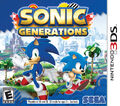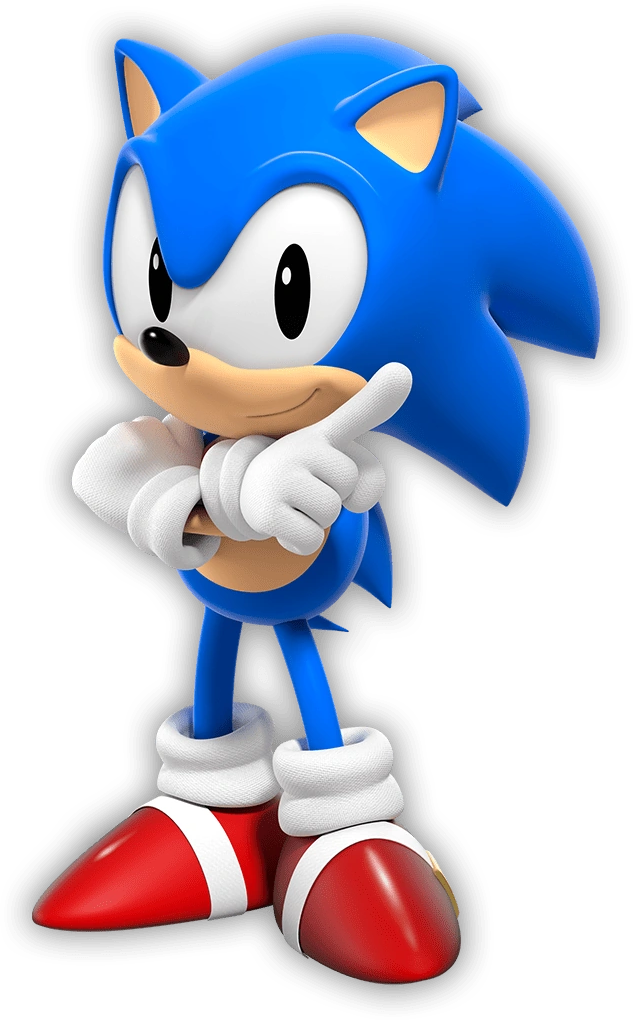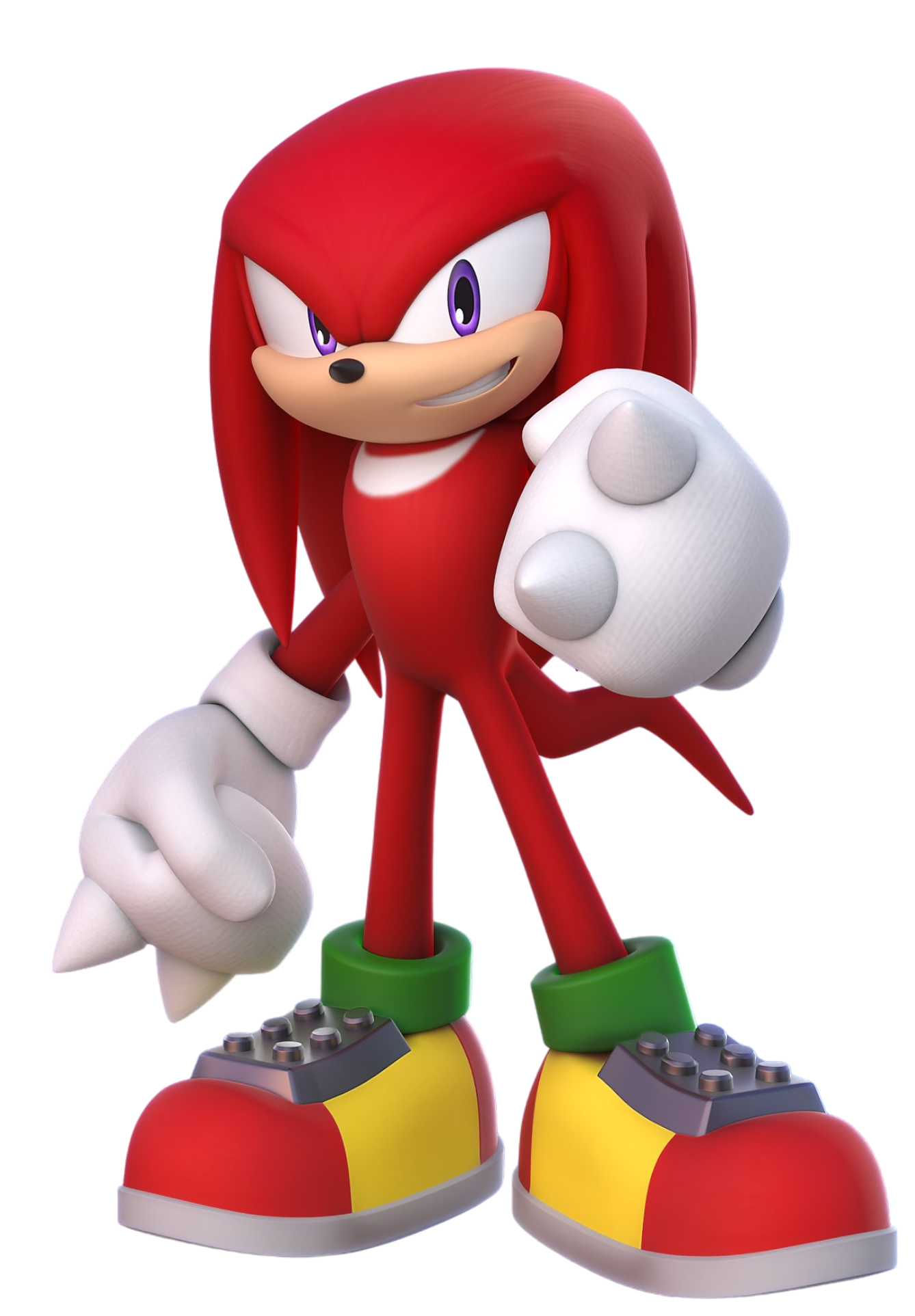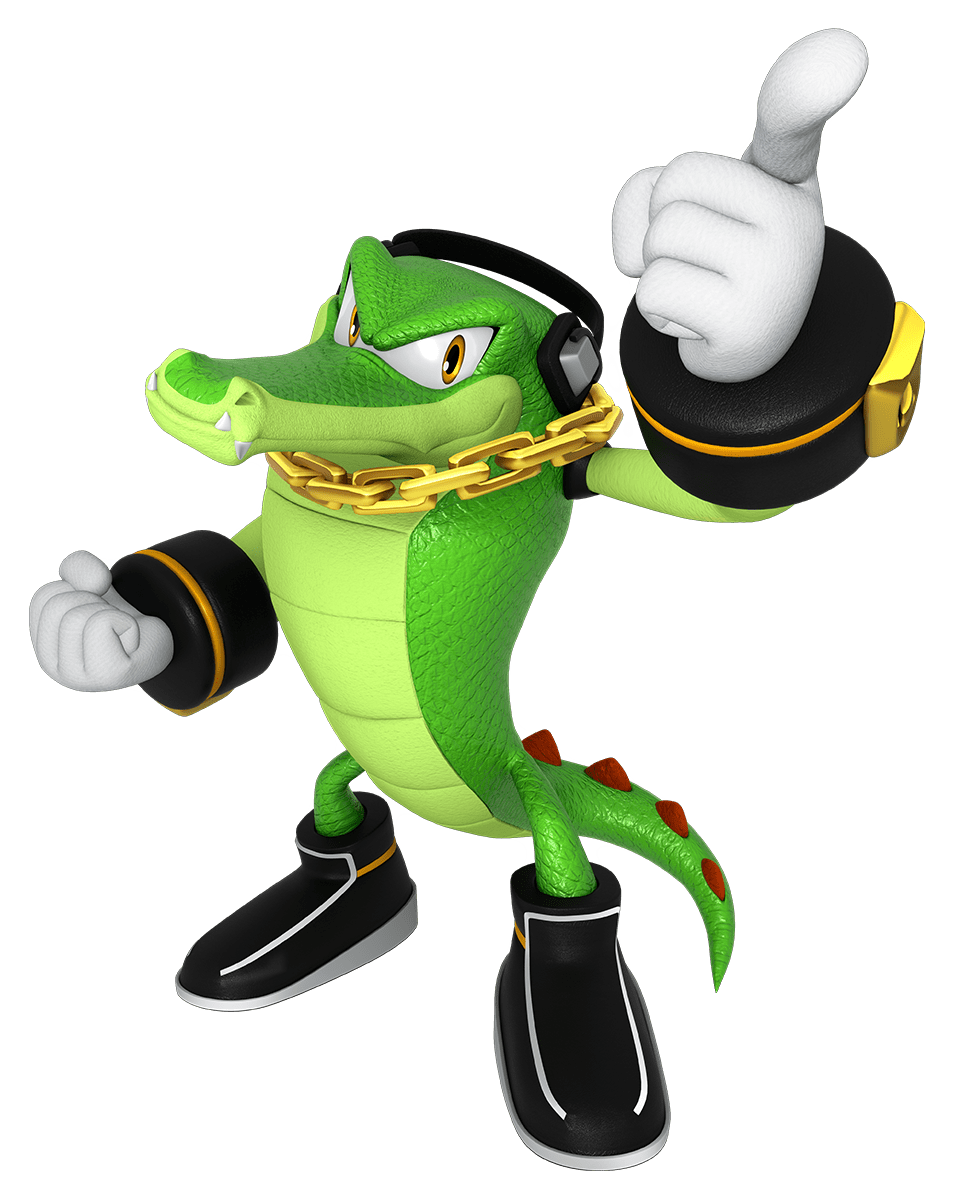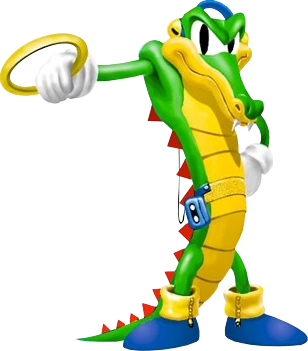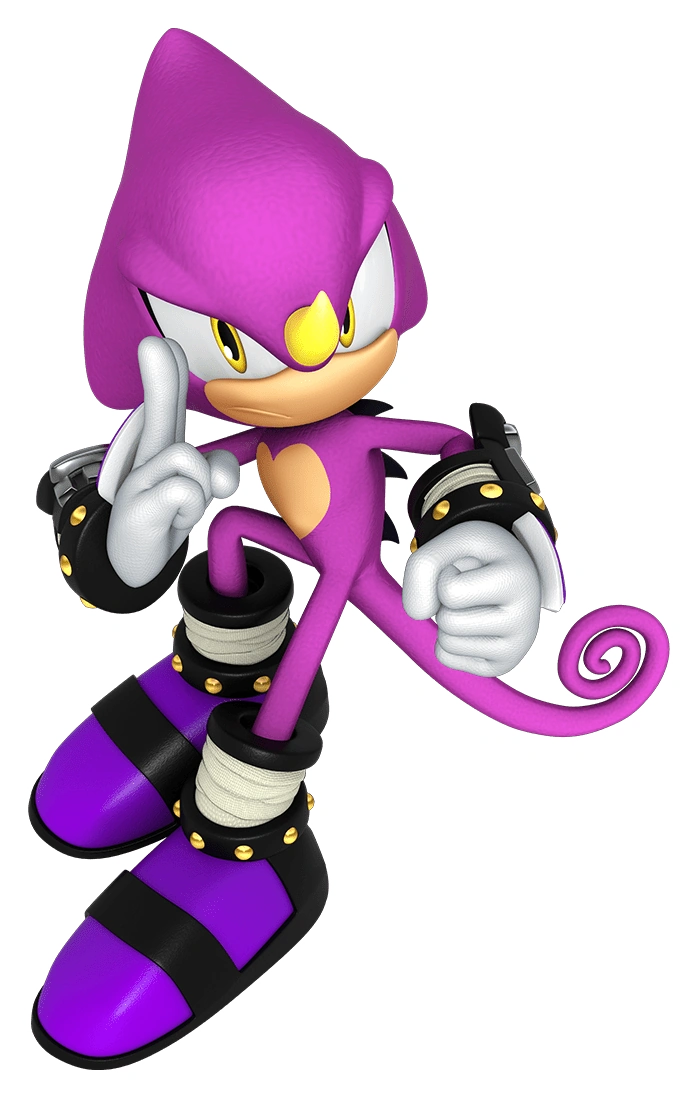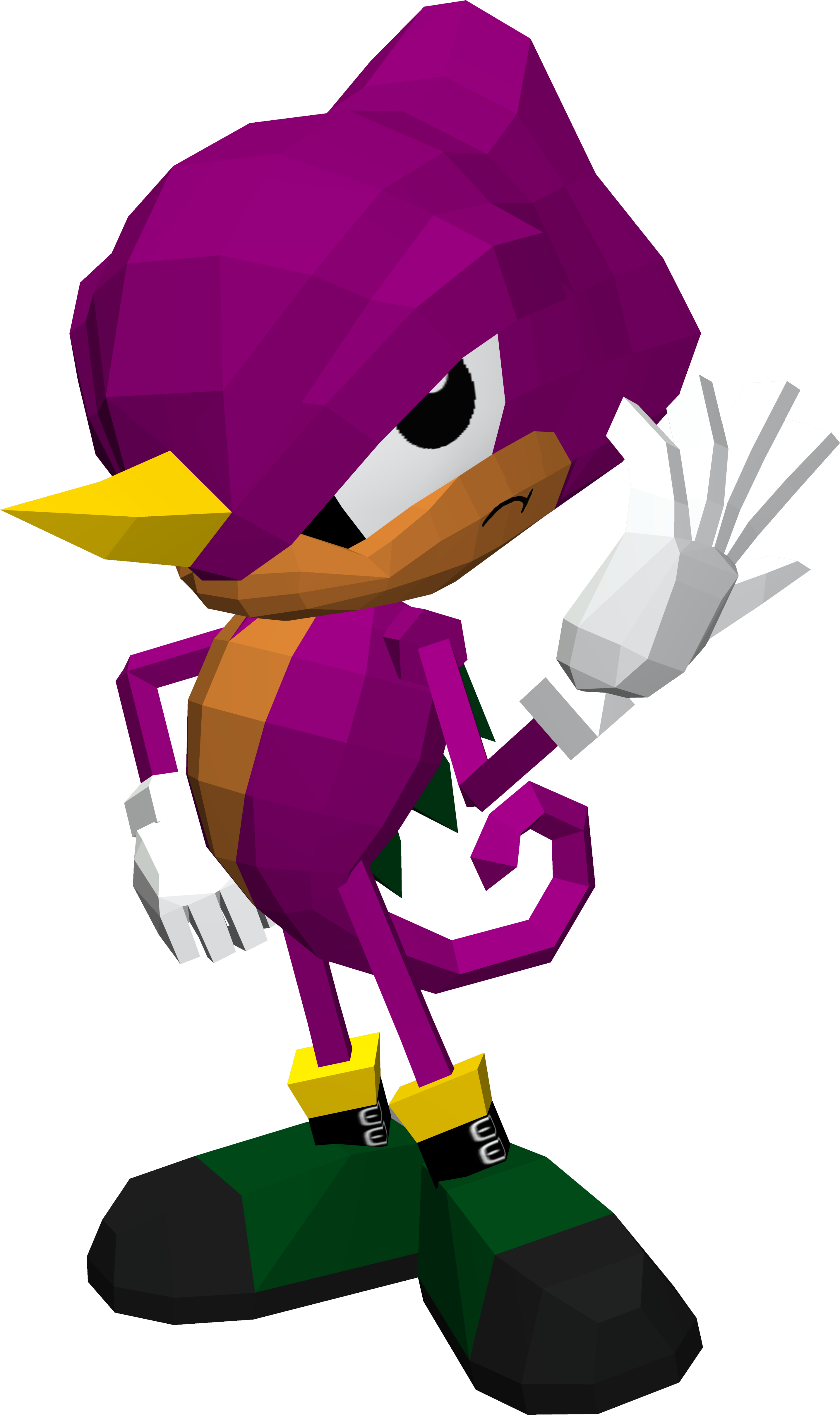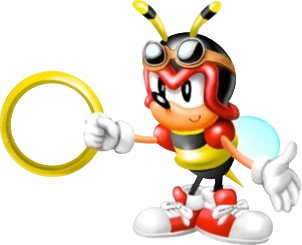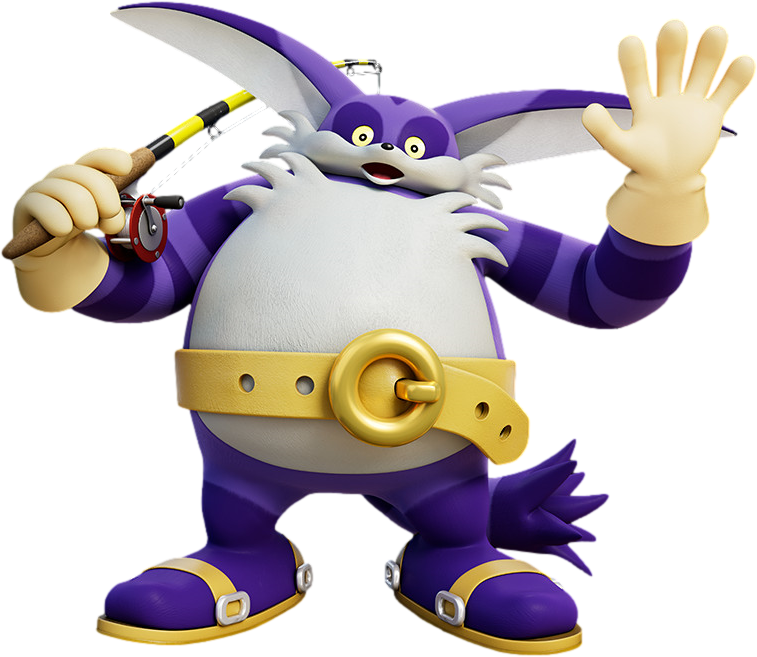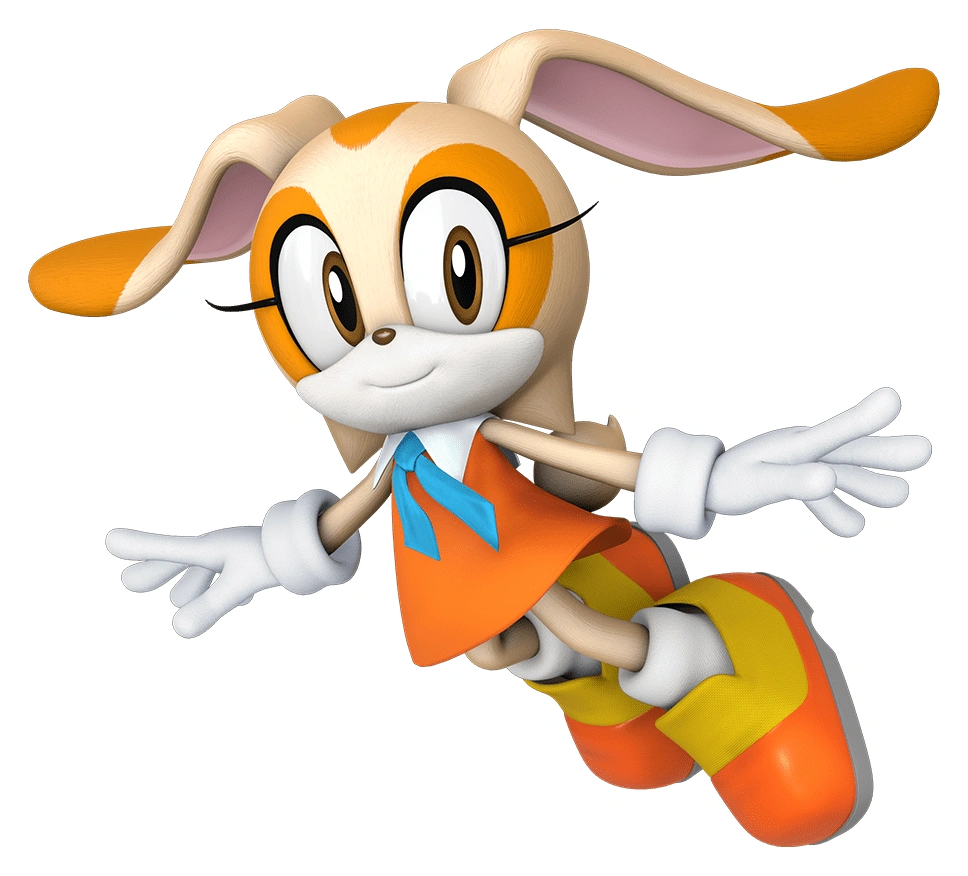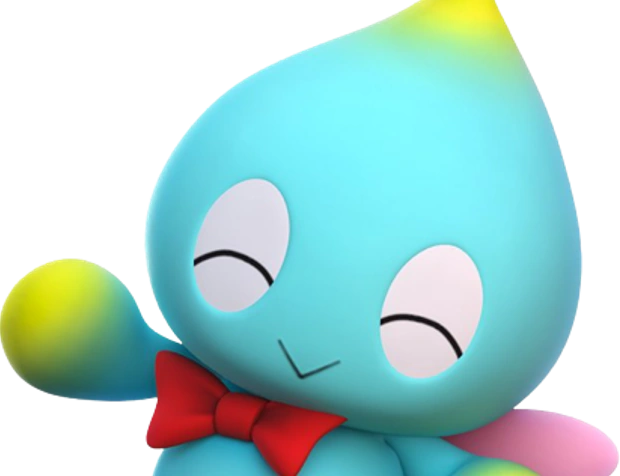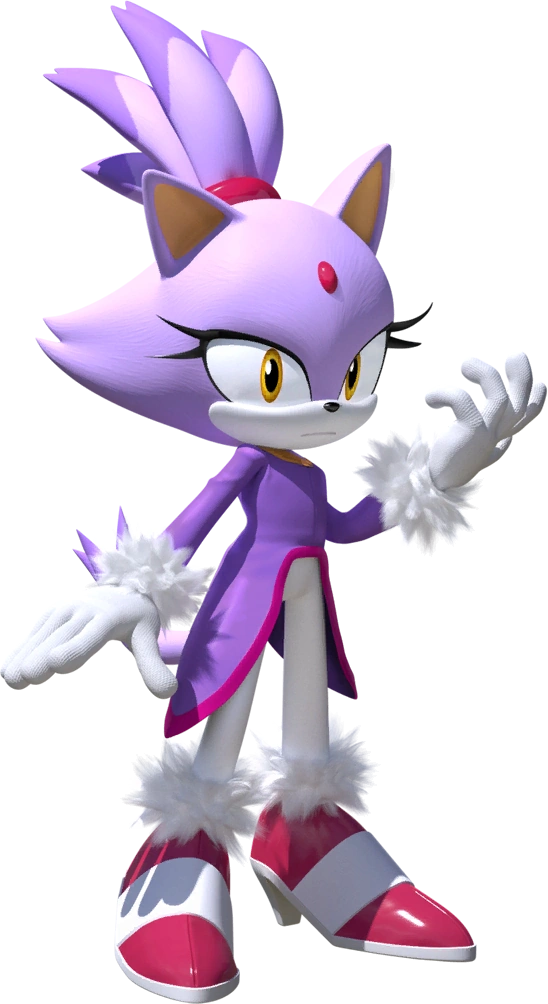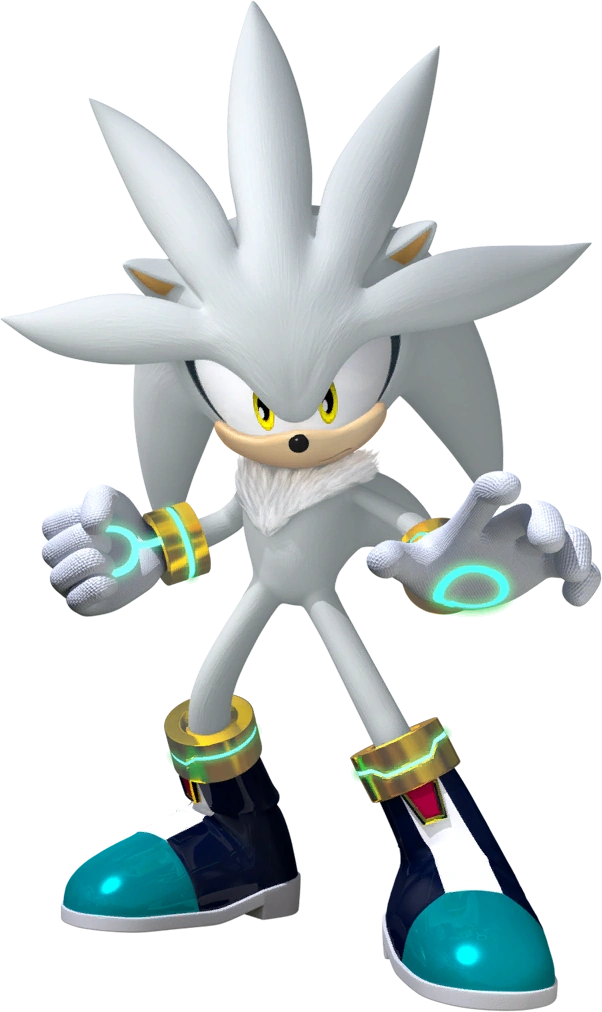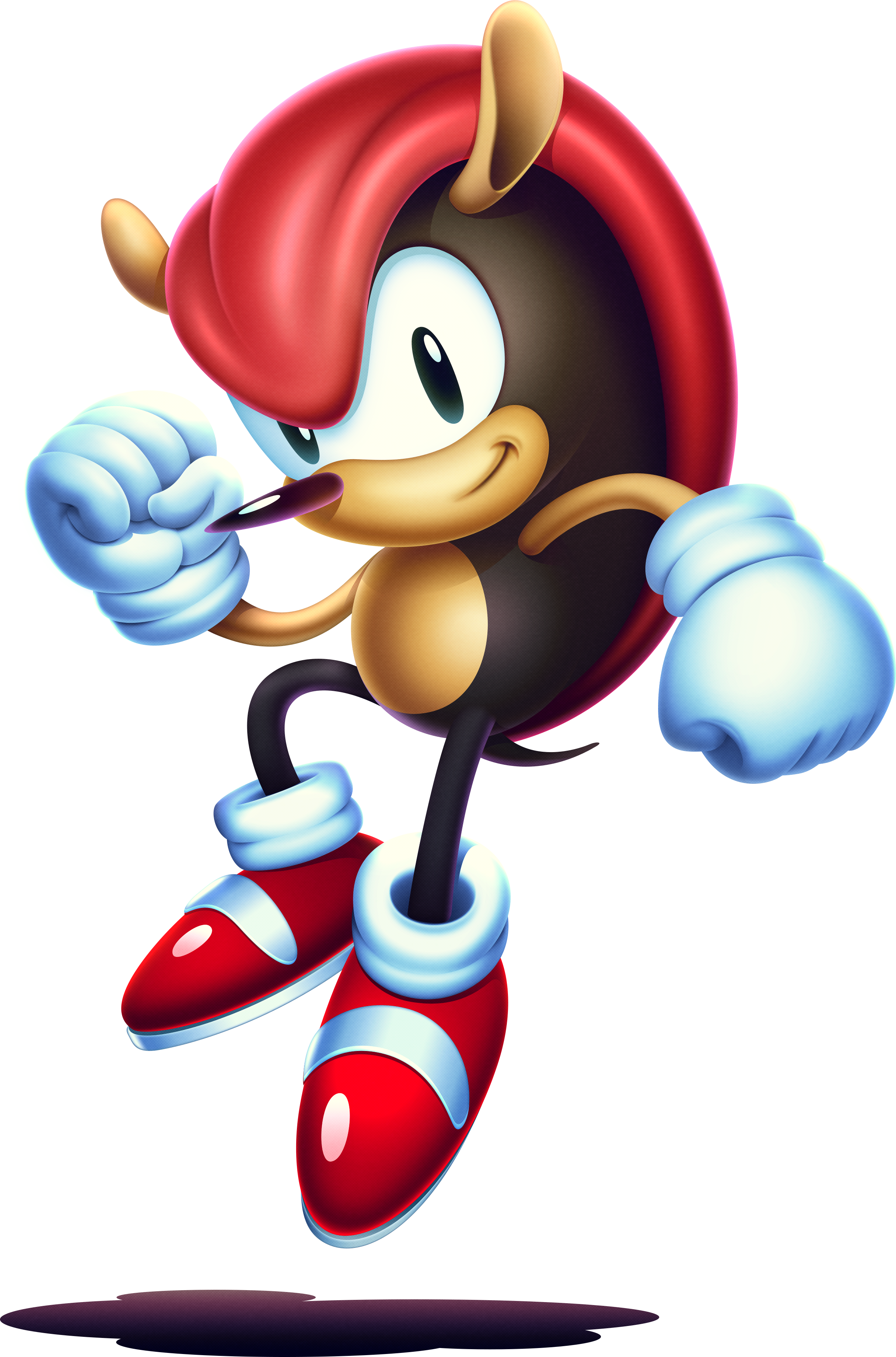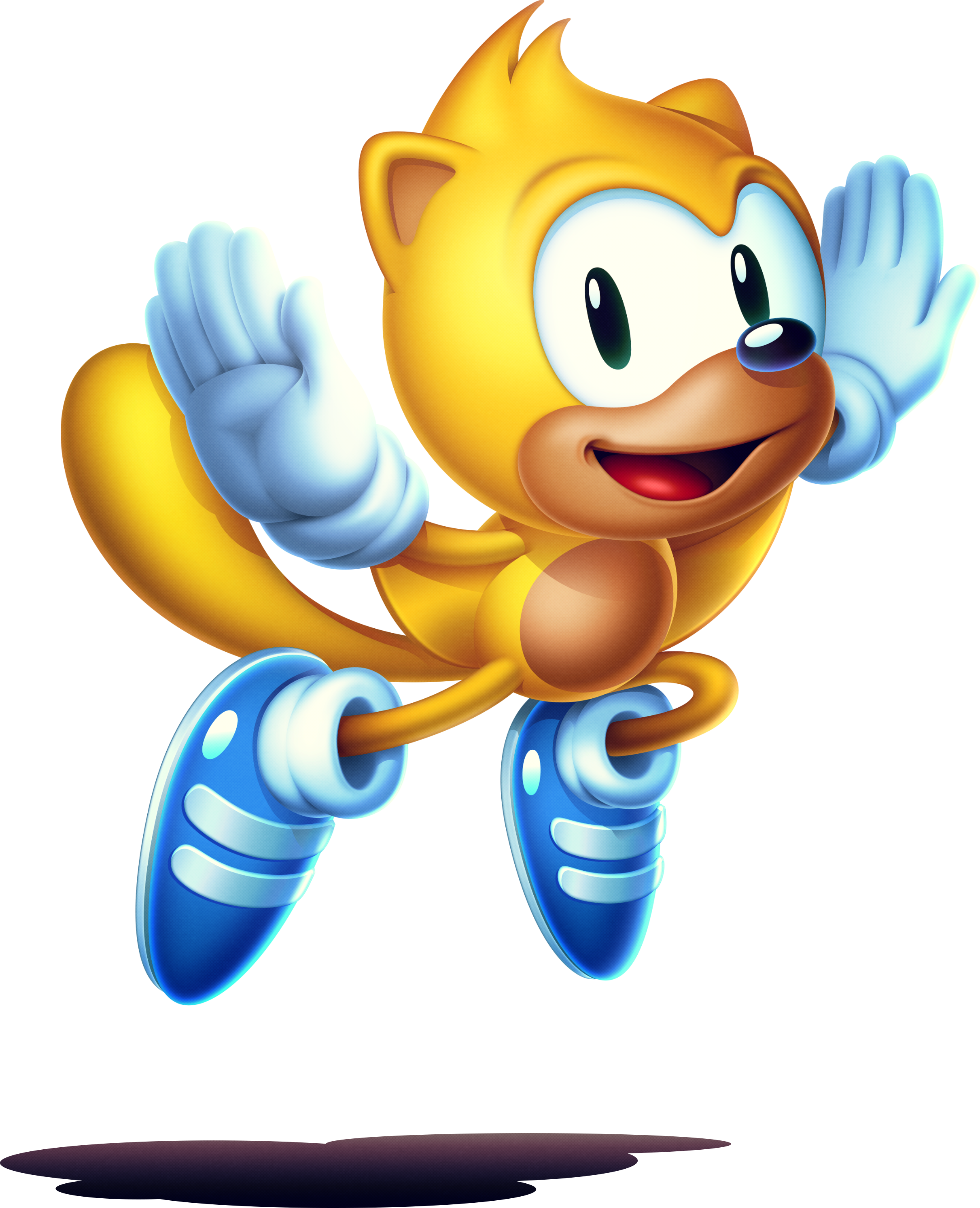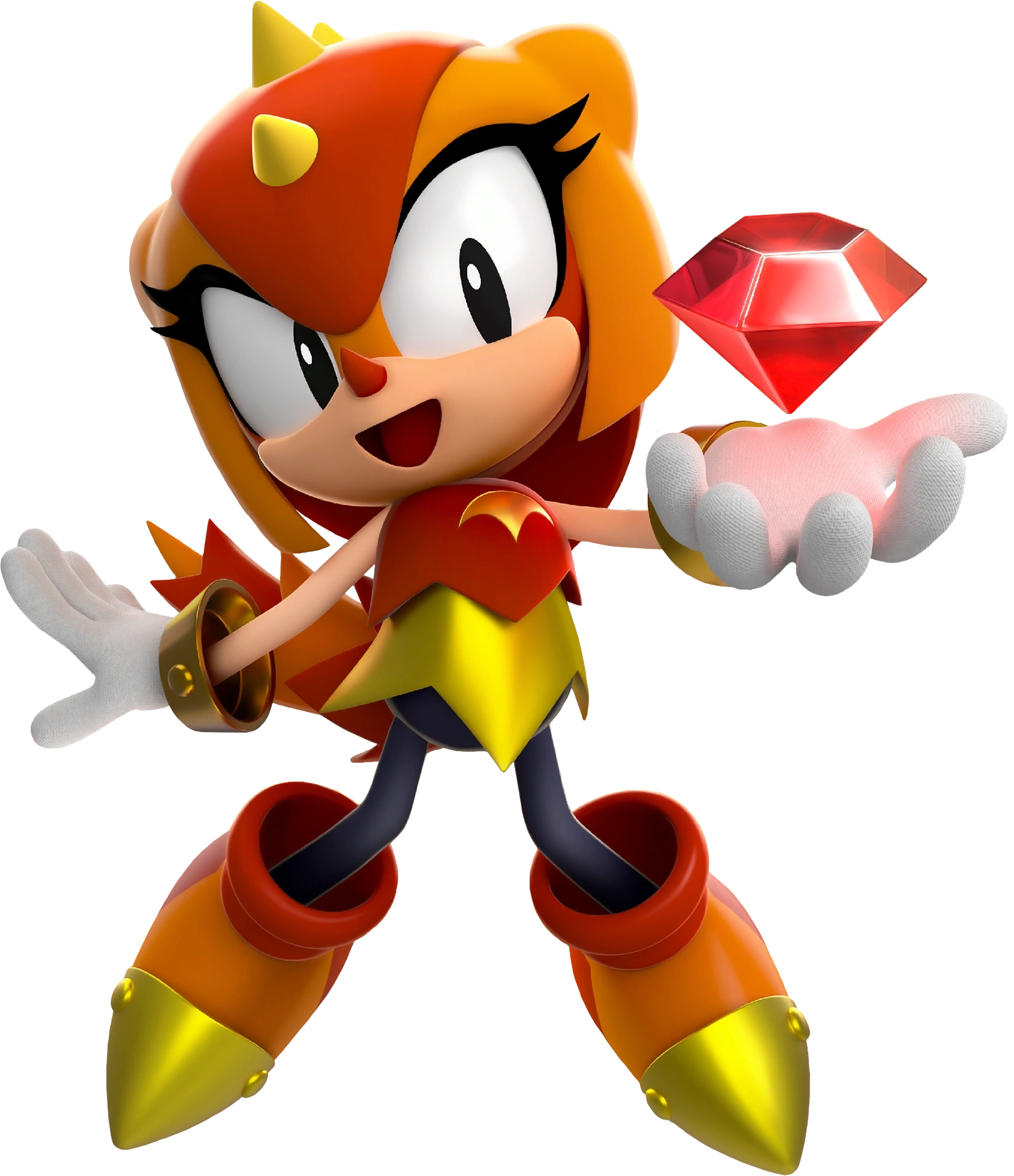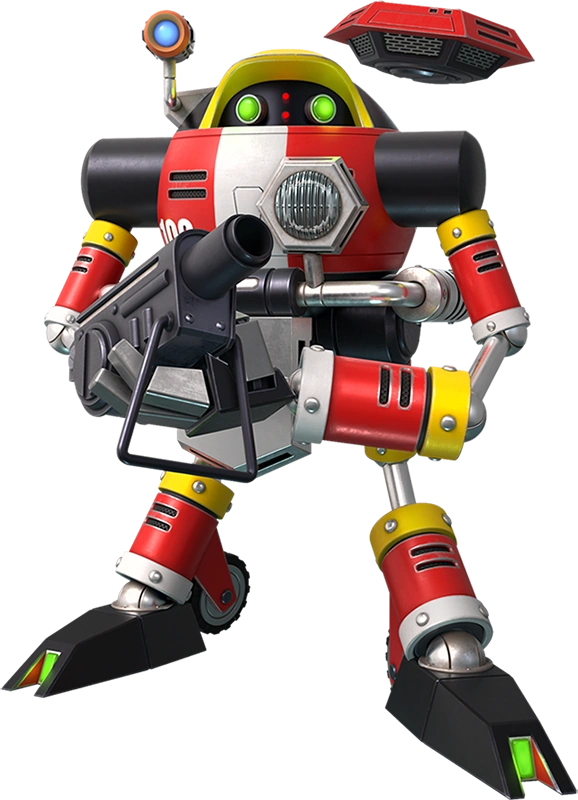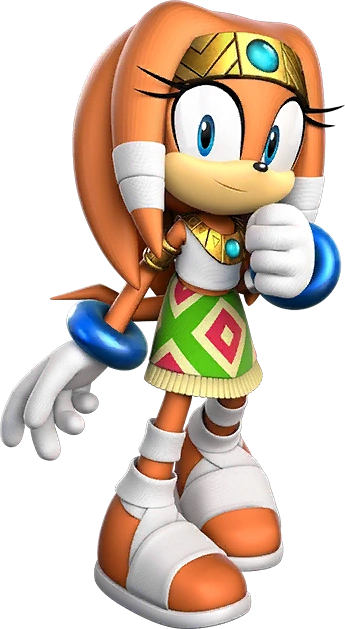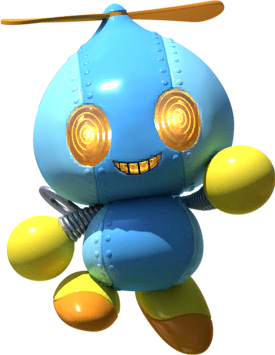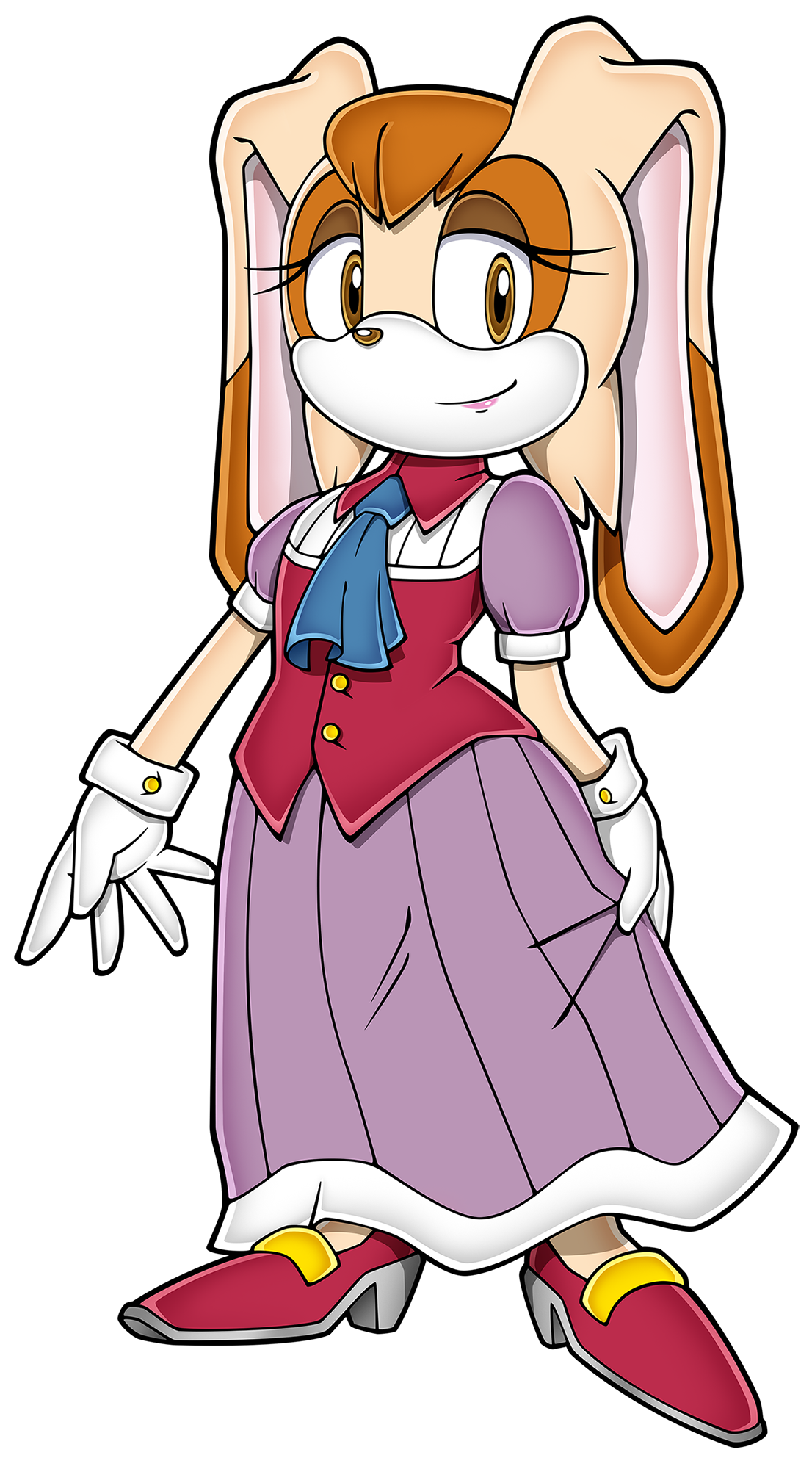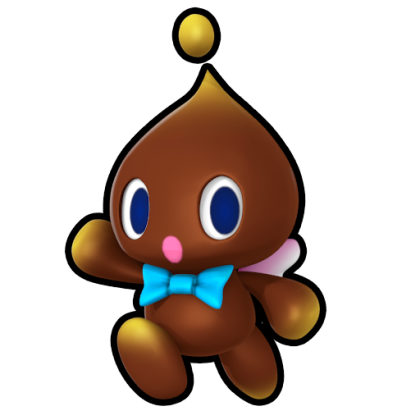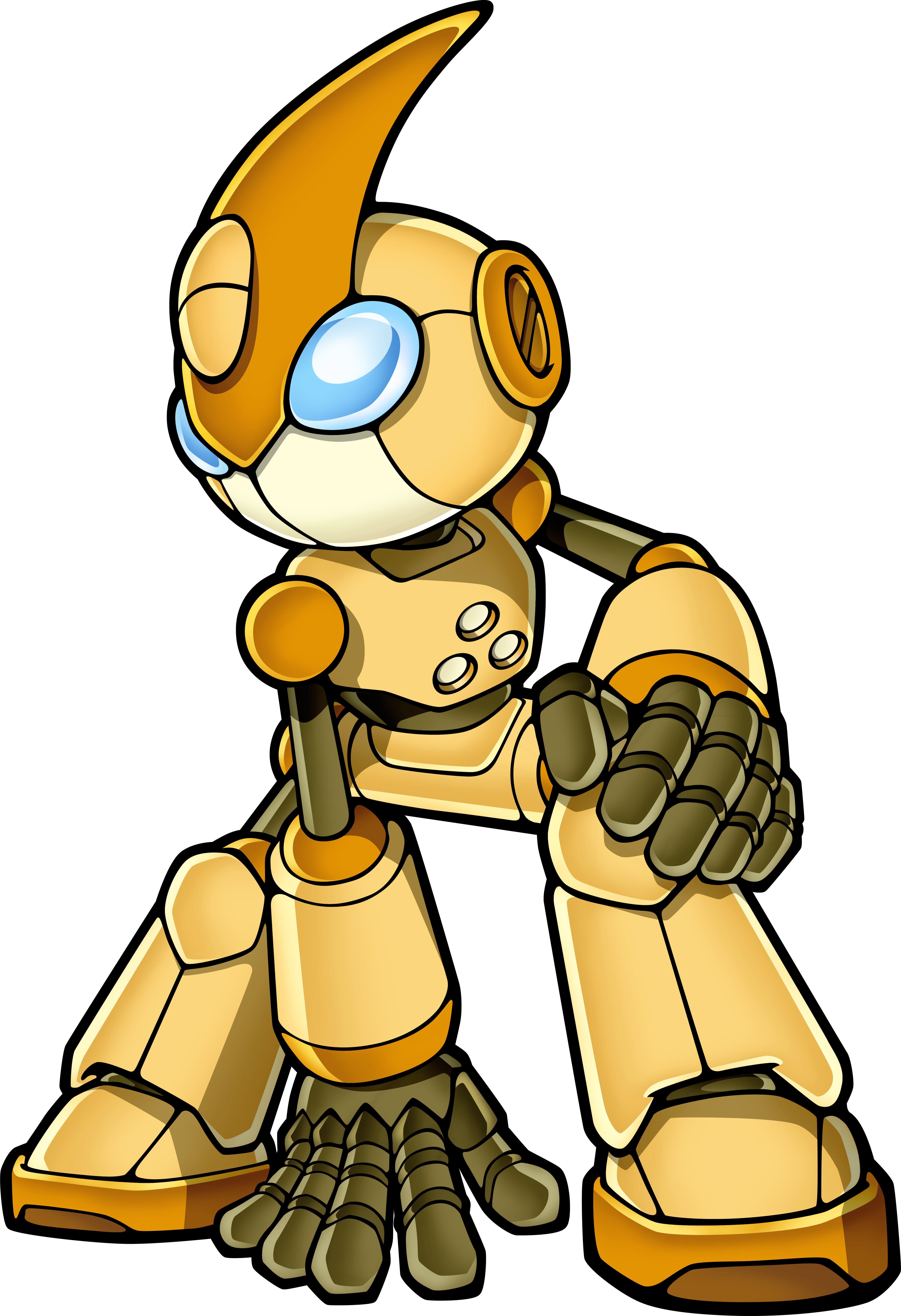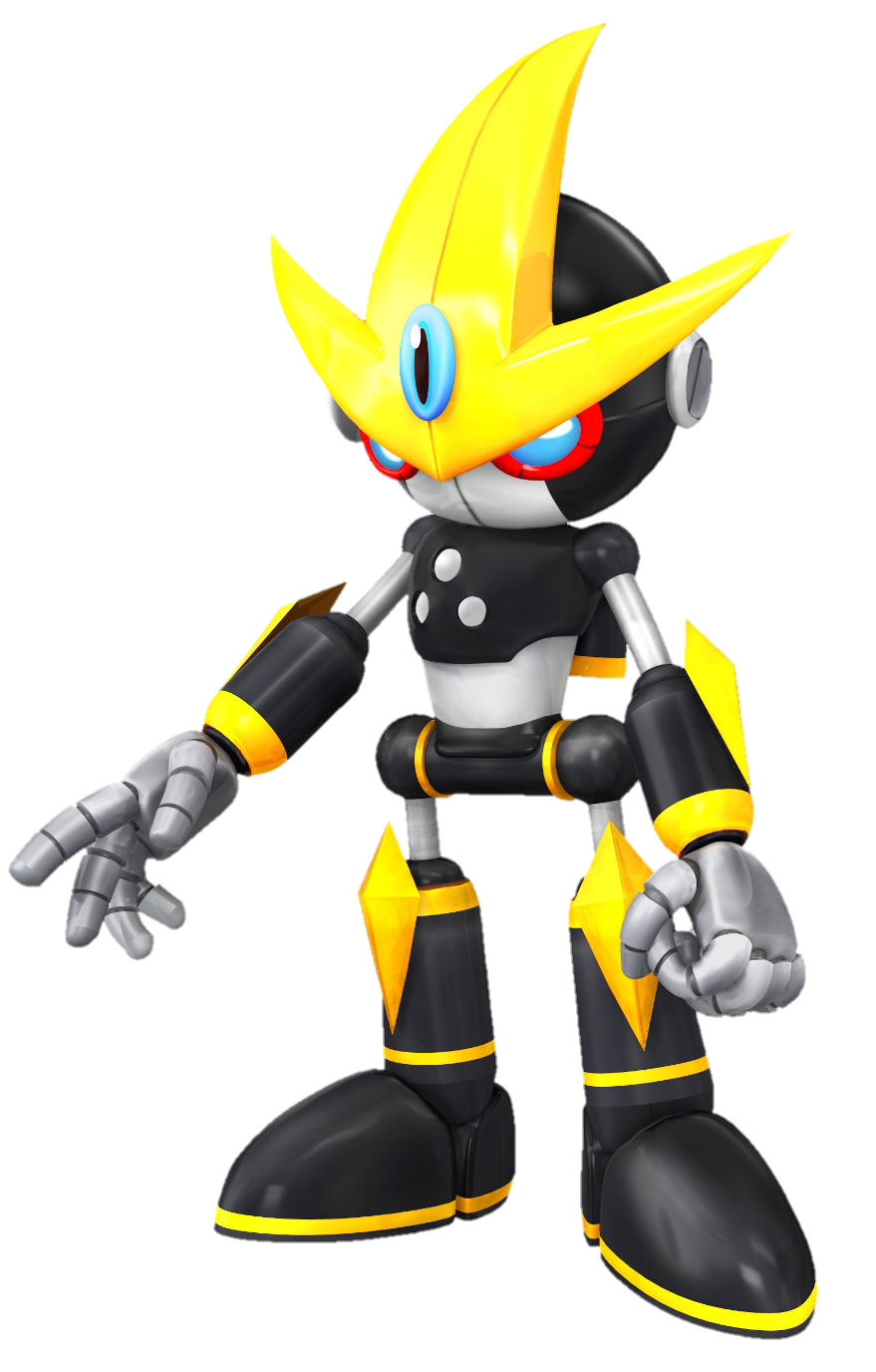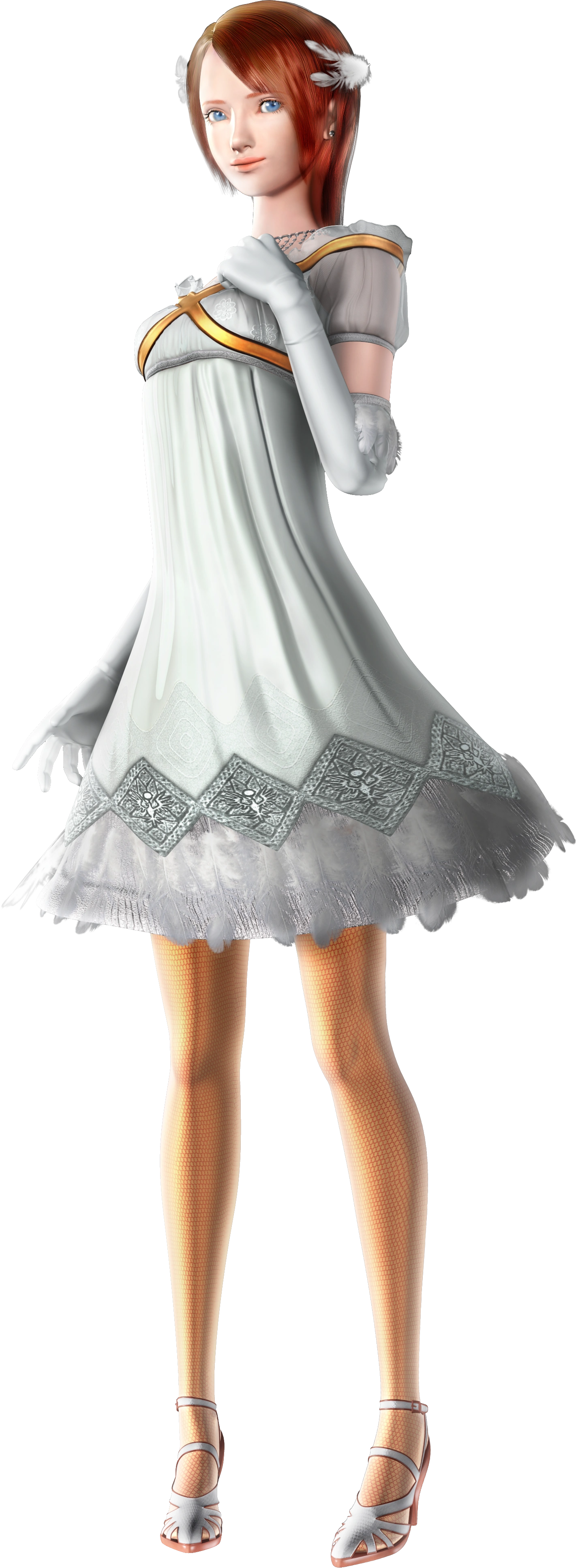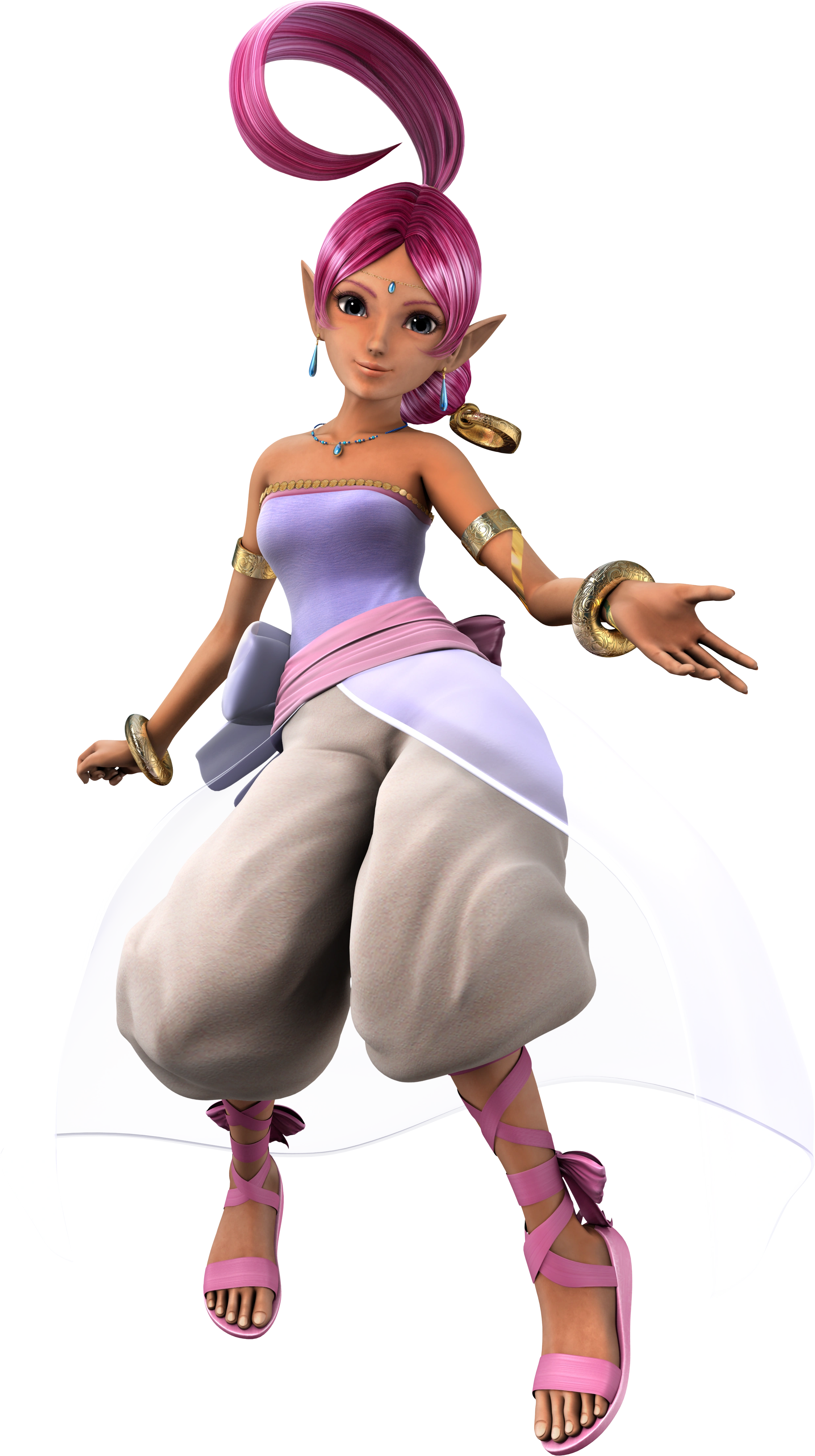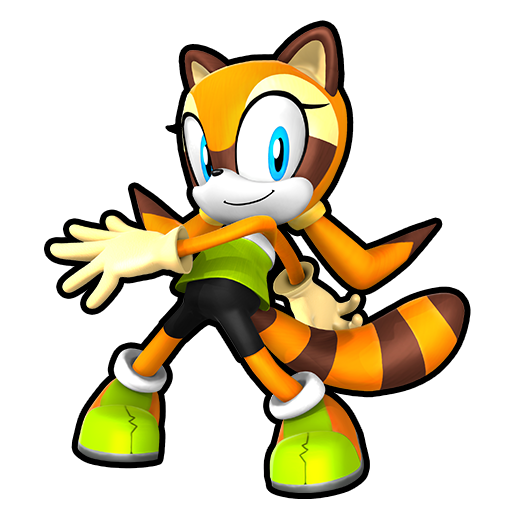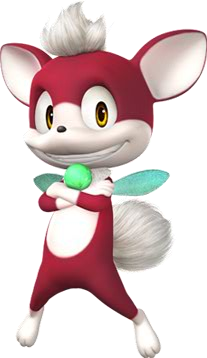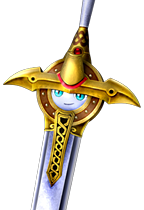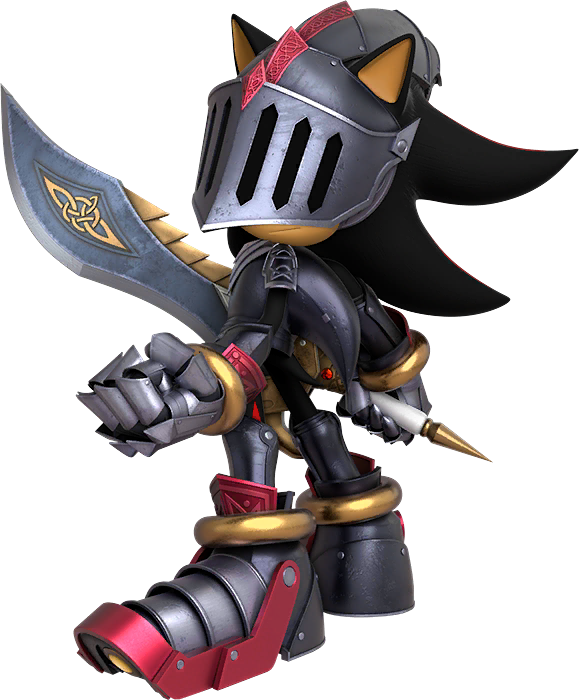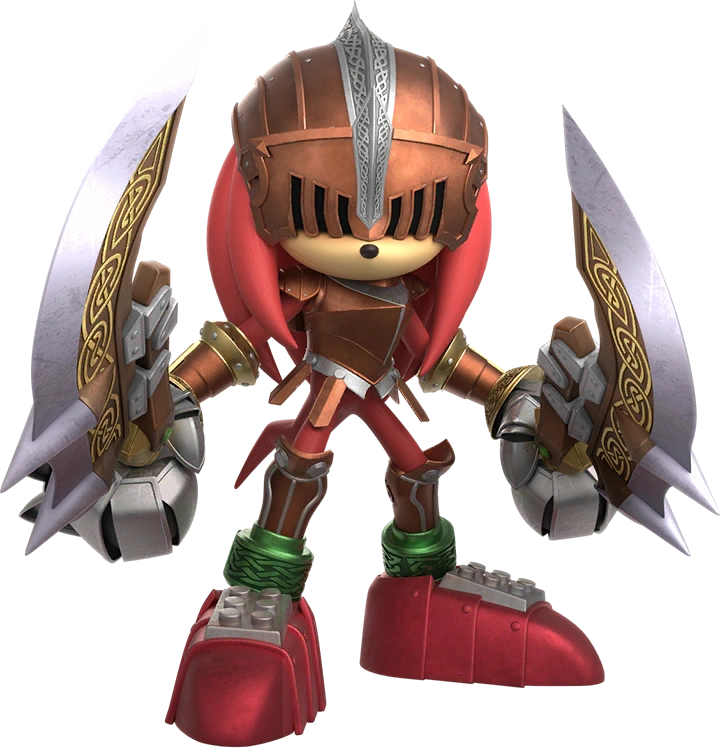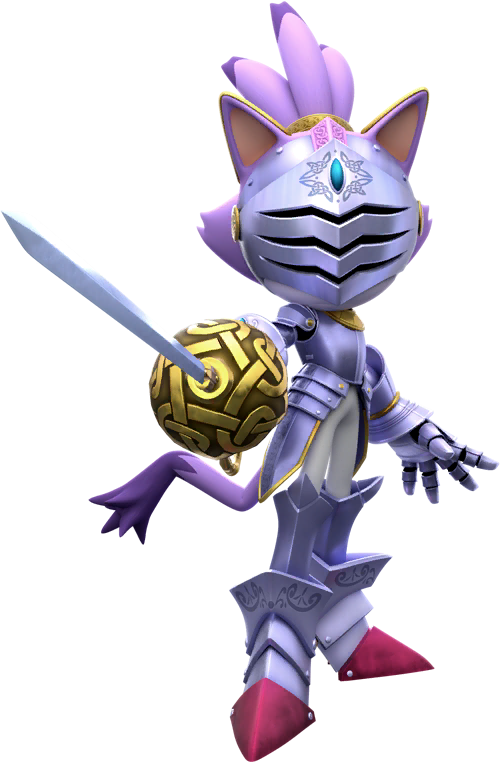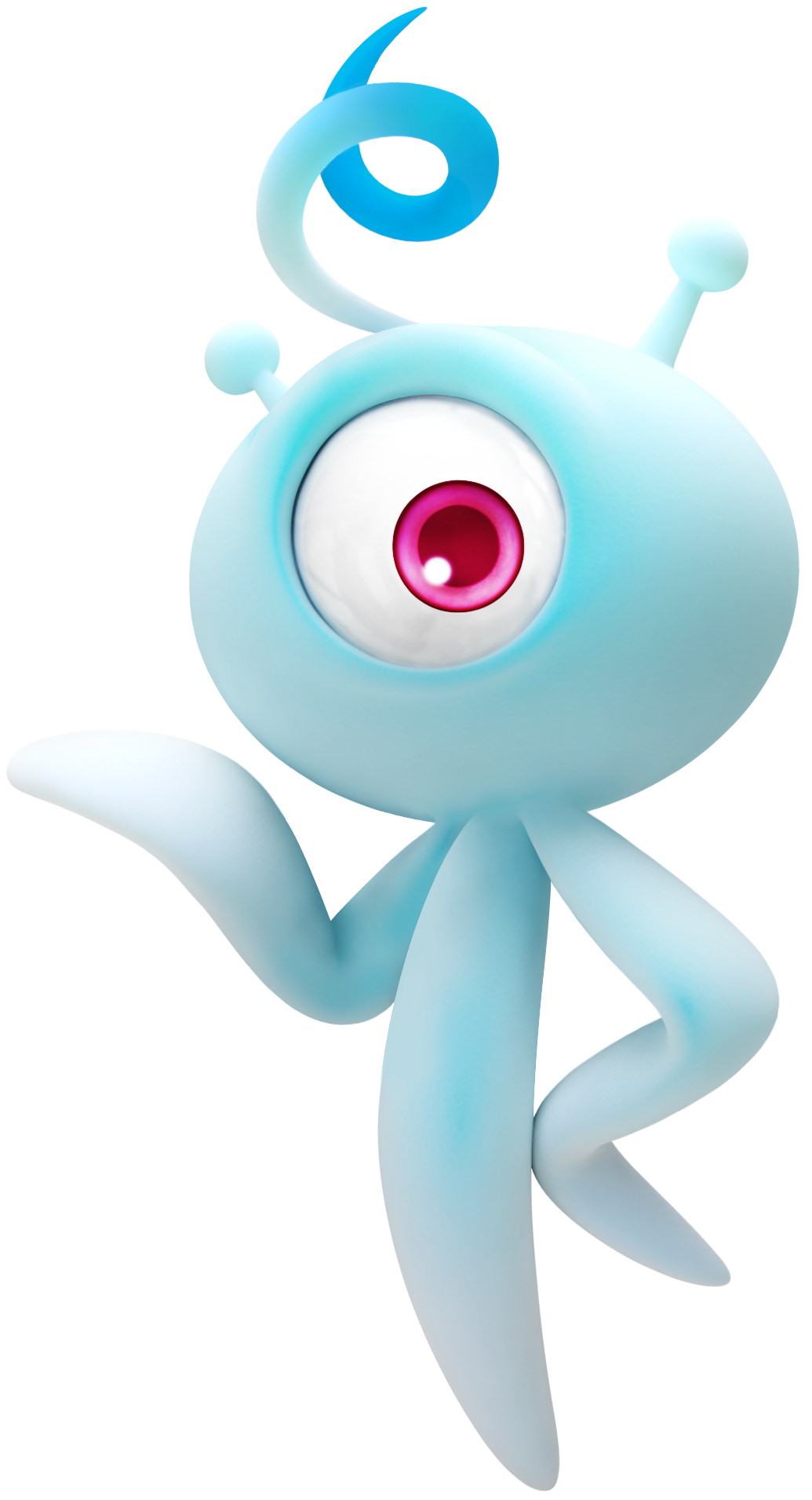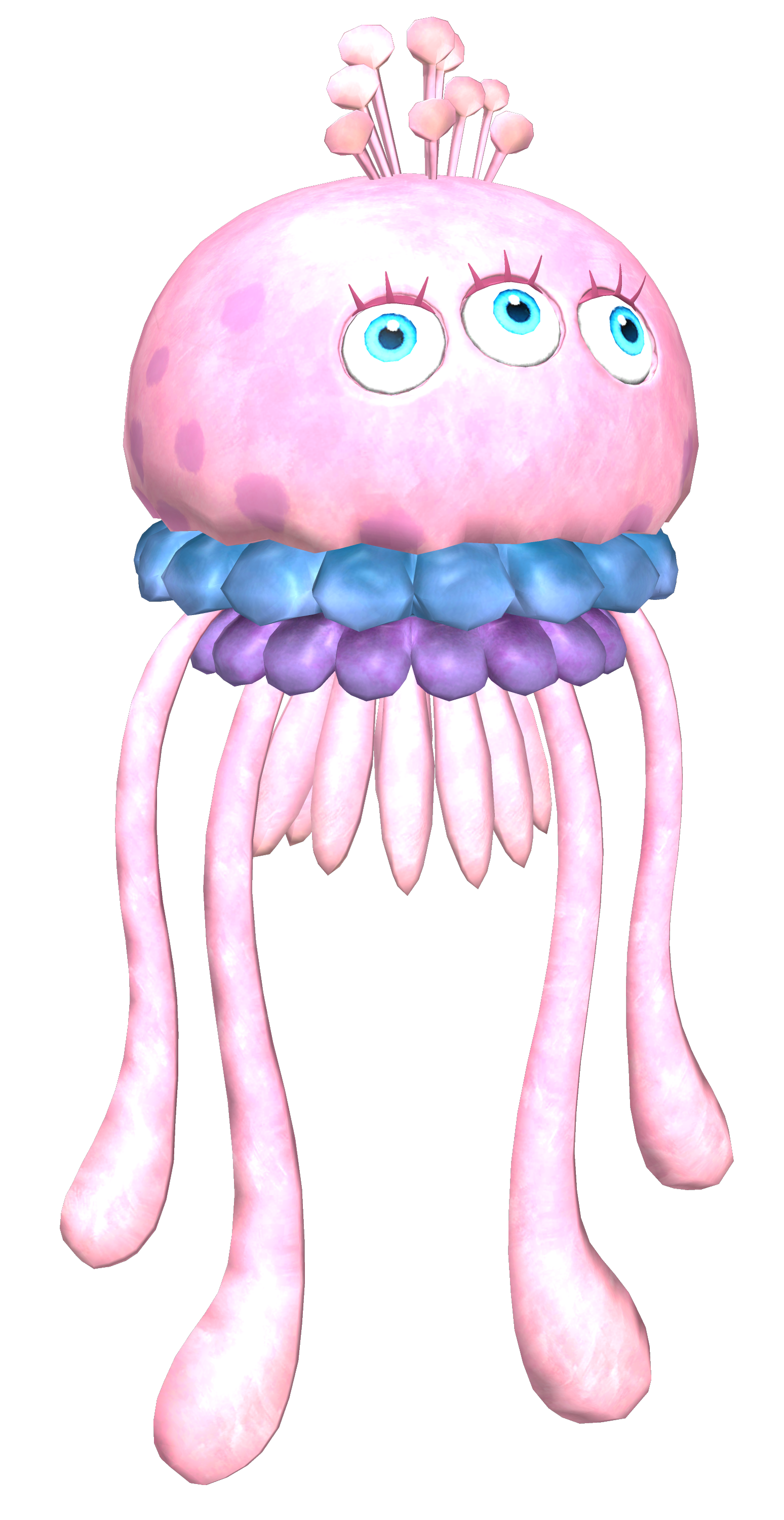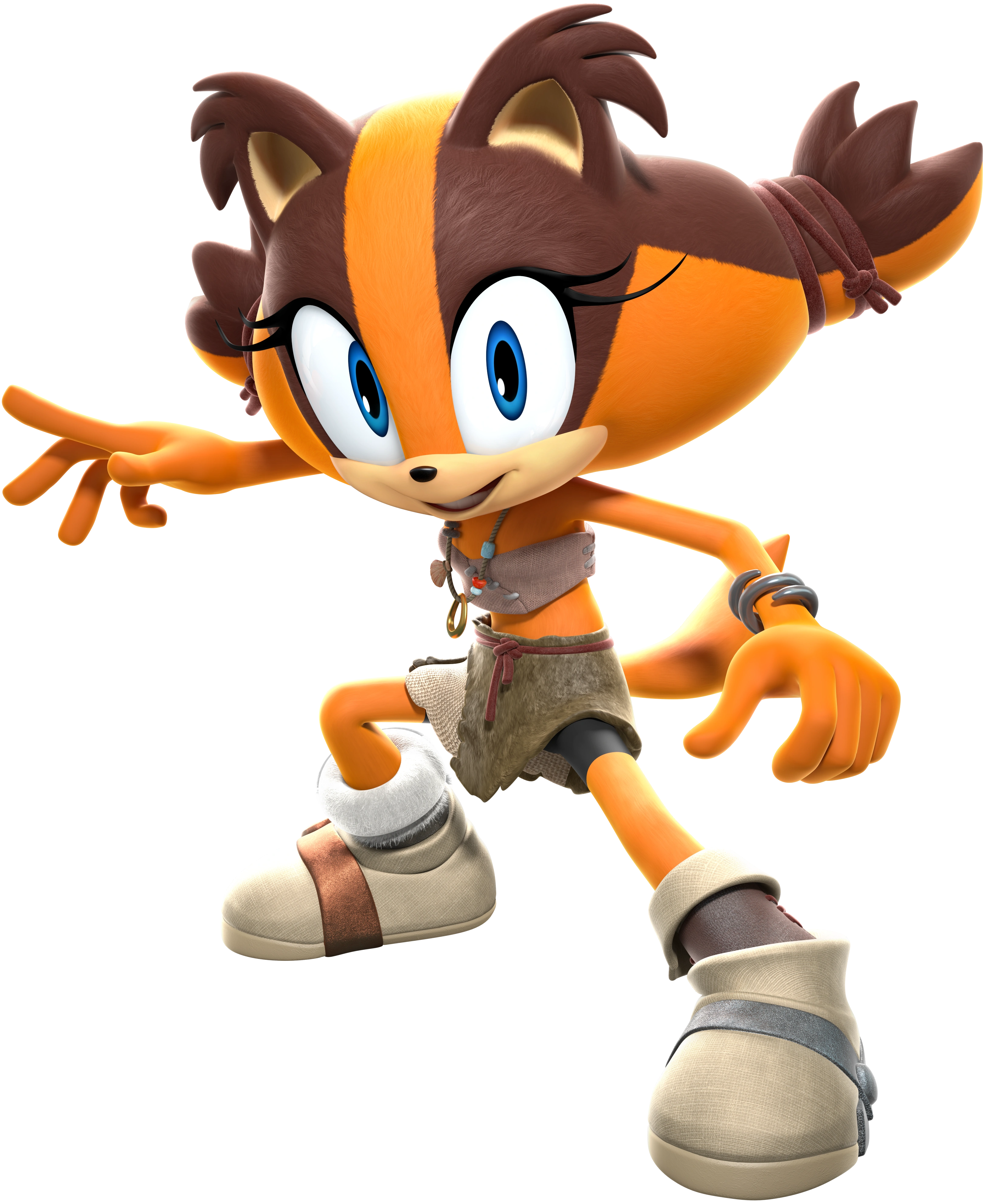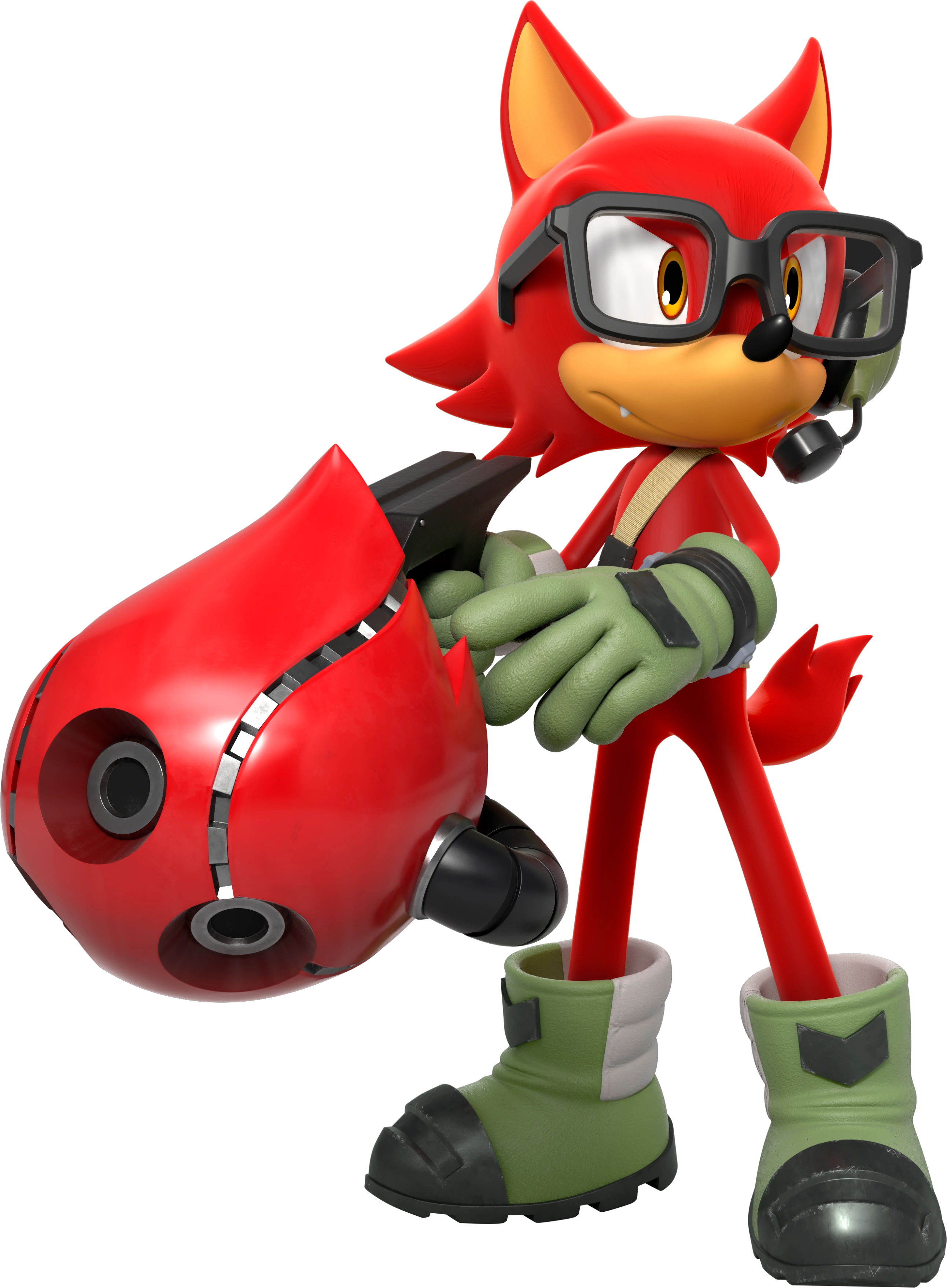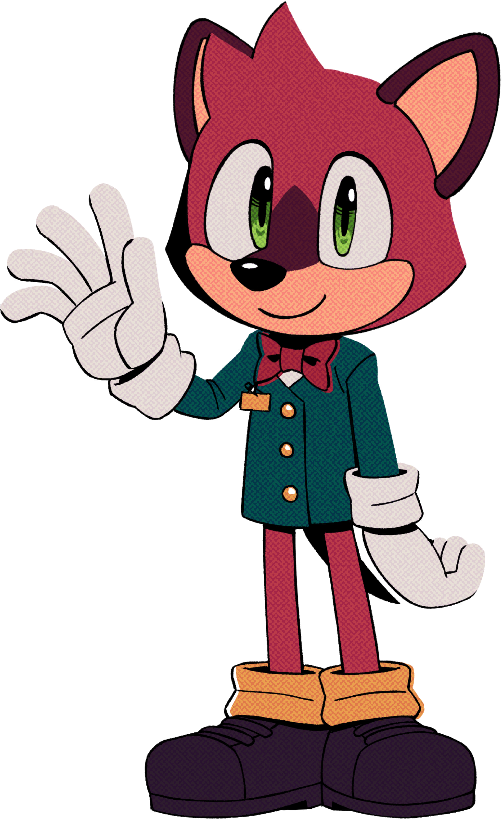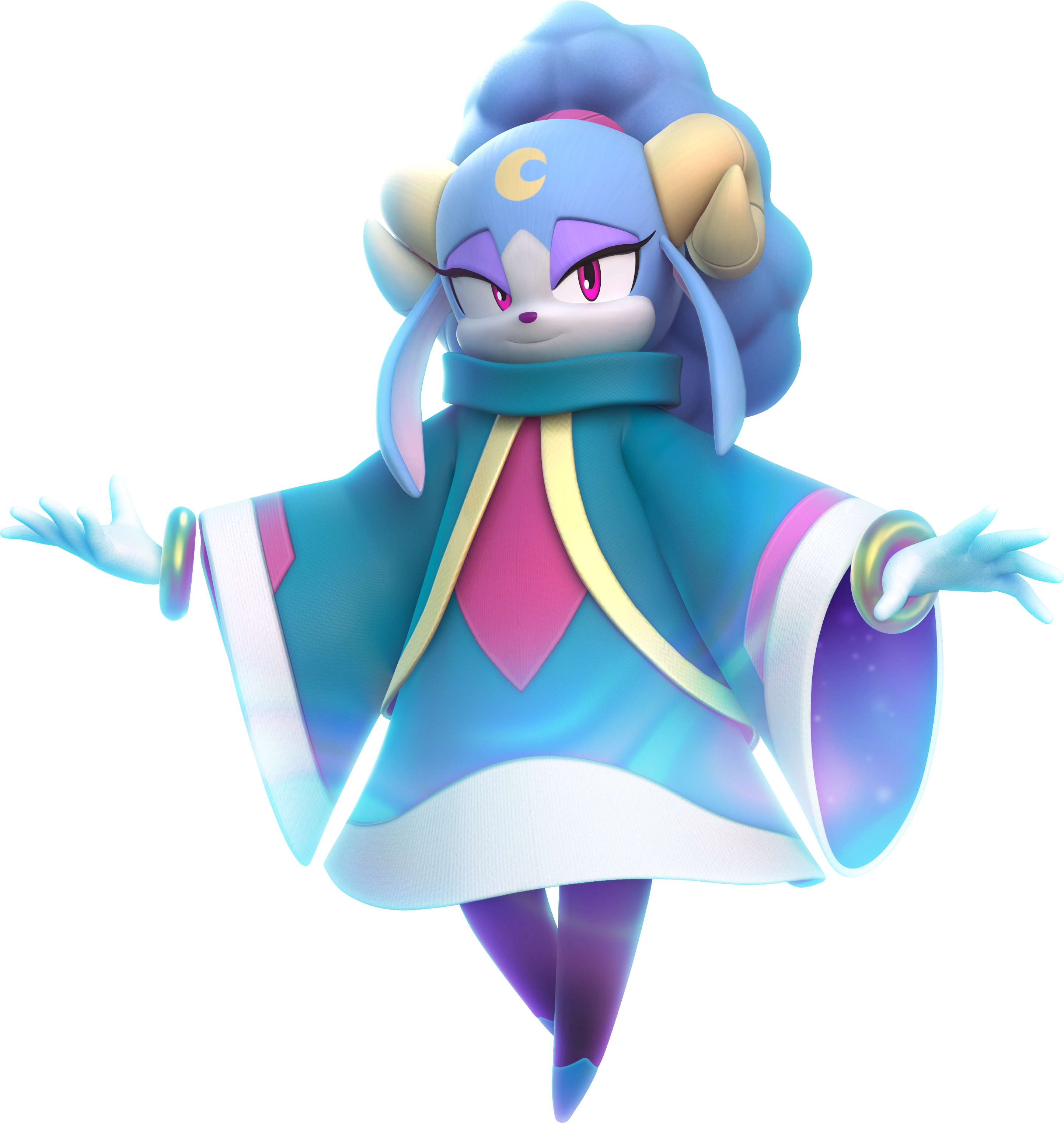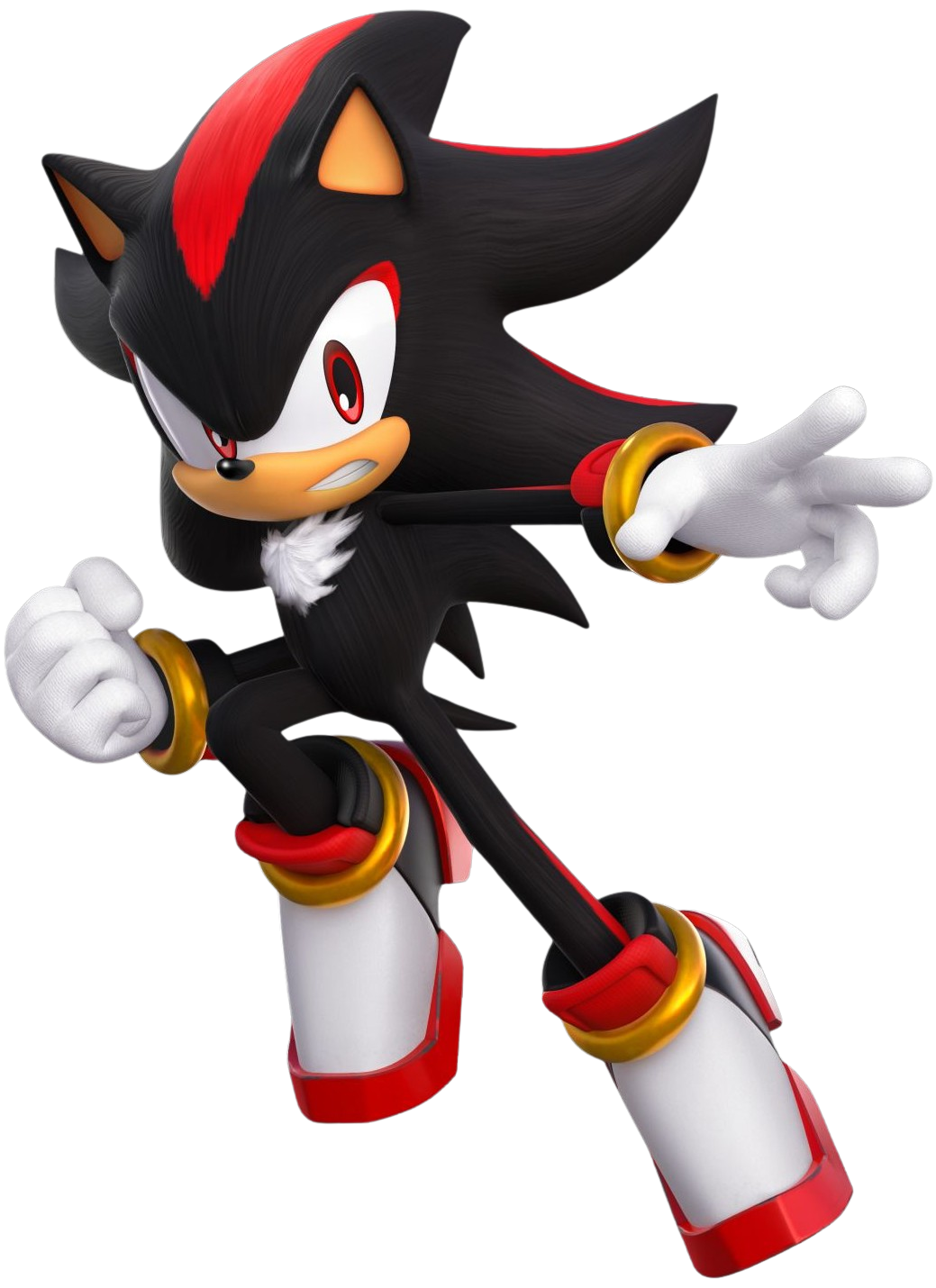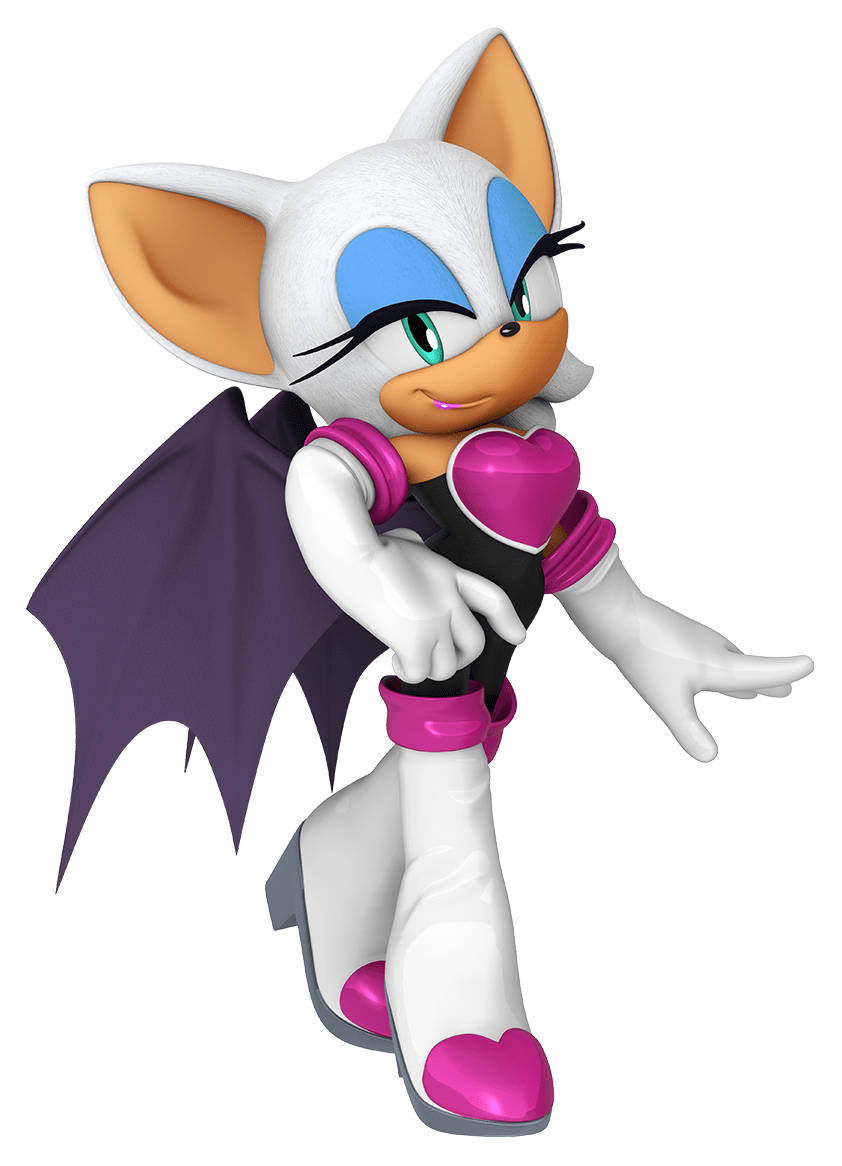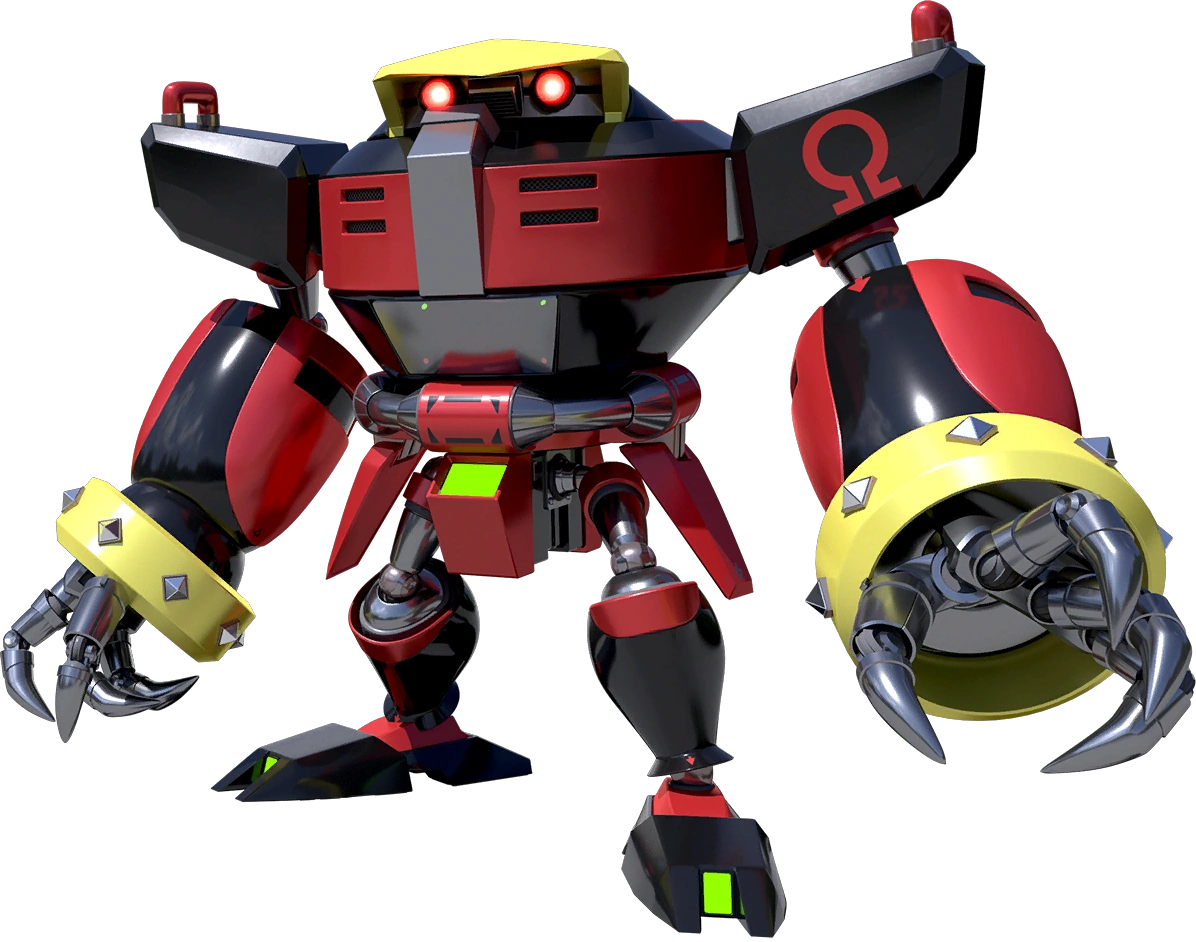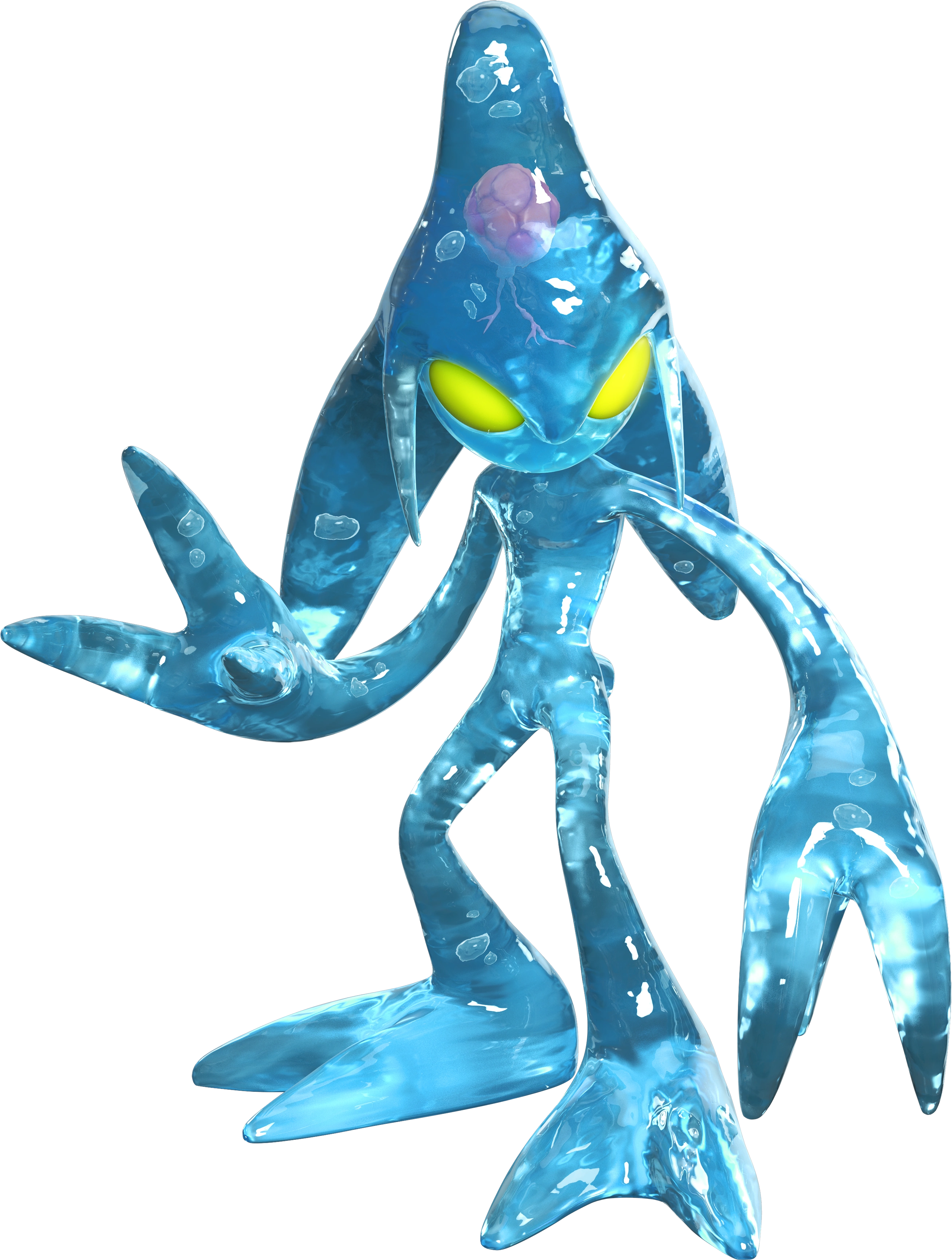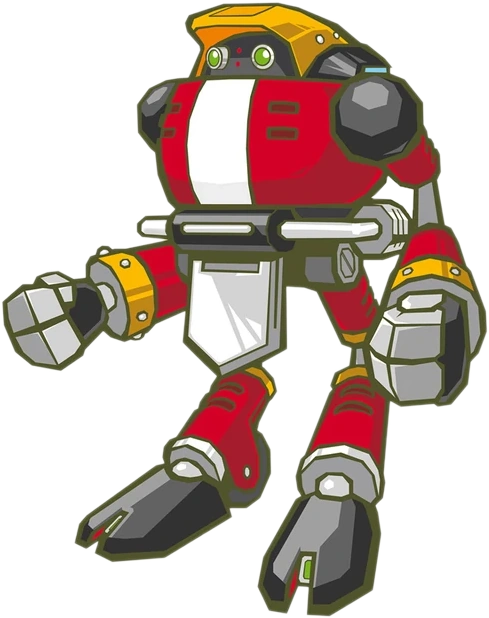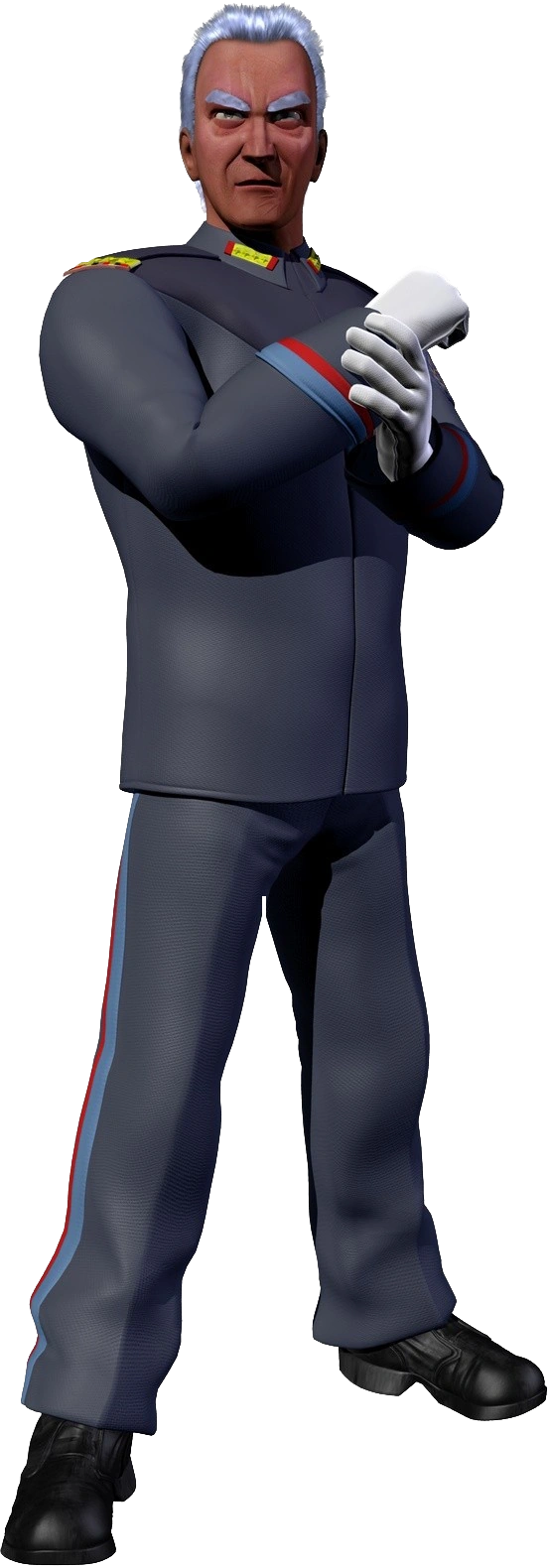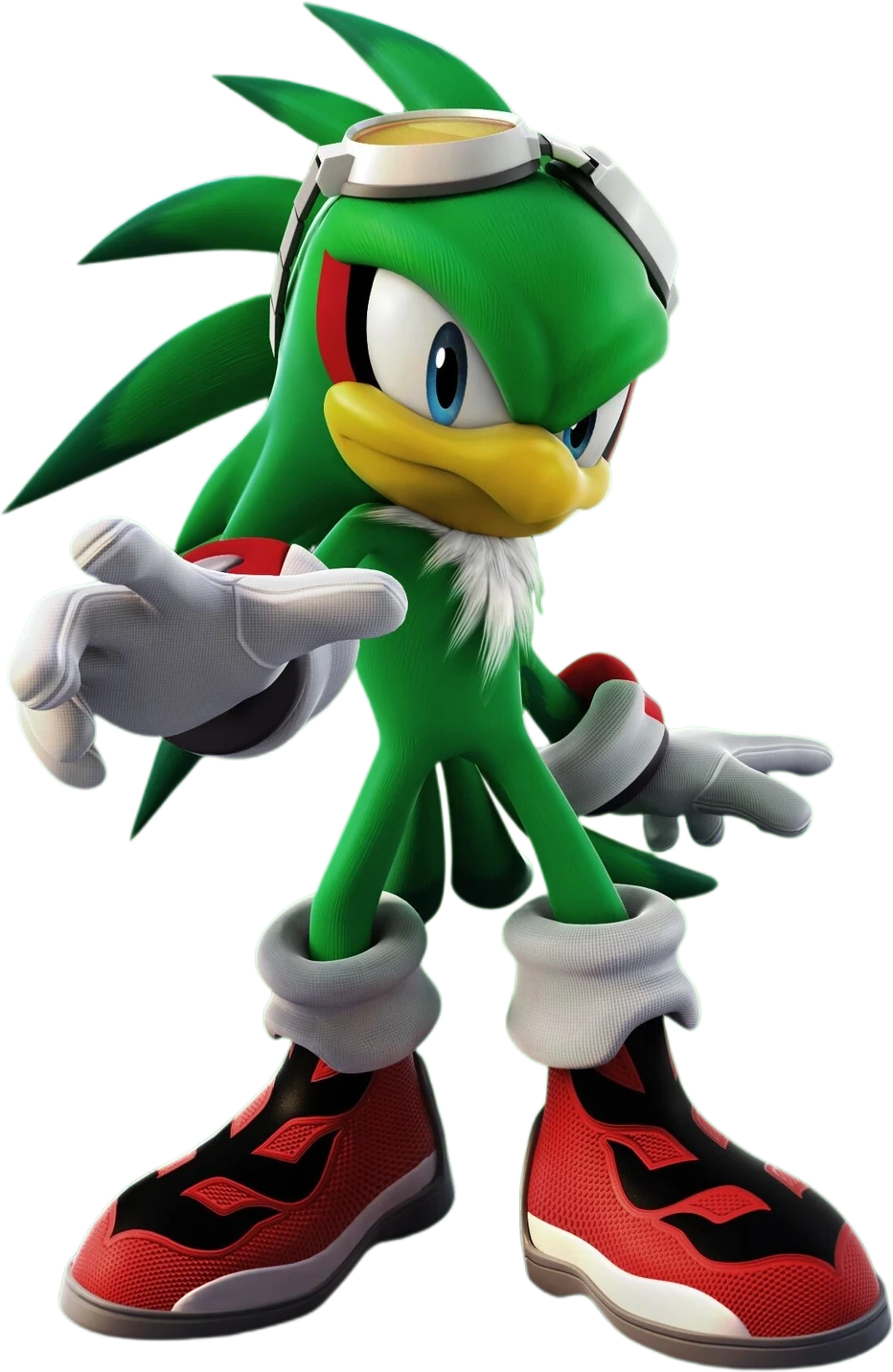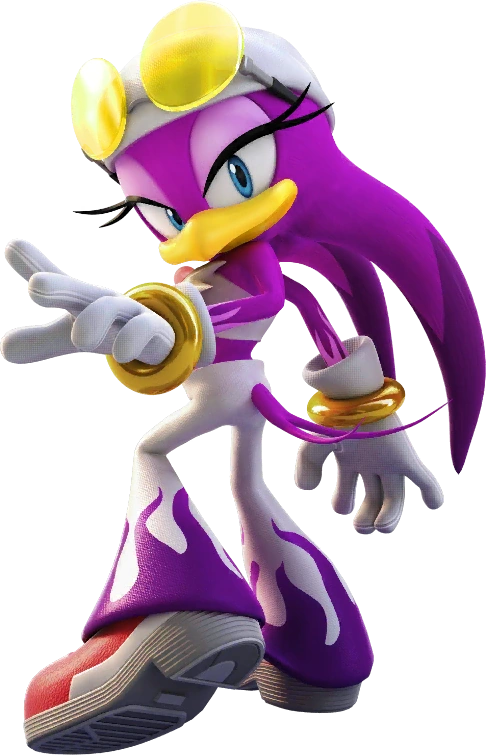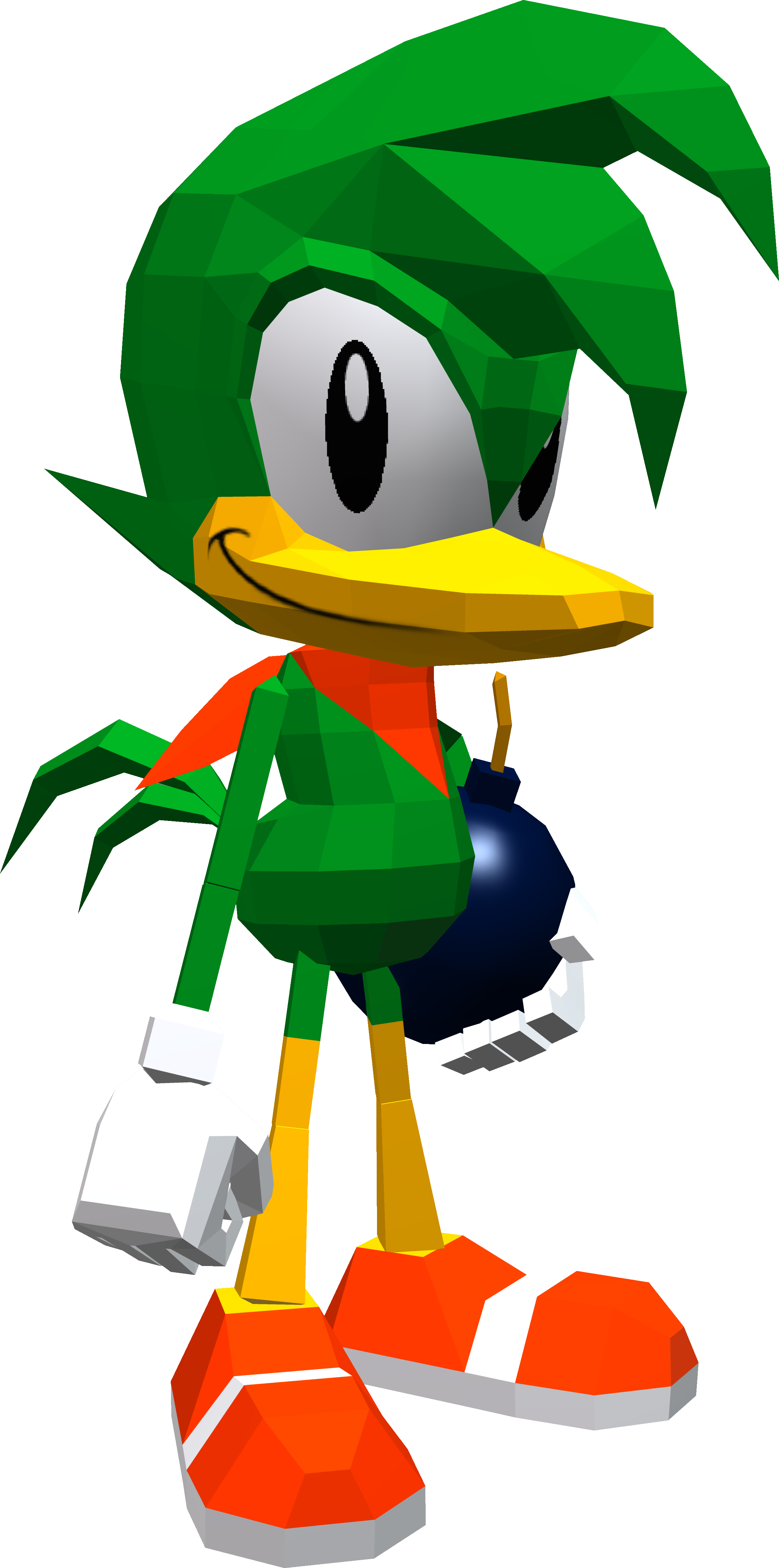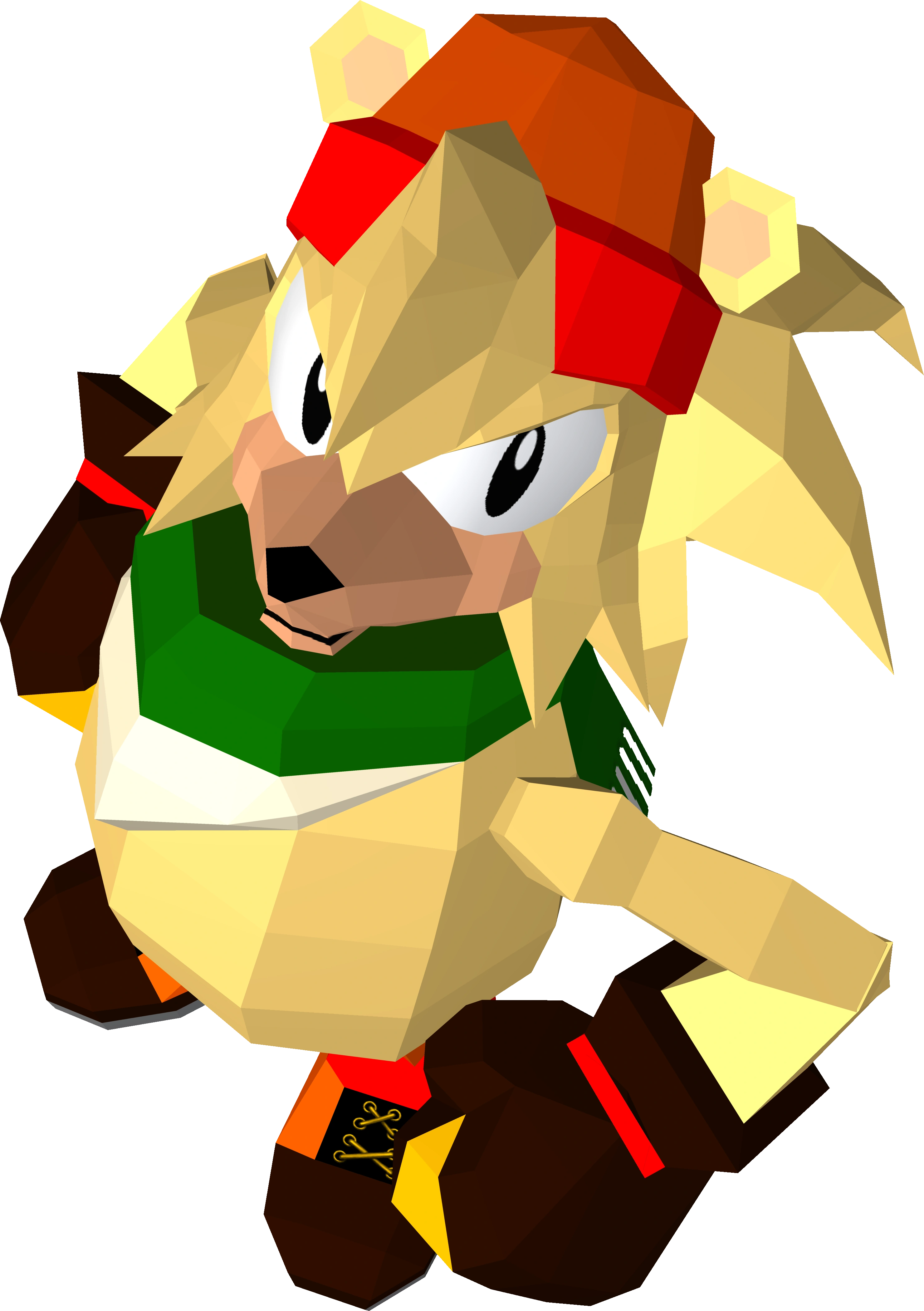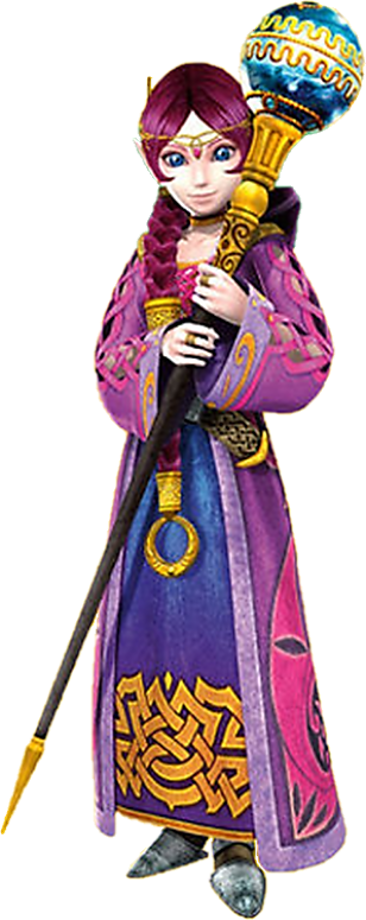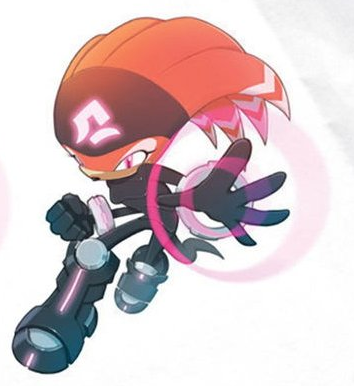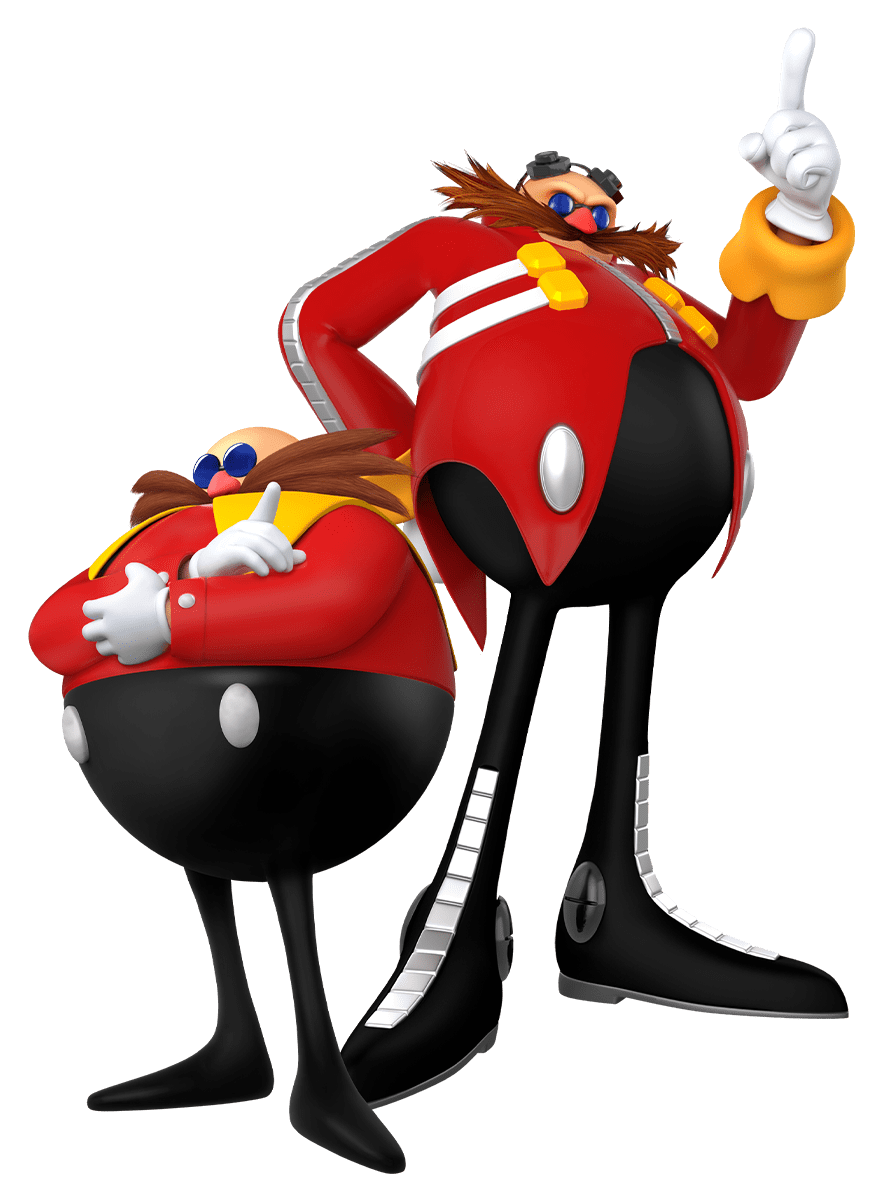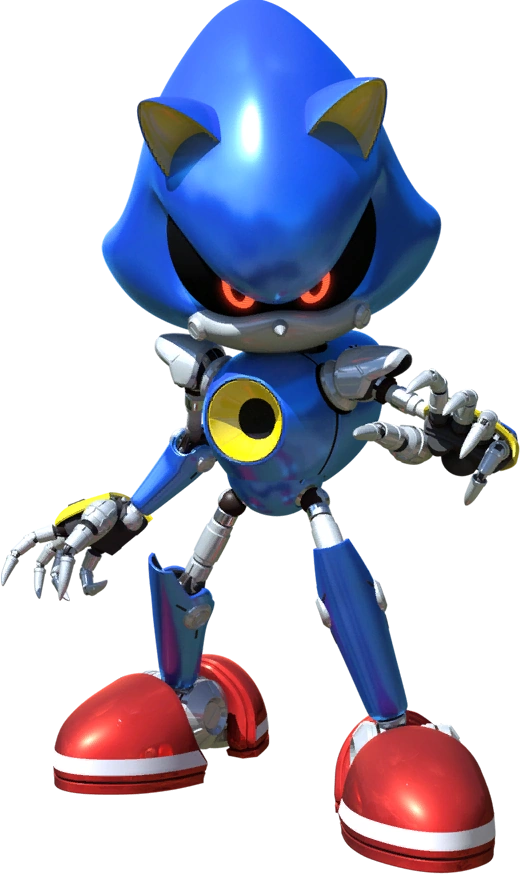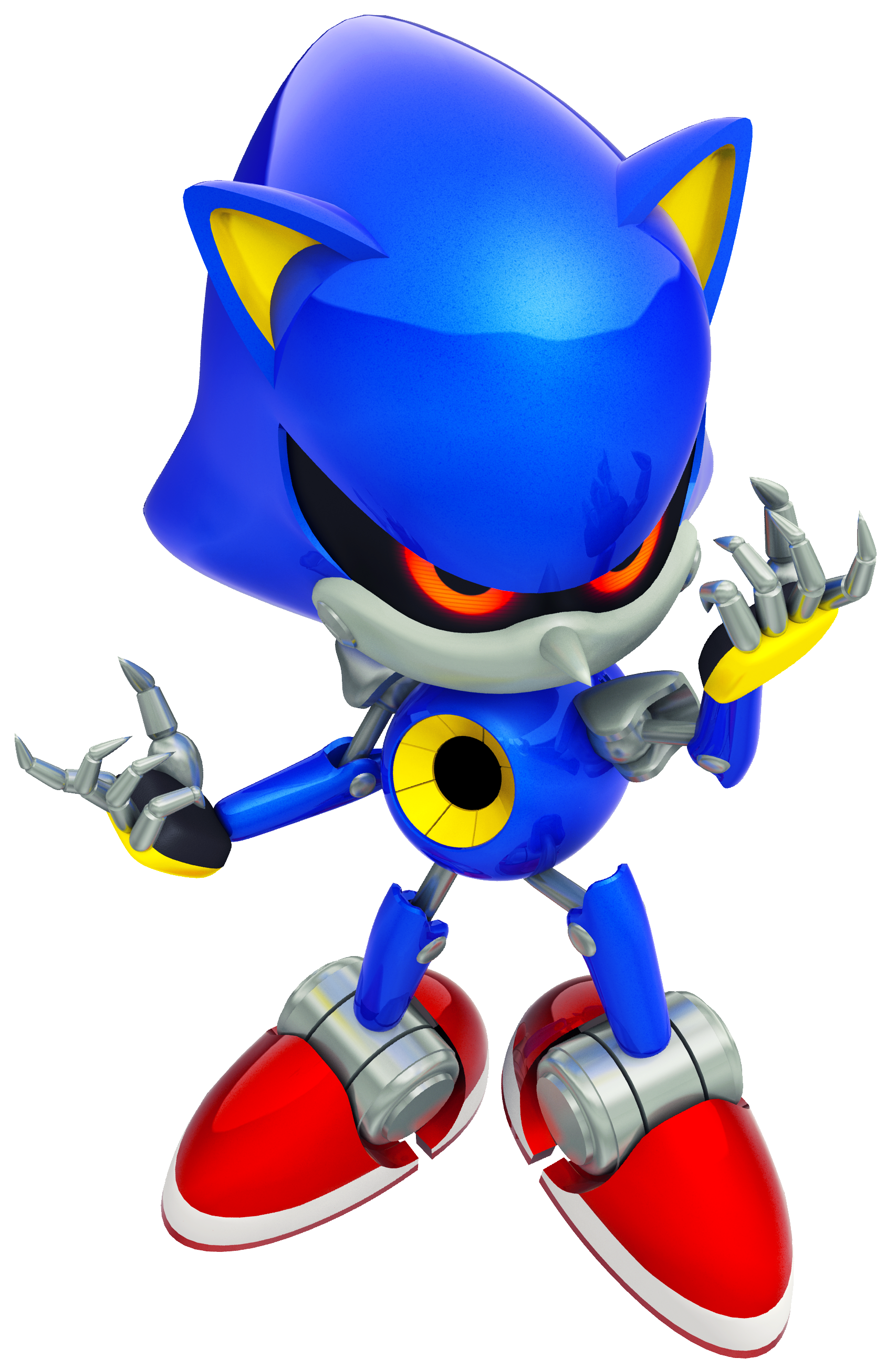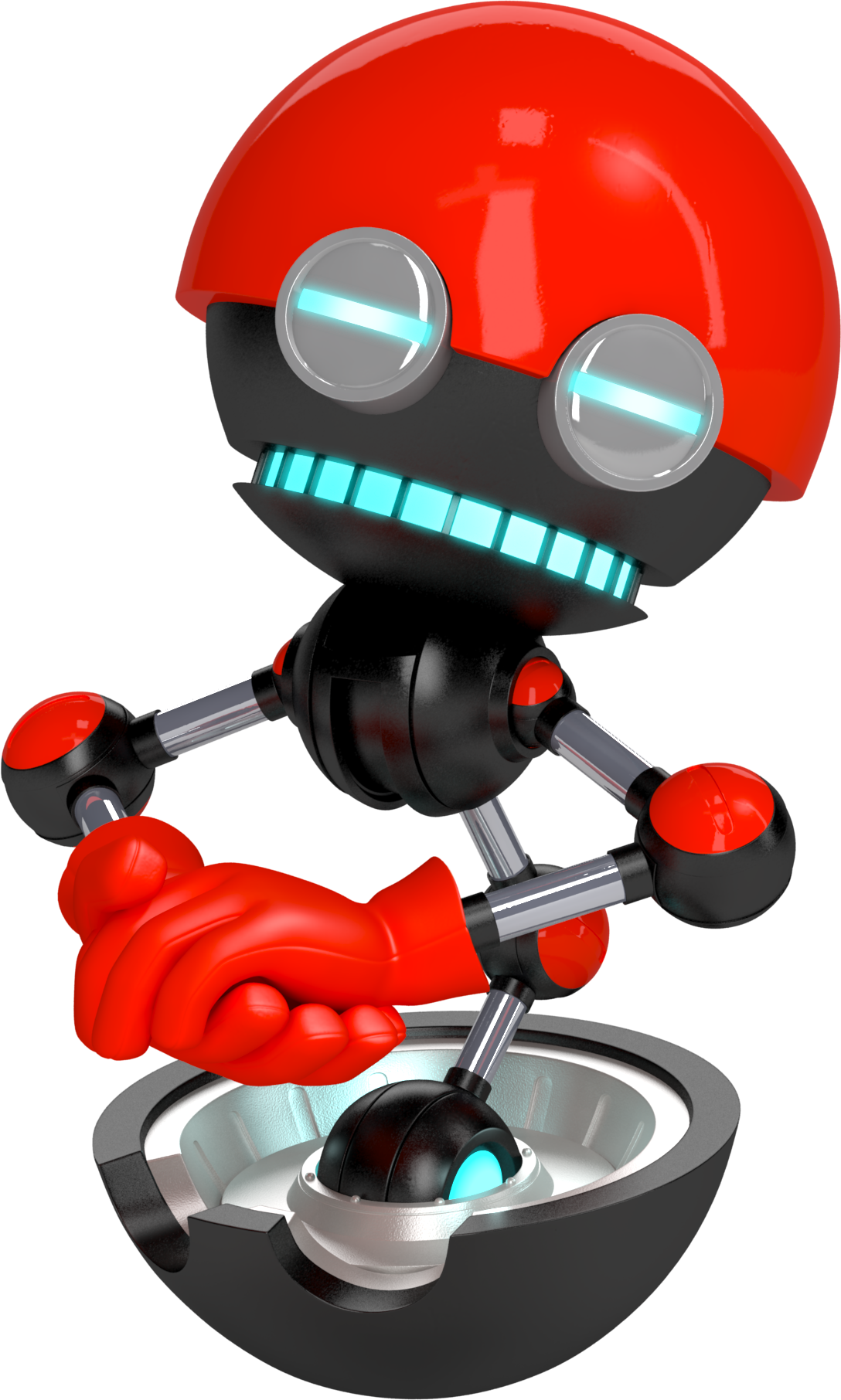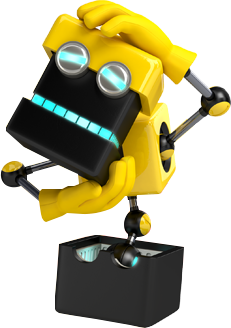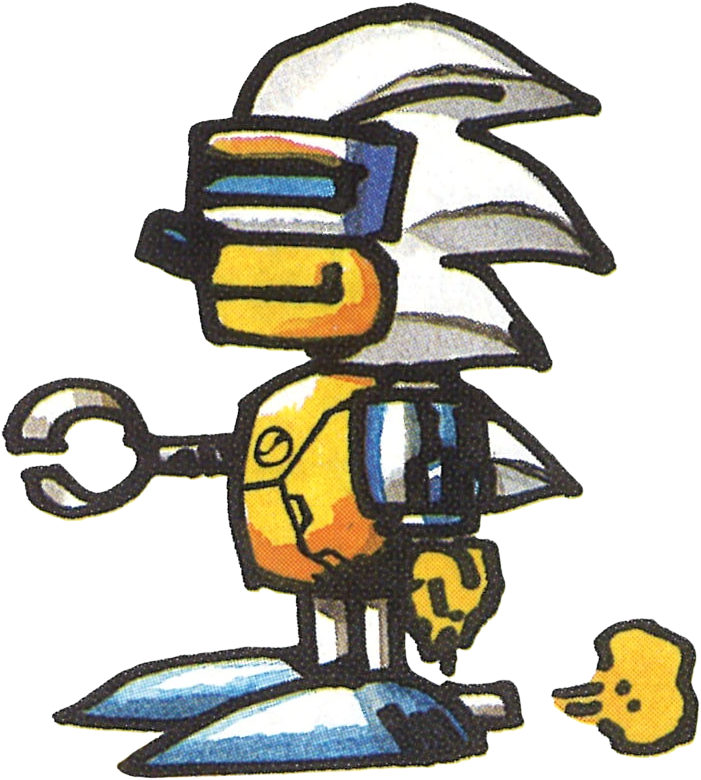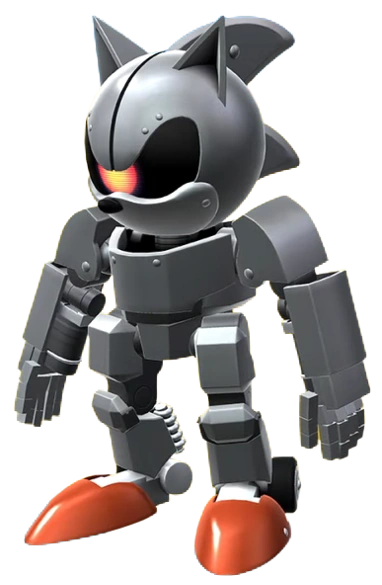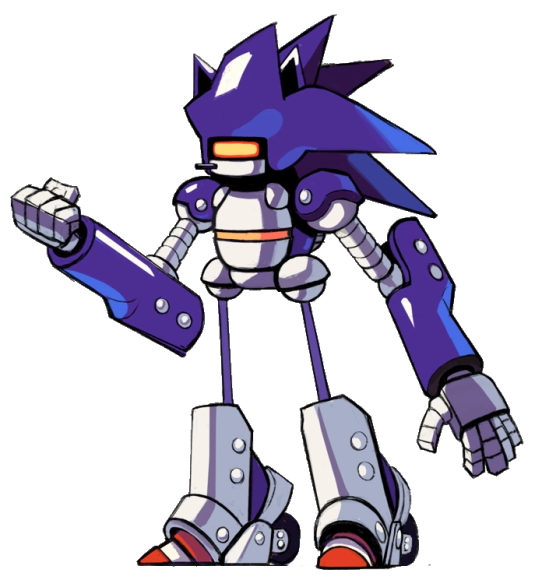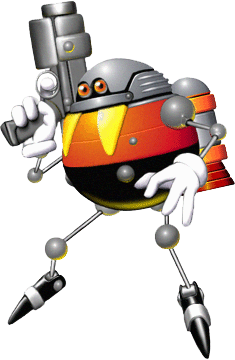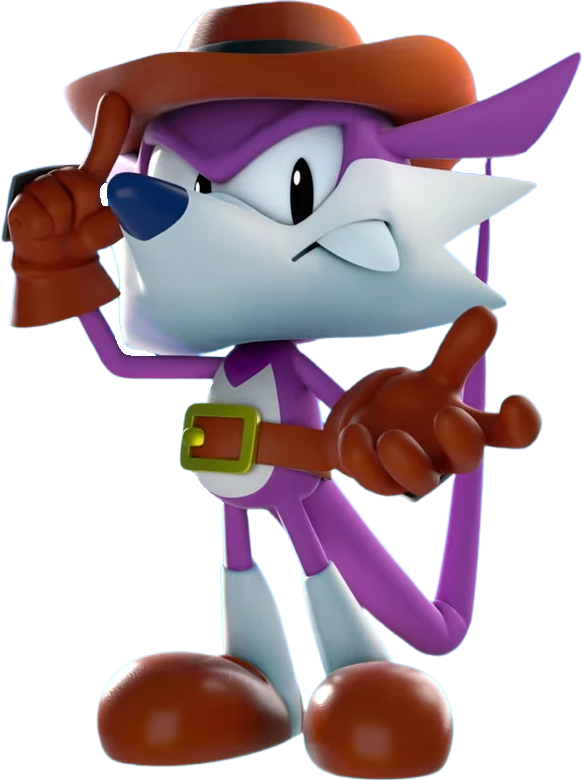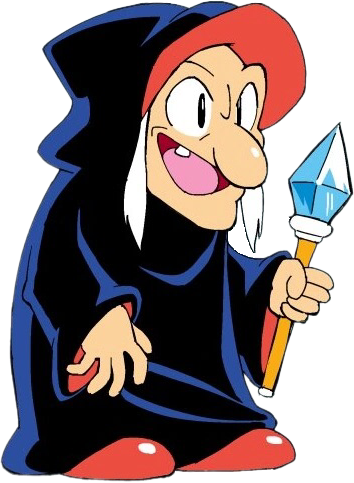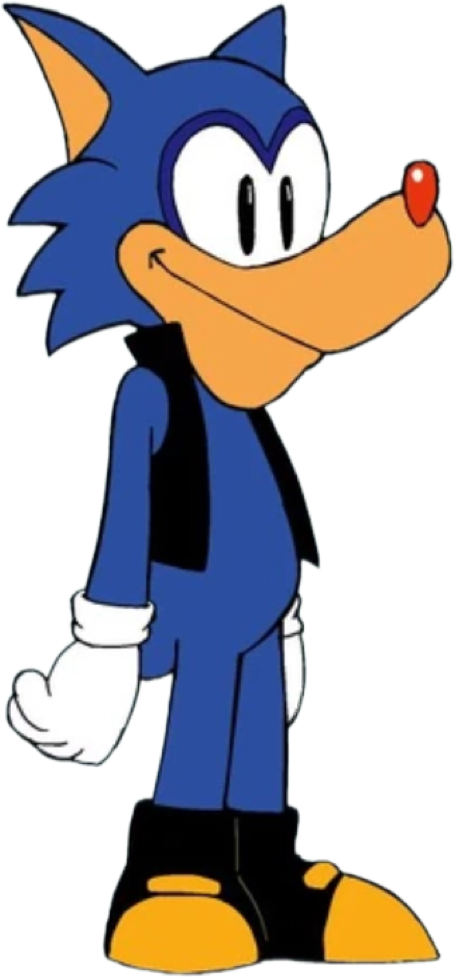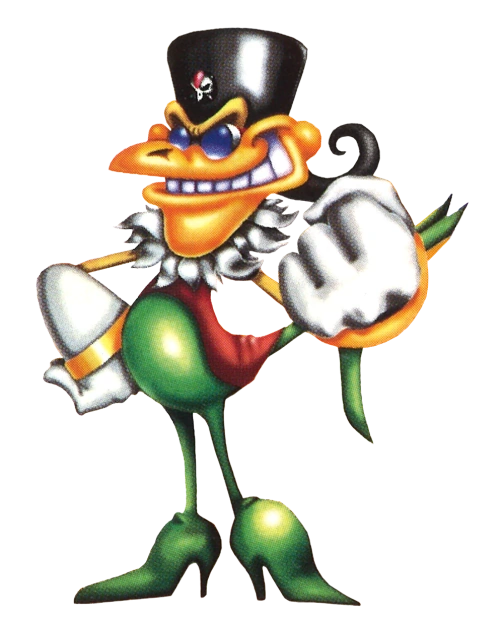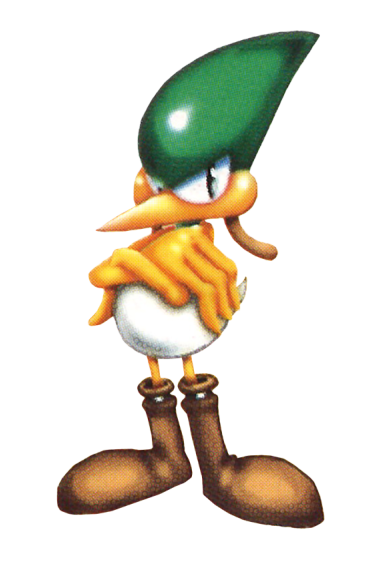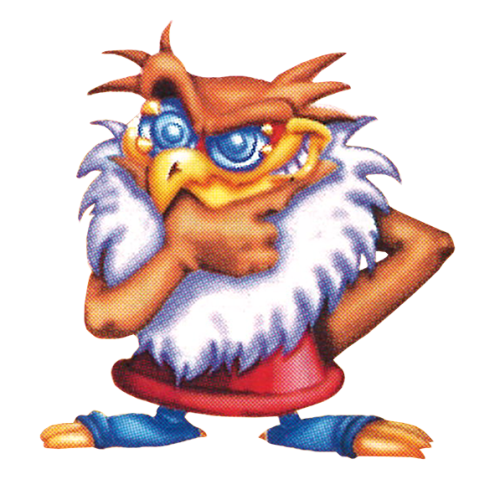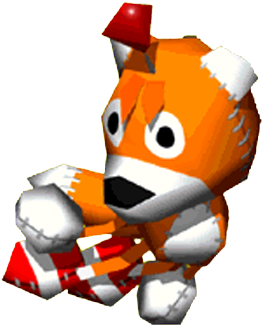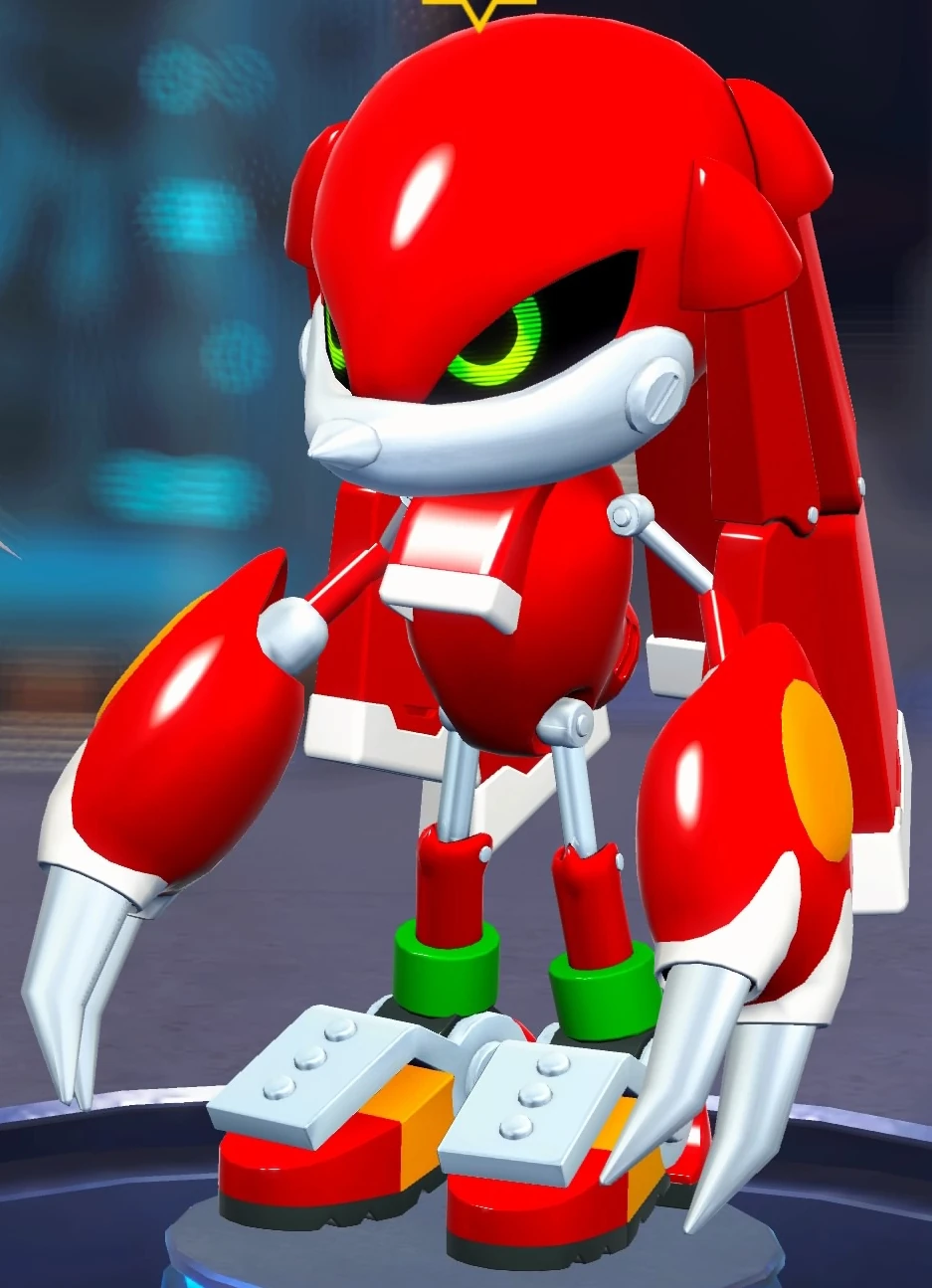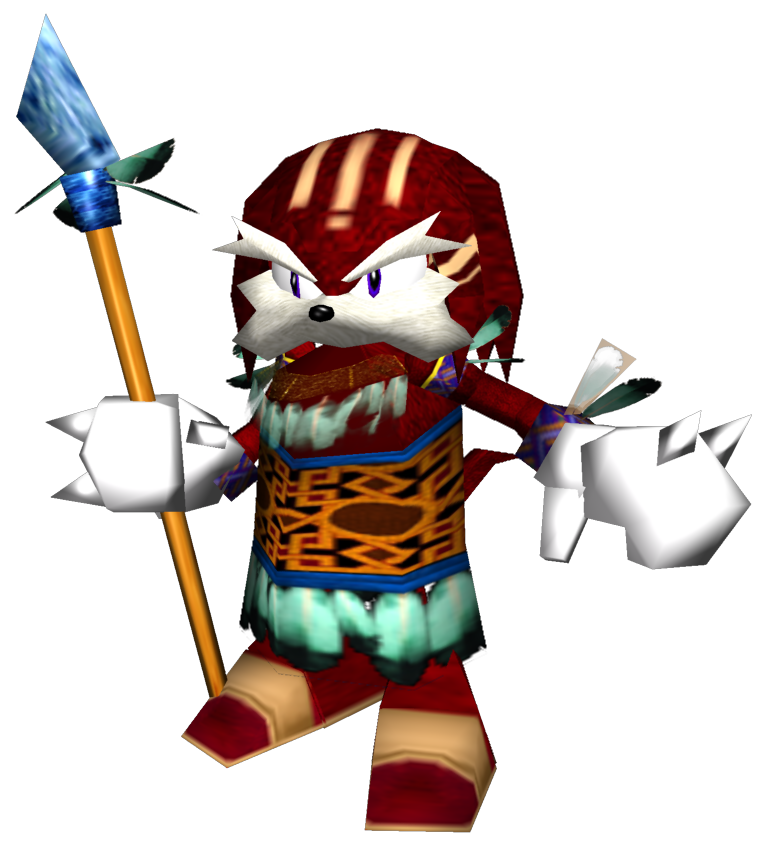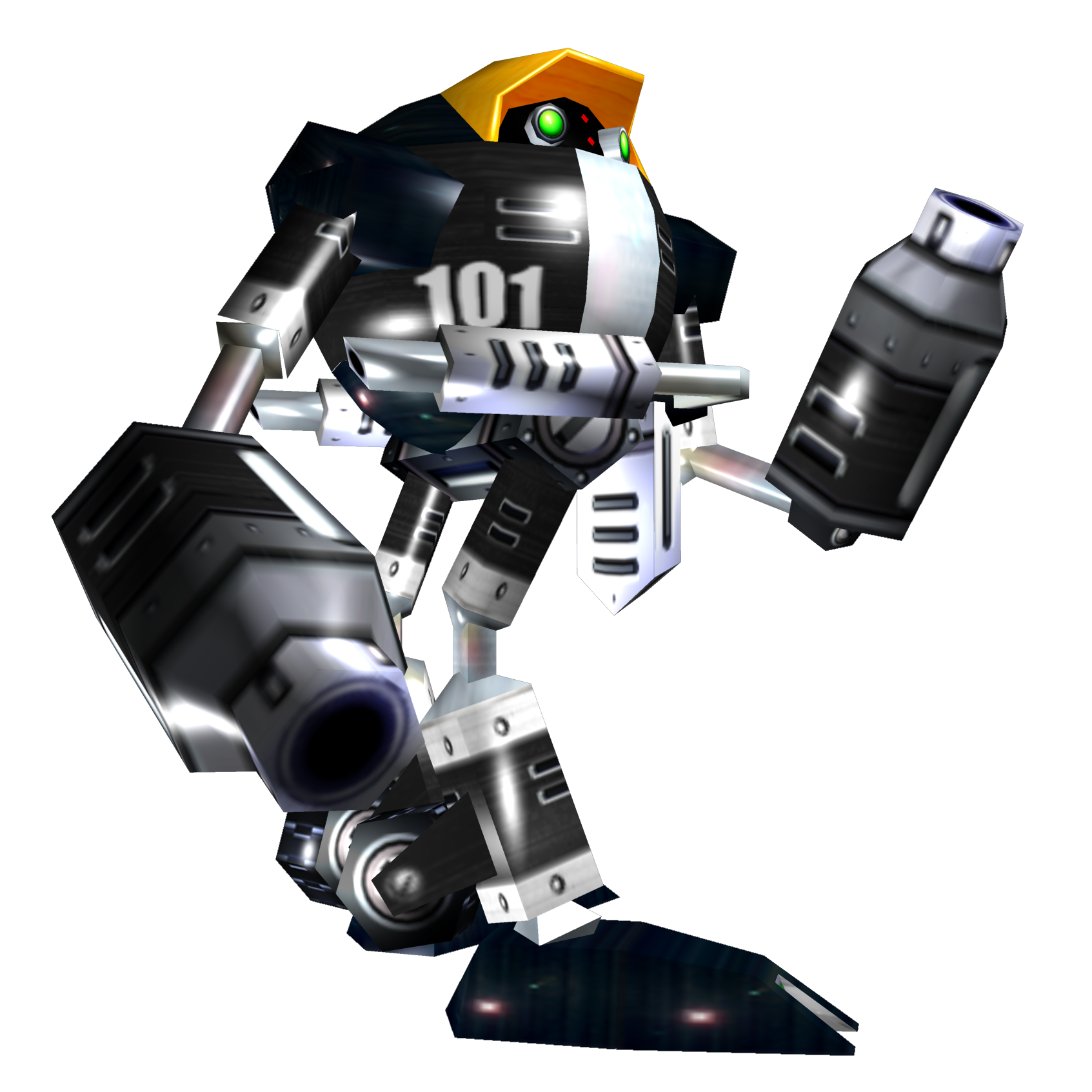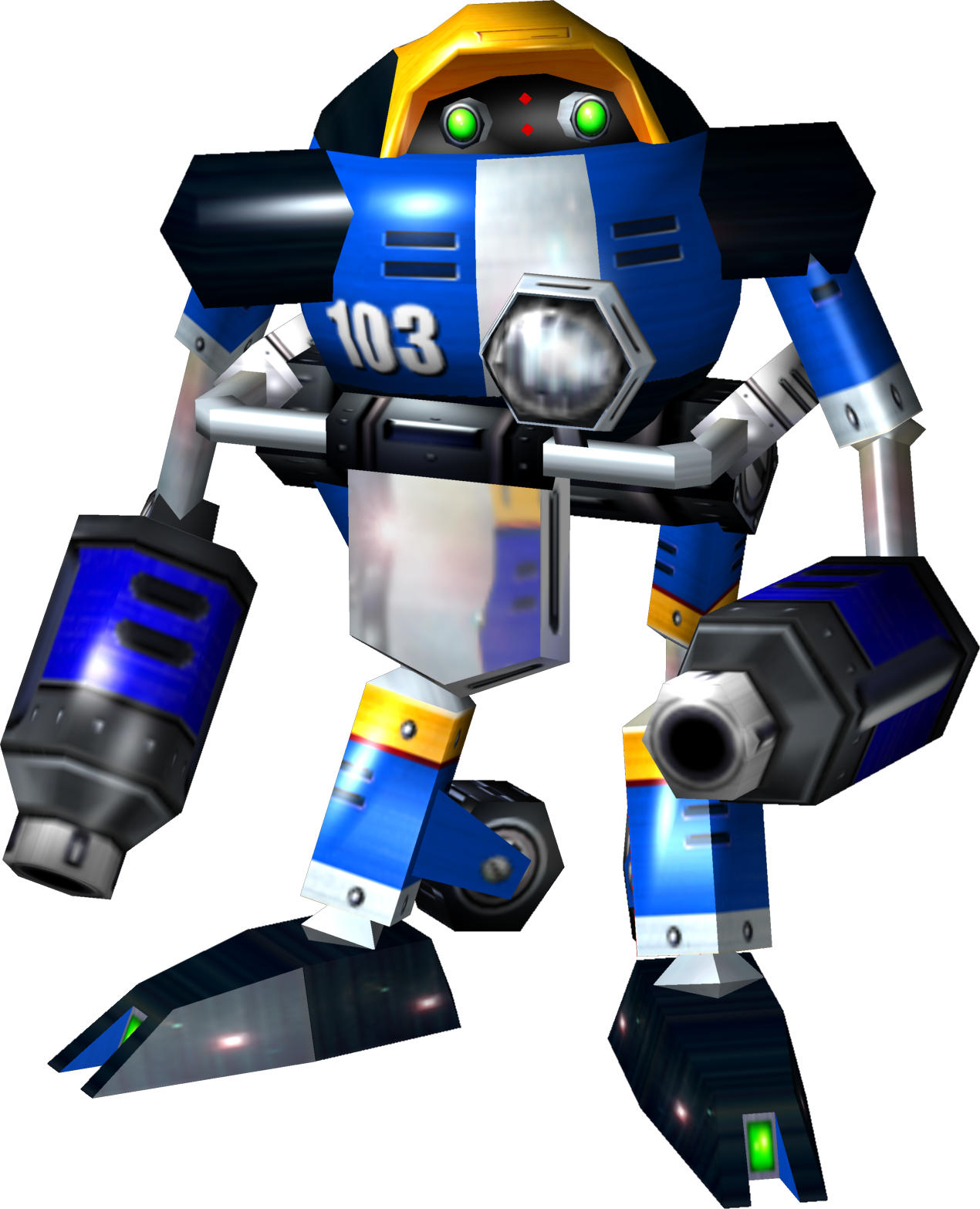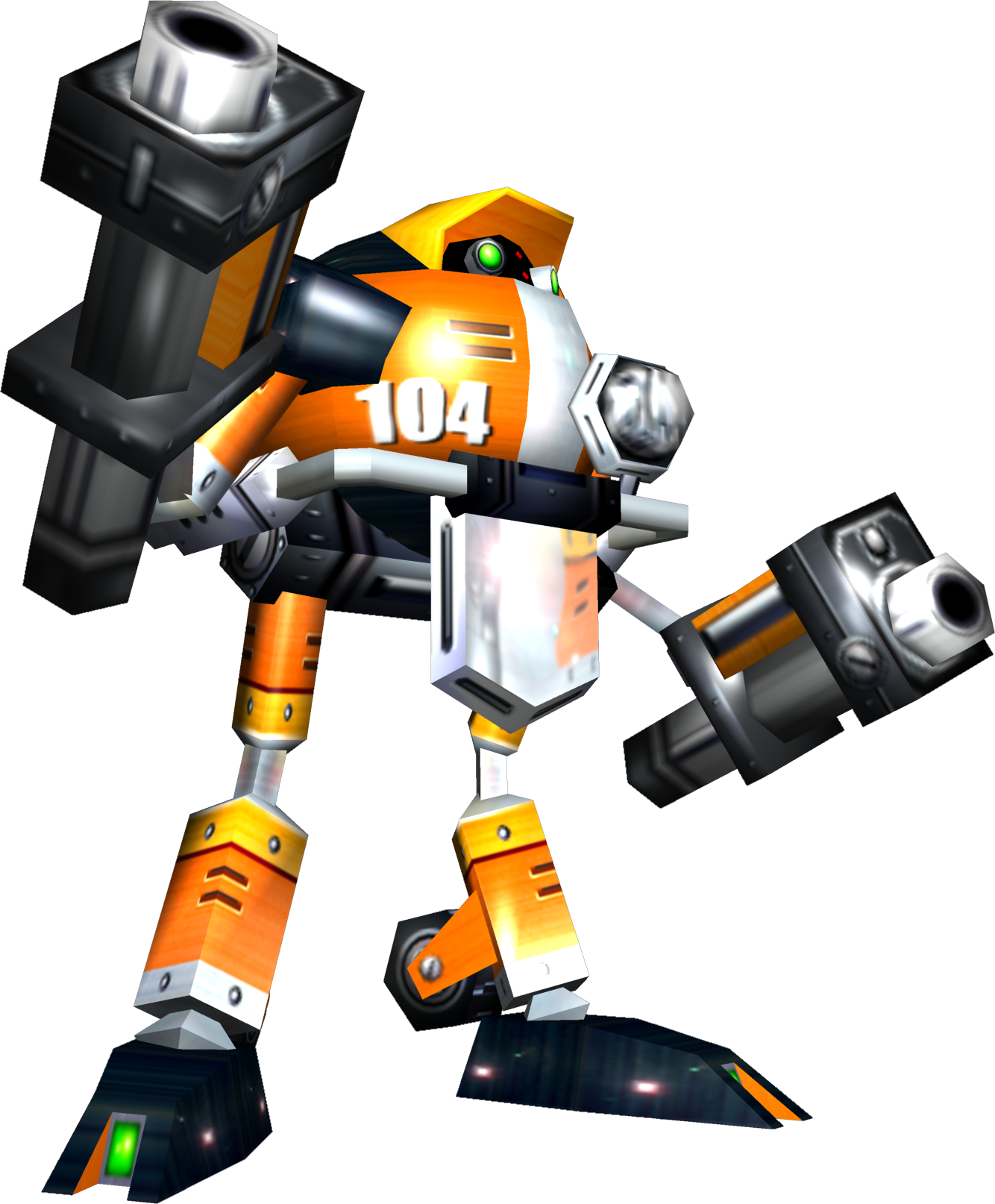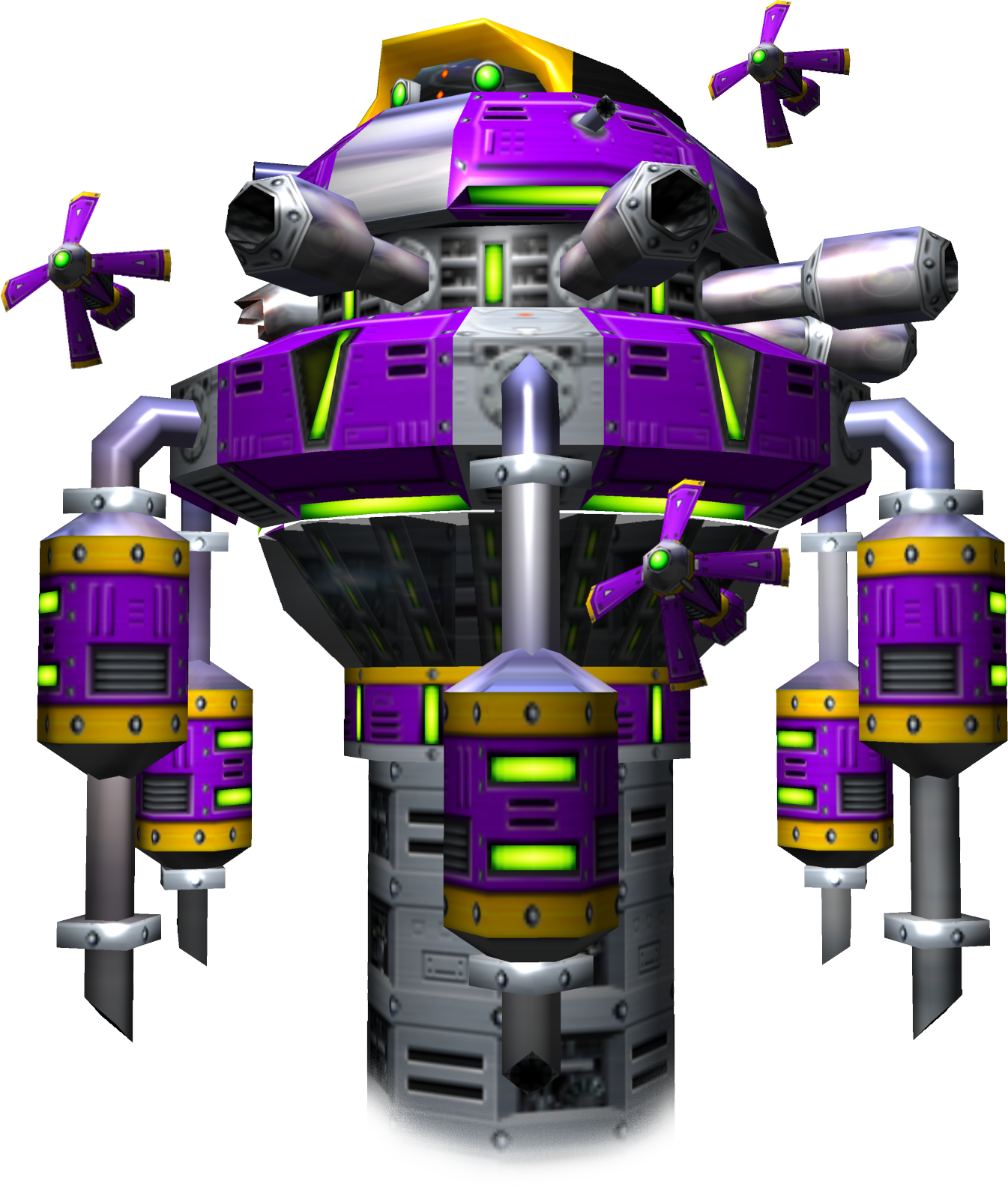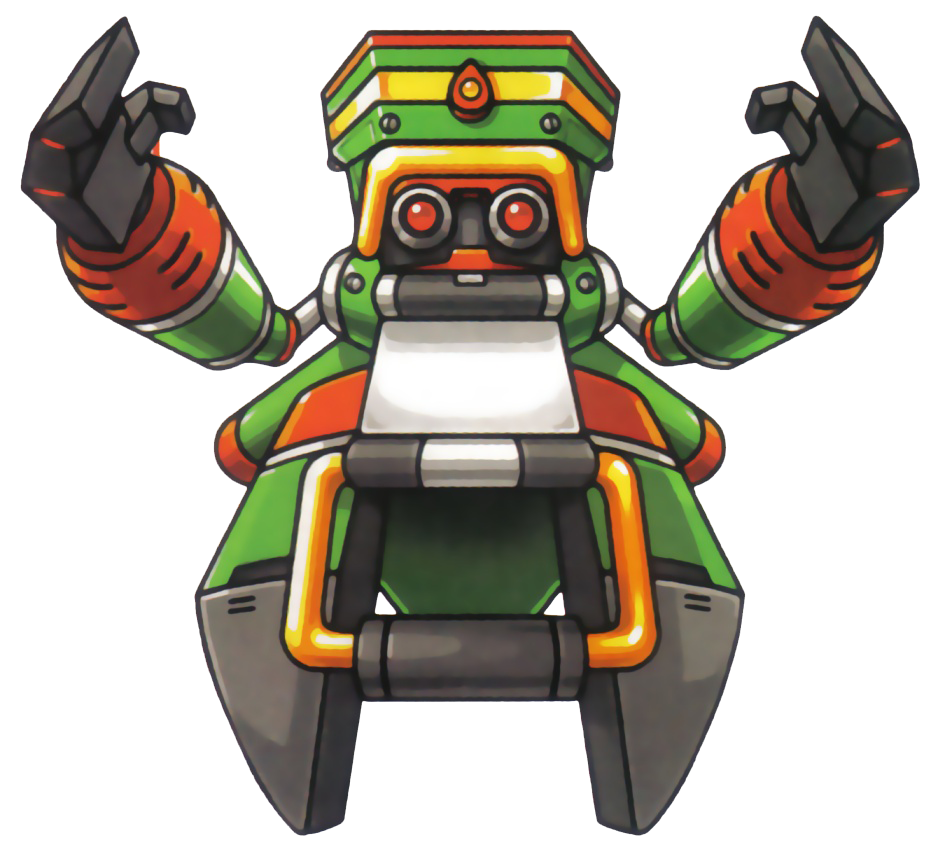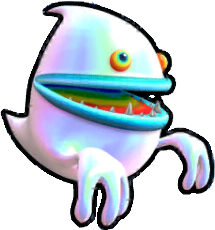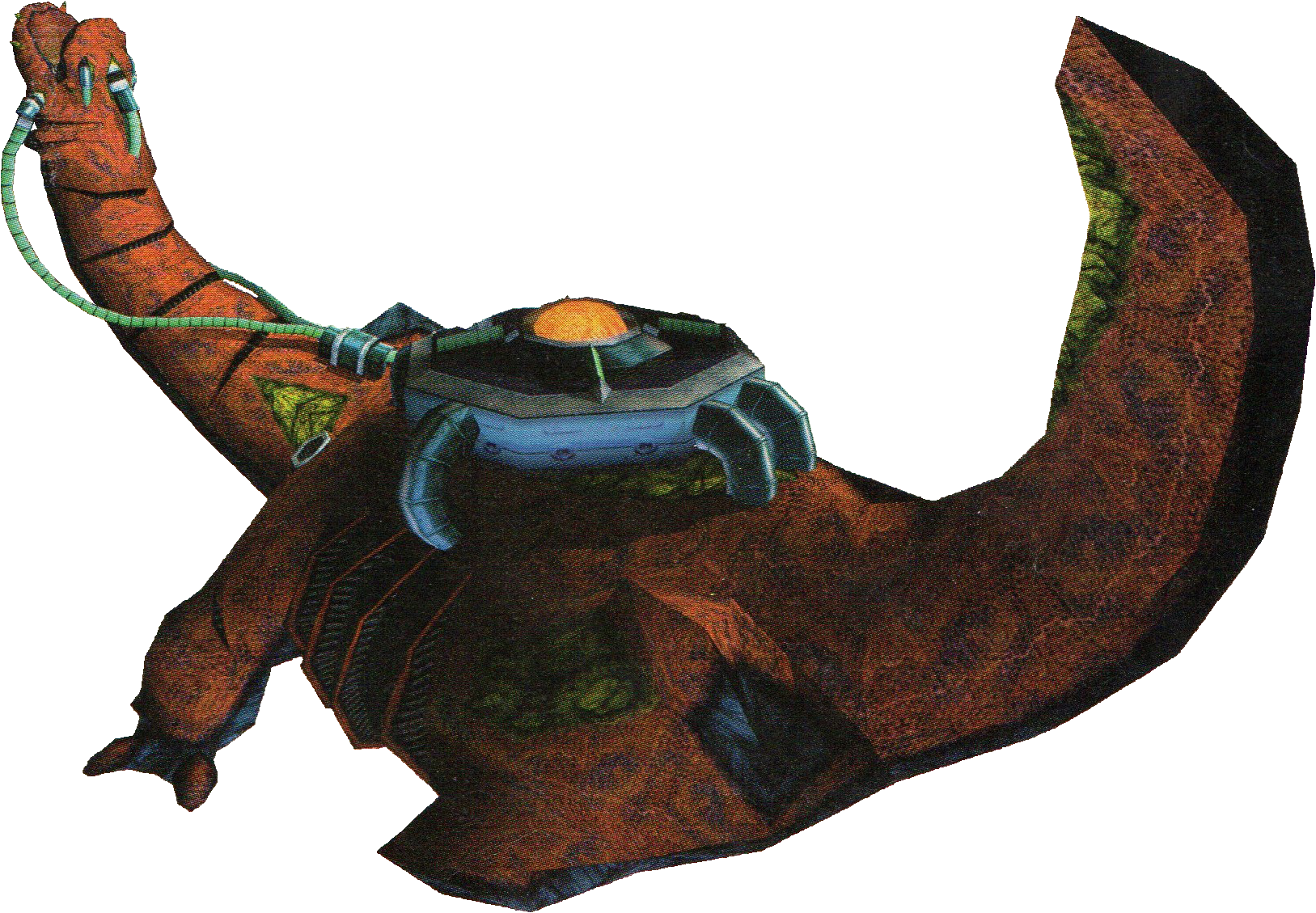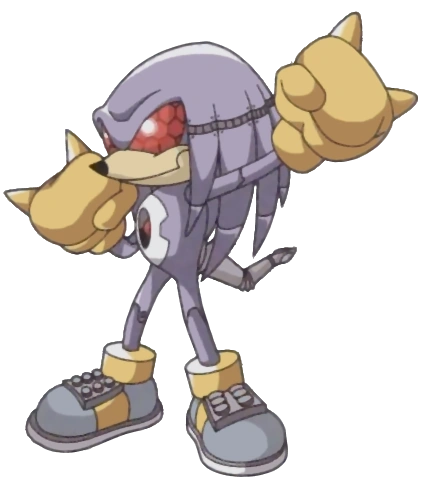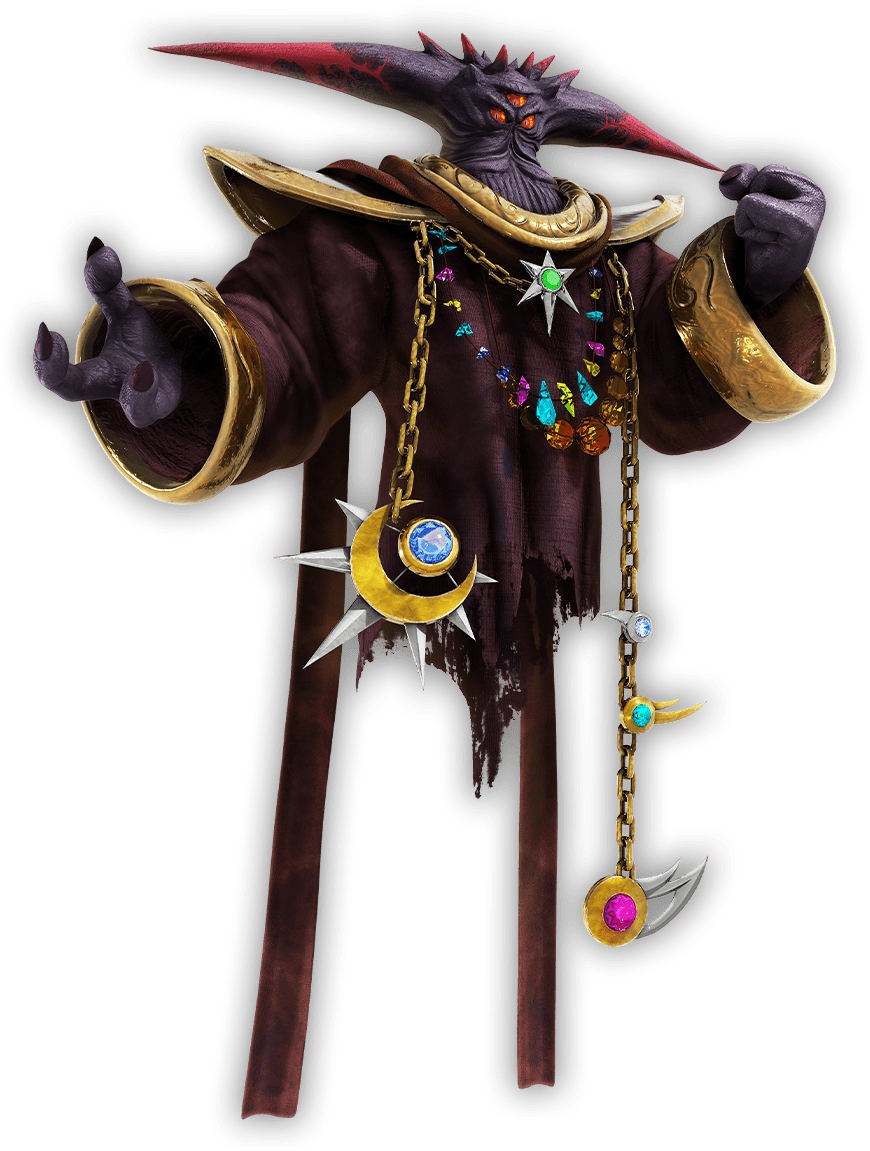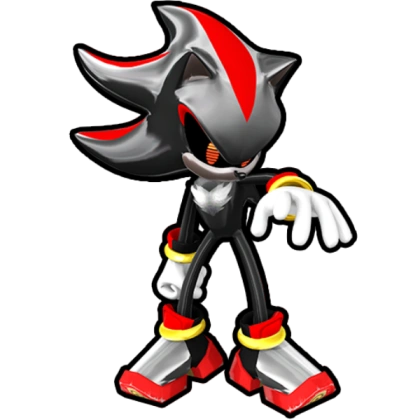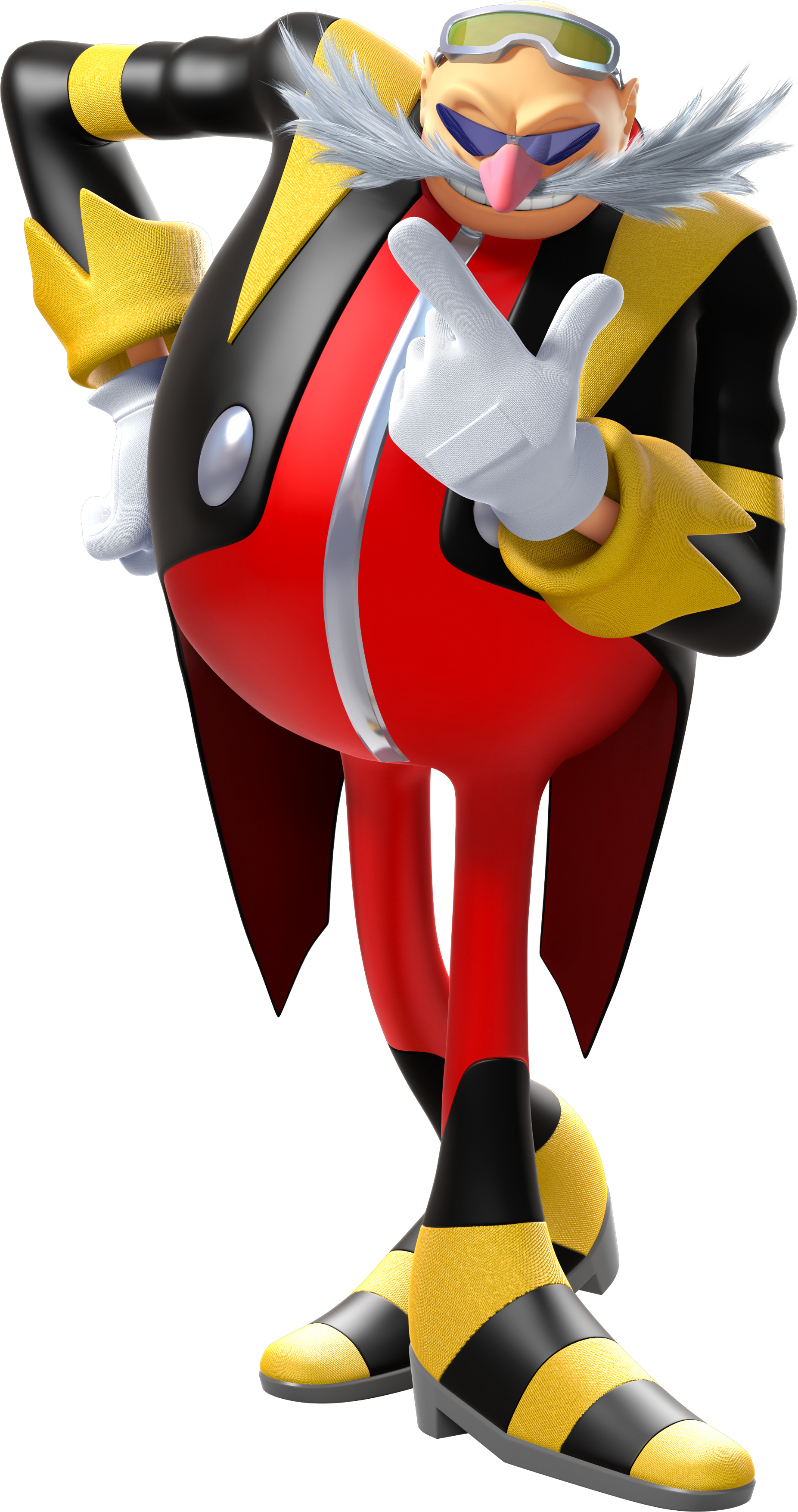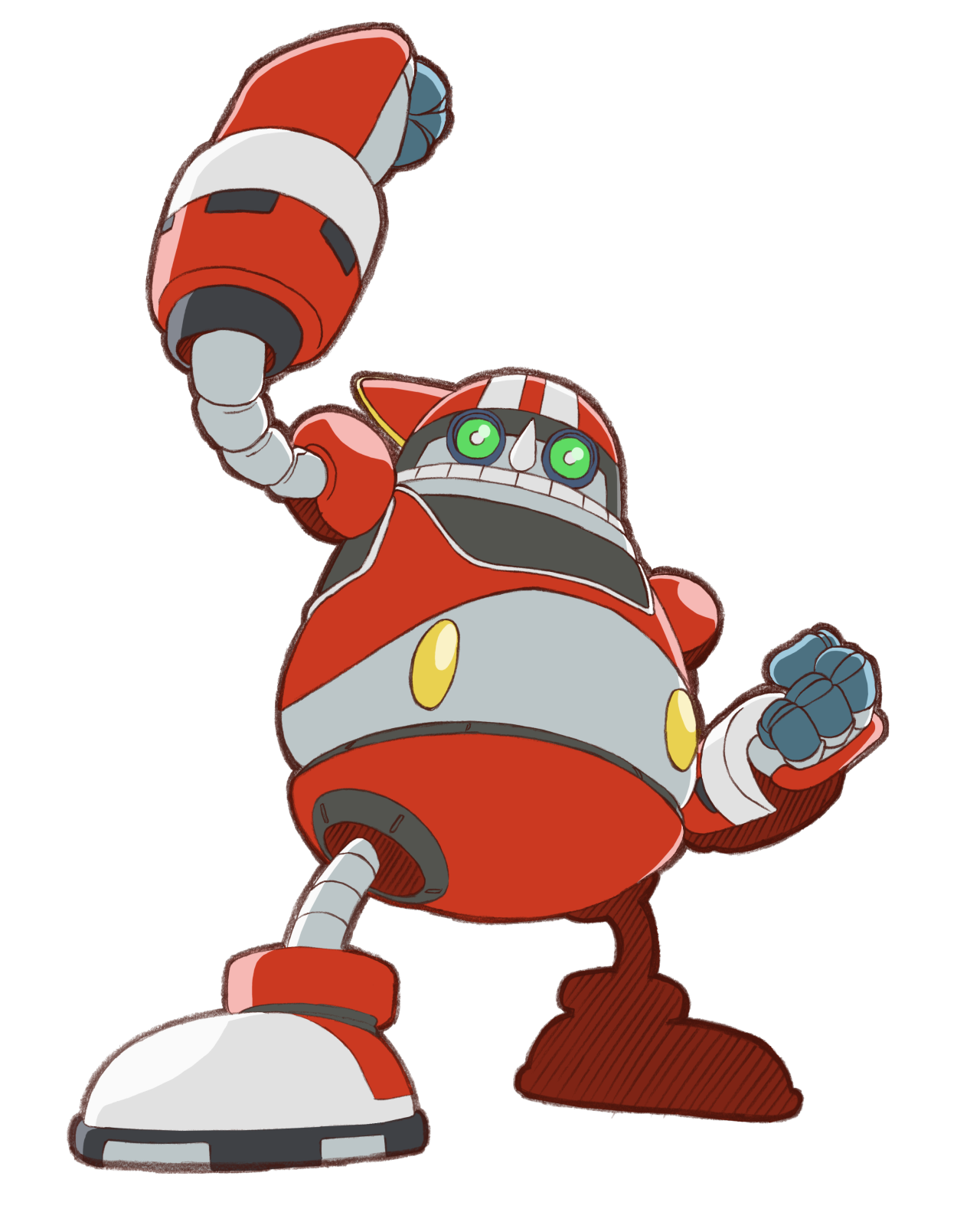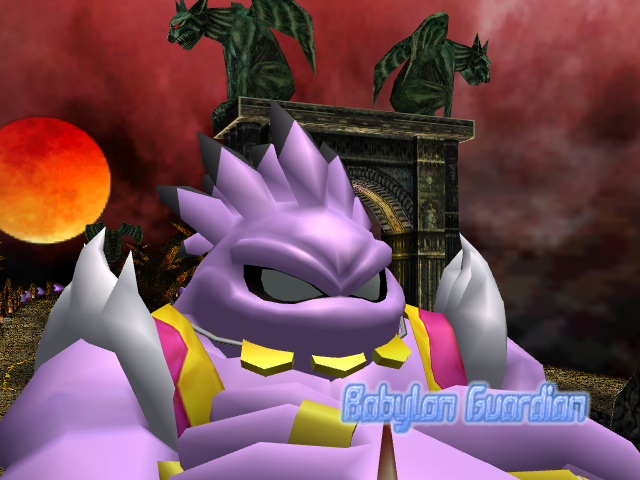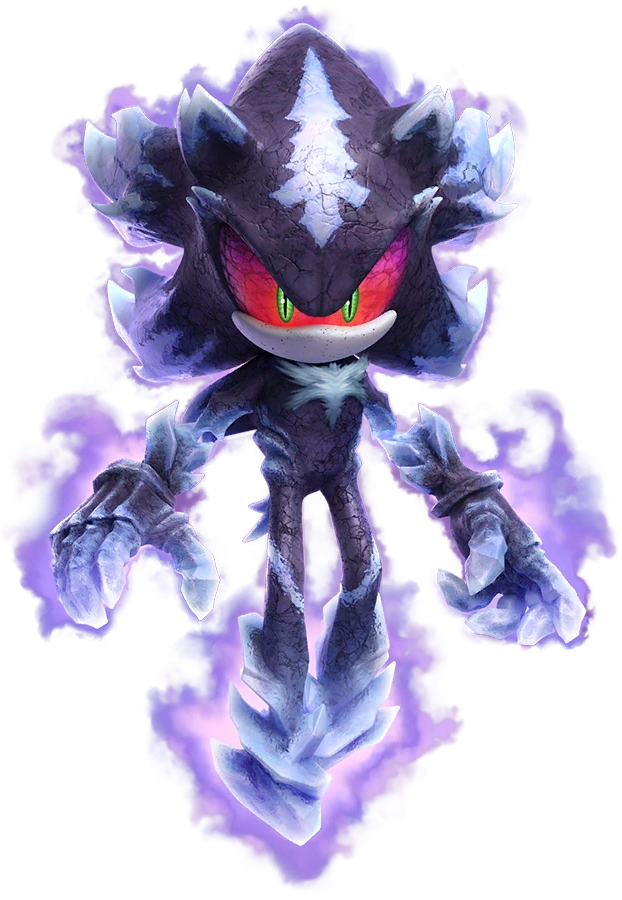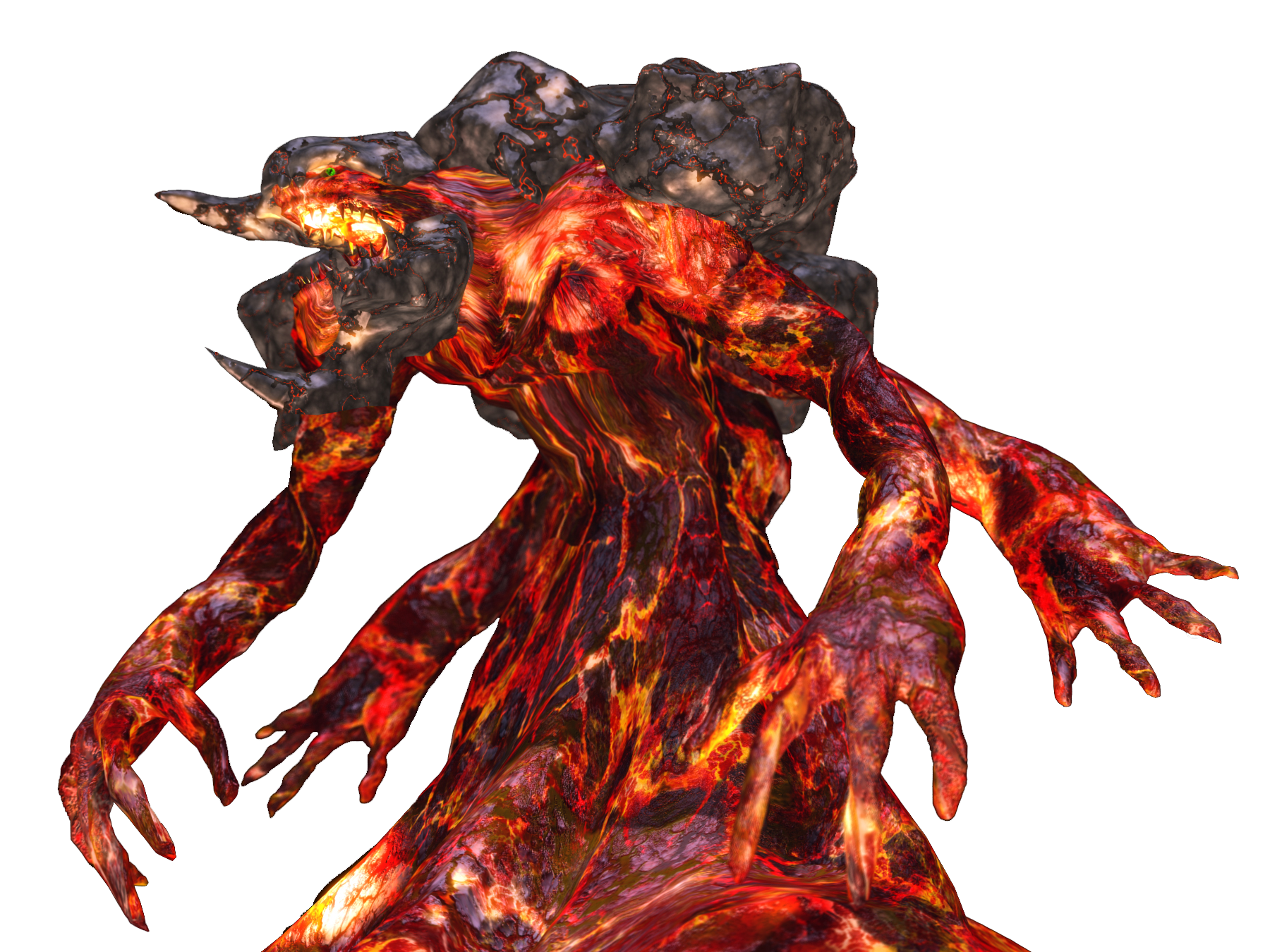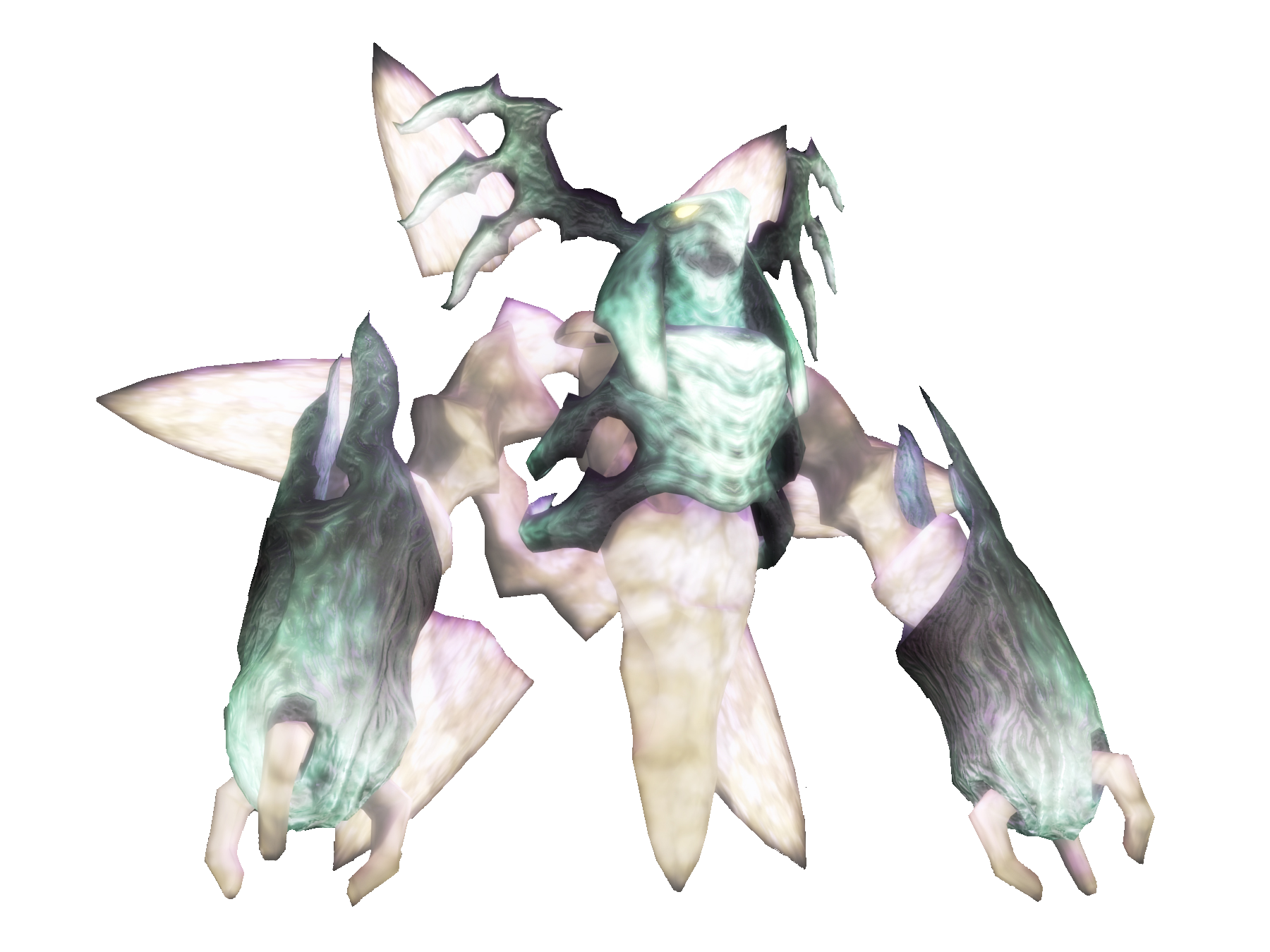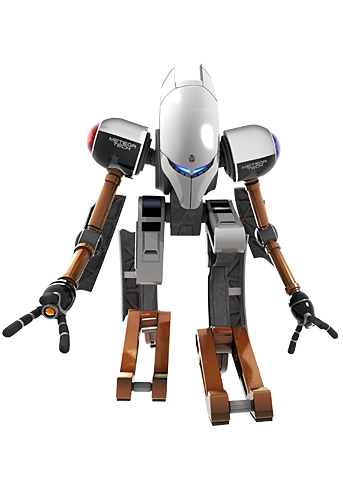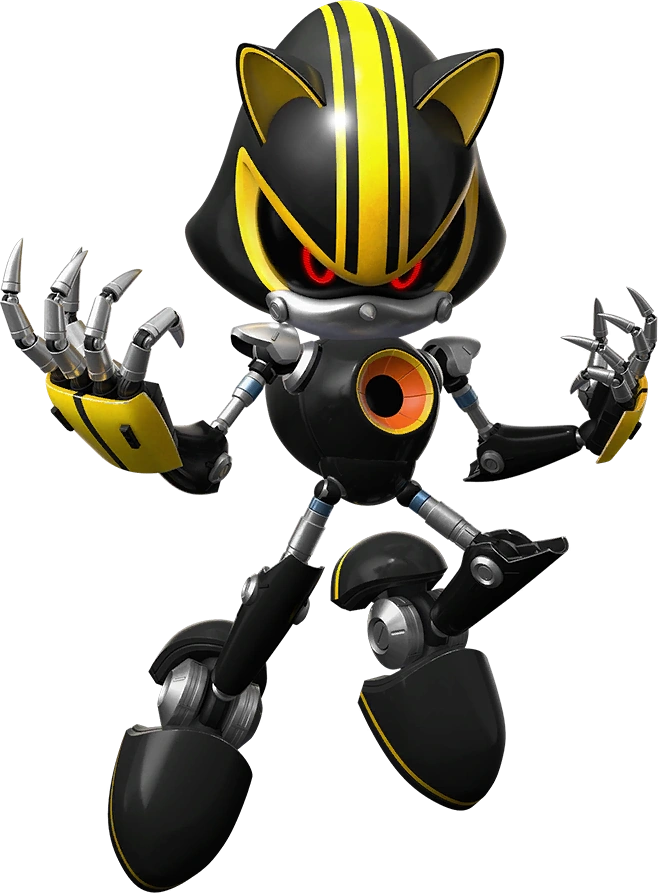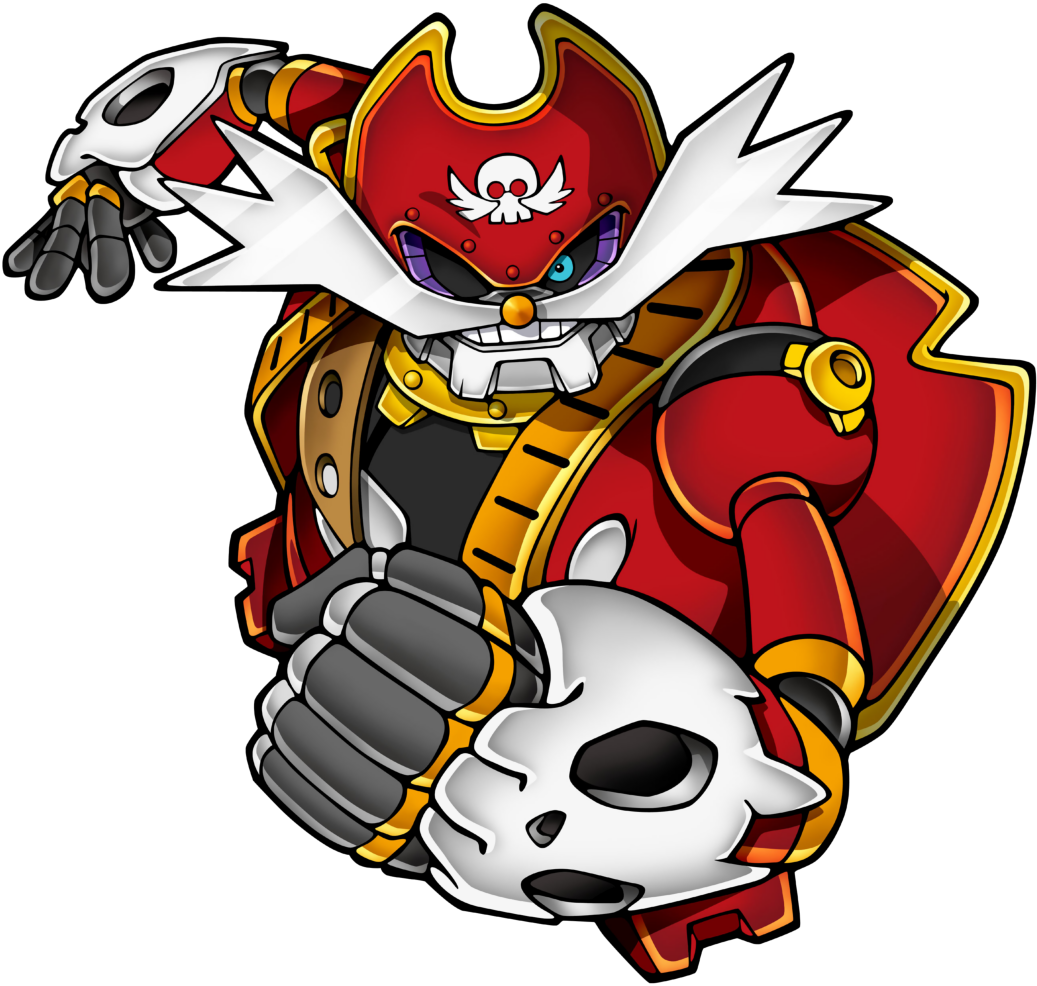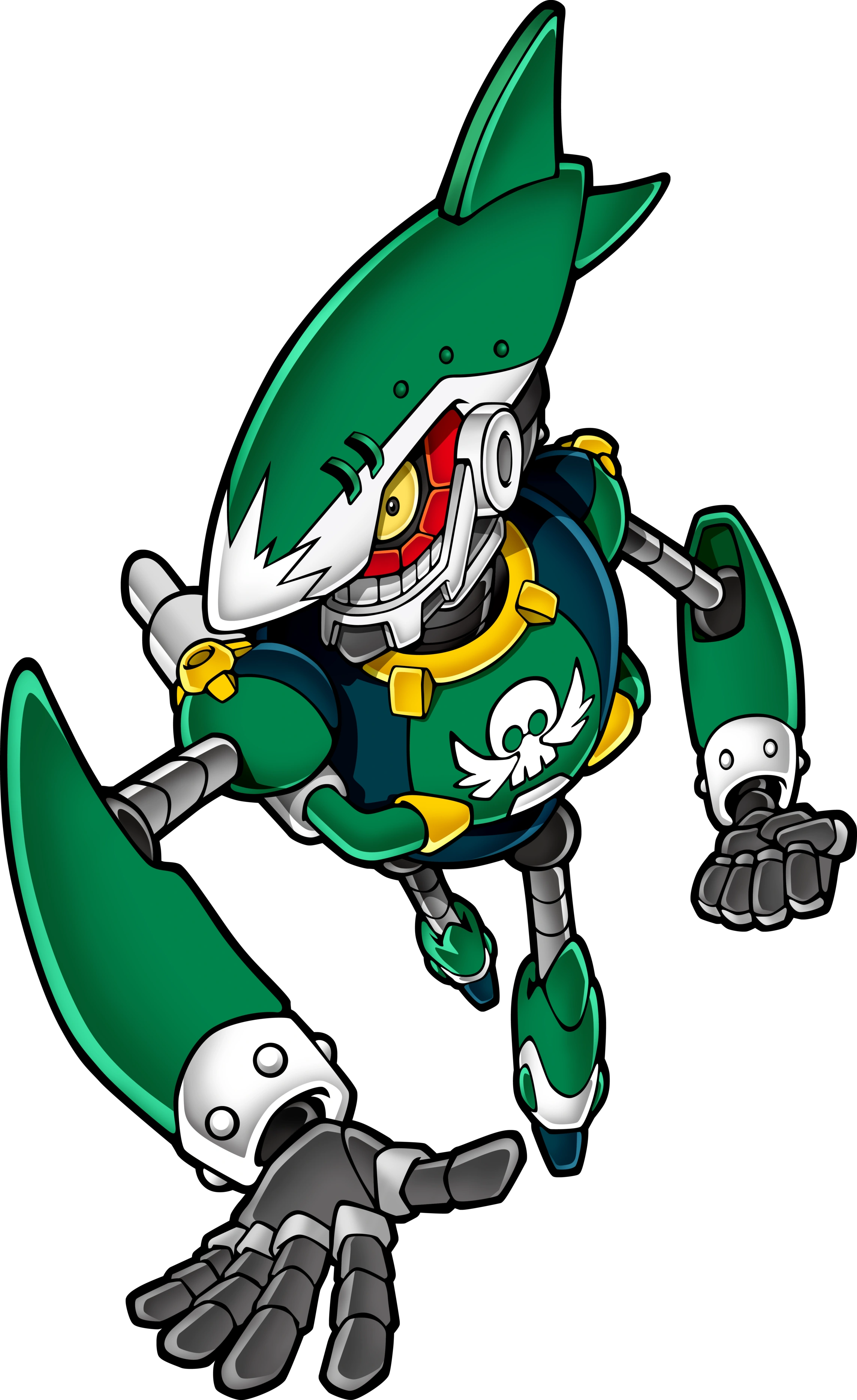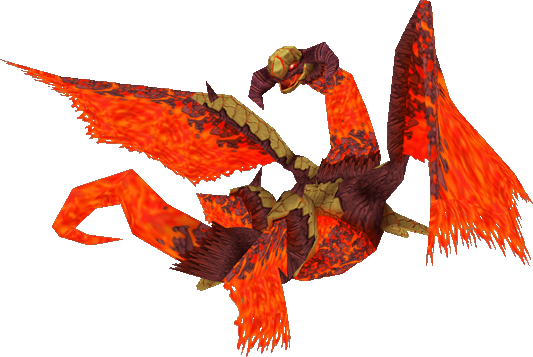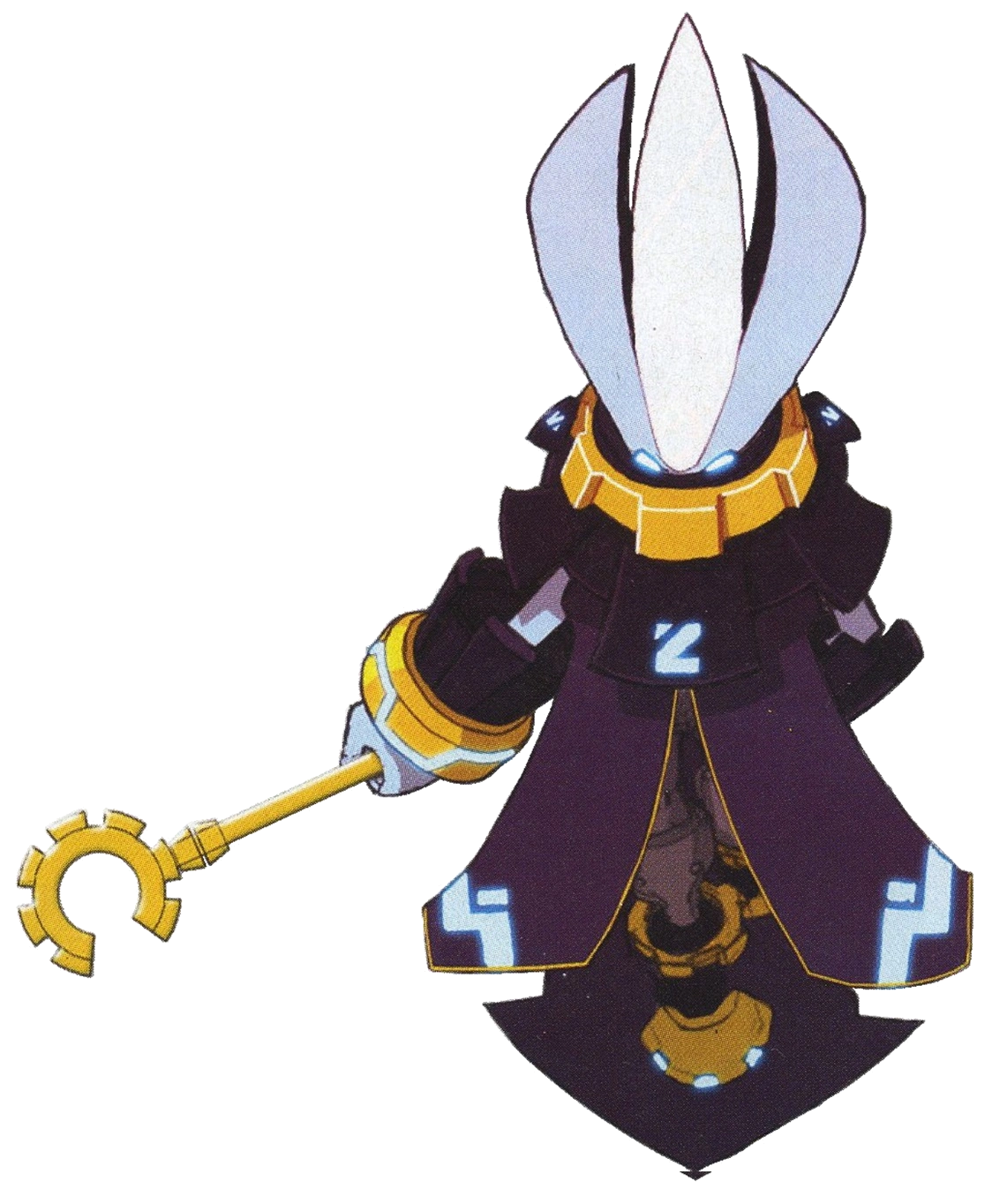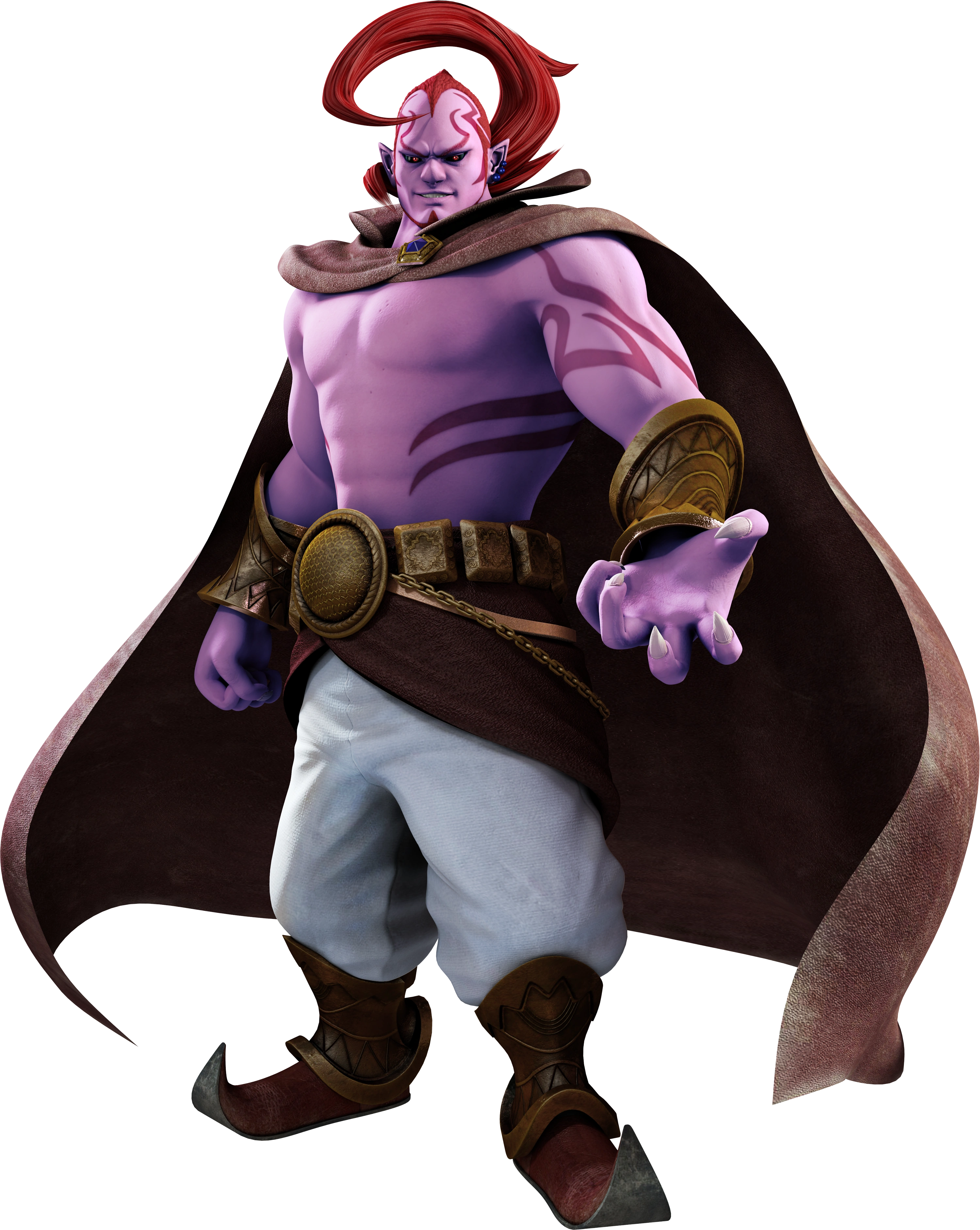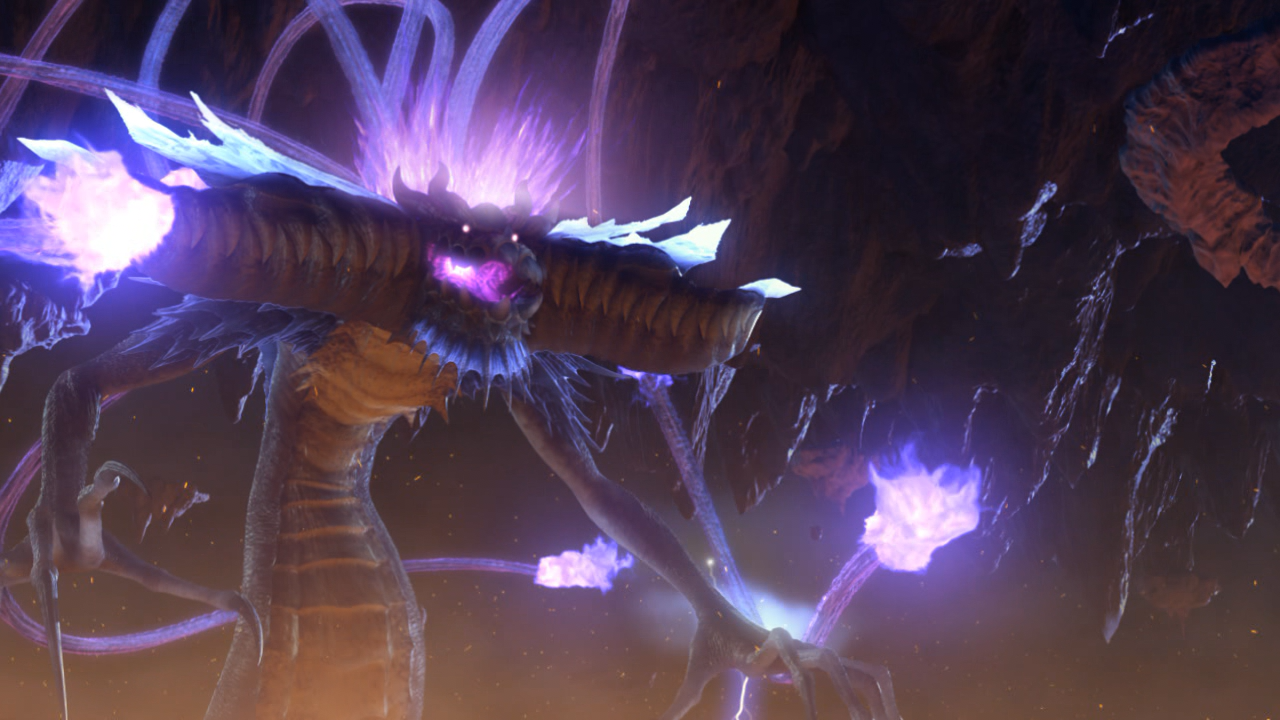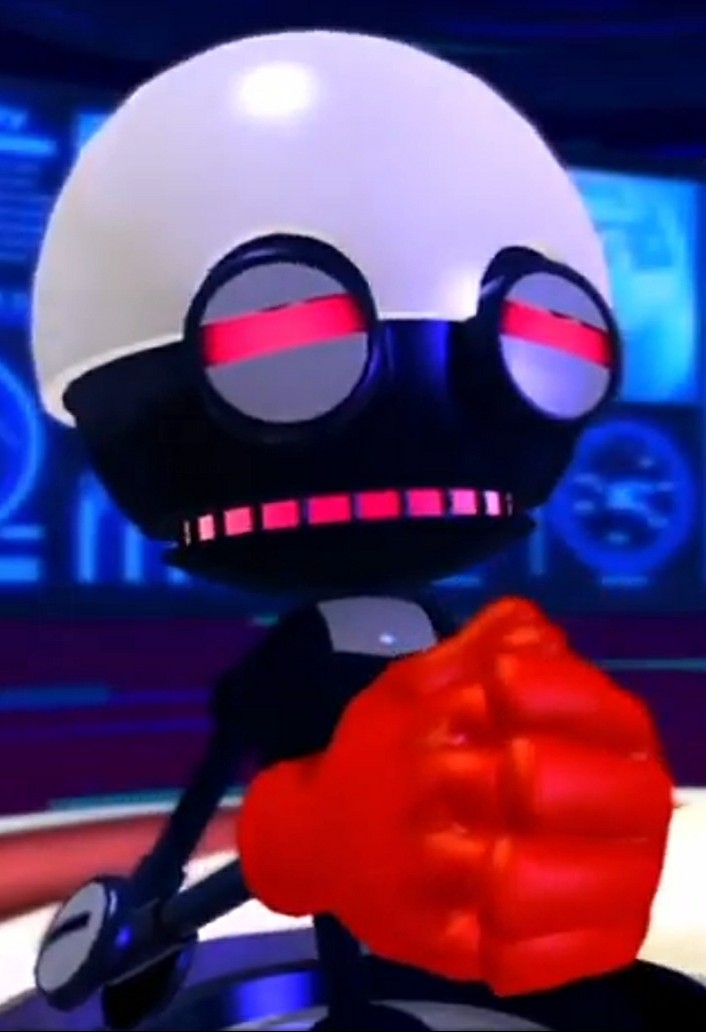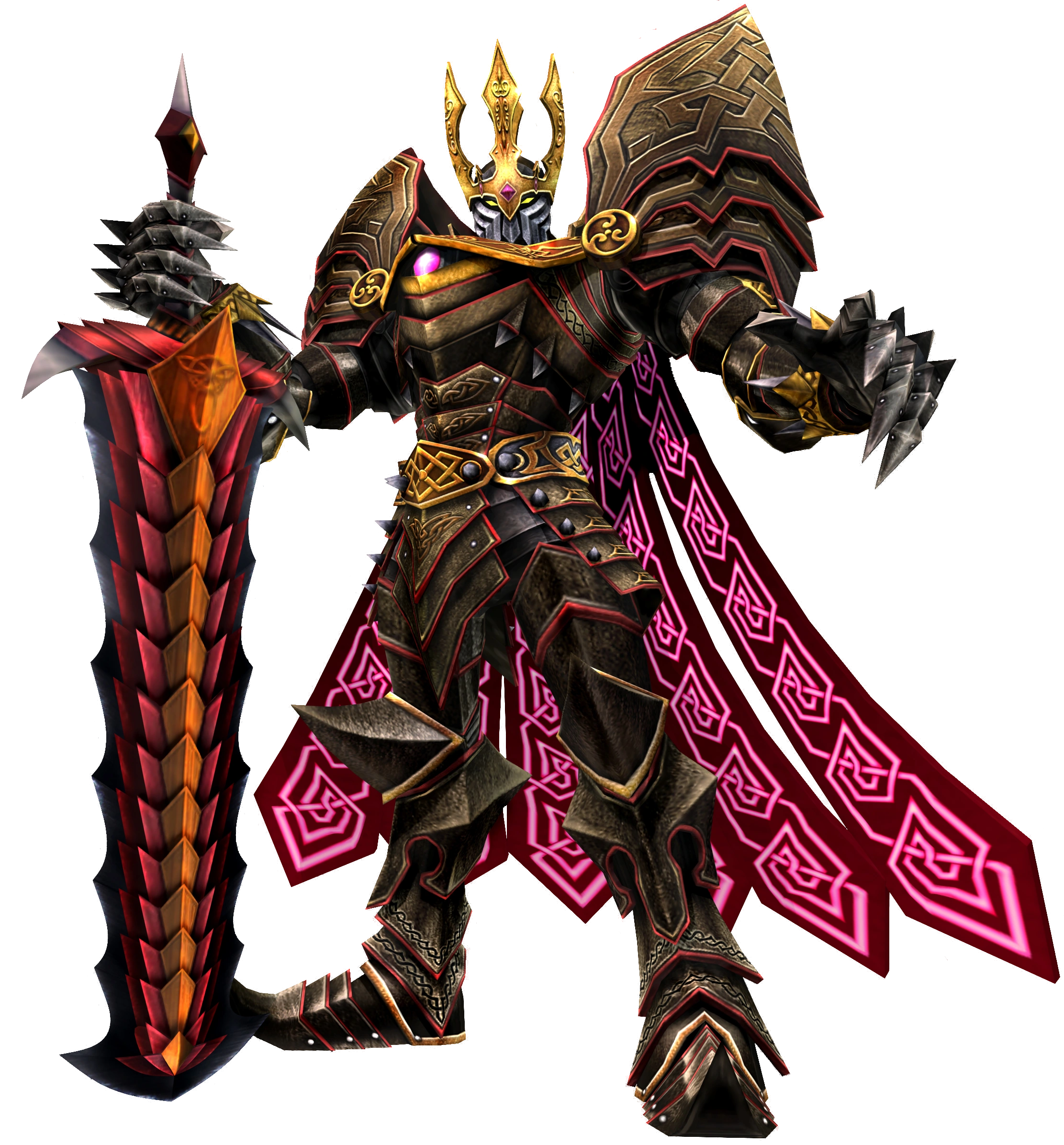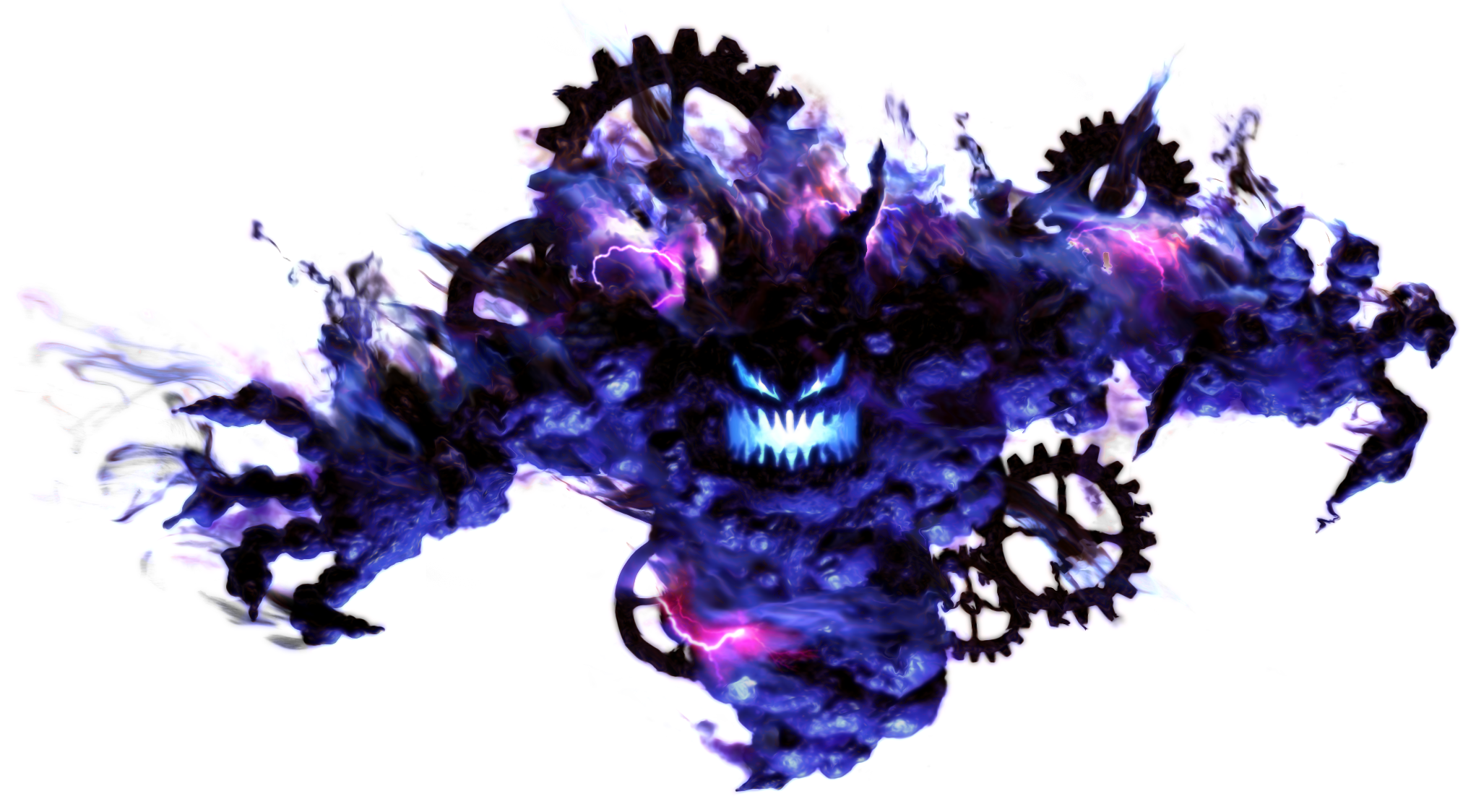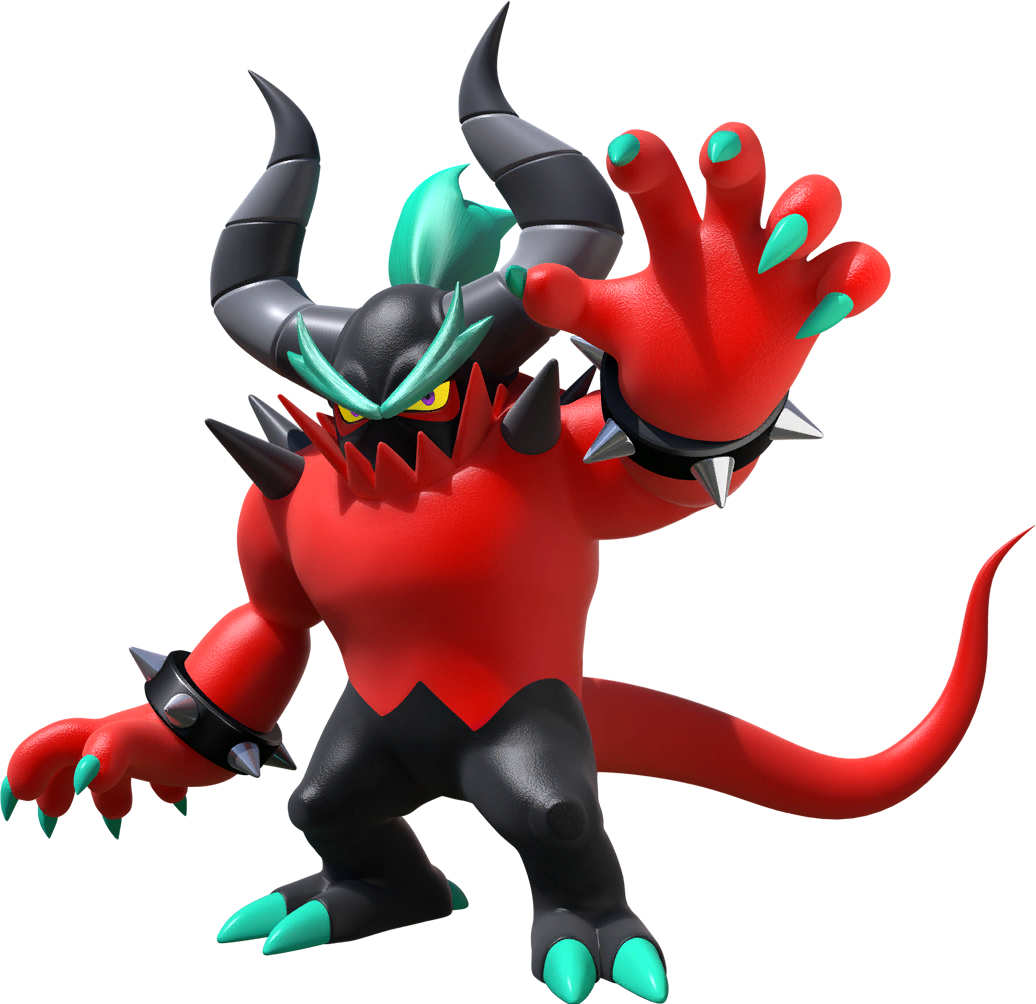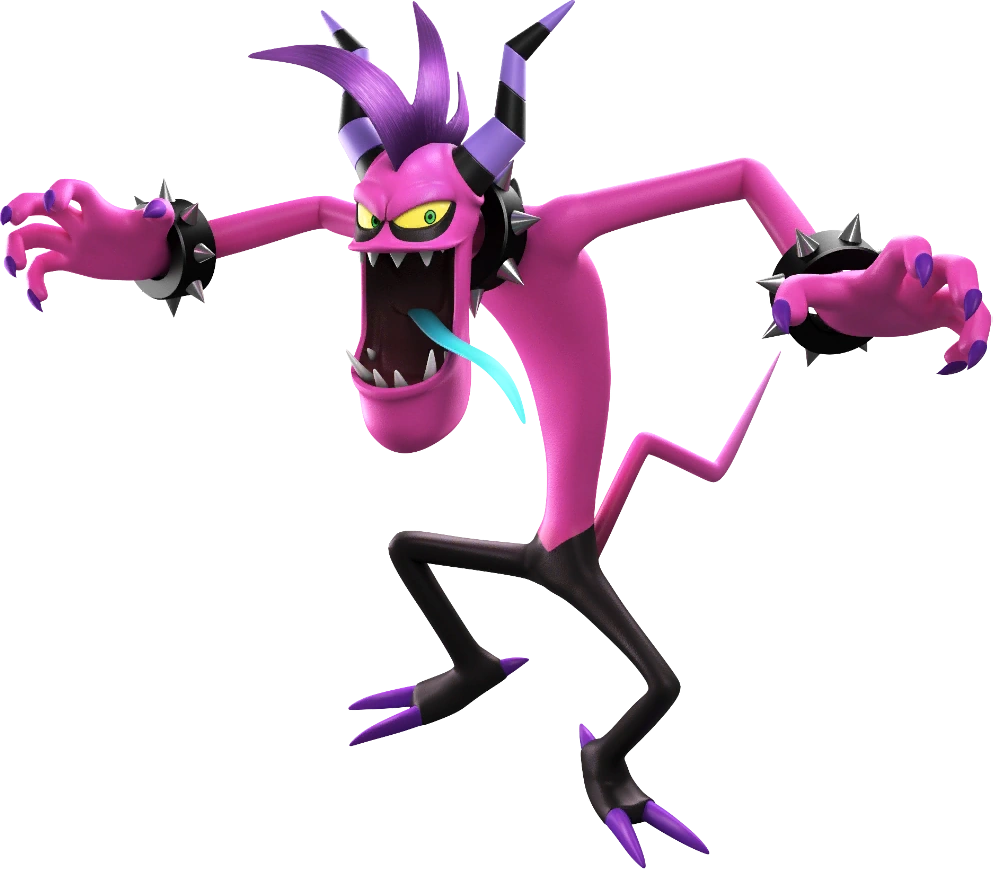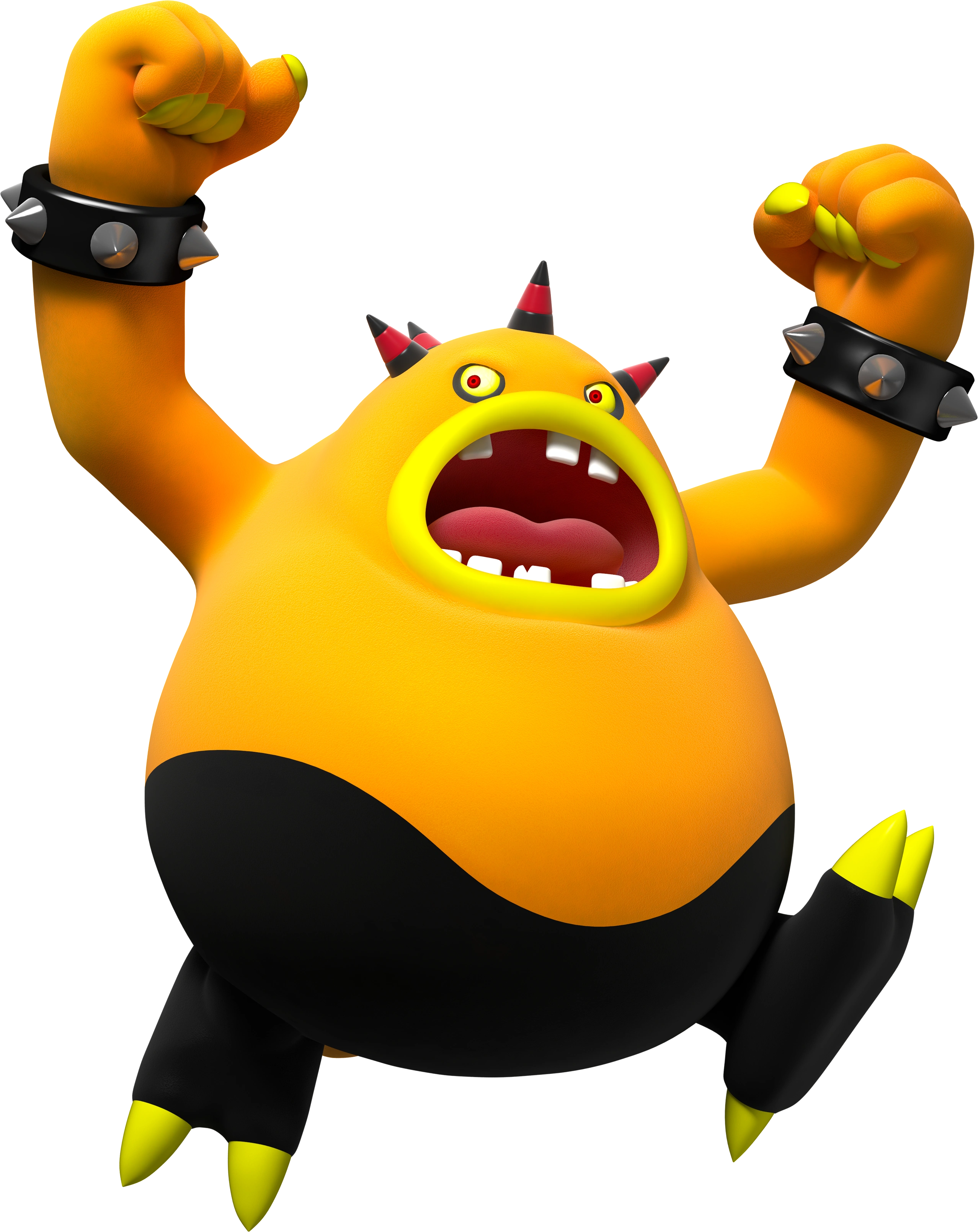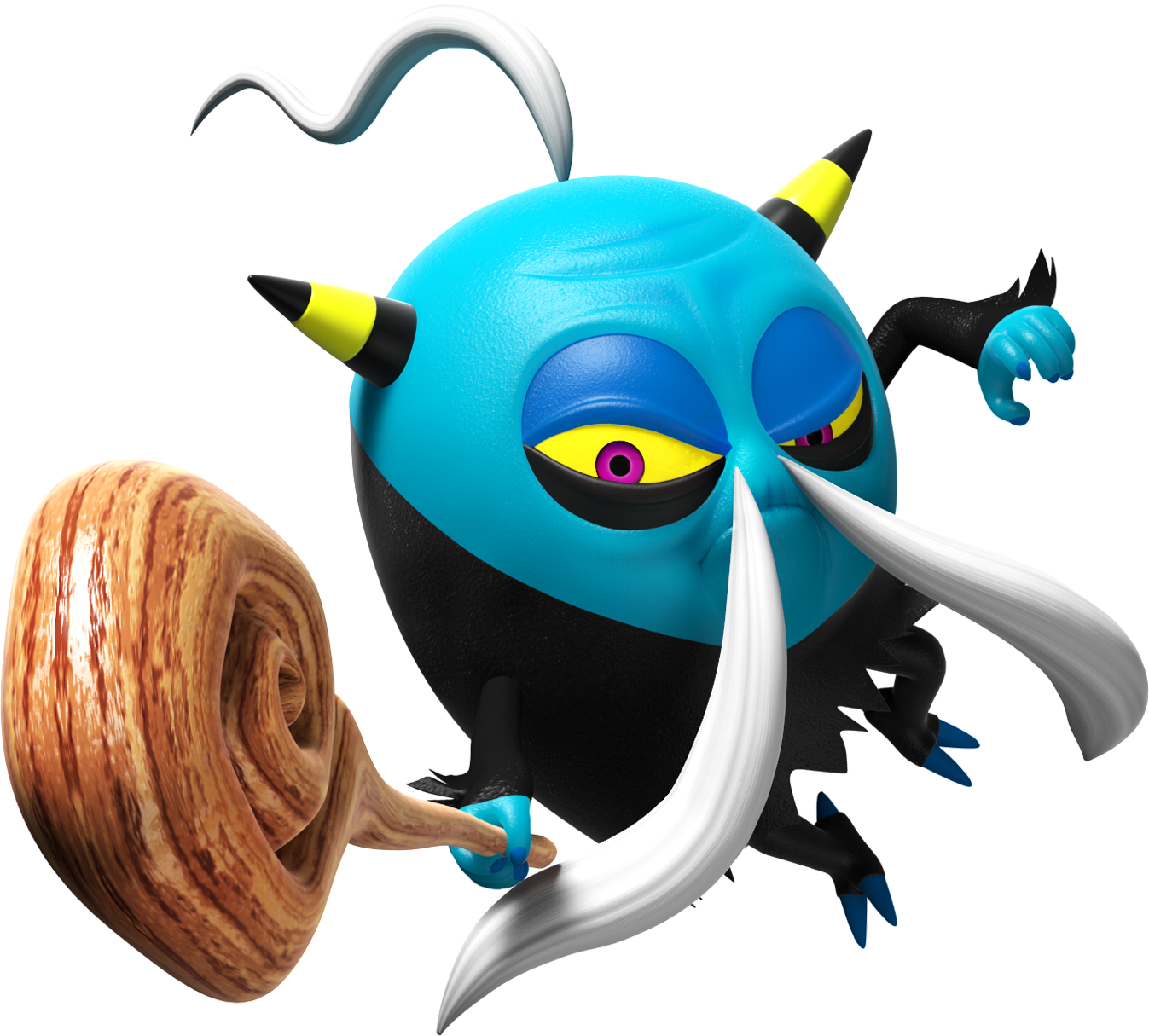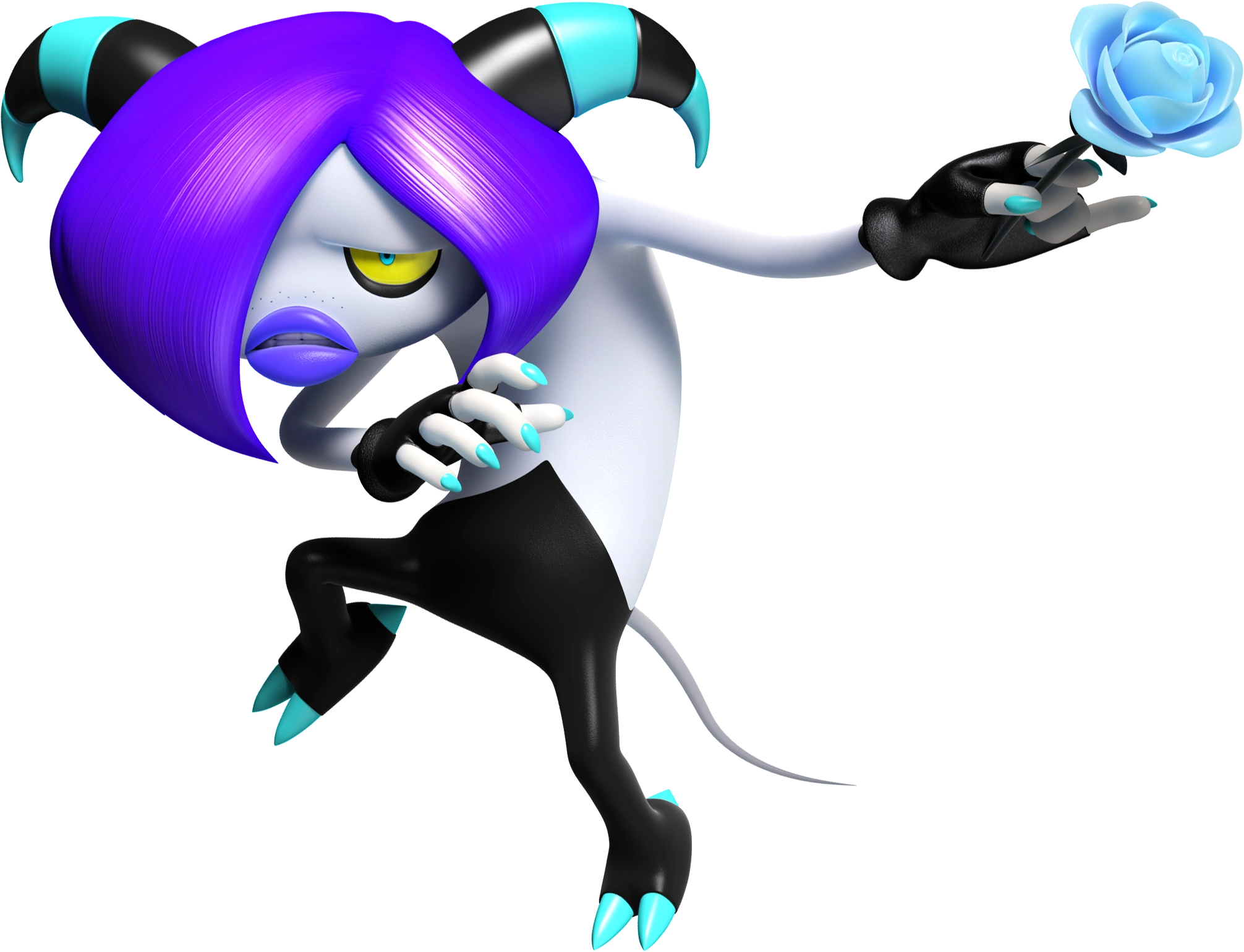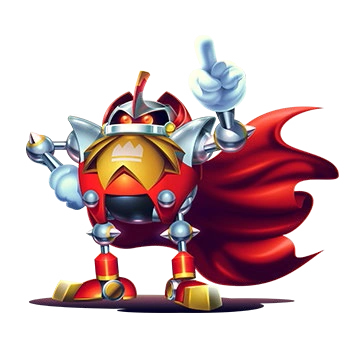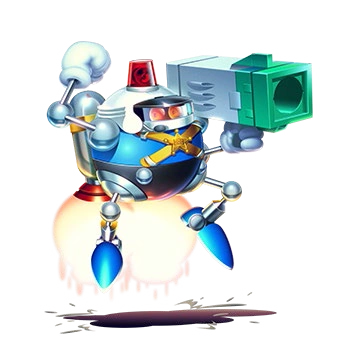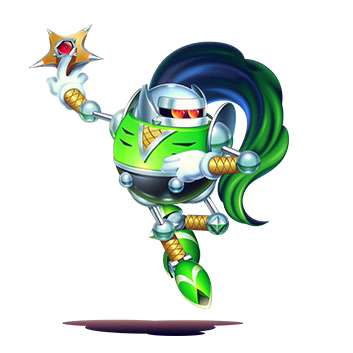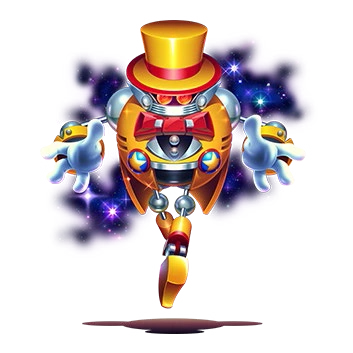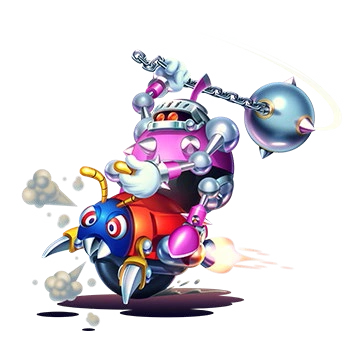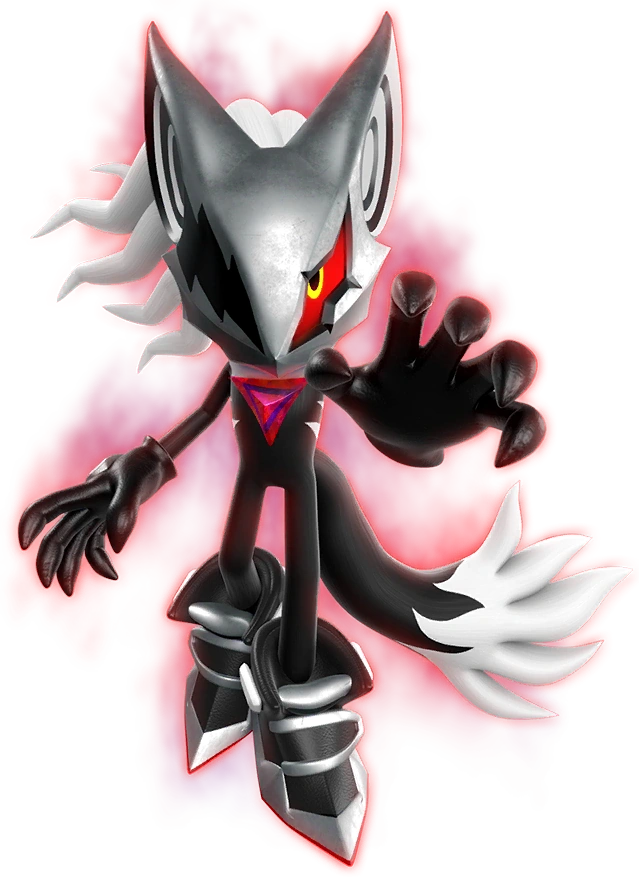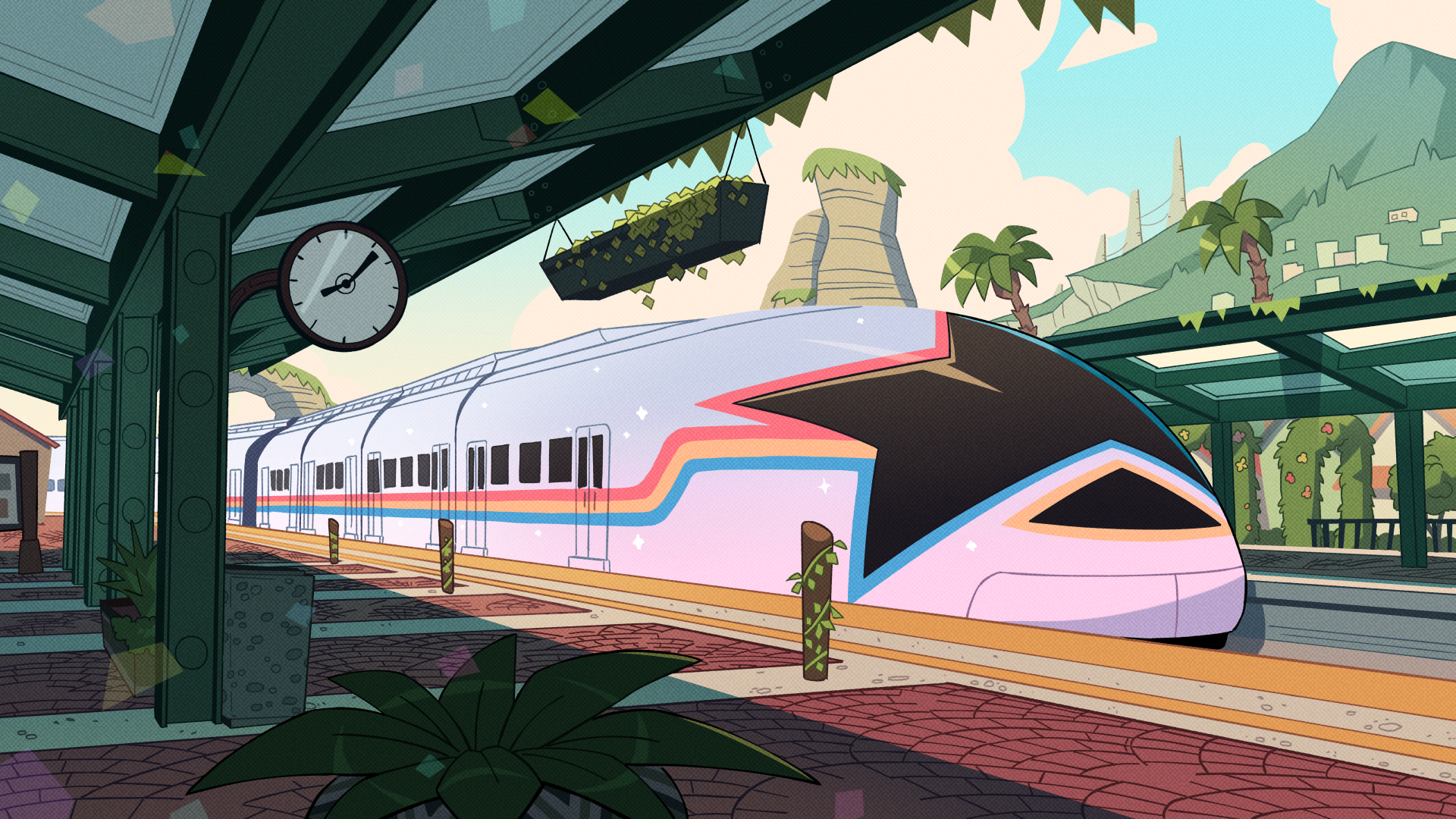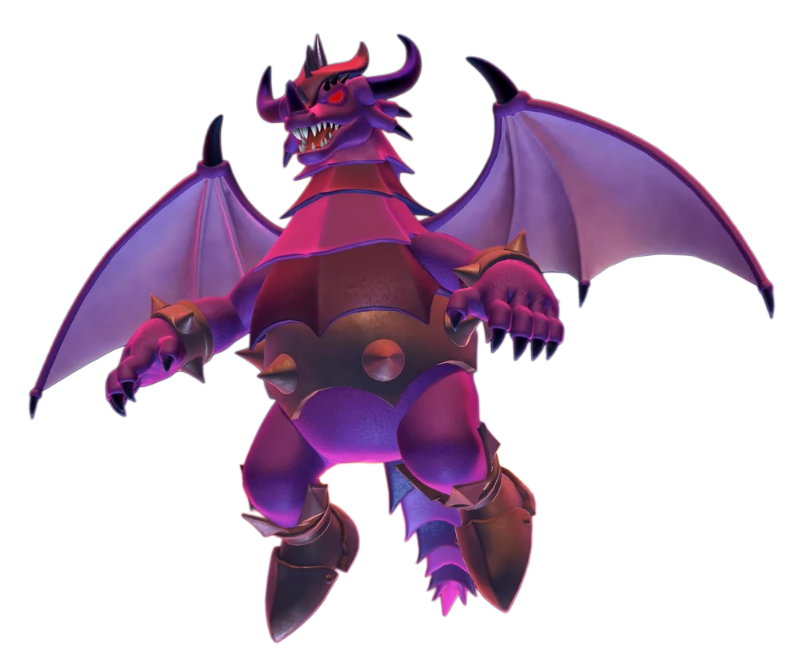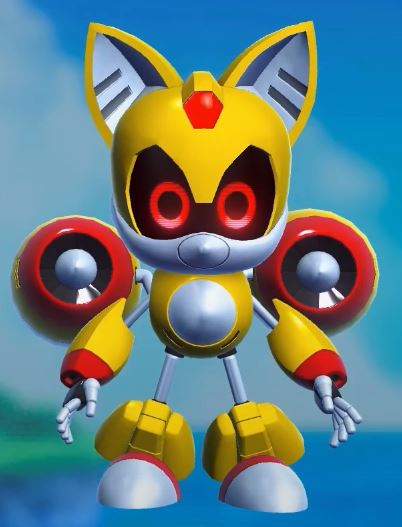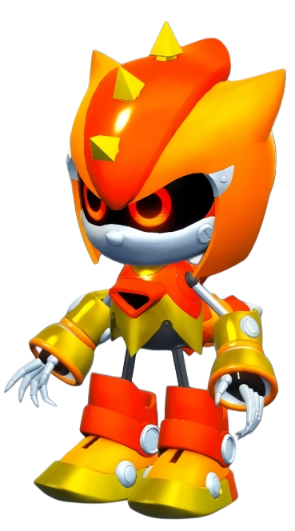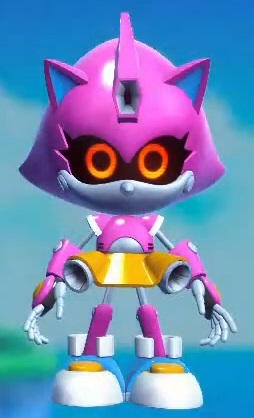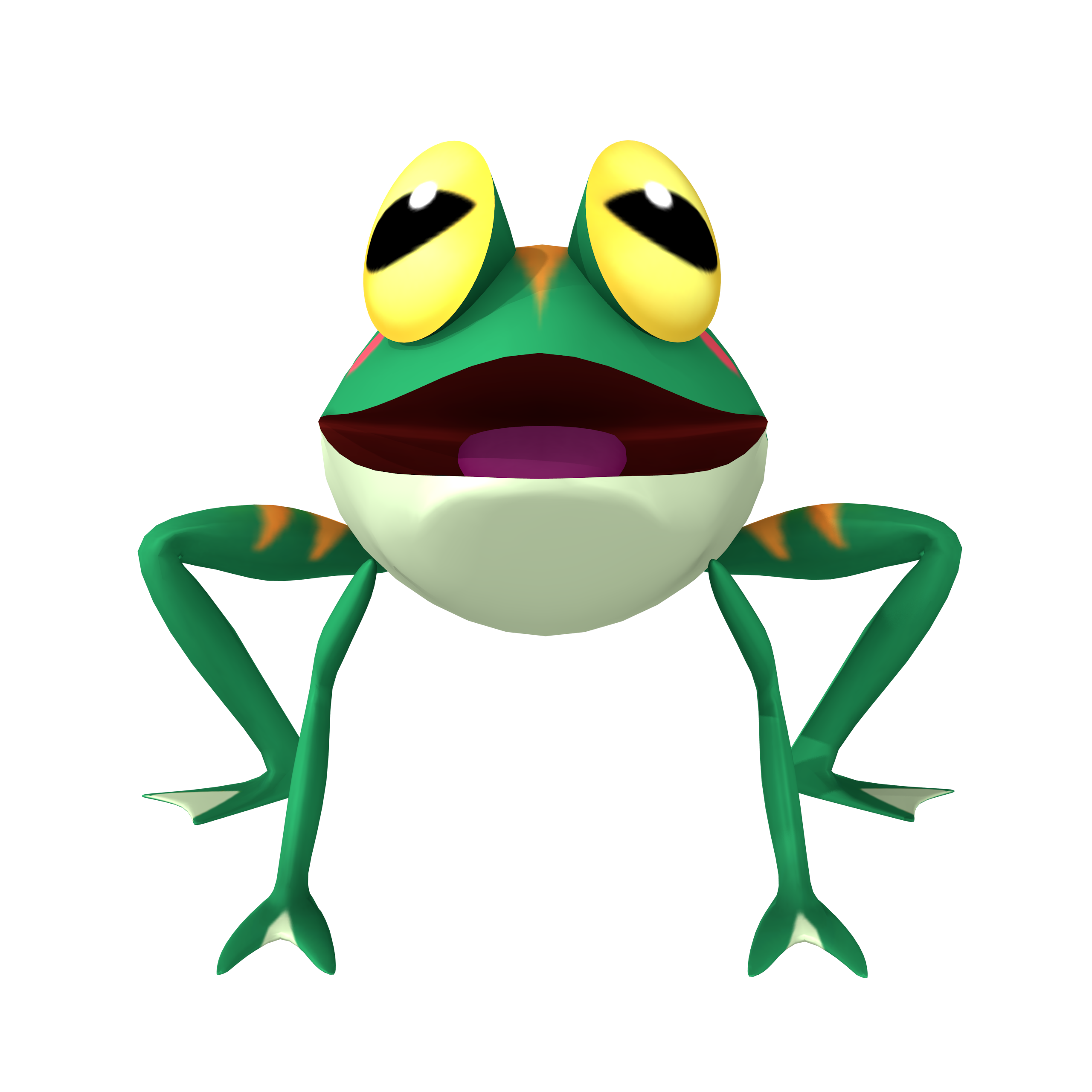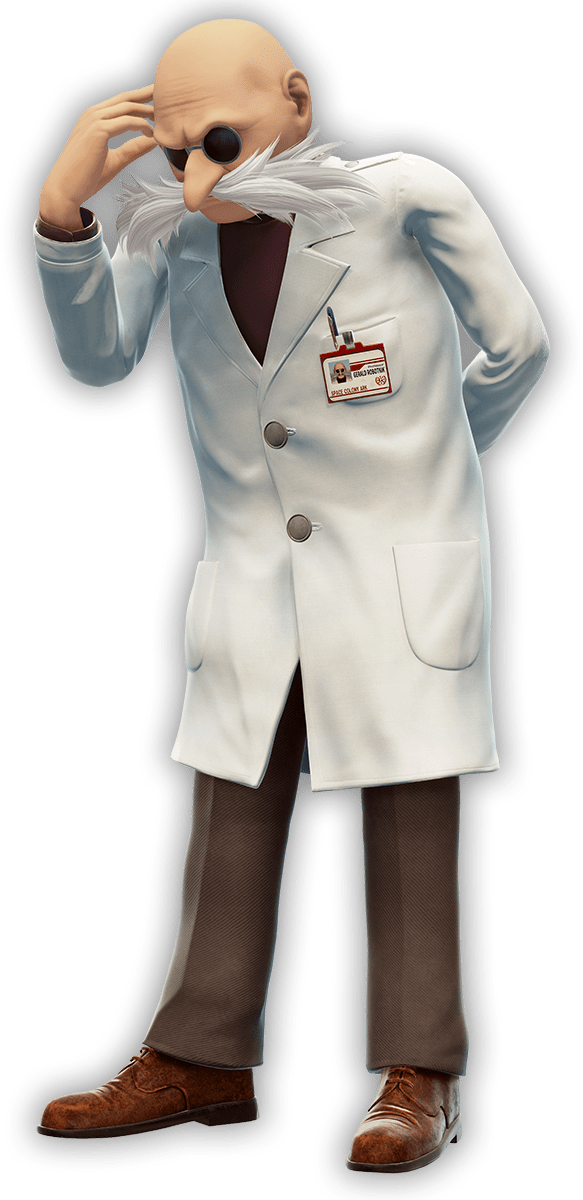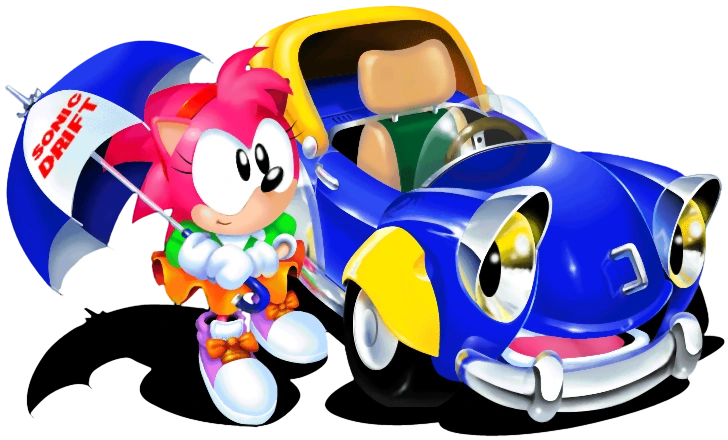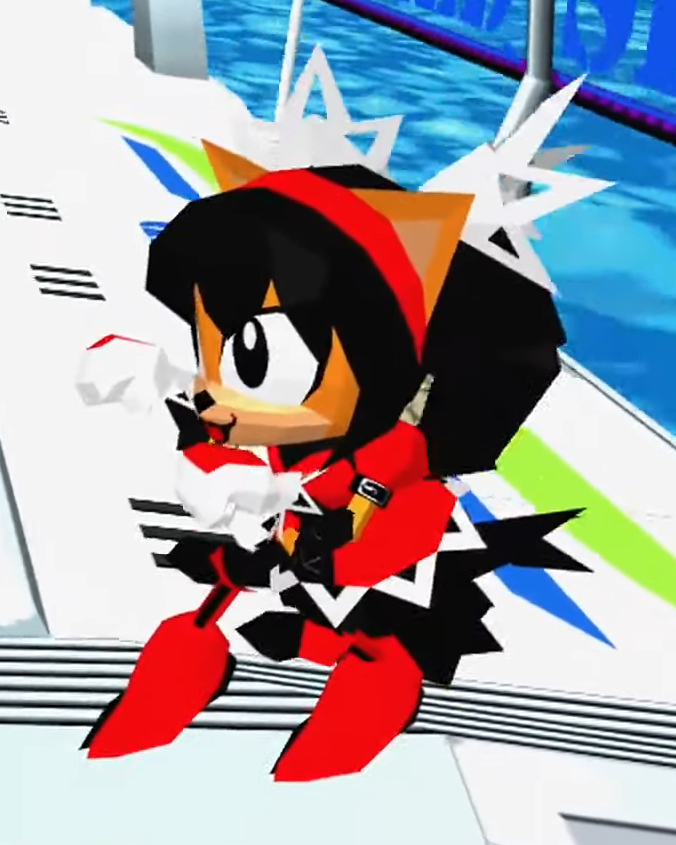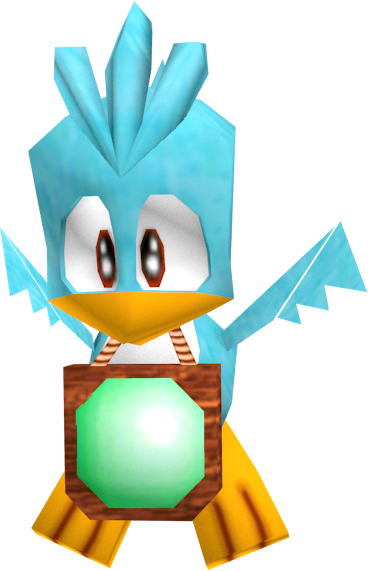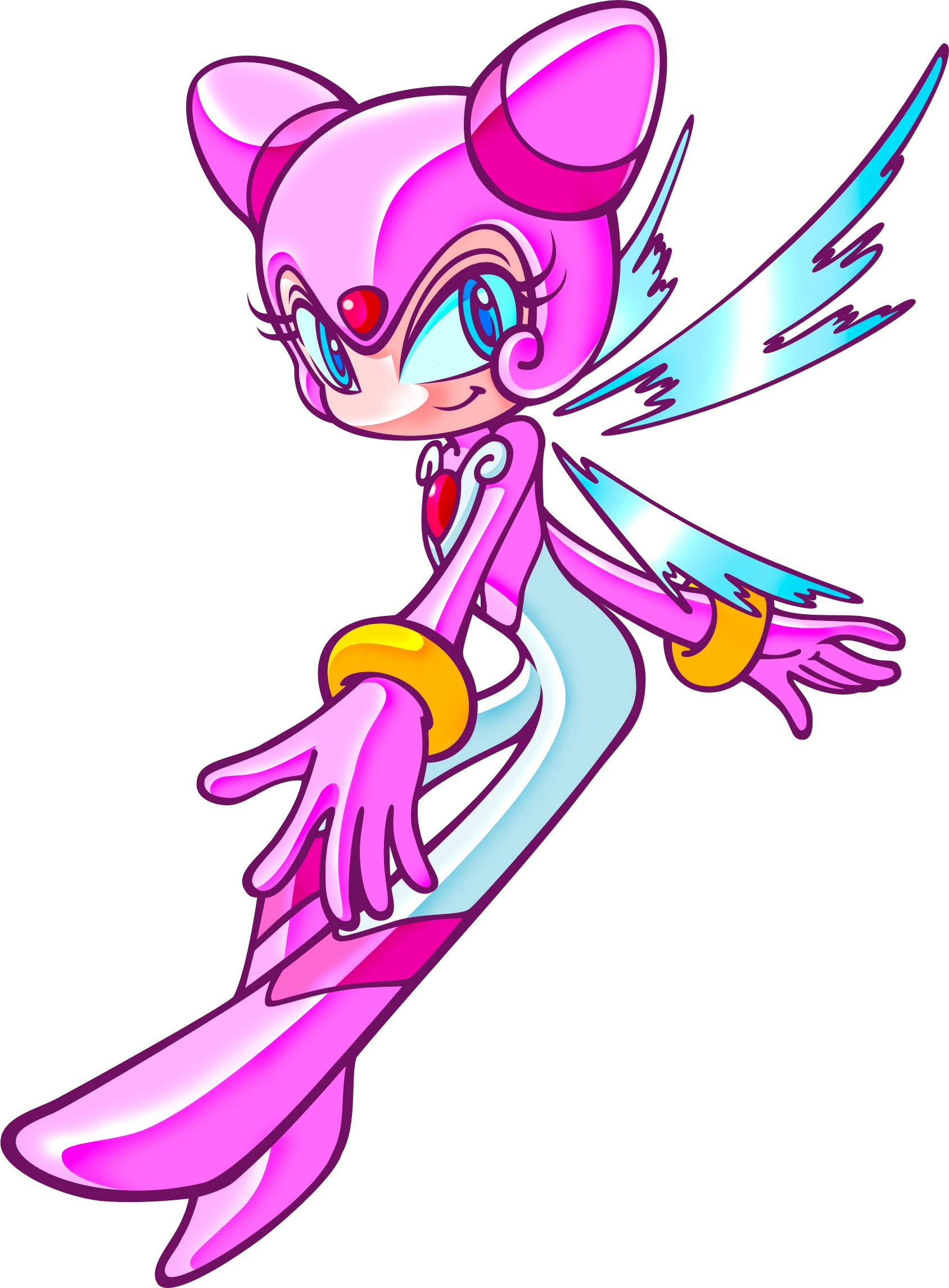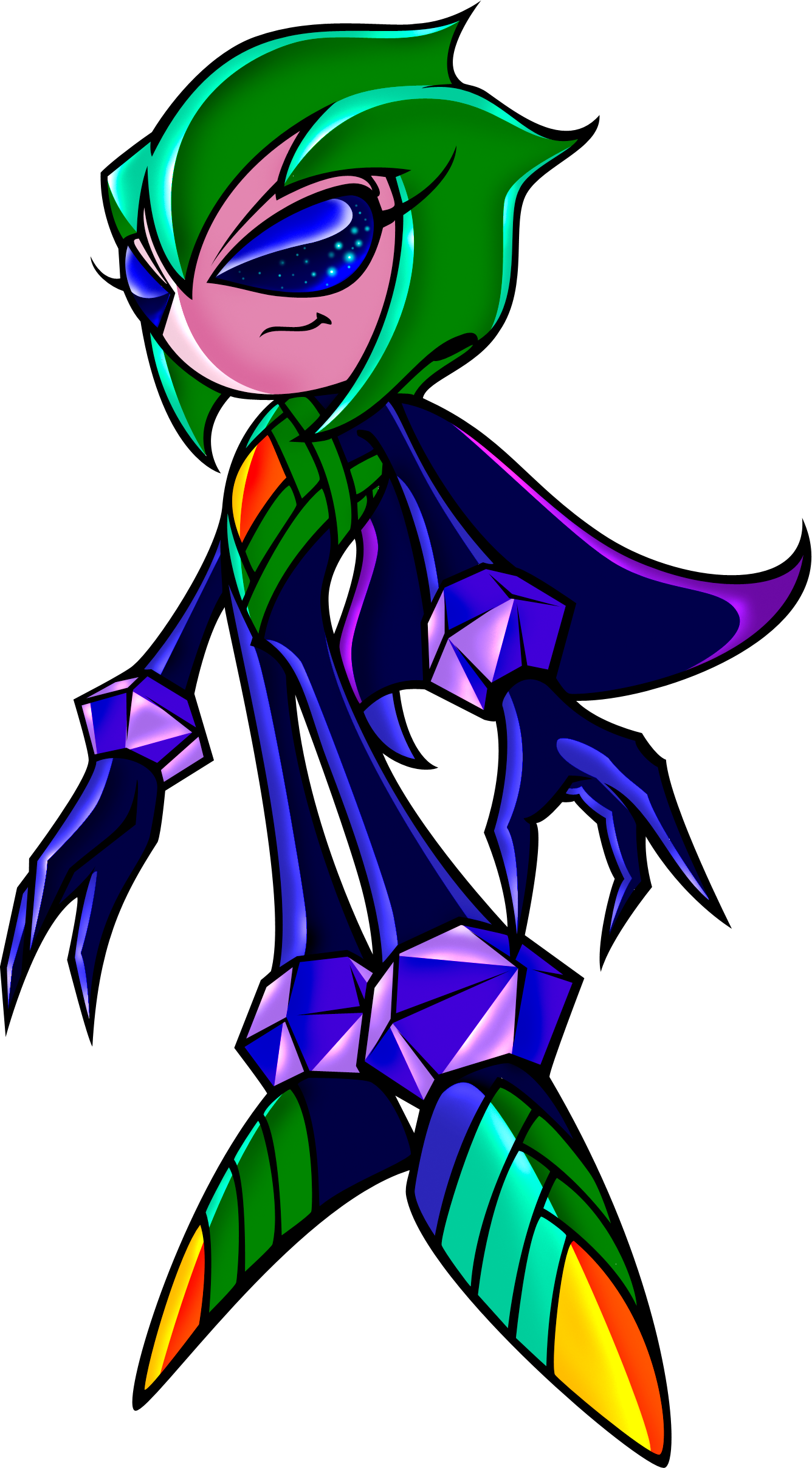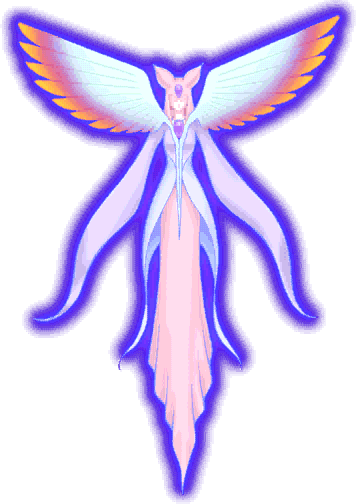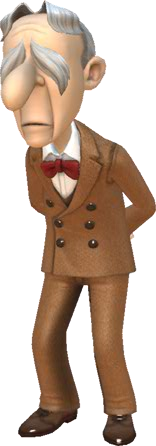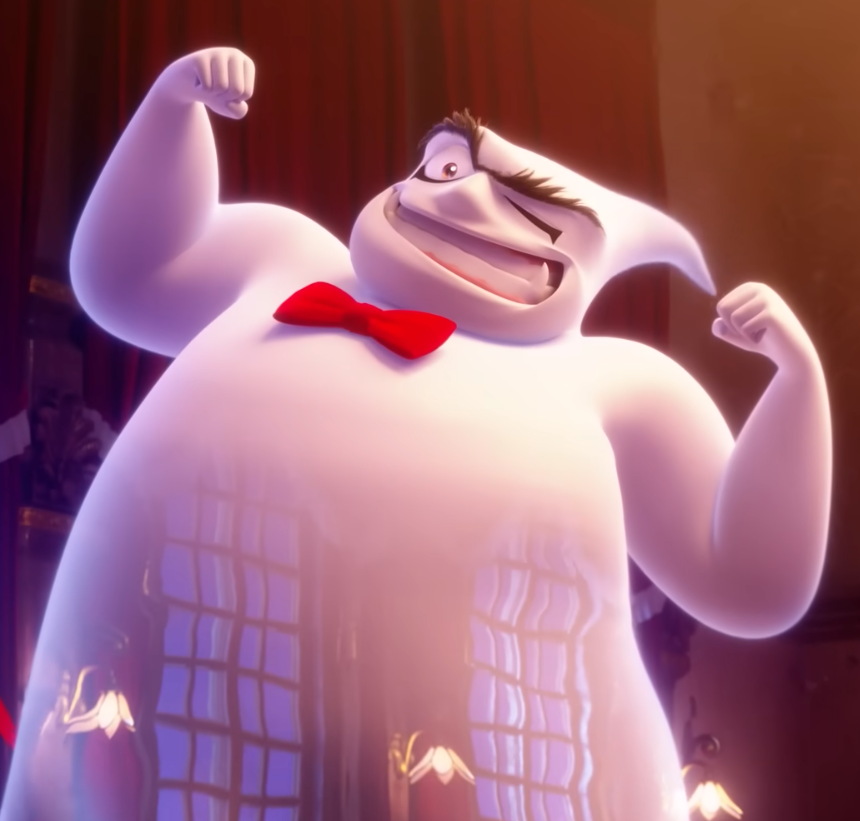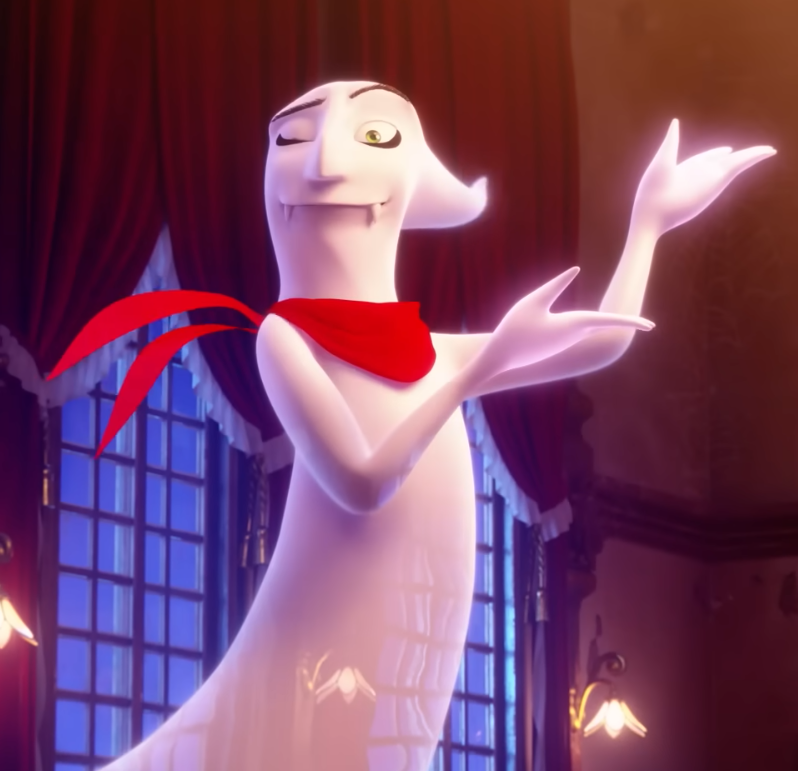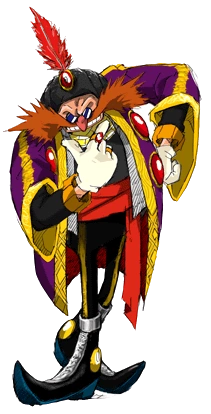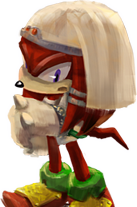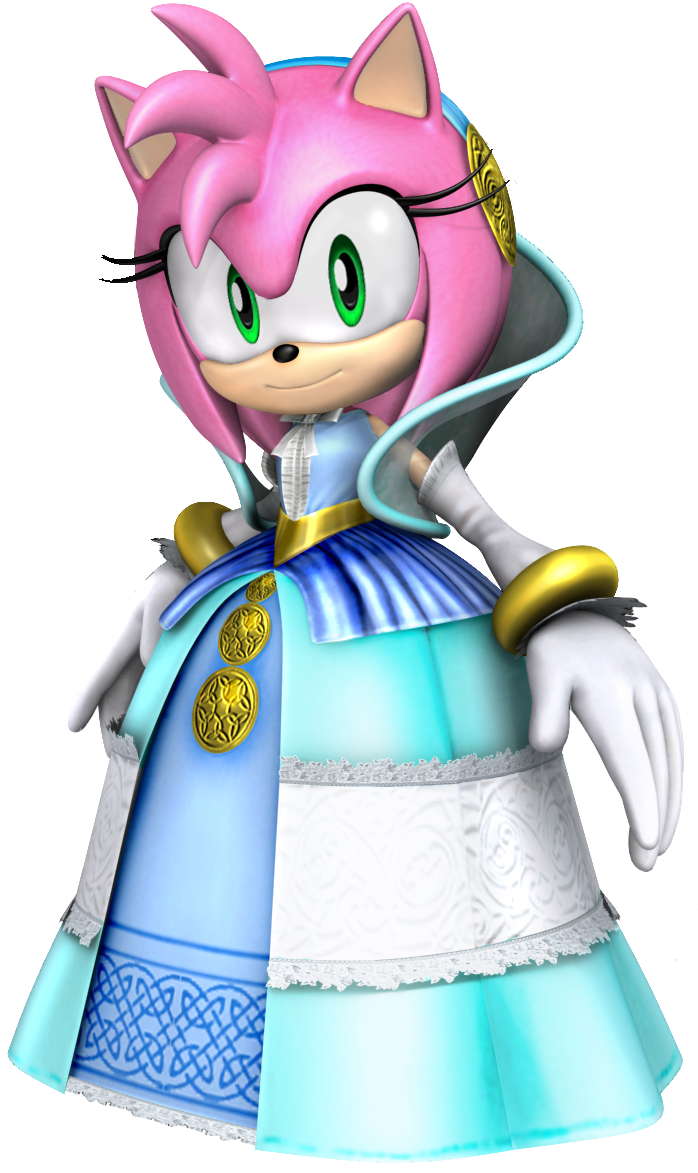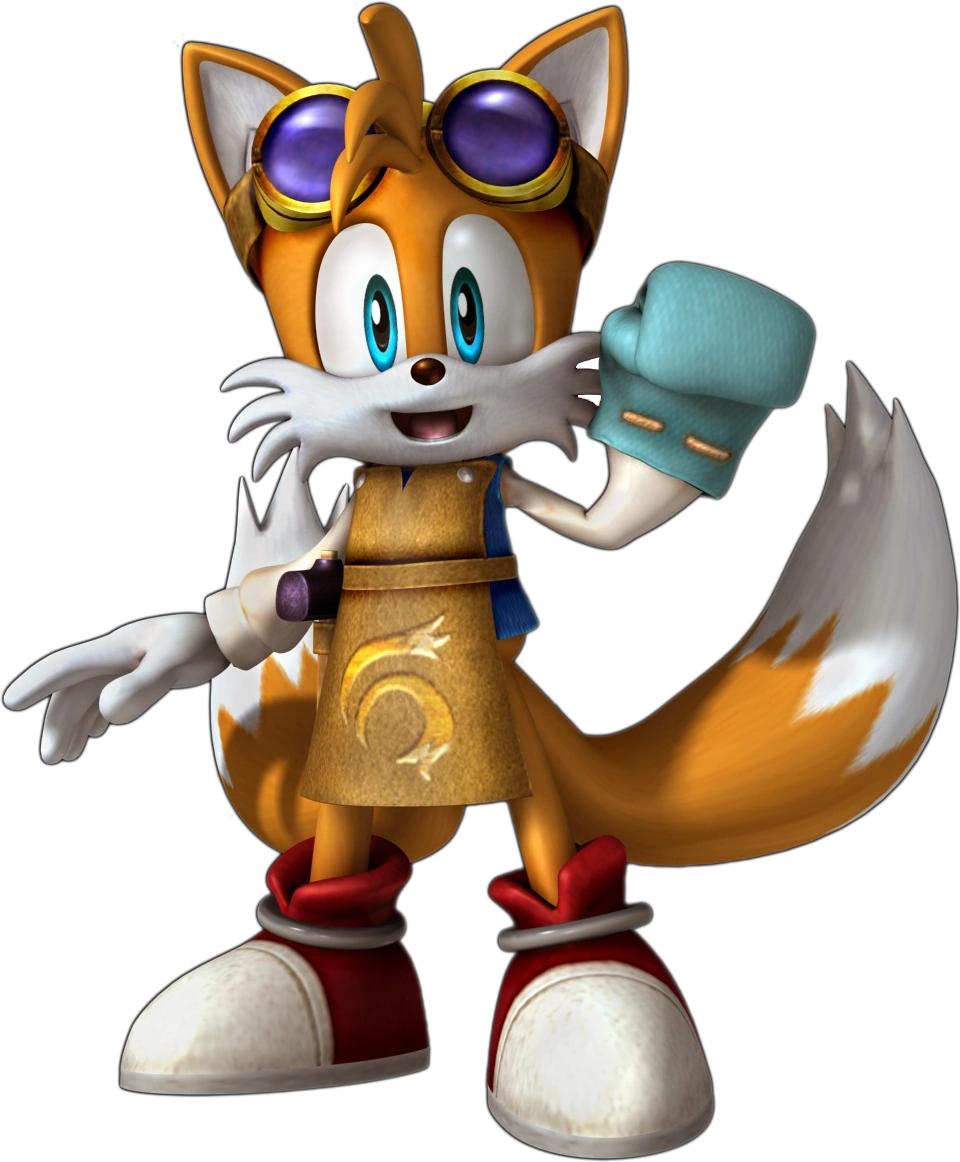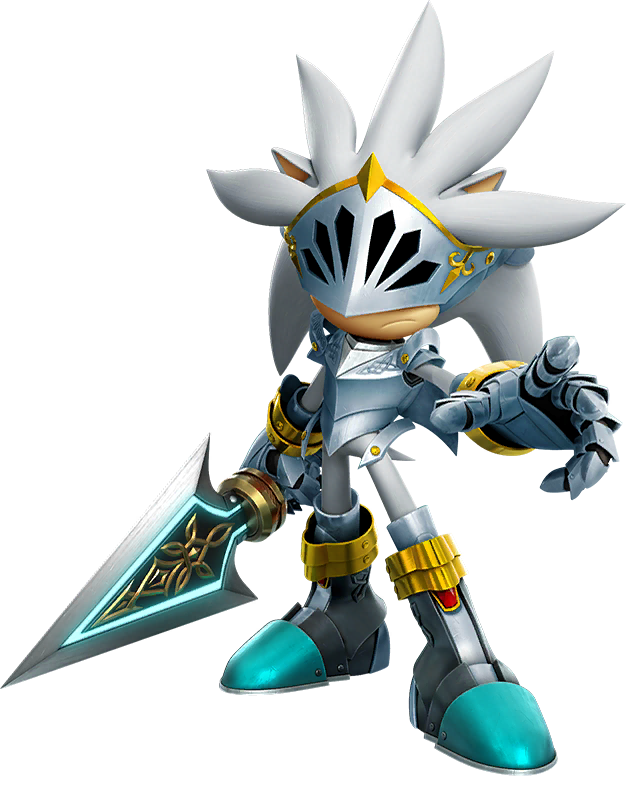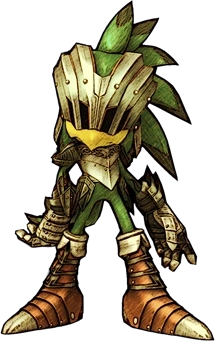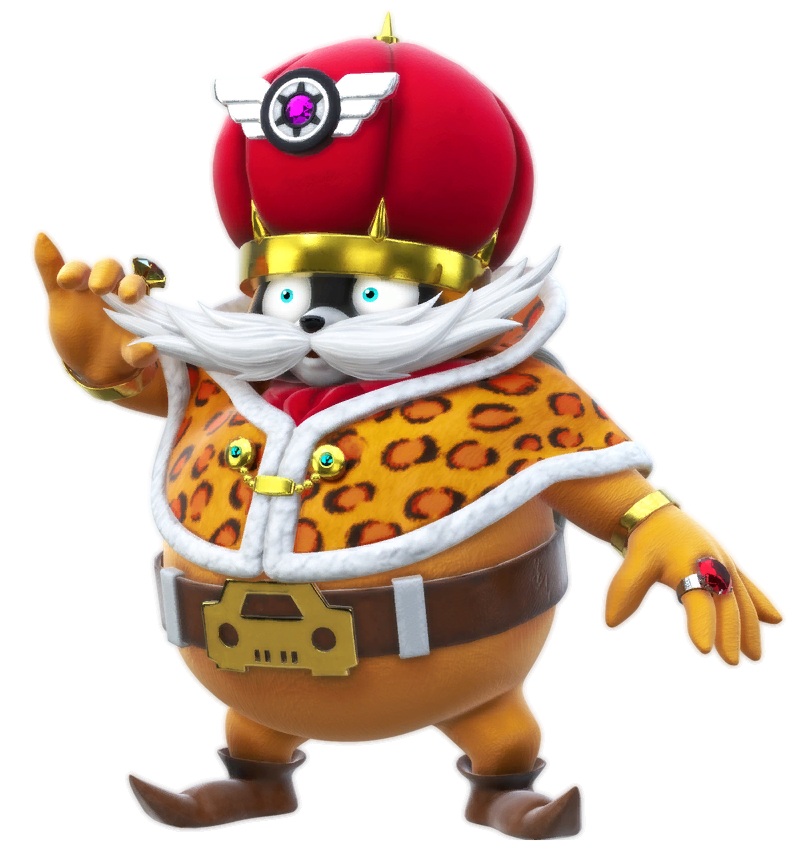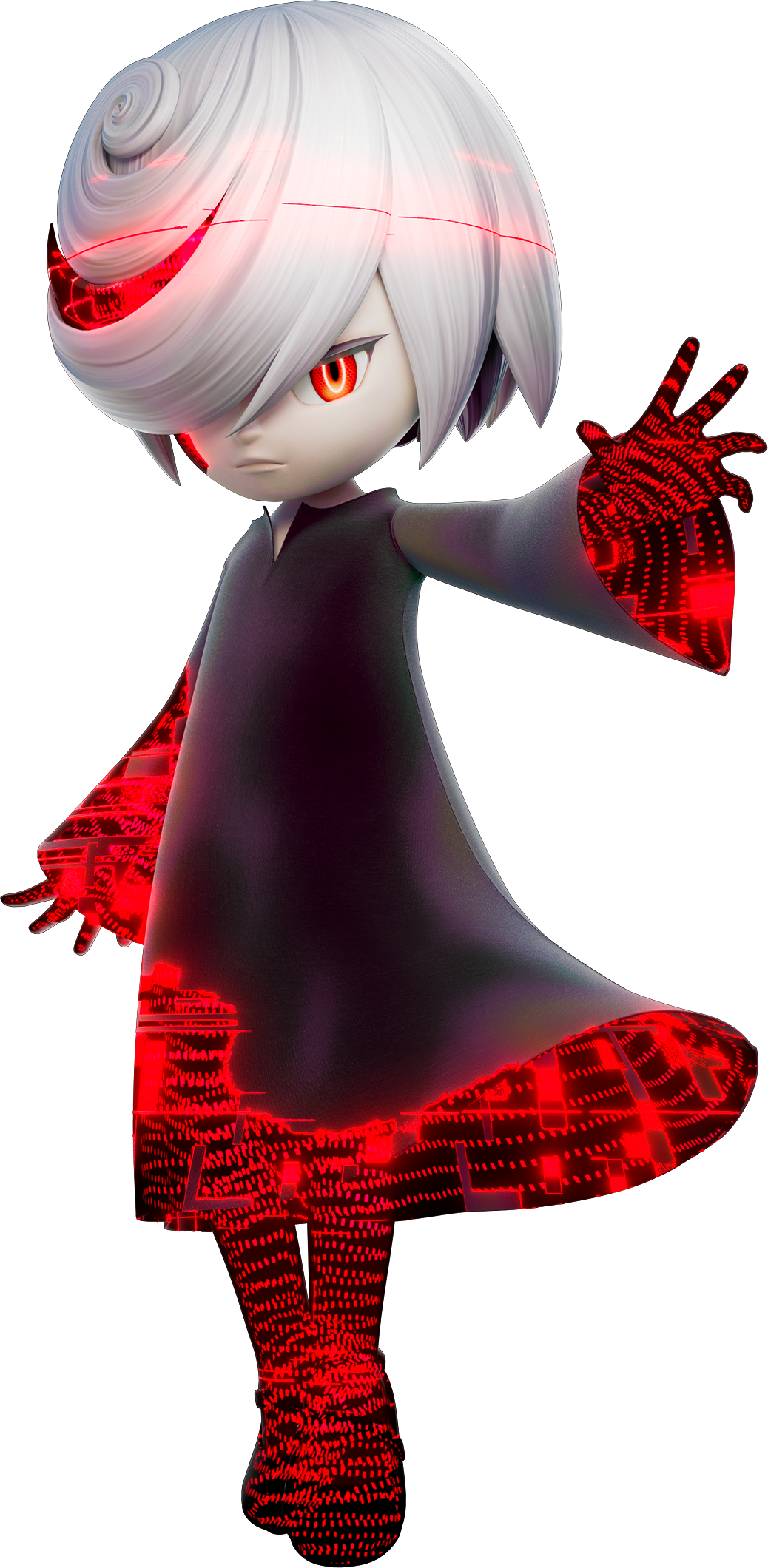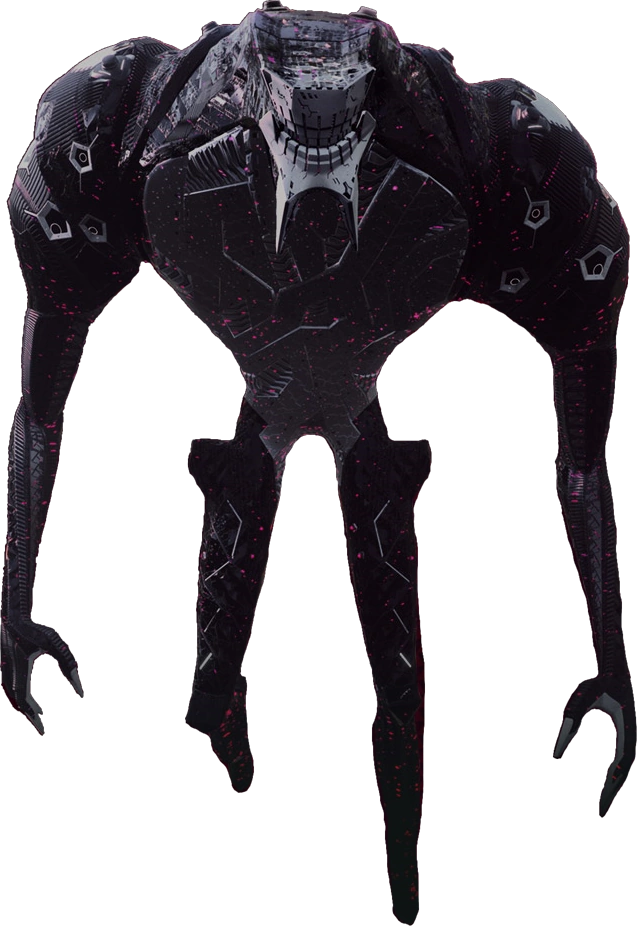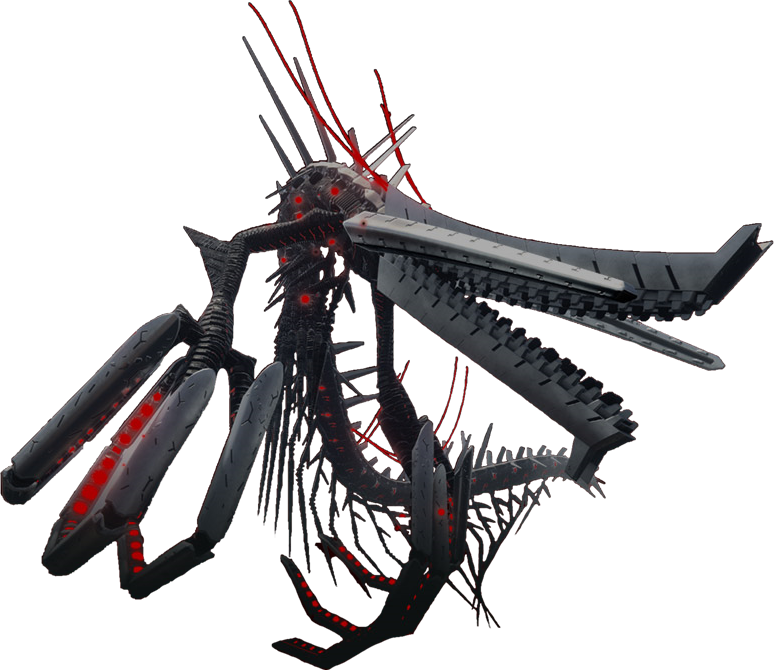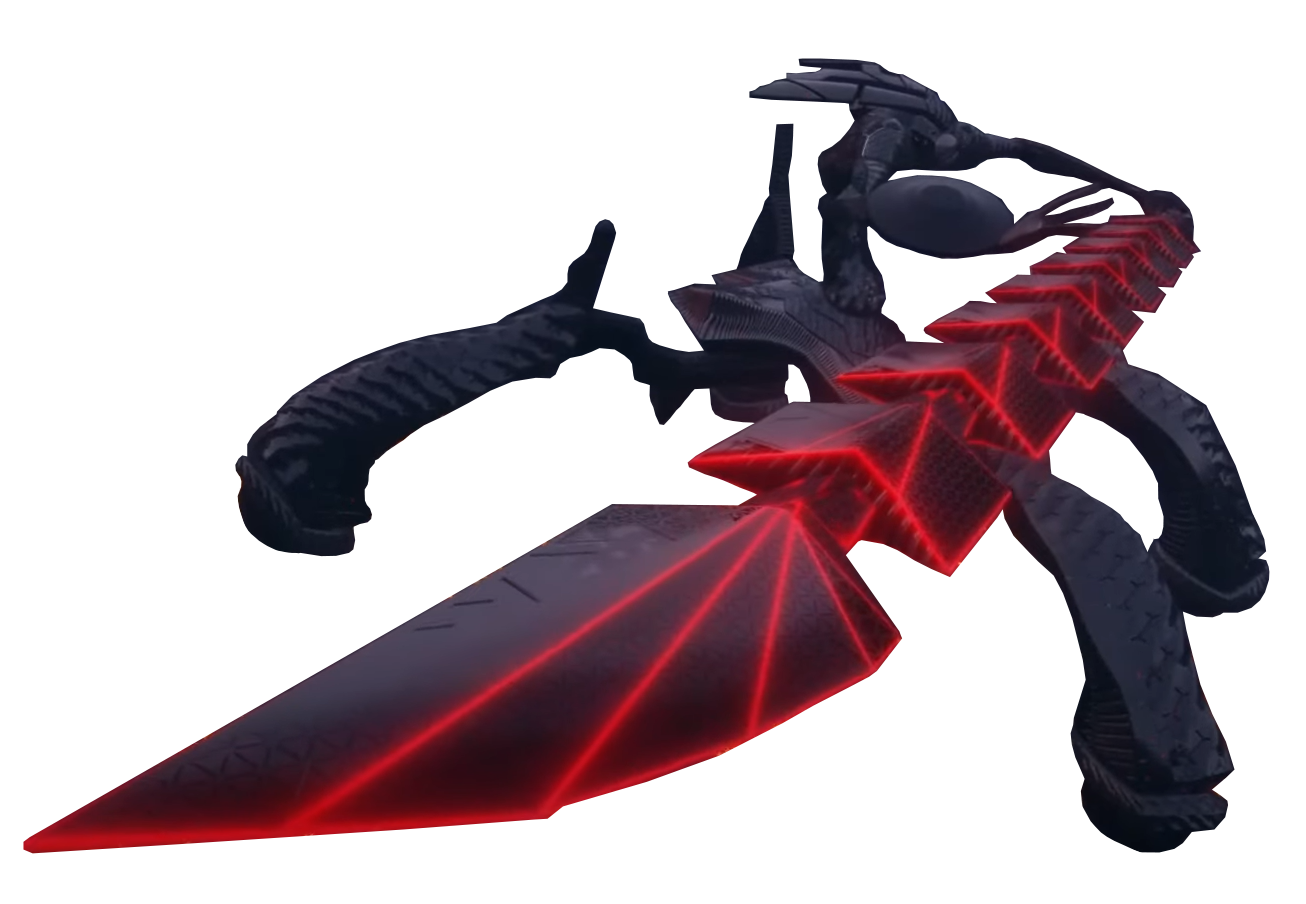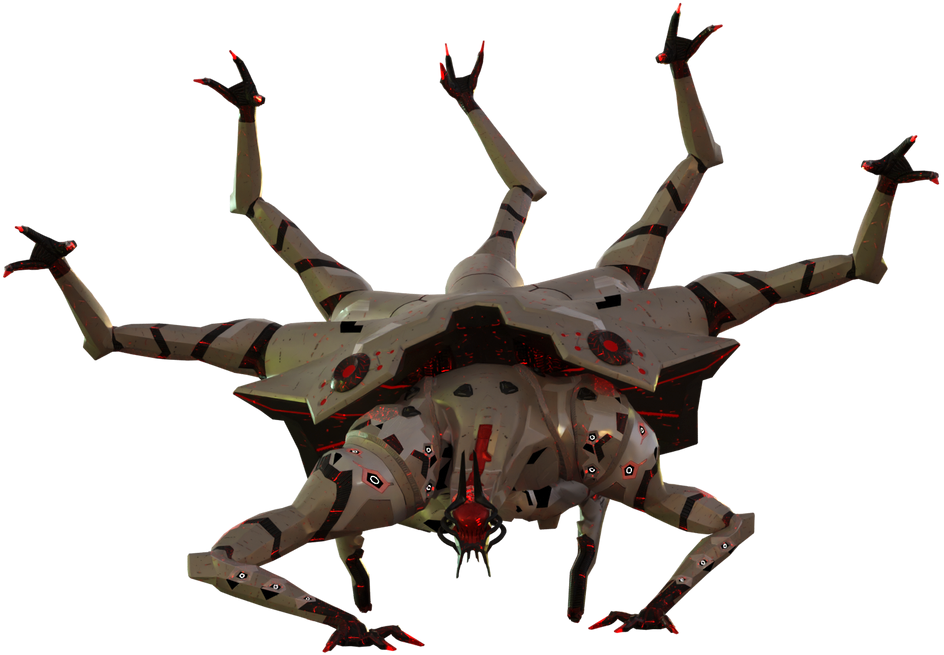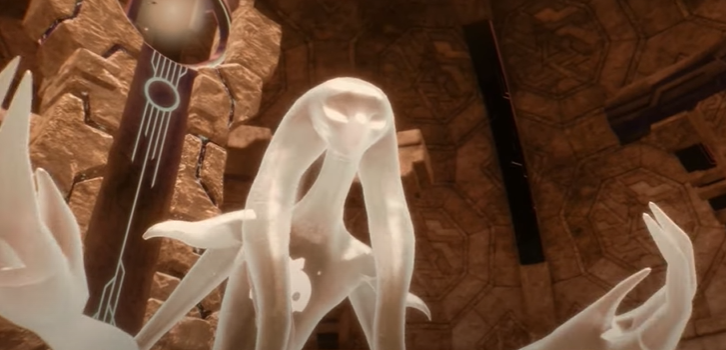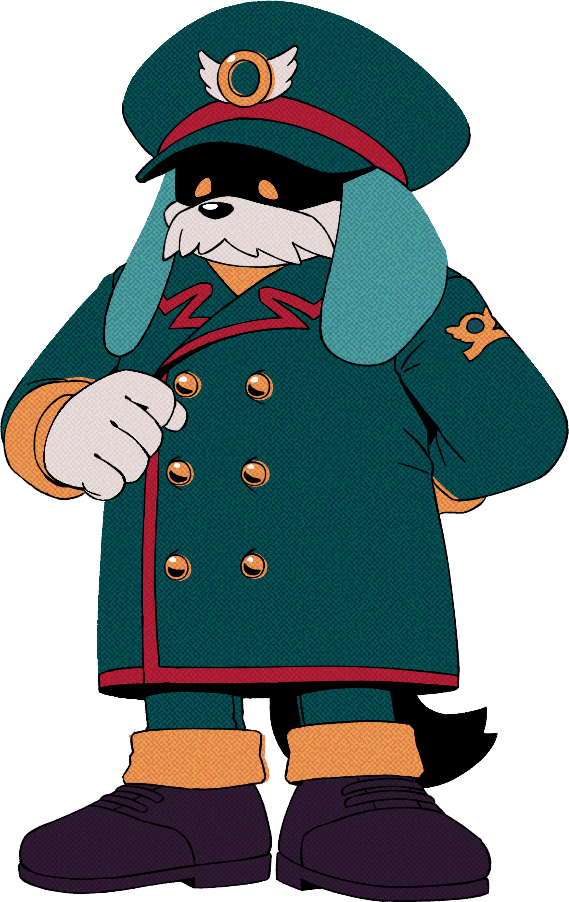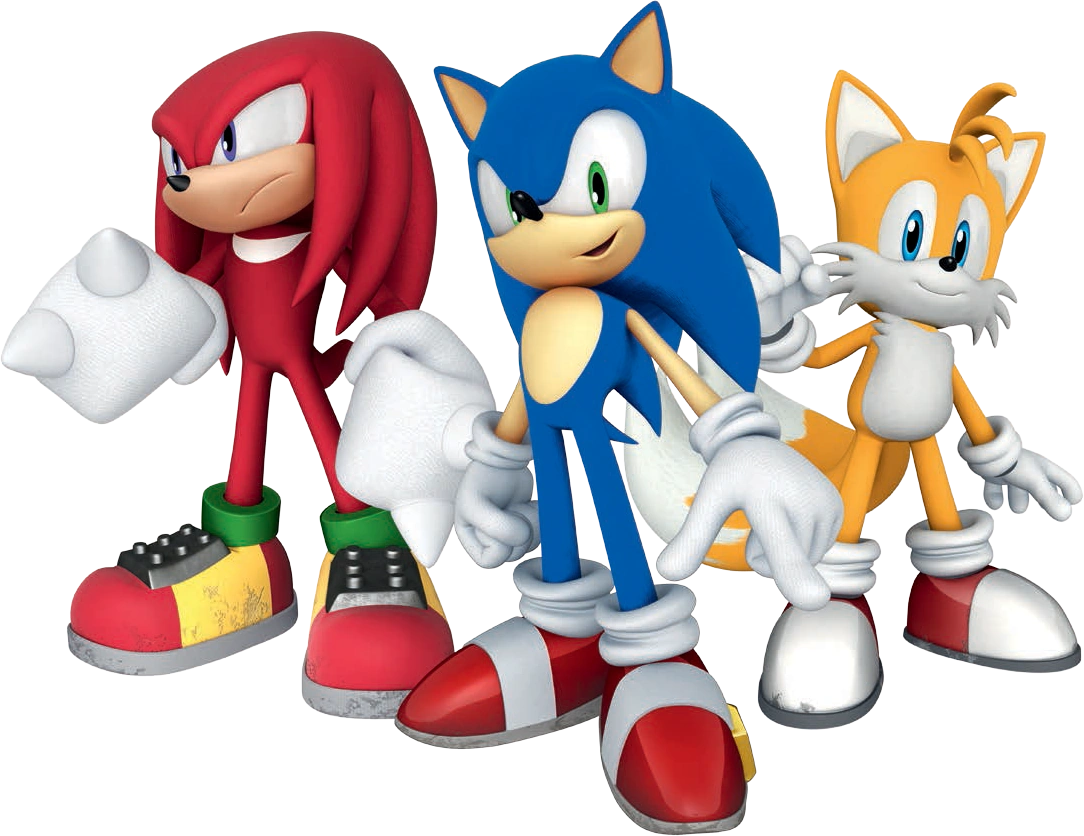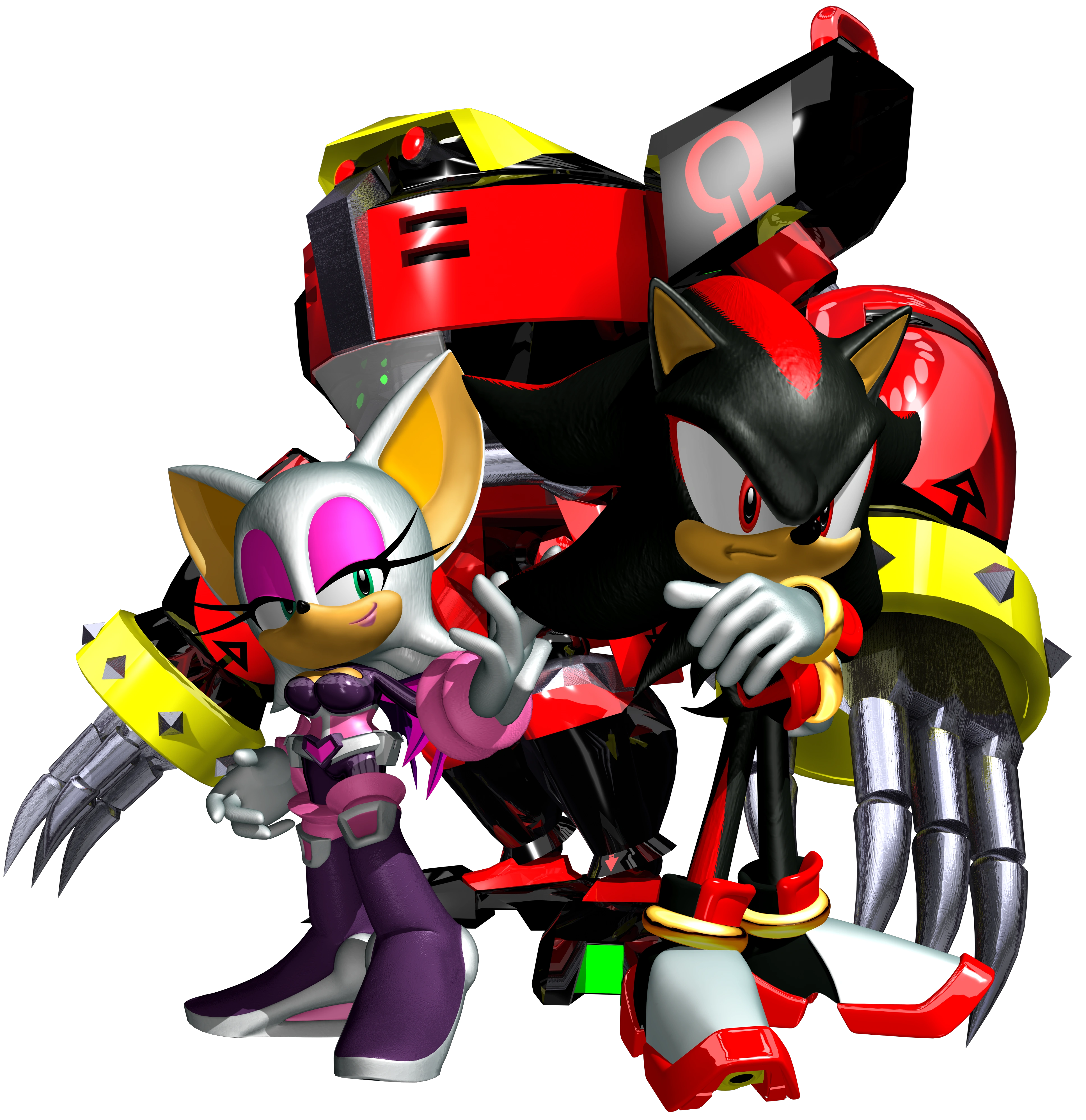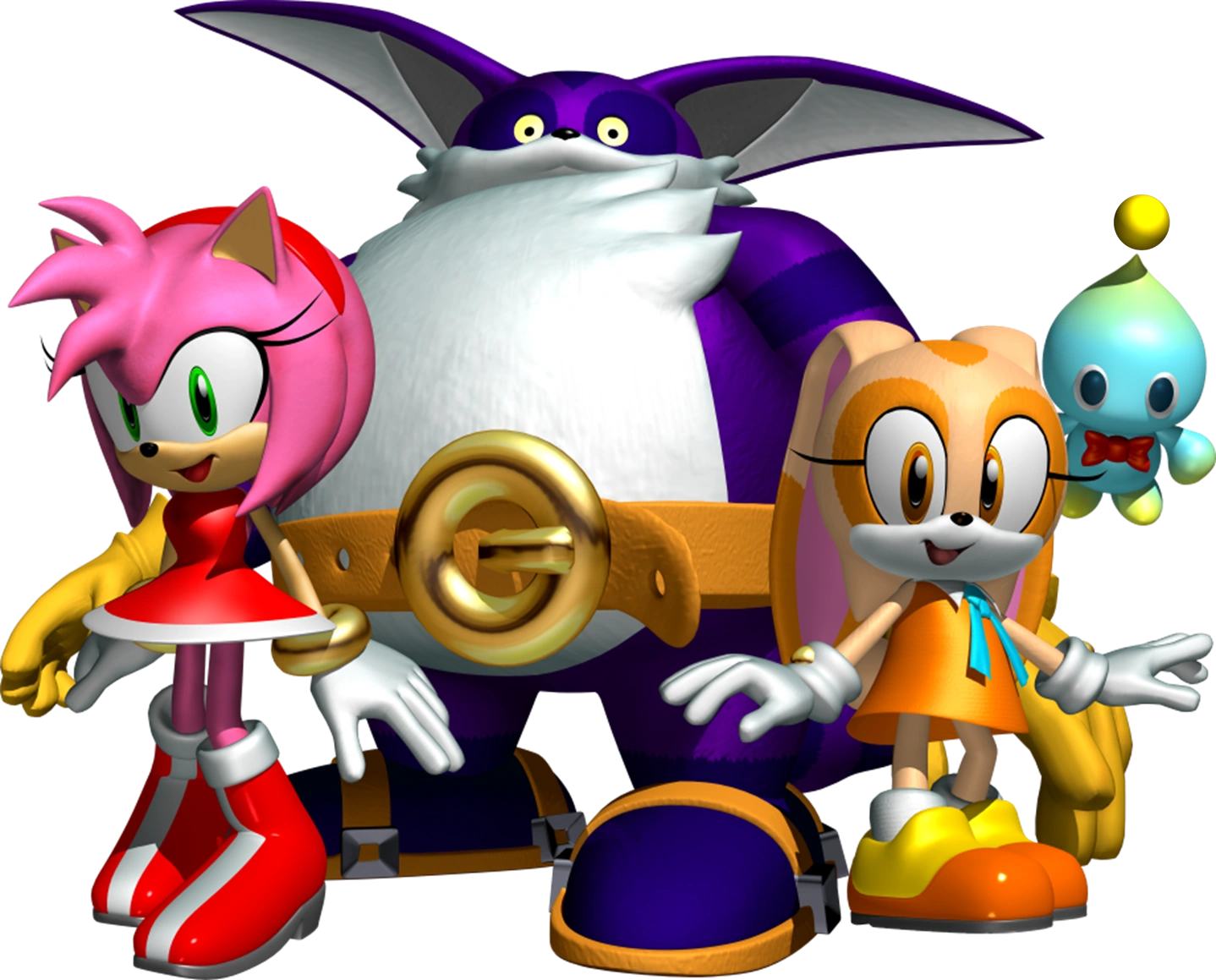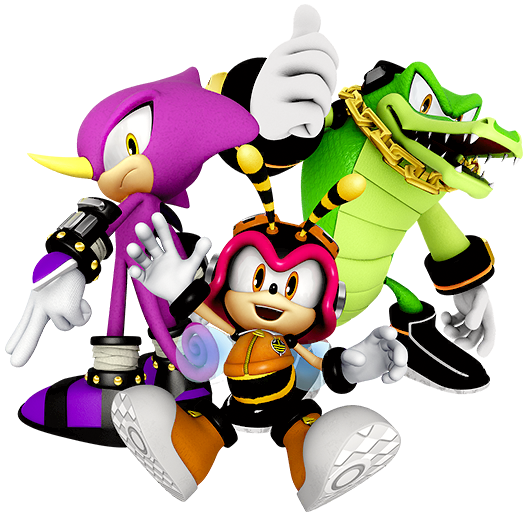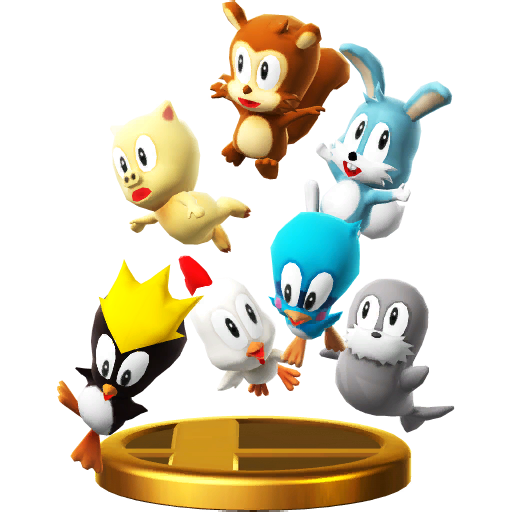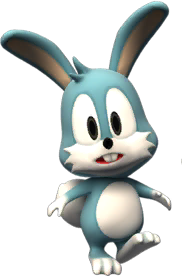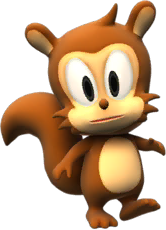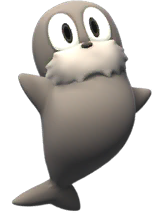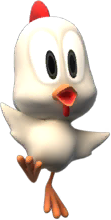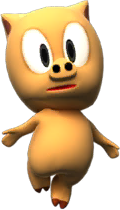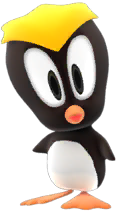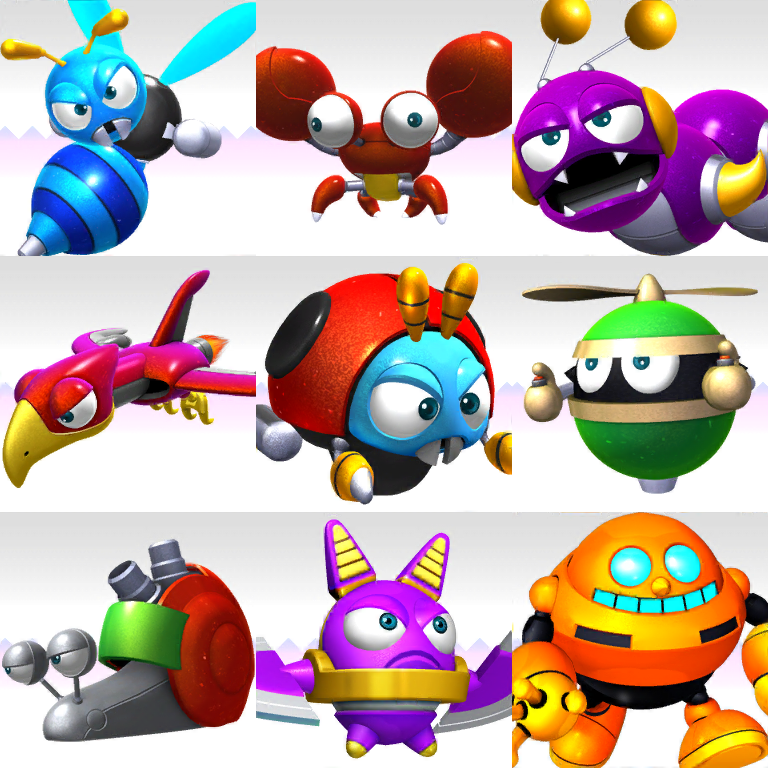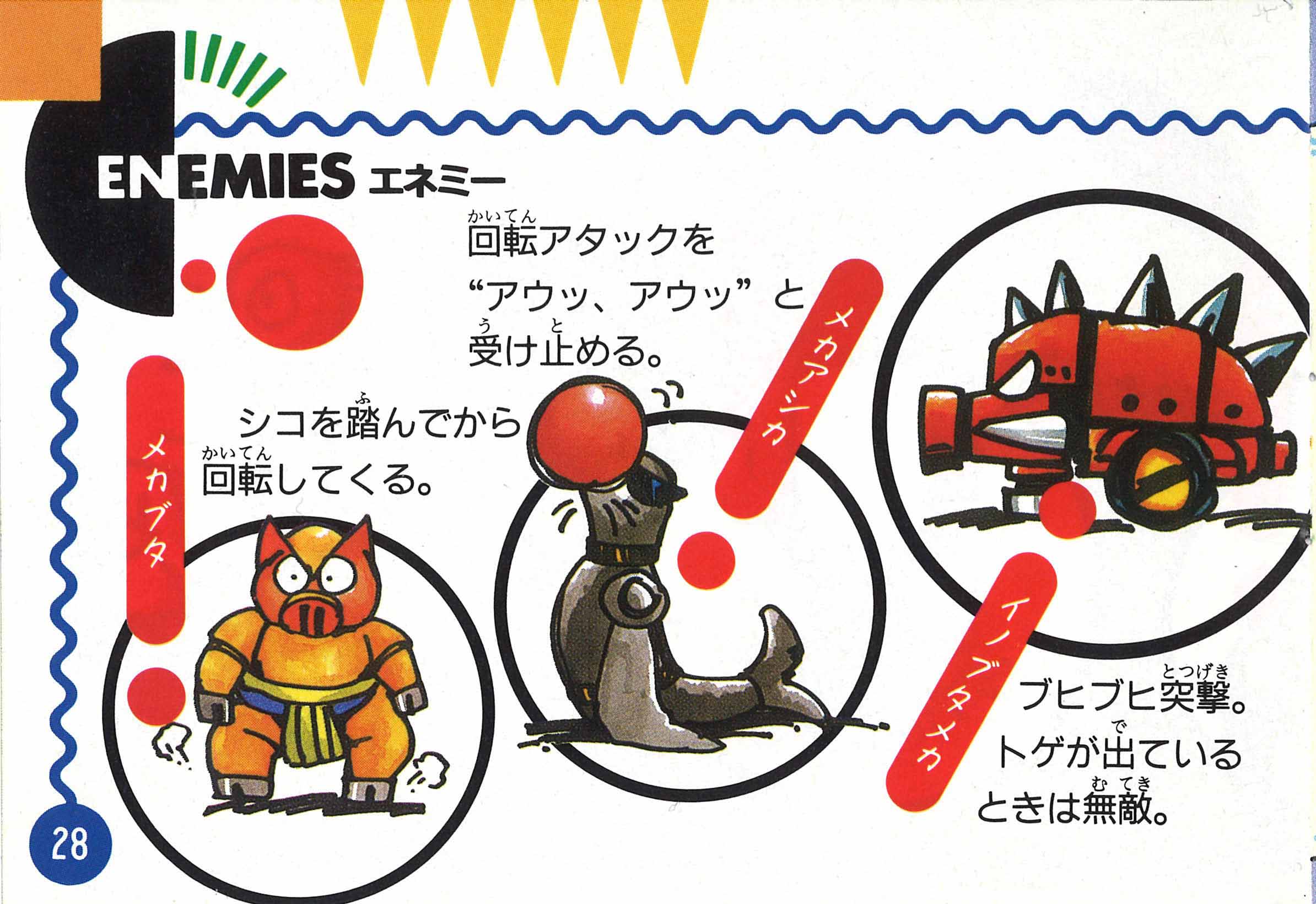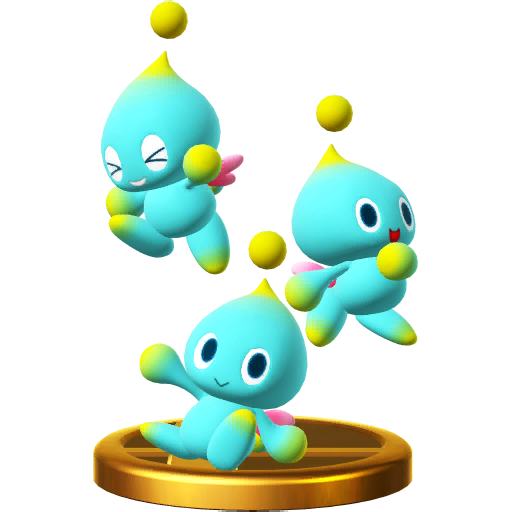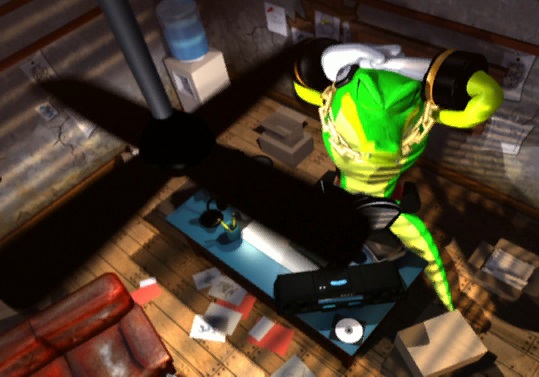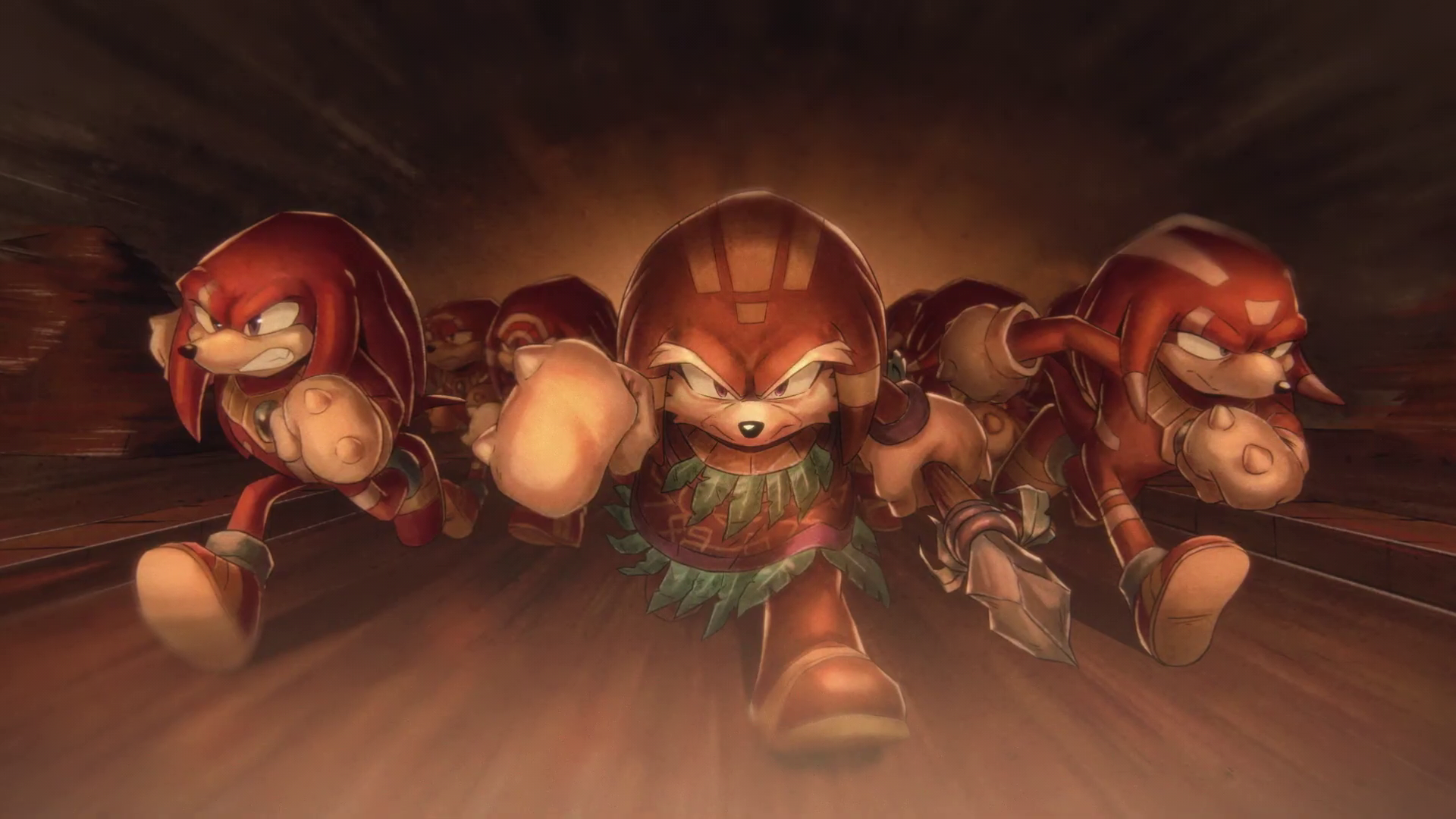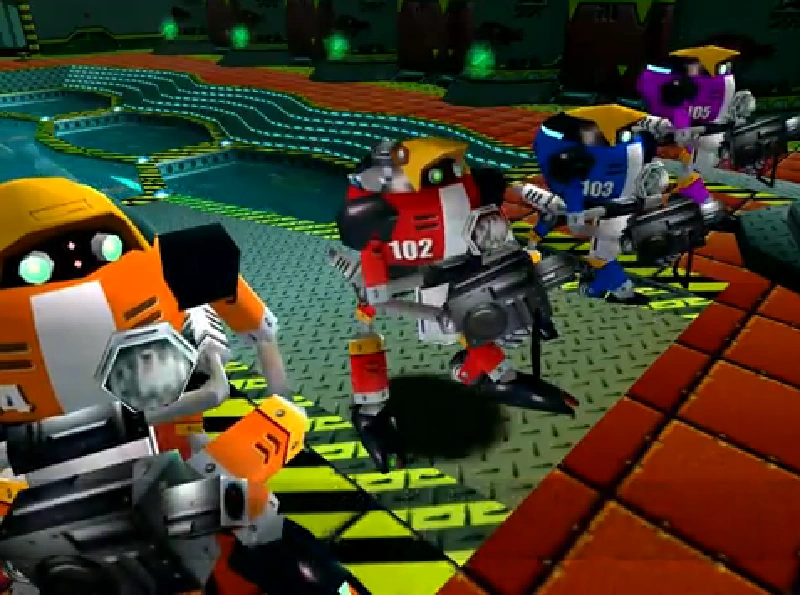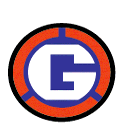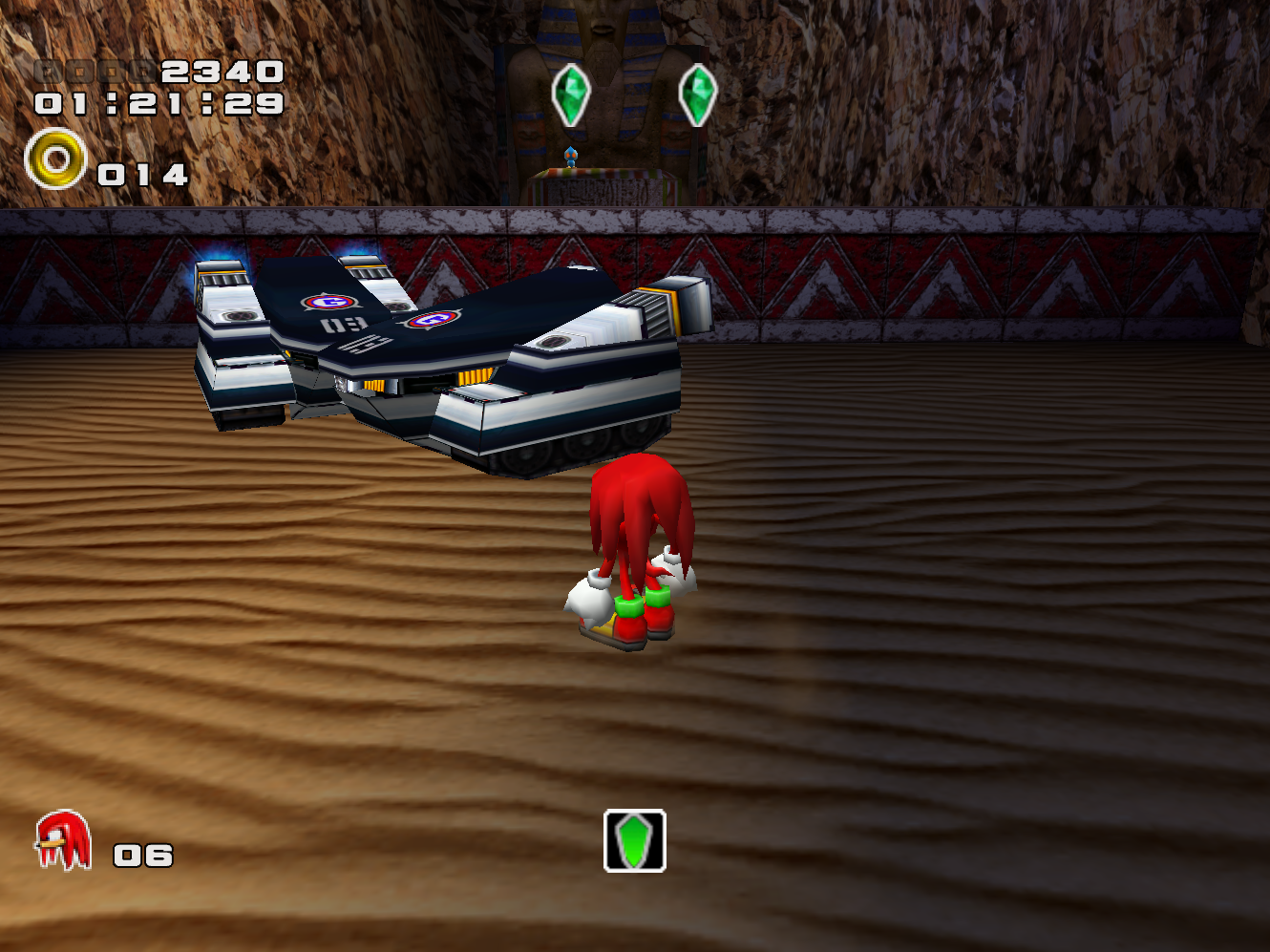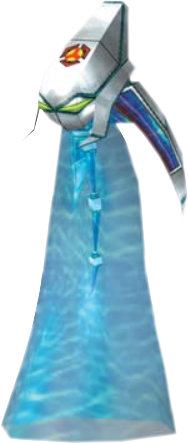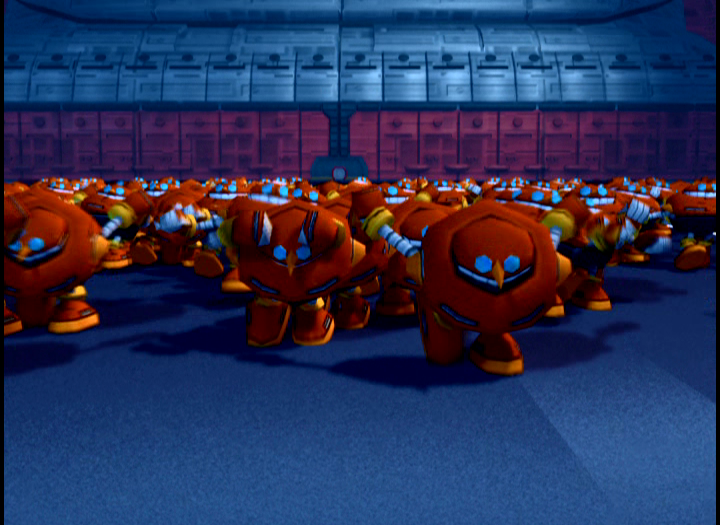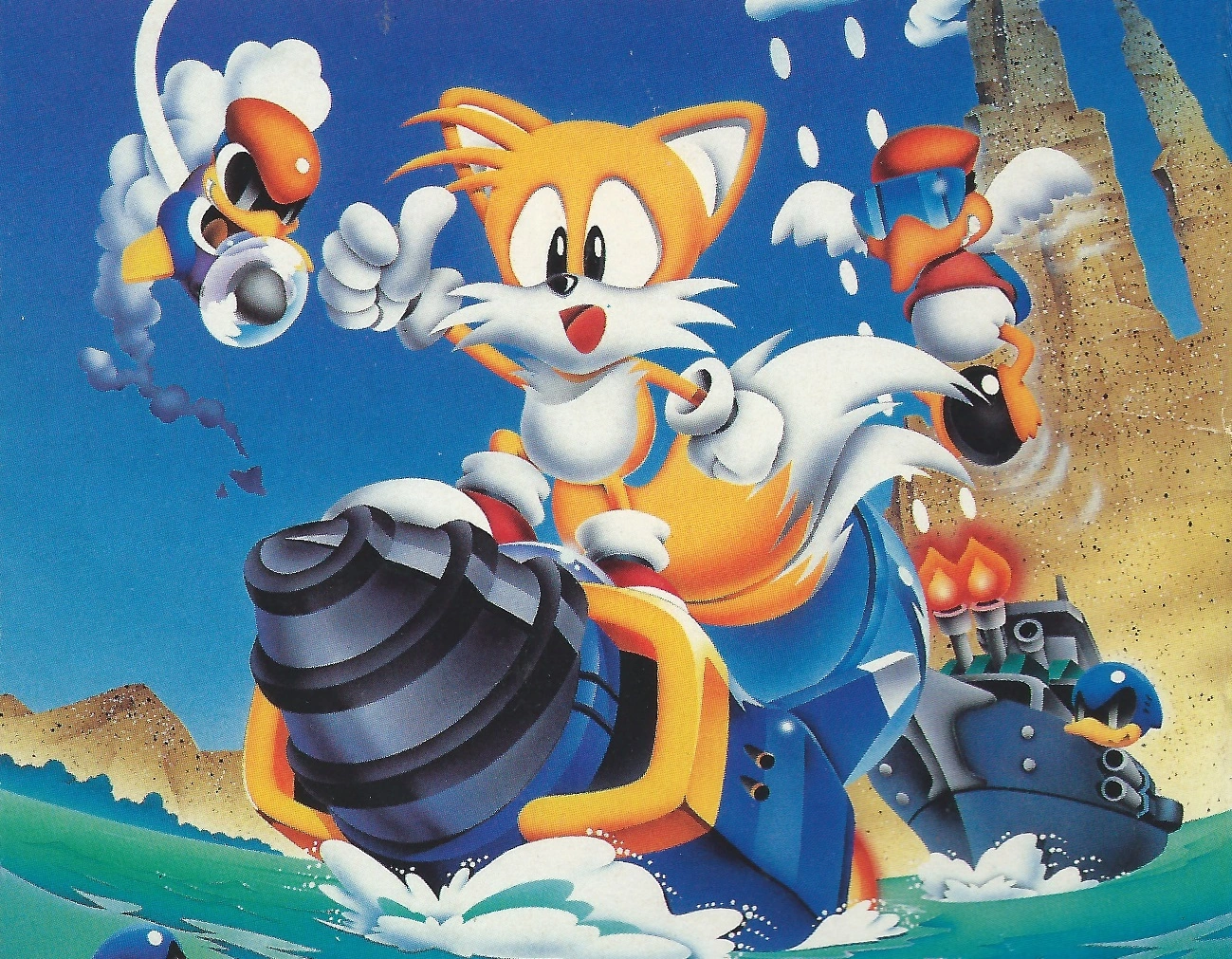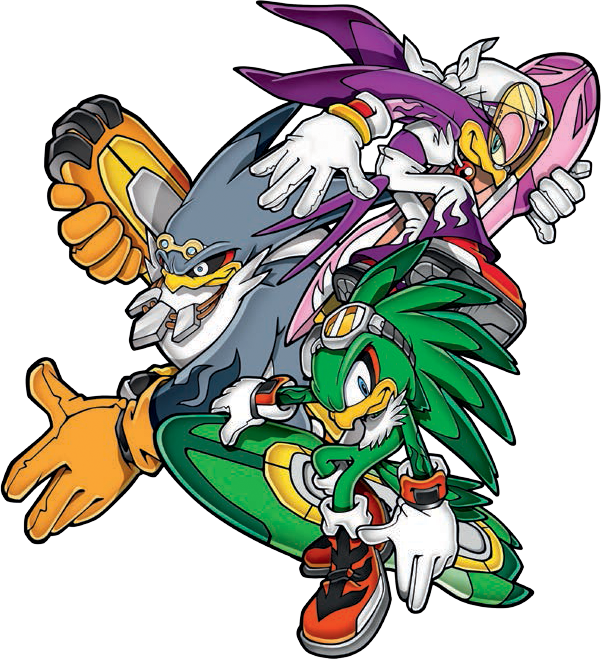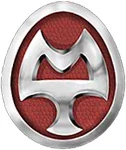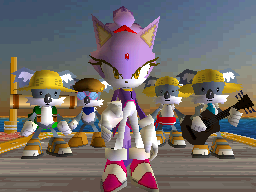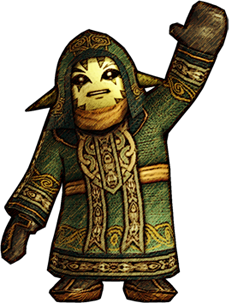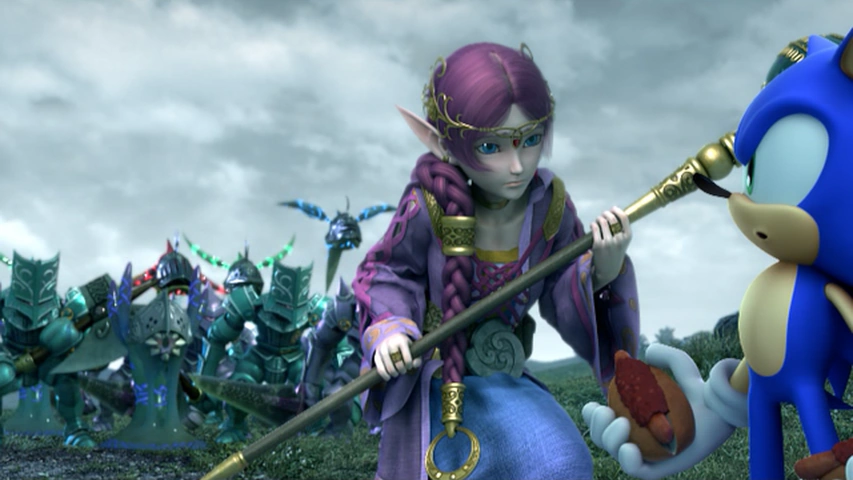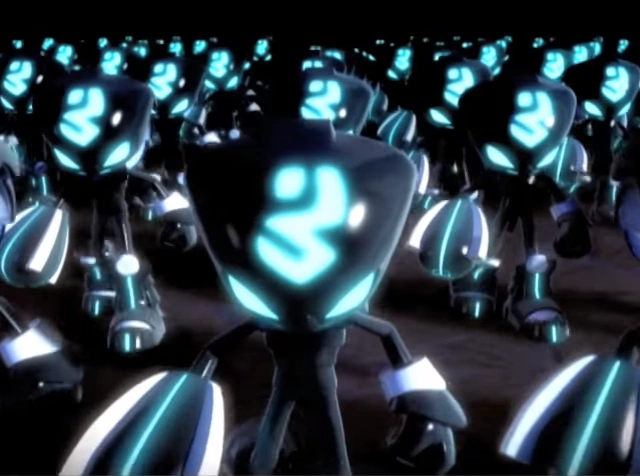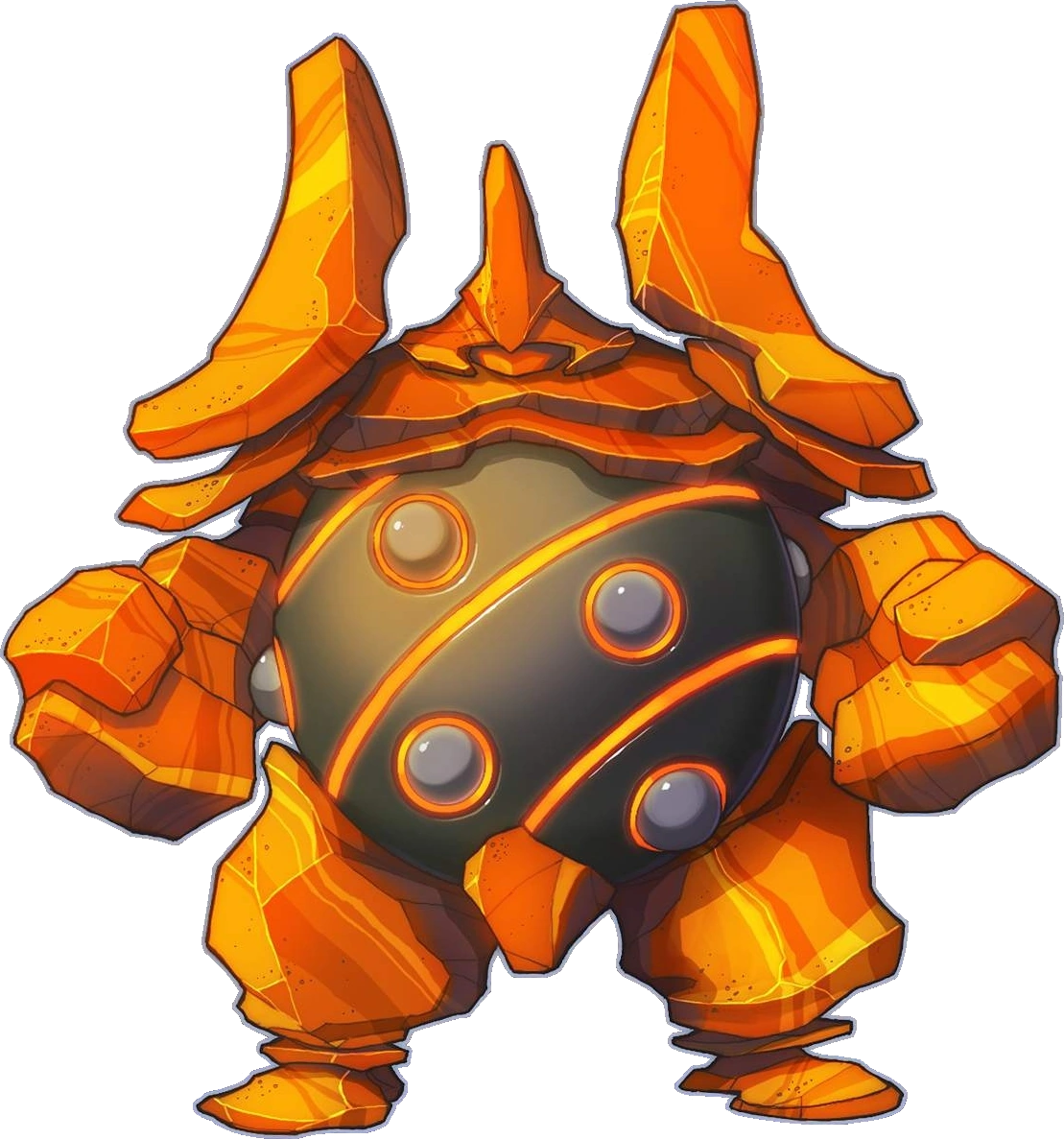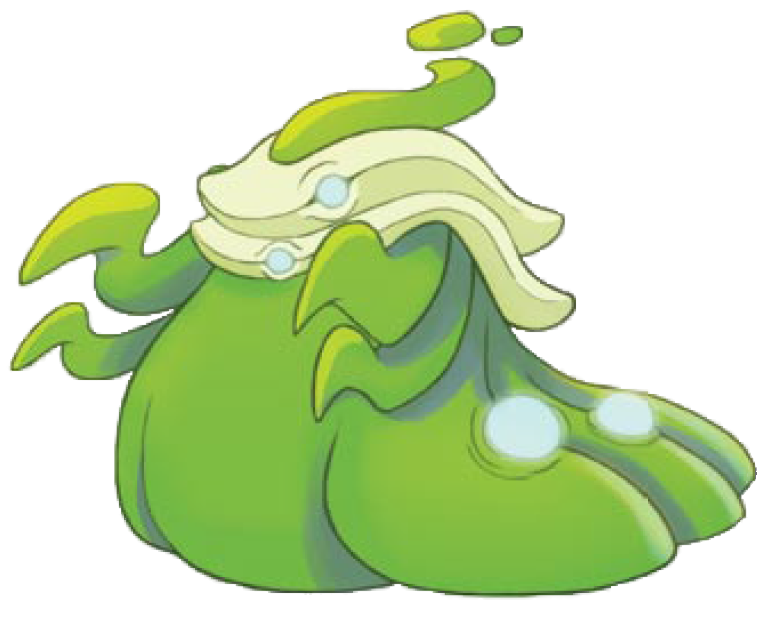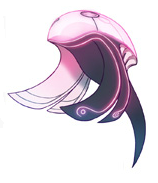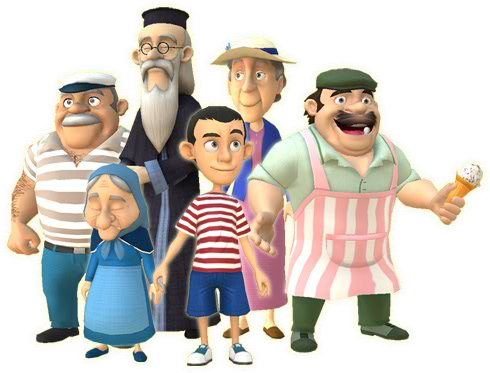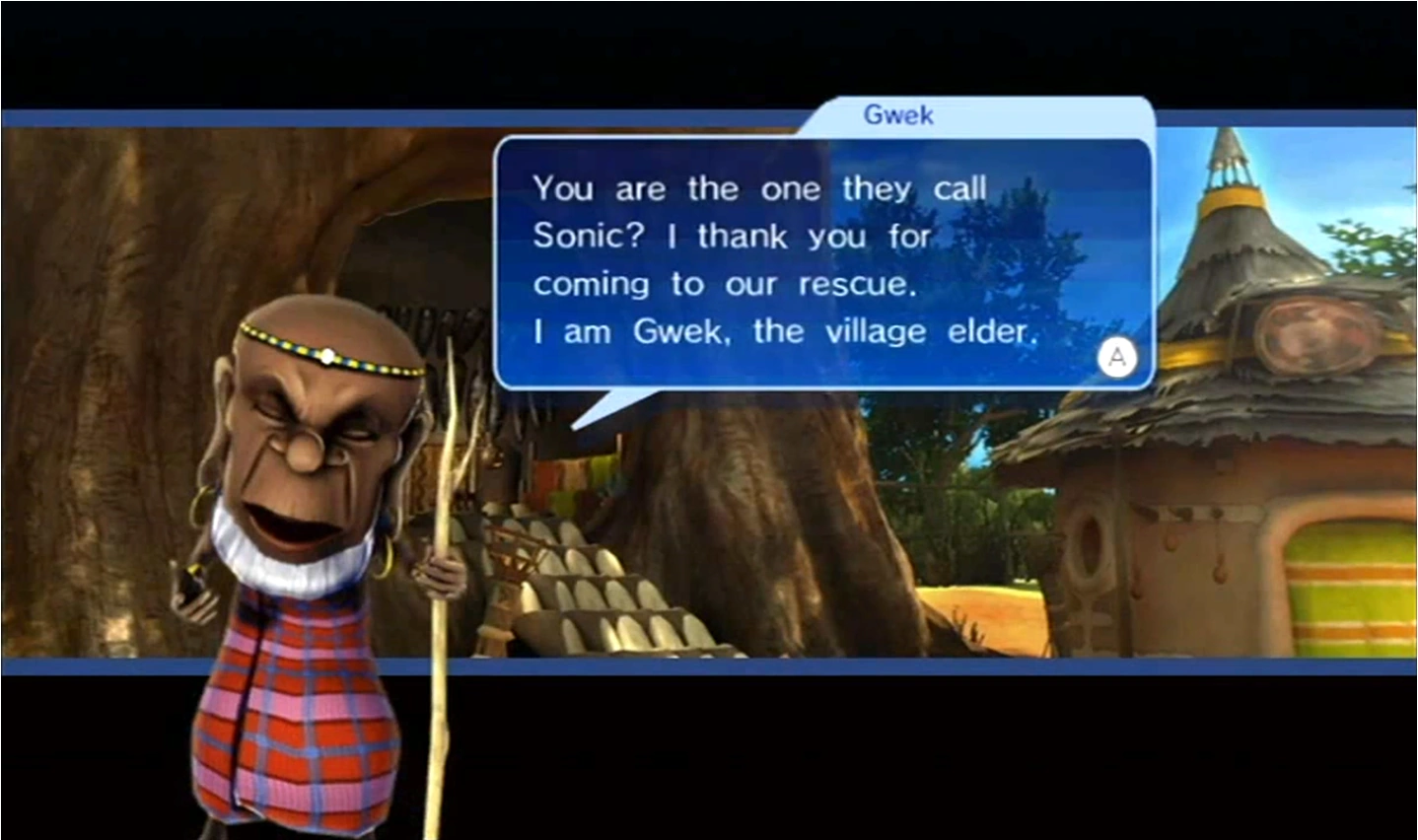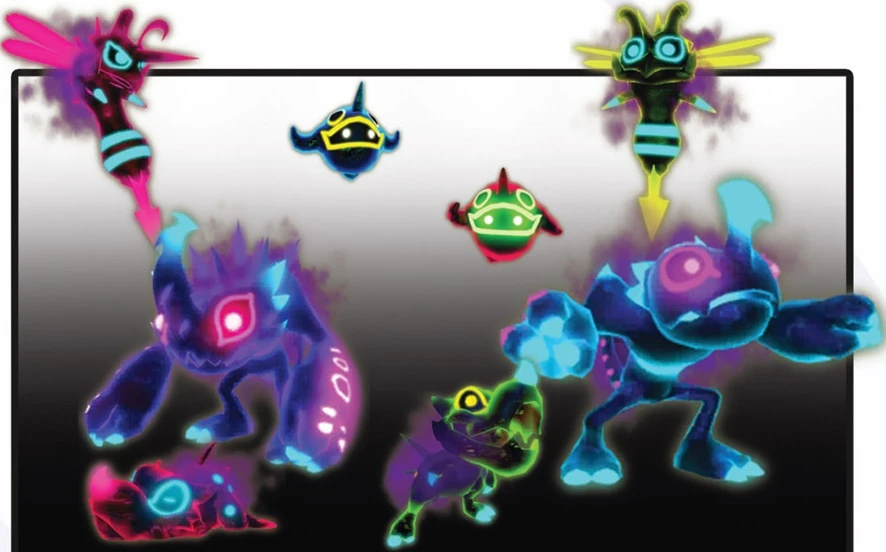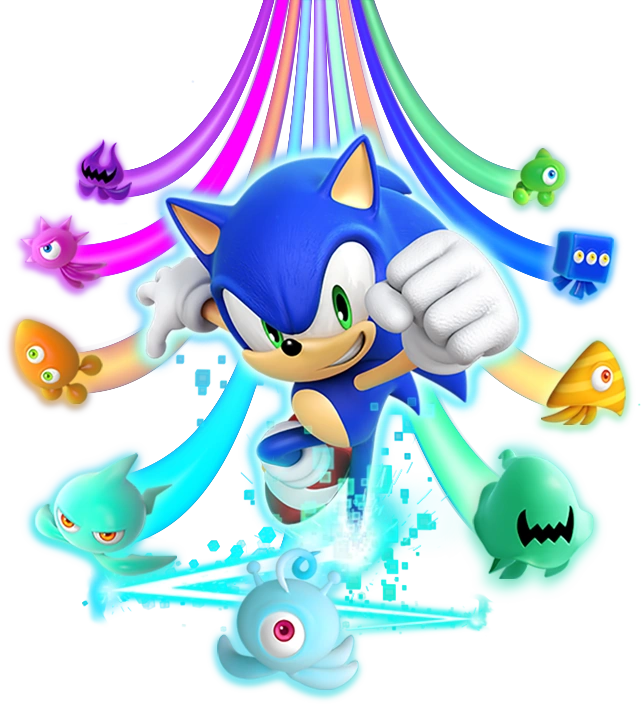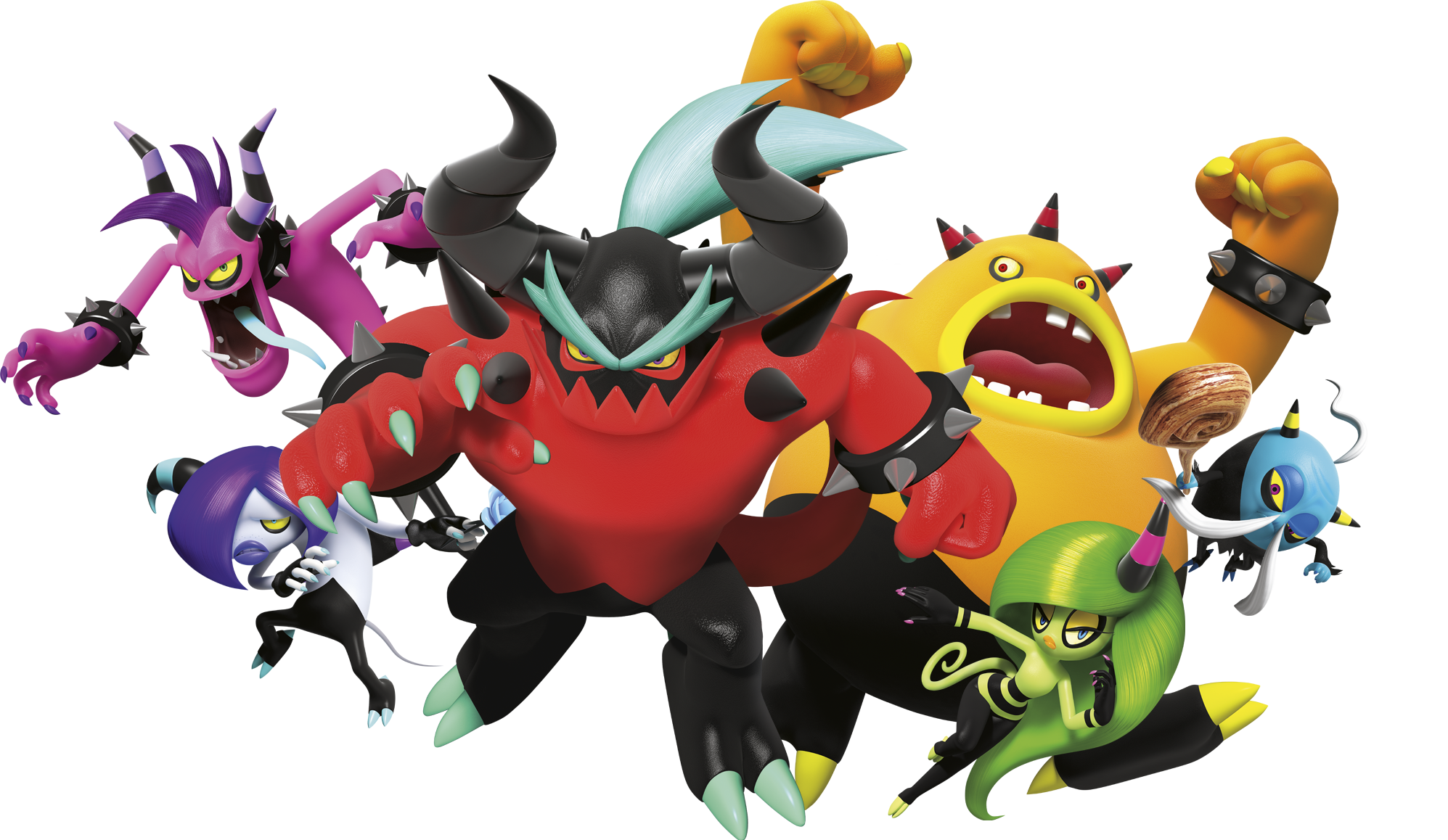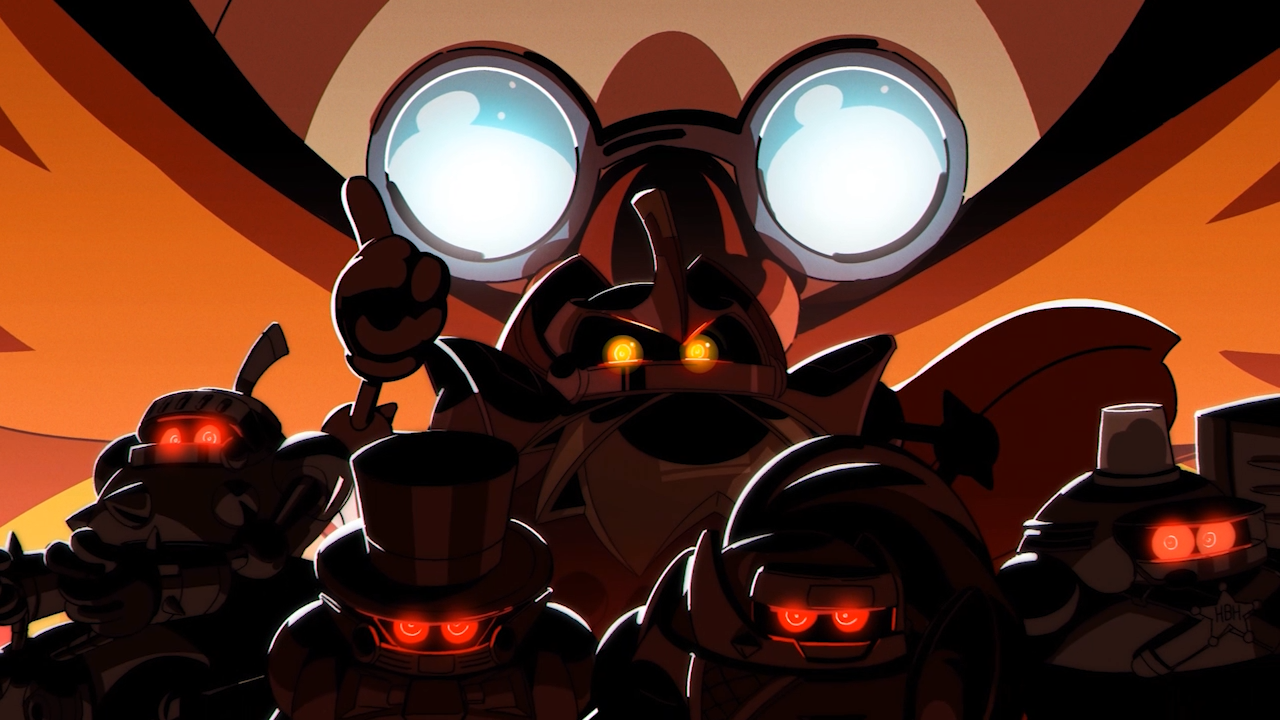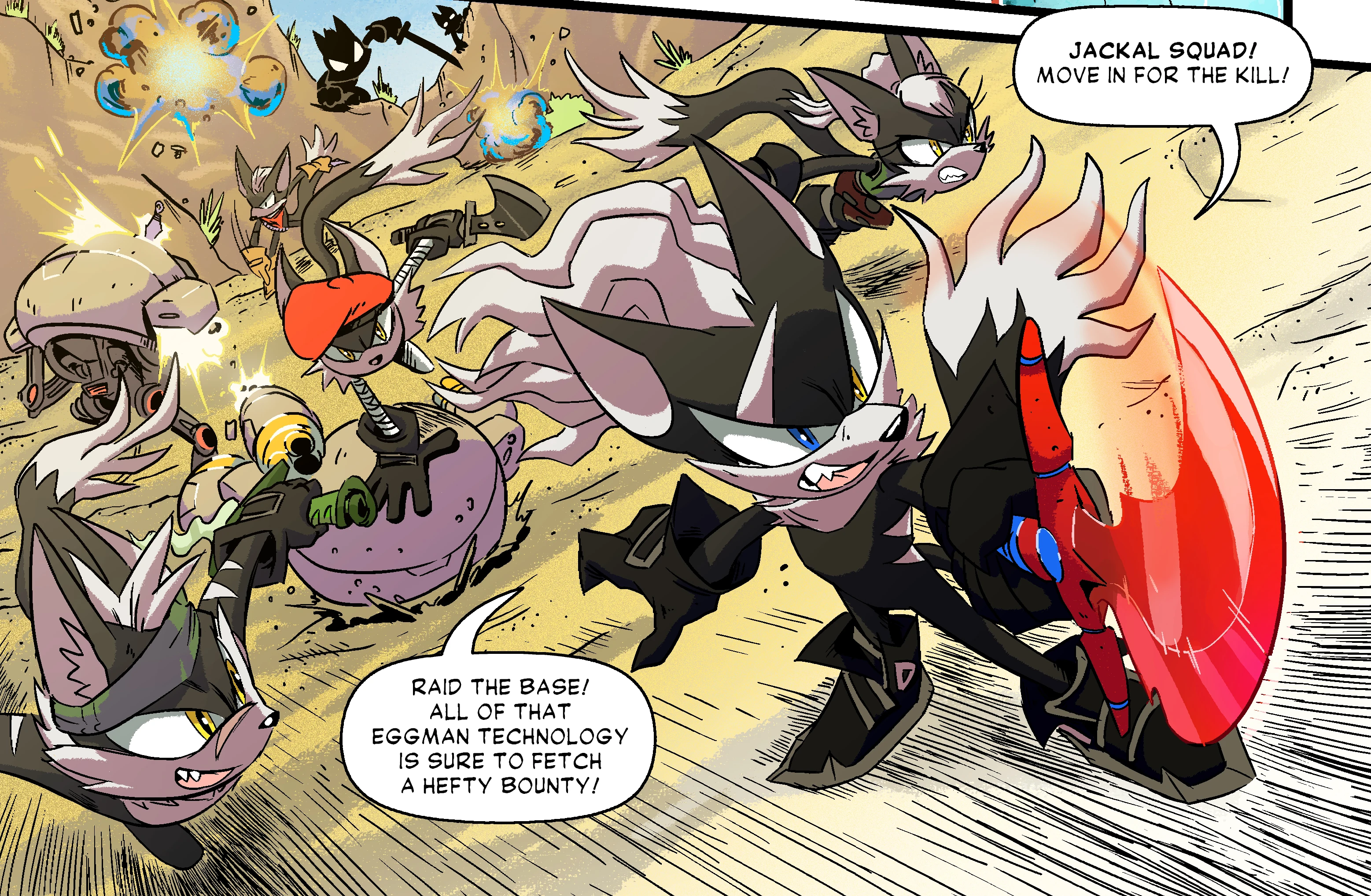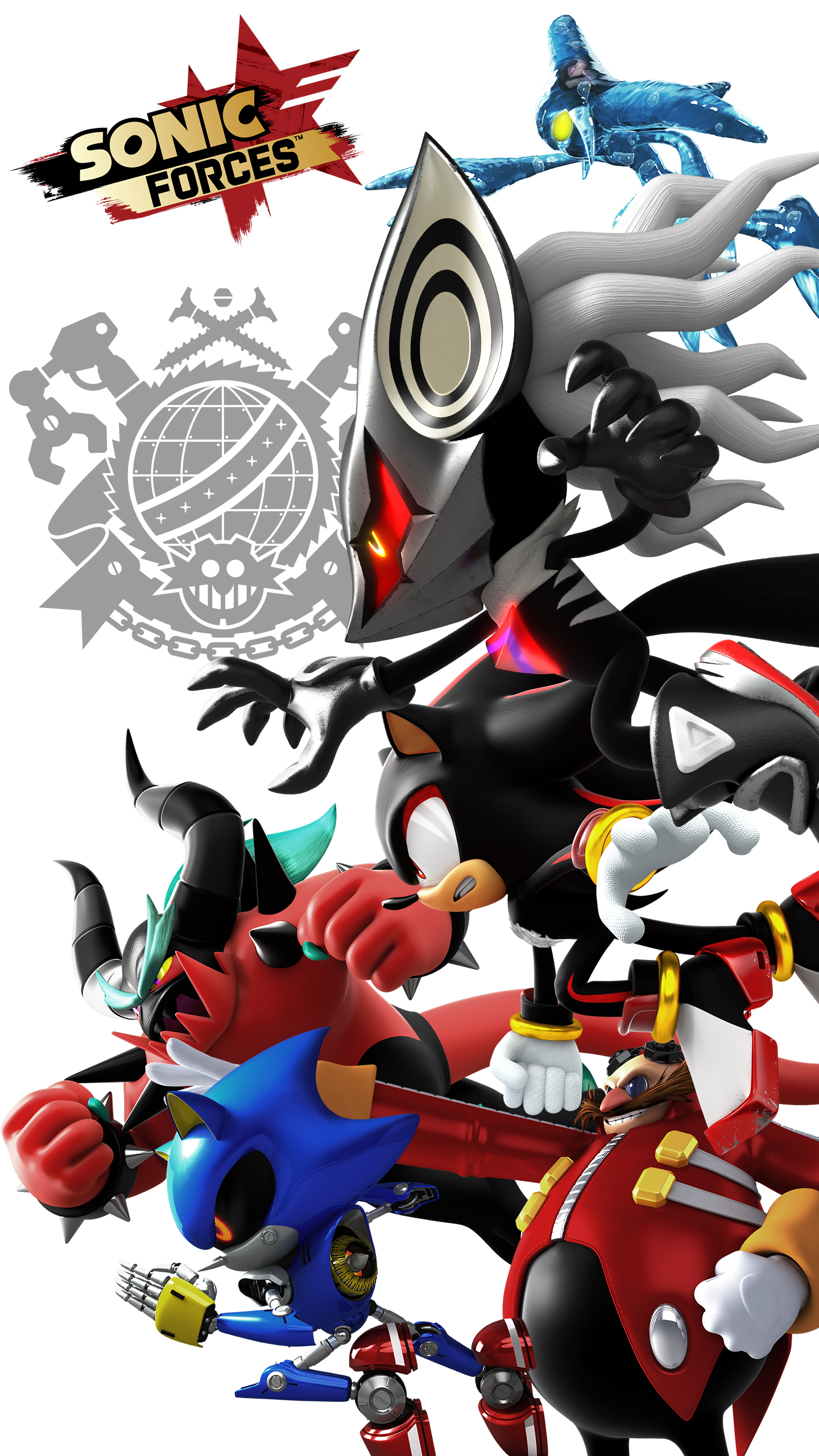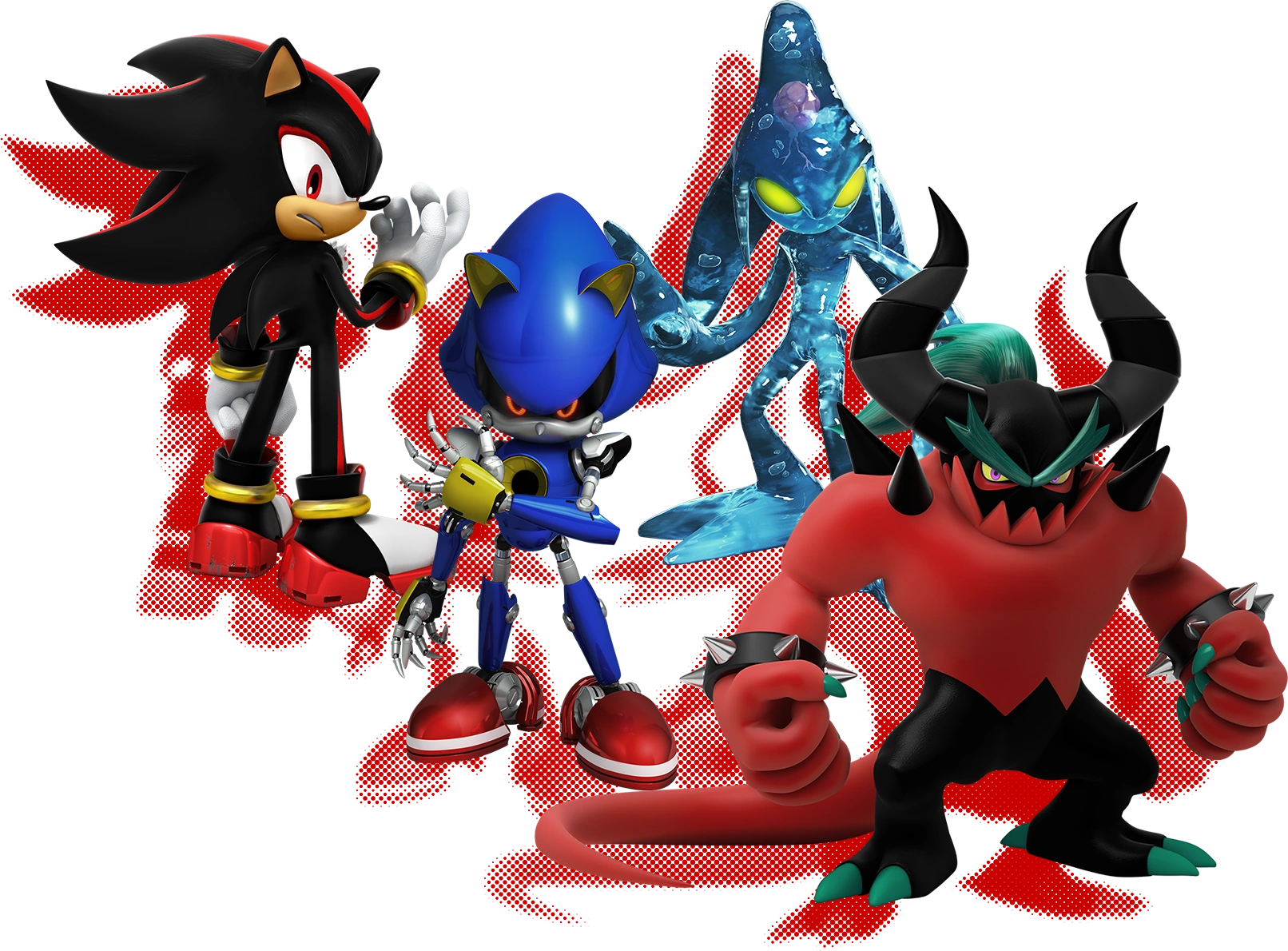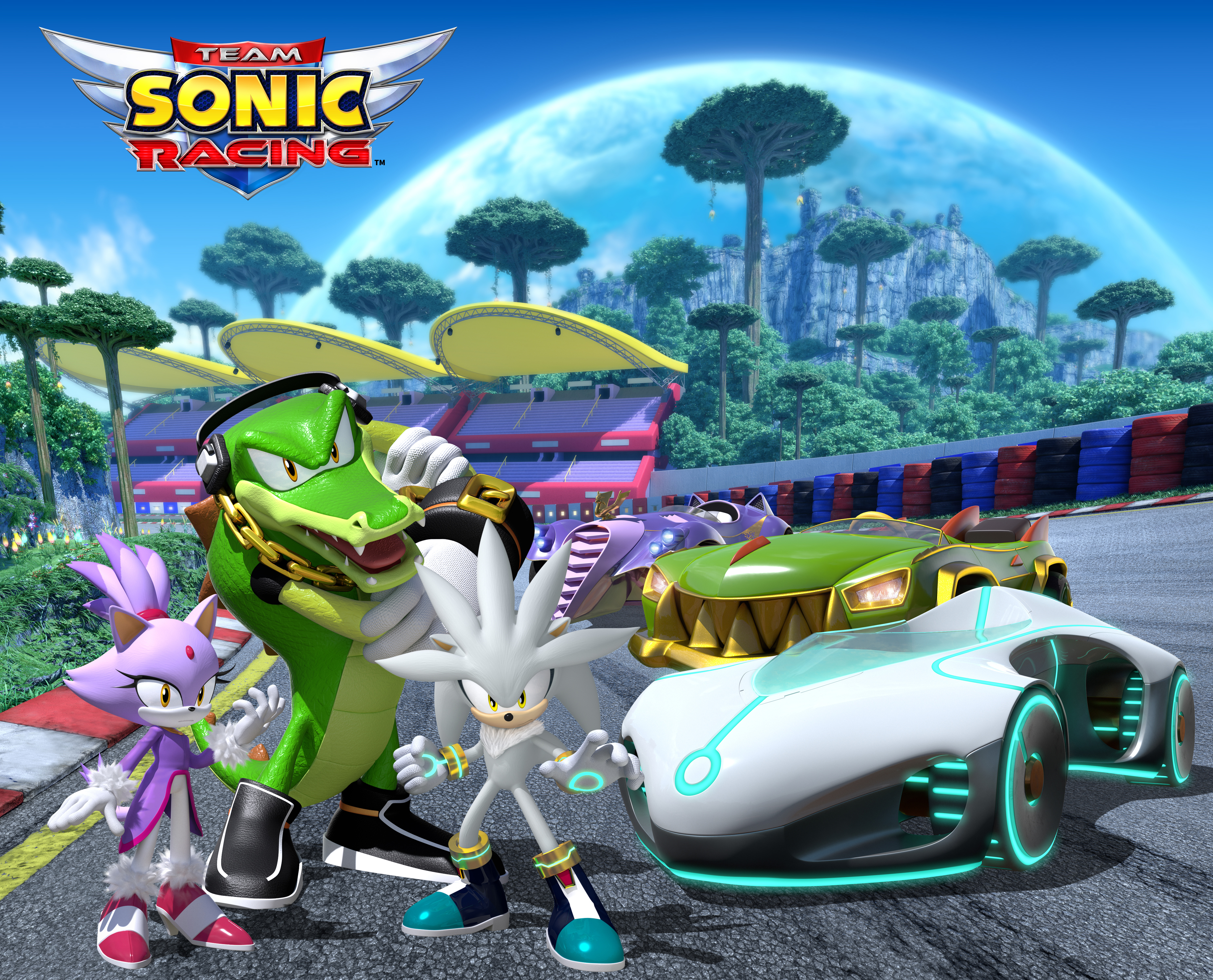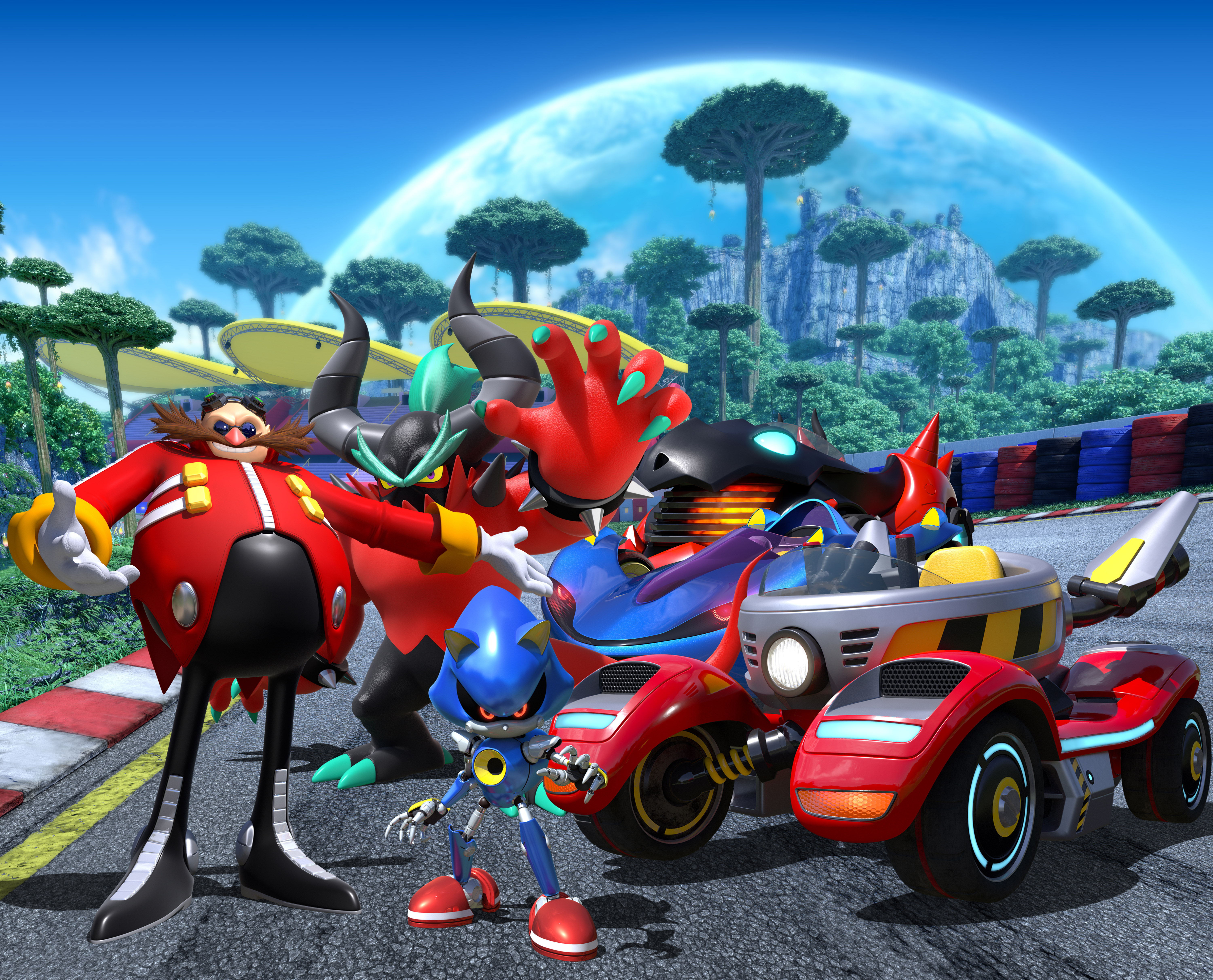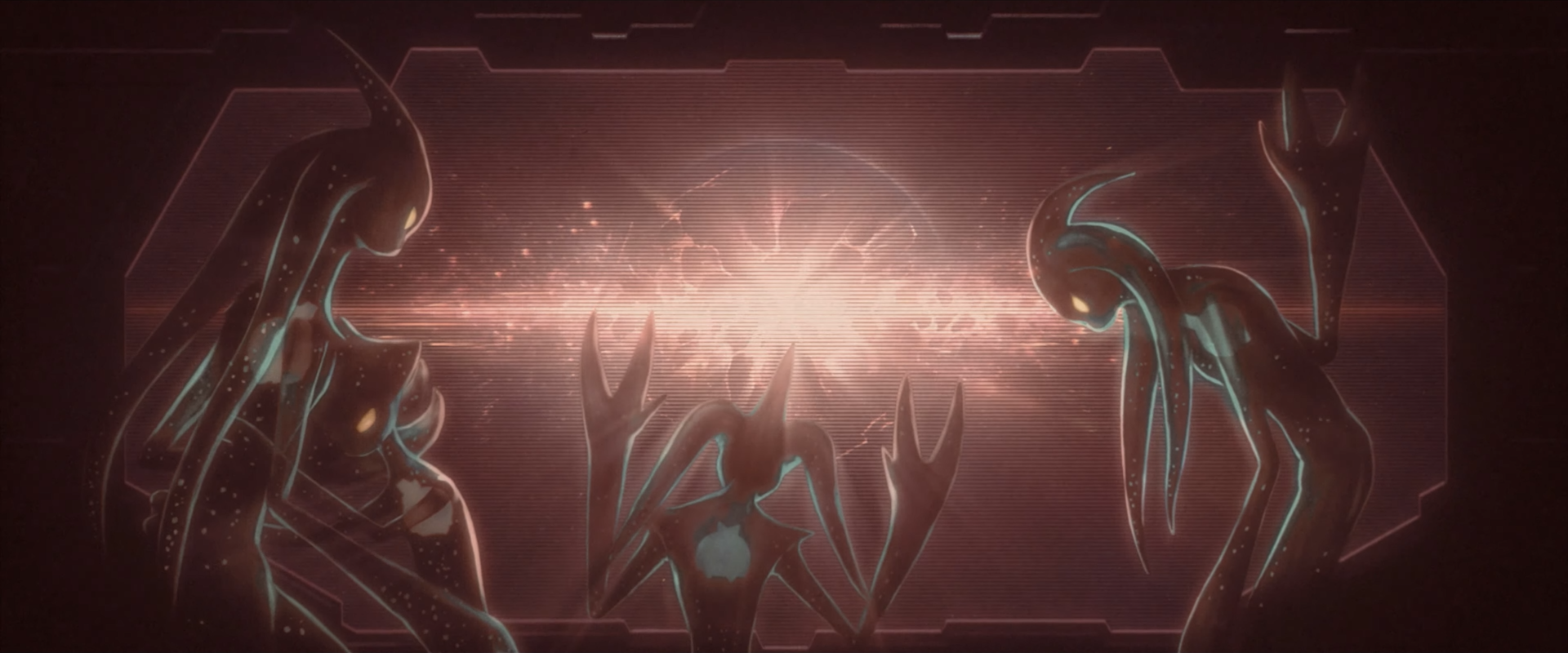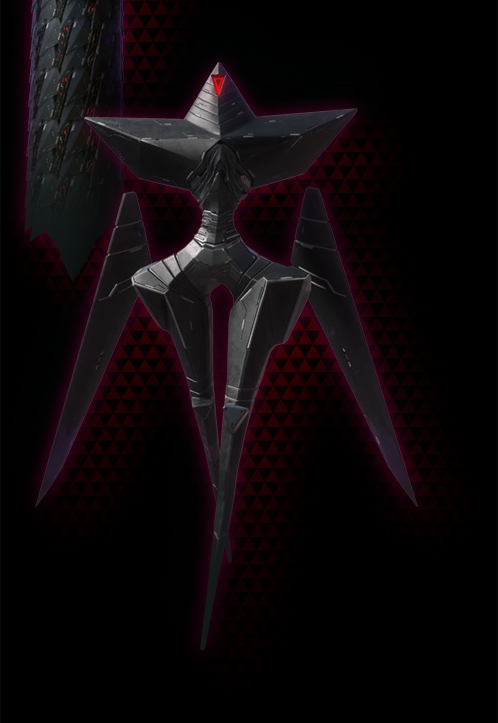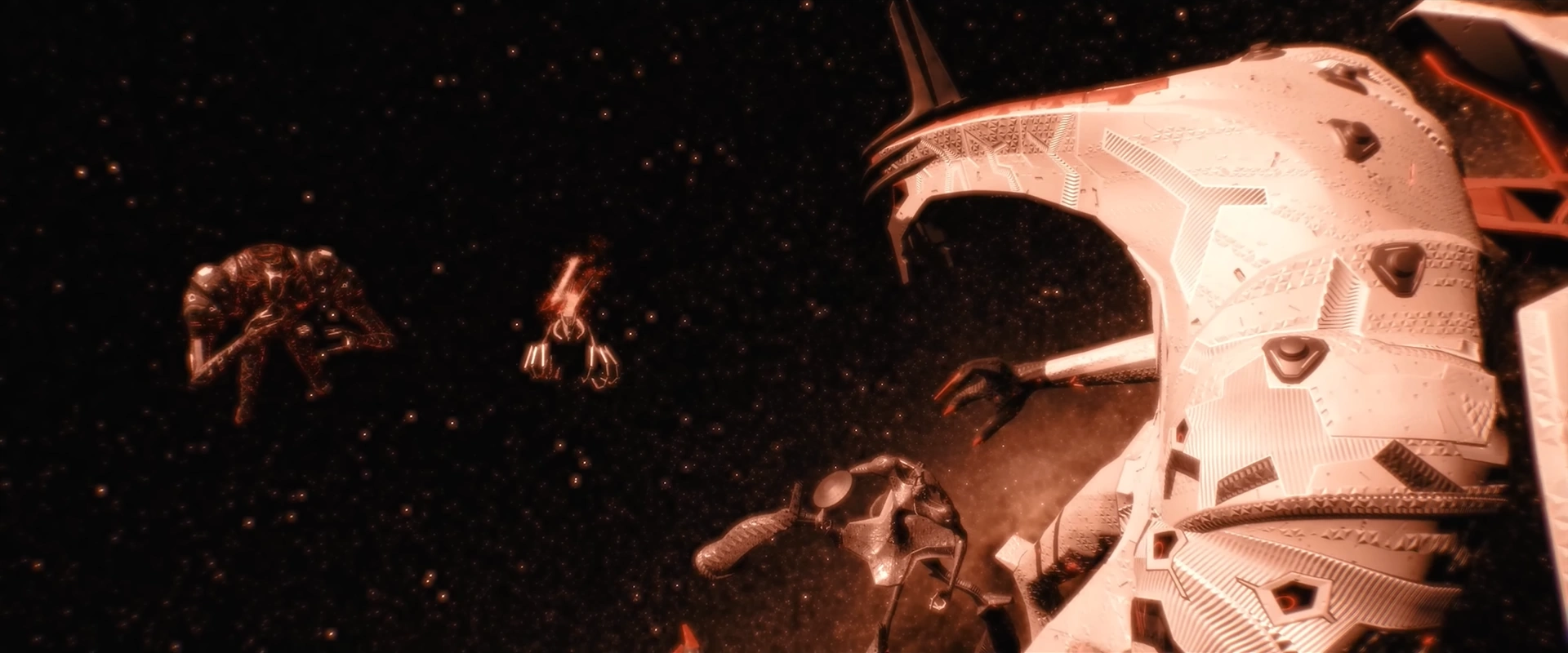- This article is about the multimedia franchise. For other uses, see Sonic the Hedgehog (disambiguation).
Sonic the Hedgehog (ソニック・ザ・ヘッジホッグ Sonikku za Hejjihoggu?) is a Japanese video game franchise created and owned by Sega. The franchise was created mainly by the company's Japanese developers; Yuji Naka, Naoto Ohshima and Hirokazu Yasuhara, to compete in entertainment, specifically the video game market. The mainline games are platformers mostly developed by Sonic Team; spin-off games, often outsourced to other studios, encompass a variety of other genres. The series also includes printed media, animations, films, and merchandise.
The series started in 1991 with the release of Sonic the Hedgehog on the Sega Mega Drive/Genesis, to provide Sega with a mascot to compete with Nintendo's Mario. The success of the game was responsible for turning Sega into a leading video game company during the early 1990s. The next few mainline games were developed by Sega Technical Institute, and a number of spin-offs were released for the Sega Master System and Game Gear. Following a hiatus during the Sega Saturn era, the first major 3D Sonic game, Sonic Adventure, was released in 1998. In 2001, Sega exited the console market and shifted to third-party development, with the series being continued on Nintendo, Xbox and PlayStation consoles.
The Sonic the Hedgehog series tells the story of a heroic anthropomorphic blue hedgehog named Sonic the Hedgehog, who has the main ability of running at ultimately undetermined super speeds, and performing acrobatic maneuvers of powerful spinning attacks, to fight and stop his arch-enemy Doctor Eggman, a mad scientist, who often seeks out various methods to defeat Sonic, in order to achieve his goal in taking over the world and creating a technology-overrun reality in his image. His plans are foiled by Sonic, who ongoingly defeats and thwarts the Doctor and his evil plans of ultimate victory. Occasionally, the doctor’s plans ideally involve the Chaos Emeralds, seven gemstones of infinite energy that turn thoughts into power. When the gemstones are obtained, the Chaos Emeralds can grant power to machines and living beings, which allow anthropomorphic organisms to attain a "super transformation", a technique Sonic often utilizes to beat his mythological adversaries. Between Sonic and Eggman, the series can be viewed as a fifty/fifty merge of fantasy and science fiction while both characters are operating on opposite sides of the societal spectrum, with Sonic living the life of a traveling nomad, while Eggman seeks to live the life of a conquering emperor.
The series also features an extended cast of characters, including Sonic's best friend and sidekick Miles "Tails" Prower, his rivals Knuckles the Echidna and Shadow the Hedgehog, his self-proclaimed girlfriend Amy Rose, and his evil robotic copy Metal Sonic.
Sonic the Hedgehog is Sega's flagship series and one of the most successful video game franchises of all time, with series sales and mobile game downloads totaling over 1.51 billion units by 2022.[1] The original Sonic games continue to receive critical acclaim and are often listed as amongst the greatest of all time. Although the notoriety of later entries, notably Shadow the Hedgehog, Sonic the Hedgehog (2006), and Sonic and the Secret Rings released within two years were met with poor reviews, Sonic the Hedgehog remains influential in the video game industry and is often referenced in popular culture.
Logos[]
| Logo | Years |
|---|---|

|
1991 (US) |

|
1991–1997 (JP) |

|
1992-1997 (US) |

|
1998–present |

|
2001-2004 |

|
2005-2007 |

|
2008–present |
Overview[]
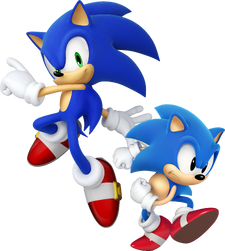
Promotional artwork of Sonic Generations with the series' namesake, Sonic, in his "Modern" (left) and "Classic" (right) designs.
The mainline games in the series center around conflicts between the titular protagonist and namesake, Sonic the Hedgehog, and his arch-nemesis, Dr. Ivo Robotnik, better known as "Dr. Eggman". Sonic is the blue hedgehog noted for his carefree and cool attitude, capable of running at supersonic speeds and curling into a ball, allowing him to attack enemies.[2][3] Dr. Eggman is a human mad scientist and Sonic's nemesis with an IQ of 300 who seeks to conquer the world to establish a totalitarian regime called the "Eggman Empire" or "Eggmanland", where all nature is replaced with machines.[2][4][5] Being inspired by the culture of the 1990s, Sonic the Hedgehog runs on environmental themes, based on the then-growing debates between environmentalists and developers: Sonic represents "nature" and Eggman "machinery" and "development".[6]
Central to the franchise are the Chaos Emeralds, seven gemstones with unlimited mystical powers.[7] The Emeralds can respond to thoughts and turn them into power to cause miracles,[8] such as warping time and space with a technique called Chaos Control,[9] energize living beings, and serve as fuel for devices including various types of weapons of mass destruction,[10] which makes Eggman often seek them out in his plots to conquer the world.[2] When all seven Emeralds are gathered, they can be used to initiate a "Super transformation", which bestows the user with increased innate talents, virtual invincibility, and new abilities.
The series is notorious for its large cast, much of which was introduced in the early games for the Sega Mega Drive and its add-ons: Miles "Tails" Prower, a mechanical genius from West Side Island and Sonic's best friend, first appeared in Sonic the Hedgehog 2 (1992). Sonic the Hedgehog CD (1993) introduced Amy Rose, a pink hedgehog who is deeply in love with Sonic and is known for wielding her Piko Piko Hammer, and Metal Sonic, a robotic copy of the blue hedgehog created by Eggman to be his equal mechanical match. Sonic the Hedgehog 3 (1993) marked the introduction of Knuckles the Echidna, a gullible and short-tempered echidna who serves as the guardian of the Master Emerald on Angel Island, a large gemstone later introduced in Sonic & Knuckles that controls the powers of the Chaos Emeralds. Knuckles' Chaotix (1995) introduced Team Chaotix, a team of detectives consisting of the leader named Vector the Crocodile, Espio the Chameleon and Charmy Bee.
While developing the series' first 3D entry, Sonic Adventure (1998), Sonic Team realized that the characters' designs were unsuitable for a 3D environment.[11] Much of the cast was thus redesigned with sleeker bodies, longer limbs, and colored eyes. Sonic Generations (2011) retroactively referred to the designs prior to Sonic Adventure as "Classic", and the ones after as "Modern". Various new characters have been introduced from Sonic Adventure onwards, including Big the Cat, a large cat who fishes with his best friend Froggy; Chaos, an immortal mutant chao who serves as their guardian and a god of destruction who is peacefully departed to heaven with Tikal; Shadow the Hedgehog, the "Ultimate Life Form" created by Eggman's grandfather Gerald Robotnik who shares Sonic's abilities and is known for harnessing Chaos Emerald energy to perform Chaos powers; Rouge the Bat, a treasure hunter and spy for a fictional country called the United Federation and the military organization called G.U.N.; Cream the Rabbit, a kind hearted girl with a strong friendship with her Chao named Cheese; E-123 Omega, a vengeful E-Series robot who turned against Eggman after feeling like he was abandoned after being deactivated and place to defend Shadow; Blaze the Cat, a princess from a parallel universe called the Sol Dimension and guardian of the Sol Emeralds who posses the ability of pyrokinesis; The Babylon Rogues, a group of Babylonian thieves that specialize in piloting Extreme Gear consisting of Jet the Hawk, Wave the Swallow and Storm the Albatross; Silver the Hedgehog, a white hedgehog from the future with psychokinetic powers; Orbot and Cubot, a pair of E-series robots who serve as Eggman's henchmen; Infinite, a mercenary hired by Eggman who can manipulate the power of the Phantom Ruby; Sage, an artificial intelligence created by Eggman who she refers to as her father. Many of the aforementioned characters have starred in spin-offs.

An example of 2D Sonic gameplay, from the console/PC version of Sonic Generations.
Two-dimensional (2D) Sonic titles are side-scrolling platform video games viewed from a side-on perspective. Their controls are fairly basic and do not deviate much from the genre standard; the selling point of the series is the incredible speed of the playable characters, who usually have the ability to run uphill, walls and even ceilings. Golden, bracelet-like Rings are the main health system for the characters. Holding them, even one, prevents players from losing a life, and gaining a hundred of them generally grants a 1-Up. The games also feature various momentum-based elements, such as loops and corkscrews. The stages have several sequences which involve a character being thrown along preset paths with little input from the player. However, there are also numerous sections involving precise jumping between platforms and avoiding of hazards (e.g. spikes and bottomless pits), although these are more lenient than other games of its genre. The enemies are normally robots created by Dr. Eggman ("Badniks") and are destroyed by simply jumping/rolling onto them. Items and power-ups (such as Shields and bursts of speed) are contained in television monitors and can be obtained by breaking them open. In most games, the levels themselves are divided in two to three "Acts", depending on the game, and are named "Zones". Star Posts normally act as checkpoints once a life is lost (8-bit Sonic games feature a variation of the Star Posts in the form of Arrow monitors), which often allow access to the Bonus Stages after getting a predetermined number of Rings. Goal Plates usually signal the end of an Act. Special Stages are another common feature in Sonic games, being dimensions far from the games' setting which allow the player to gain Chaos Emeralds, extra lives, and Continues, usually entered through Giant Rings. A boss, an enemy with much higher HP, is often fought at the end or in the middle of a Zone.
Three-dimensional Sonic entries do not restrict movement as much, controls are slightly more advanced, and the frequency of automated events is increased. Those games, while sharing several of the same components with their 2D counterparts, also modify some of those concepts to accommodate them into the 3D perspective; they also put a greater emphasis on the game's plot and character development.
History[]
Development[]

Opening moments of Sonic the Hedgehog (1991); 2013 remaster.
While several people have been involved in the creation of Sonic the Hedgehog, the artist Naoto Ohshima, programmer Yuji Naka, and designer Hirokazu Yasuhara are generally credited with the creation of the character.
In April 1990, Sega requested a game capable of selling more than 1,000,000 copies; a character who could compete against Nintendo's popular Super Mario, and a character to ultimately replace Alex Kidd as the company's mascot. Several character designs were submitted by its AM8 research and development department. These included an armadillo (who was later developed into Mighty the Armadillo), a dog, a mustached man in pajamas (who was later used as the basis of the design of the main antagonist Dr. Eggman) and a rabbit (who would use its extendable ears to collect objects, an idea that was later used for a separate Sega character, Ristar).[12][13] Eventually, the mascot they selected was Naoto Ohshima's submission, a spiky teal hedgehog code-named "Mr. Hedgehog", later renamed Sonic.[14] Sonic's color was based on the Sega logo, his shoe buckles based on Michael Jackson, his shoe color based on Santa Claus, and his personality was inspired by future-President Bill Clinton's "get it done" attitude, who Ohshima felt embodied a modern sensibility of wanting to get things done right away, righting wrongs as they presented themselves instead of letting them linger.[12][15][16][17] According to Yuji Naka, Sonic's color also serves to symbolize peace, trust, and coolness (which are the attributes of Sonic's character). His trademark speed is based on Super Mario Bros. World 1-1, with Sonic creator Yuji Naka stating in issue 260 of Nintendo Power that he "always tried to get through the level as fast as [he] could," which inspired the initial concept for Sonic the Hedgehog. Sonic was created without the ability to swim because of a mistaken assumption by Yuji Naka that all hedgehogs could not do so.[18]
A group of fifteen people started working on Sonic the Hedgehog and renamed themselves Sonic Team. The game's soundtrack was composed by Masato Nakamura of the band Dreams Come True. Sega sponsored the group's "Wonder 3" tour, painting Sonic on the tour bus, distributing pamphlets advertising the game, and having footage of the game broadcast above stage prior to its release.[19]
The original concepts from Naoto Ohshima gave Sonic fangs and presented him in a band with a human girlfriend named Madonna. The band couldn't be completed for the game due to time constraints[20] and Yuji Naka had Madonna removed because he wanted to take Sonic in a different, less-silly direction than the Super Mario Bros. series.[21] However, a team from Sega of America, led by Madeline Schroeder, redesigned Sonic the Hedgehog for an American audience by having Greg Martin "soften" his design. This sparked a heated issue with Sonic Team but Naka later admitted that it was probably for the best.[12]
Sonic's precise age, weight, height and other physical characteristics vary depending on the continuity in which he appears and the style in which he is drawn. In the video games, Sonic's original design by Naoto Ohshima was with short spikes, a round body, and no visible irises. Artwork featuring this design and drawn by Akira Watanabe was displayed on the package artwork for Sonic the Hedgehog, and most subsequent Sonic video games featured similar designs.[22] When Sonic the Hedgehog 2 for the Mega Drive appeared, Sonic's proportions changed. The original 1:2 head to height ratio changed to 1:2.5.[22]
Franchise[]
Games[]
Sonic the Hedgehog, the launch title for what would become the Sonic series, was released in 1991 for the Sega Genesis/Mega Drive to critical acclaim and far exceeding Sega's commercial expectations, becoming one of the best-selling games in history, and, at the time, giving a huge popularity boost for Sega, enough so that the company could directly compete with Nintendo, which soon released the Super Nintendo Entertainment System in North America in the same year as a way of counterattack, starting the infamous company rivalry that will last throughout the decade. The game was soon ported to Sega's 8-bit platforms: the Sega Master System and the handheld Game Gear; this version had similar Zone themes and regular enemies, but entirely different level layouts and bosses; this version notably omitted the use of the iconic shuttle loops, and was also well-received by critics, who cited it as a decent effort in porting the original game's complex engine into the less powerful Master System/Game Gear.
After the first game's success, a sequel, Sonic the Hedgehog 2, soon followed, introducing Sonic's then-new sidekick and best friend, Miles "Tails" Prower. Unlike the original Sonic the Hedgehog, it was developed by the Sega Technical Institute rather than Sonic Team. Released in November 1992, the gameplay and story remained largely the same as the previous game: having to rescue the animals friends and defeat Dr. Robotnik. The game also introduced a new ability for Sonic to use: the Spin Dash. While its Sega Genesis/Mega Drive iteration is more widely known, the game was first released for the Master System and Game Gear, having little to no connection with its 16-bit counterpart aside the name. Sonic the Hedgehog 2 was a commercial success, and was released to critical acclaim in all of its versions. It also introduced the super transformation ability, as due to the first game having only six Chaos Emeralds, a seventh was added.
Sonic the Hedgehog CD was released the following year, and was developed by a different team in Japan that was instead headed by Naoto Ohshima. While this game was supposed to be the same as Sonic the Hedgehog 2, during development, it eventually became its own project. Sonic the Hedgehog CD was released for the Mega CD (called Sega CD in North America), a special add-on for the Sega Genesis/Mega Drive; due to this, it featured higher-quality sprites and soundtrack in comparison to previous Sonic games; the latter differed between the American and European/Japanese versions of the game. It quickly became a commercial success, receiving acclaim from video game reviewers and magazines. It was later ported to Microsoft Windows in CD-ROM format in 1996, becoming the first Sonic title to be officially available on PC, with noticeable improvements over the original version. It introduced the soon-to-be recurring characters Amy Rose, Sonic's self-proclaimed girlfriend, and Metal Sonic, Sonic's deadly robotic doppelganger created by Dr. Robotnik and first true rival. This game also marked the debut of the Super Peel Out ability.
Sonic Spinball, the first spin-off title in the series, was released in 1993 for the Sega Genesis/Mega Drive, Master System and the Game Gear. It largely followed the concept of Sonic bouncing around as the ball on a giant pinball table that had been used in both Sonic the Hedgehog and Sonic the Hedgehog 2. While it was commercially successful, the game received mixed reception from critics and fans alike.
Dr. Robotnik's Mean Bean Machine, the second spin-off game in the franchise, released in 1993 for the Genesis/Mega Drive, Master System, and Game Gear, was one of the few entries in the series in which Sonic did not make any appearance, not even in a cameo. The game, however, was set in the universe of Adventures of Sonic the Hedgehog, the first Sonic TV show, which was produced by DiC Entertainment and featured that cartoon's version of Dr. Eggman, alongside several of his lackeys such as Scratch, Grounder, and Coconuts. The game branched the series into the puzzle genre for the first time, and was a port for Western regions of Japan's Puyo Puyo, receiving positive reception.
SegaSonic the Hedgehog, also released in 1993, was the first installment in the series to be released in arcade systems, and introduced new characters to the series: Mighty the Armadillo and Ray the Flying Squirrel. It distinguished itself from other Sonic games at the time by presenting a isometric, pseudo-3D perspective in comparison to the traditional 2D fast-paced platforming the series was known for. It was well-received by video game magazines and got positive scores.
Sonic the Hedgehog 3, released in 1994, continued where Sonic the Hedgehog 2 left, and saw Sonic and Tails venture into Angel Island, after hearing unusual activity coming from the place. It introduced another character to the series: Knuckles the Echidna, who, while an enemy to Sonic and Tails in this game, would become one of their best friends later on. During development, the originally planned Sonic the Hedgehog 3 was split in half due to time constraints and manufacturing costs, having a direct sequel, Sonic & Knuckles, released later that year, which included the leftover content from the standalone Sonic the Hedgehog 3 release. The two were built on the same engine and sold well, receiving positive feedback from videogame critics. Sonic & Knuckles also included Lock-on technology, which allowed the Sonic & Knuckles cartridge to be connected to an older game to the cartridge's pass-through port to unlock bonuses: If connected to Sonic the Hedgehog 3, the game becomes Sonic 3 & Knuckles (which is what the developers intended to achieve with the standalone Sonic the Hedgehog 3 cartridge), while if it is connected to Sonic the Hedgehog 2, Knuckles the Echidna in Sonic 2 is unlocked, which allows players to select Knuckles as their character in Sonic the Hedgehog 2, although Sonic and Tails are removed in this version; connecting the Sonic & Knuckles cartridge to any other Sega Genesis/Mega Drive cartridge, including the original Sonic the Hedgehog, unlocks a full version of the Blue Sphere Special Stage. Sonic the Hedgehog 3, Sonic & Knuckles, and the complete Sonic 3 & Knuckles would later be ported to Windows PCs in 1997 as a compilation titled Sonic & Knuckles Collection.
Knuckles' Chaotix, released in 1995 for the Sega 32X Genesis/Mega Drive add-on, saw Knuckles the Echidna in the role of protagonist instead of the titular character Sonic (who only makes a cameo in the good ending of the game alongside Tails), and introduced the team that would later be known as the Team Chaotix, including Espio the Chameleon, Vector the Crocodile, and Charmy Bee, alongside a returning Mighty the Armadillo. Similar to Sonic the Hedgehog CD years earlier, Knuckles' Chaotix featured higher-quality graphics and OST than preceding entries. While it led to be the best-selling title for the 32X, it is largely considered a commercial failure and received mixed reviews overall, with its presentation dividing critics.
Sonic 3D, named Sonic 3D: Flickies' Island in Europe and Japan, and Sonic 3D Blast in North America, was released as a "swan-song" for the Sega Genesis/Mega Drive in December 1996, and was the last Sonic game released for the 16-bit console. This game, similar to SegaSonic the Hedgehog, was also played from an isometric perspective. Although it shared elements with the 2D platform Sonic installments, it stood out by introducing a new gameplay mechanic, which was to collect Flickies (one of the many animal friends that are captured regularly to power Dr. Robotnik's Badnik army) after rescuing the birds from the robots and then, as a method of progress, the player had to warp them into Giant Rings to get through the stages. Sega Saturn and Microsoft Windows ports followed to cover the hole of the cancellation of Sonic X-treme. The Saturn/PC version featured enhanced graphics and a different soundtrack, composed by Richard Jacques. While it was a commercially prosperous, Sonic 3D Blast received mixed reception from critics and fans alike, with the Sega Saturn/PC version getting slightly more positive scores. The game was developed by Traveller's Tales, although Sonic Team worked on the Special Stages in the Saturn/PC version.
In 1997, a compilation entitled Sonic Jam was released for the Sega Saturn and Game.com. In addition to containing Sonic the Hedgehog, Sonic the Hedgehog 2, Sonic the Hedgehog 3 and Sonic & Knuckles, it also included a "Sonic World" mode. This allowed the player to control Sonic in a small 3D-world similar to Green Hill Zone from the original game; it contained no enemies and was mainly a means of accessing the disc's multimedia features such as BGM's, illustrations and commercials. While the original version of Sonic Jam was well-received by reviewers and performed decently in commercial terms, its Game.com counterpart was critically panned and sold extremely poorly.
Alongside the 16-bit games, during this time there were also several 8-bit entries developed exclusively for the Game Gear and Master System, such as Sonic Chaos in 1993, Sonic the Hedgehog Triple Trouble in 1994, and Sonic Blast in 1996/97, each with varying degrees of success and following a similar formula to their 16-bit counterparts. Unlike the Sega Genesis/Mega Drive games, these titles were developed by a different entity, Ancient, with Sega as the publisher.
Beginning with Sonic Adventure in 1998, Sonic was redesigned by Yuji Uekawa as a fifteen-year-old character with longer legs, a less spherical body, longer spikes, and emerald green-colored eyes. Further changes to the character's design were made in subsequent games, namely in Sonic the Hedgehog (2006) and Sonic Unleashed, adding visible fur, a more realistic design for a human world, and making him a bit lankier. Spin-off media such as comics and cartoons have featured variations on all these videogame designs, with restrictions set by the standardized model sheets.
To create unique Sonic products in various markets, Sega initially developed two major regional backstories for the instruction booklets; the original Japanese version and a localized version for most other regions, which was the version built upon by the Archie Comics, the Sonic the Hedgehog television series, and other media. While sometimes the storyline would have minute differences, other times the storyline would be very different. With the launch of the Sega Dreamcast, the series' storyline took a unified approach and this practice diminished.
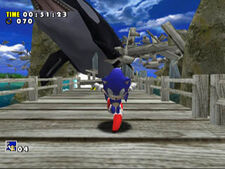
Sonic being chased by a giant orca in Emerald Coast, as seen in Sonic Adventure.
Although Sonic the Fighters and Sonic R were the first 3D graphic Sonic games, the true leap into 3D platforming was made with Sonic Adventure, a launch title for the Sega Dreamcast (Sega's last console), which resulted critical acclaim. On June 23 2001, the 10th anniversary of the US release of Sonic the Hedgehog, Sonic Adventure 2 was launched for the Dreamcast as the last Sonic game to release for the console. Both of the Adventure titles were later ported to the Nintendo GameCube (under the titles of Sonic Adventure DX: Director's Cut and Sonic Adventure 2 Battle) when Sega ultimately dropped out of the hardware market. Sonic Adventure DX was also released on Microsoft Windows in 2003.
The first Sonic game to release simultaneously on multiple consoles, Sonic Heroes, was released on the Nintendo GameCube, PlayStation 2, and Xbox in December 2003 in Japan, with American and European releases in 2004 and a PC version during the following November. The platforming was largely similar to that of the Adventure titles, although the player now controlled the lead character in a team of three characters, with the other two following closely behind. The player could switch to a new leader at any time to make use of each character's unique skills. While it was a commercial success, opinions among both reviewers and fans of the Sonic series were mostly mixed.
Shadow the Hedgehog was released in the United States in November 2005. It was commercially successful, but as with Sonic Heroes, received mixed reviews from critics. Example sites such as IGN and GameSpot panned the game. Nintendo Power and GameTrailers, however, both rated it above 8 out of 10, praising the replay value. Controversies revolving around this game included the gun play and the over-use of minor profanity and the fact that Sega had decided to switch the characters' voices to the 4Kids Entertainment voice actors from the English version of Sonic X.
A highly faithful two-part port of Sonic the Hedgehog made for mobile phones has been a huge hit in Europe, introducing the game to a new generation of pre-teen gamers, with respected handheld specialist Pocket Gamer awarding Sonic the Hedgehog Part Two a 9 out of 10 review score.[23]
Other gameplay styles[]
The Sonic series has also seen instalments in another genres and gameplay styles aside the standard platforming it is known for. The first of these was the already mentioned Sonic Spinball and its 8-bit counterpart, soon followed by Dr. Robotnik's Mean Bean Machine and its 8-bit counterpart, in 1993.
Several racing games starring Sonic characters have been developed. In Sonic Drift and its sequel Sonic Drift 2, characters drive go-karts around a flat course, reminiscent of Super Mario Kart. In Sonic R (1998), most characters ran on foot (though Eggman rides in his Egg Mobile and Amy drives her car), while in the Sonic Riders series (2006), they race on hoverboards known as "Extreme Gear." With games such as Sonic & Sega All-Stars Racing, Sonic characters returned to racing in vehicles, alongside other Sega characters.
Sonic Shuffle was a virtual board game/party game for the Sega Dreamcast. Edutainment video games starring Sonic and Tails have also been released, such as Sonic the Hedgehog's Gameworld and Tails and the Music Maker for the Sega Pico, and the PC title Sonic's Schoolhouse.
A fighting game, named Sonic the Fighters, was released in 1996 for arcade systems, and later a hybrid, called Sonic Battle, was released in 2003 in Japan and 2004 elsewhere for the Game Boy Advance.
In 2005, Shadow the Hedgehog introduced nonlinear gameplay to the series while partly being a third-person-shooter, which was also incorporated in 2001's Sonic Adventure 2. The player's decisions while playing the game would affect the story's course.
In 2008, Sonic Unleashed was released, which brought on a new to the series style of brawling-based combat mixed with platforming in the form of Night stages, played as Sonic the Werehog. Six months later, Sonic Chronicles: The Dark Brotherhood brought Sonic into the genre of role-playing games for the first time, mixing turn-based strategic combat and storytelling with the traditional Sonic elements.
Sonic Frontiers ushered in open world gameplay in 2022, blending platforming elements into a series of "Open Zone" environments, offering players the freedom to traverse varied landscapes. Additionally, Sonic Frontiers featured an expanded combat system to enhance the overall gaming experience.
Characters[]
Since Sonic's first appearance in the original Sonic the Hedgehog video game on 23 June 1991 (despite an earlier cameo in the arcade game Rad Mobile), many more characters have appeared and many of them have been added to the main cast. Aside from Sonic and Eggman, these characters have garnered steady fanbases of their own since their inclusion into the franchise, whether during their time in the main series games or their participation in other narratives throughout the Sonic medias. They have received criticism for allegedly taking the gameplay focus off of Sonic in the past but regardless remain having potential in starring their own character-driven gameplay styles similar to the Mario franchise.
The following is a list of active characters in the present day narrative:
| Image | First appearance | Description |
|---|---|---|
 Sonic the Hedgehog |
Sonic the Hedgehog (16-bit) June 1991 |
Sonic is the fastest thing alive and the eponymous protagonist of the series. He possesses incredible super speed and numerous other abilities that are known to be based on breakdancing. He uses these skills to save the world from Dr. Eggman. He is impatient, laid-back, confident, cool-headed, and always on the lookout for an adventure as well as to help anyone in need of rescuing. |
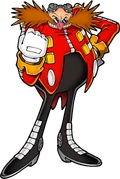 Dr. Eggman |
Sonic the Hedgehog (16-bit) June 1991 |
Real name Dr. Ivo Robotnik, Eggman is Sonic's arch nemesis and the series' main villain. He is extremely intelligent, pompous, bad-tempered, egg-shaped, and has a giant red-brown mustache. Eggman is an expert in robotics with an IQ of 300 whose goal is to conquer the world and build the Eggman Empire. However, Sonic and his friends always stand in his way. In many cases, he is ironically outdone by his own plans. |
 Miles "Tails" Prower |
Sonic the Hedgehog 2 (8-bit) October 1992 |
Sonic's best friend. He is a young two-tailed fox who can fly for a limited time by spinning his tails rapidly, and has most of Sonic's abilities, including his supersonic speed. He is a skilled mechanic and often takes care of Sonic's biplane, the Tornado. |
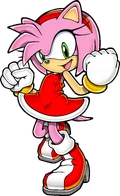 Amy Rose |
Sonic the Hedgehog CD September 1993 |
A young pink hedgehog who has become Sonic's self-appointed girlfriend, first seen in Sonic the Hedgehog CD. Ever since Sonic and Amy met, she has been in love with Sonic and she now wants him to marry her. Amy is quite strong and smashes enemy forces down with her trusty Piko Piko Hammer. |
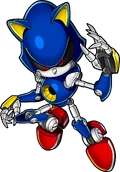 Metal Sonic |
Sonic the Hedgehog CD September 1993 |
The robotic counterpart of Sonic the Hedgehog, created by Dr. Robotnik who possesses many of Sonic's abilities including his super speed. He seems to believe that he is in fact the real Sonic and that Sonic is his copy. In Sonic Heroes he betrayed his creator, and took the task of trying to achieve world domination into his own claws. |
 Knuckles the Echidna |
Sonic the Hedgehog 3 February 1994 |
The last living echidna and Sonic's hotheaded friend and rival. Knuckles resides on Angel Island, where he guards the Master Emerald, the source of the island's ability to float in the sky. Knuckles is very strong; his spiked fists are capable of smashing through boulders as well as allowing him to climb walls. The nature of his echidna dreadlocks allows him to glide in the air for periods of time. |
 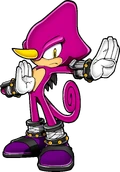  Team Chaotix |
Knuckles' Chaotix April 1995 |
A team of misfits who have started their own detective agency. The Chaotix consists of Vector the Crocodile, Espio the Chameleon and Charmy Bee, with Vector being their leader. They met for the first time when they fought against Dr. Robotnik in Knuckles' Chaotix, along with Mighty the Armadillo and Knuckles The Echidna, both of which haven't appeared with them since. |
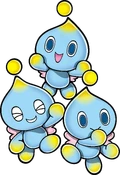 Chao |
Sonic Adventure December 1998 |
Chao are a brittle, fleeting and very lovable life form with no defined evolutionary direction. They primarily inhabit clear watersides. By interacting with other living things, they can incorporate their natures and change themselves to adapt to the environment and survive. They are known for their very loving behavior. |
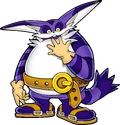 Big the Cat |
Sonic Adventure December 1998 |
A big purple tabby cat who loves fishing. His best friend is a frog named Froggy, whom he constantly keeps losing. Big lives with his buddy in a peaceful hut in the Mystic Ruins. |
 Shadow the Hedgehog |
Sonic Adventure 2 June 2001 |
Shadow is a mysterious black hedgehog resembling Sonic in appearance and skills, making him Sonic's biggest arch-rival. He is the Ultimate Life Form created by Gerald Robotnik with Black Doom's DNA on the Space Colony ARK over five decades ago. He recently suffered from amnesia but has regained all of his memories since then. He can use Chaos Control to distort time and space. |
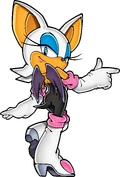 Rouge the Bat |
Sonic Adventure 2 June 2001 |
Rouge is a sassy female bat treasure hunter who's goal is to make all the gems in the world hers and also works as a spy for GUN. She is full of feminine charm and can be very manipulative. She is Knuckles' rival. |
 Cream the Rabbit & Cheese |
Sonic Advance 2 December 2002 |
A naive young rabbit who lives with her mother, Vanilla. Cream's best friend is a Chao called Cheese (which she uses as missile). Because Cream has been brought up like a princess, she does not like being involved in other peoples' affairs. She can fly using her large ears. |
 E-123 Omega |
Sonic Heroes December 2003 |
The last of the E-100 series of robots created by Eggman and seeks revenge on his master for shutting him down, not being able to realize his potential. Rouge accidentally activated him when trying to free Shadow from Eggman's base. Since then, he has became good friends with both of them. |
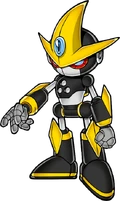 Gemerl |
Sonic Advance 3 June 2004 |
He is a robot created by Dr. Eggman from Emerl's data, making him an upgraded version of his predecessor. Gemerl once aided the doctor in his attempts to stop Sonic and his friends from foiling one of his plans but wound up betraying his creator to cause mayhem. After his defeat, he was reprogrammed in the image of his predecessor. |
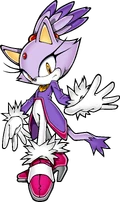 Blaze the Cat |
Sonic Rush November 2005 |
A female, pyrokinetic lavender cat from a parallel universe. As guardian of the Sol Emeralds, it is her duty to prevent anyone from taking them away from her. She is somewhat shy and tends to conceal her real feelings. |
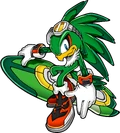 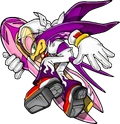 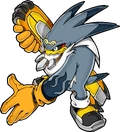 Babylon Rogues |
Sonic Riders February 2006 |
A group of professional Extreme Gear riders that searches for treasure for their benefits. The leader is Jet the Hawk who is the most talented of Extreme Gear riding, being known as the Legendary Wind Master and shares a rivalry with Sonic in speed. Wave the Swallow, a brilliant and intelligent mechanic, and Storm the Albatross, physically strong in arms but somewhat clumsy, follow Jet's leadership. |
 Silver the Hedgehog |
Sonic the Hedgehog (2006) November 2006 |
Silver is a mysterious, white-colored hedgehog from the future. He traveled through time to stop Sonic, who he believed to be the Iblis Trigger causing his time to be ruined. Unlike Sonic, Silver utilizes psychokinesis that allows him to lift objects with his mind and throw them at foes. |
 Orbot & Cubot |
Sonic Colors November 2010 |
Dr. Eggman's personal aide robots, with their names based on the shapes they take: Orbot being the red, spherical one and Cubot being the yellow, compact one. Together, they are a duo who compliment off each other: Orbot is the brains and much more serious and firmer of the two, while Cubot is energetic and easy-going, at the cost of being scatterbrained. Though Orbot is more efficient and diligent to his master's orders, his spiteful sarcasm irritates the doctor easily. Cubot, on the other hand, is incompetent, but his earnestness and good-hearted nature makes him the less sardonic one of the duo. |
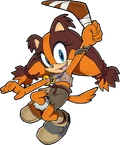 Sticks the Badger |
Sonic Boom: Rise of Lyric/Sonic Boom: Shattered Crystal November 2014 |
A crazy and paranoid badger girl from the Sonic Boom franchise who has appeared in a couple of Sonic the Hedgehog mainstream medias. She lives at the edge of the forest. Because she has lived in the wild since early age, Sticks is feral and without common sense. However, she is a skilled hunter and an expert at using boomerangs. She is also a good friend of Amy. |
 Sage |
Sonic Frontiers November 2022 |
A mysterious girl who appears before Sonic as he travels the Starfall Islands. She warns Sonic to leave immediately, but what could be her true intent...? |
Common features[]
These are elements present in most Sonic video games since the series' creation.
Rings[]
Giant Rings[]
A variety of the normal Rings, the Giant Rings are hidden in the games' stages and designed to be jumped through, which would transport the character to a Special Stage, where the character could collect one of the Chaos Emeralds or, in certain circumstances, Super Emeralds. They were used for this purpose in Sonic the Hedgehog, Sonic the Hedgehog CD and Sonic the Hedgehog 3 & Knuckles. Sonic the Hedgehog 2 used the Star Posts instead. In Sonic 3 & Knuckles, if all the Emeralds had already been found, these Rings would be collected as a normal one, granting 50 normal Rings each, allowing the characters to immediately tap into the power of the Chaos Emeralds (usually becoming Super, or Hyper in Sonic 3 & Knuckles if the player has collected all the Super Emeralds as well). Since Sonic Adventure 2, they have taken the place of the old Goal Plate as the end level marker and touching it would end the stage.
Shuttle loops[]
Shuttle loops are circular loop-de-loops of unknown origin that the player runs through as part of the main path during a stage. While the player will often be required to input quick acceleration to get through them in the 2D games, this is often not the case in 3D installments, as the character will usually be launched into them with a set speed once they get near the structure, generally not allowing to backtrack the level.

The seven Chaos Emeralds, from Sonic Forces: Speed Battle.
Chaos Emeralds[]
The Chaos Emeralds are seven emeralds with mystical powers which are a recurring feature in Sonic games. They are important in most of the games' plots, and the player is often required to collect them all to fully defeat Dr. Eggman, and achieve the games' "good endings", Super forms, or both. The method used to acquire the Emeralds varies from game to game in the series. Most early games require the player to find them in Special Stages. In some games, such as Sonic R and the 8-bit versions of Sonic the Hedgehog and Sonic the Hedgehog 2, they can be found in hidden locations within the main levels. In later installment games, the Chaos Emeralds are usually obtained by the characters throughout the games' story modes and do not need to be "found" by the player themselves.
A counterpart to the Chaos Emeralds, known as the Sol Emeralds, appear in the Sonic Rush games.
In Sonic 3 & Knuckles, it is possible for the seven Chaos Emeralds to be enhanced and possess even greater power, which they will become the Super Emeralds.
Master Emerald[]
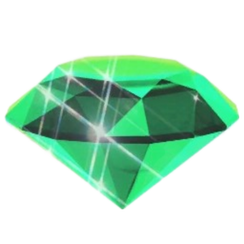
The Master Emerald, from Sonic Runners.

Dr. Robotnik steals the Master Emerald to power his Death Egg, from Sonic 3 & Knuckles.
The Master Emerald resides in a shrine on Angel Island and is guarded by Knuckles the Echidna; it contains an infinite amount of power, much greater than the seven Chaos Emeralds themselves, and is used to keep the Angel Island afloat in the sky. This giant, powerful green Emerald also has the power to fully control everything that the Chaos Emeralds do, including the ability to negate the energy of the Chaos Emeralds, as seen in Sonic Adventure and Sonic Adventure 2, or empower them, as seen in Sonic 3 & Knuckles. The Master Emerald can also be used to power mechanical devices, and has been coveted by Dr. Robotnik since his discovery of it. The doctor once used the Master Emerald to power the Death Egg after stealing it from Knuckles in Sonic 3 & Knuckles. During Knuckles' final boss fight in said title, Mecha Sonic Mark II powers up using the Master Emerald into a short-lived Super State. In earlier media, the Master Emerald was sometimes called an "eighth Chaos Emerald", but this association has been lessened in later games, making it a separate but related entity.
While it was featured prominently in earlier games, more recent entries have diminished the number of appearances of the Master Emerald.
Special Stages[]
Usually, a Chaos Emerald may be earned in a Special Stage or Special Zone. Special Stages usually take place in surreal environments and features alternate gameplay mechanics to the standard platforming of the main levels: the 16-bit Sonic the Hedgehog consisted of a giant rotating maze (which many considered a major technical achievement);[24] Sonic the Hedgehog 2, Sonic 3D Blast, Sonic Heroes and Sonic Rush featured "in your face" segments with the hedgehog running along a long tunnel, with a variant of this used for Knuckles' Chaotix, Sonic Advance, and Sonic Advance 3; 3D "collect items" levels, as in Sonic the Hedgehog 3 & Knuckles, which used the same perspective but had Sonic collecting all the blue-colored orbs on the surface of a giant sphere and a different version, the 3D ring-collecting Special Stage, used in Sonic Advance 2. Sonic Chaos (Sonic & Tails in Japan) utilized a variety of gimmicks for its levels.
Some games include Special Stages, but not as a means of collecting Chaos Emeralds. As the Emeralds of the 8-bit version of Sonic the Hedgehog were hidden in the main stages, the game's spring-filled Special Stages were used to obtain 1-Ups and Continues. Similarly, Sonic the Hedgehog 3 & Knuckles, in addition to their main Special Stages, featured entirely optional Bonus Stages, one of which combined the rotating maze of the 16-bit Sonic the Hedgehog with the pinball gambling of Sonic the Hedgehog 2, and Sonic Heroes had an alternate Special Stage for earning lots of extra lives, very much like the one in which Chaos Emeralds are collected, but with the objective being to get to the Goal Ring before time ran out, rather than catching up to the Chaos Emerald at the end of the tunnel.
Just as the design of the Special Stages has changed, so has the means of accessing them. In Sonic 3 & Knuckles, Giant Rings were hidden in levels to take the player to the Stages, but most other titles involve the collection of a certain number of rings, usually fifty. In both the 8 and 16-bit versions of Sonic the Hedgehog, they were reached by finishing a level with more than fifty Rings; the player would then have to jump inside the giant ring that would appear just after the goal post. In the 16-bit Sonic the Hedgehog 2, reaching a Star Post when they held this number would create a warp of stars which would take a player to the Special Stage when jumped through. Sonic 3D Blast required the player to deliver rings to Knuckles and Tails, who could be found within each level. Sonic Chaos changed the figure, with access to a Special Stage being the reward for collecting a hundred Rings, although only when playing as Sonic.
Super transformation[]
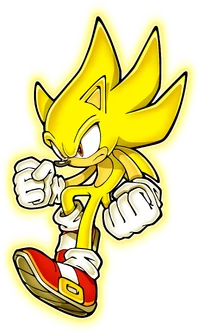
Since the 16-bit version of Sonic the Hedgehog 2, Sonic has had the ability to transform into the faster and practically invulnerable Super Sonic once all seven Chaos Emeralds are collected. After that, Super Sonic can be used in any of the following levels once fifty rings have been collected, although one ring is lost for every second Sonic remains in this empowered form.
In the Sonic Adventure titles, the Special Stages were omitted entirely and Chaos Emeralds were collected in non-interactive cutscenes as part of the story, with Super Sonic only appearing in the climactic final boss fight. This received criticism by many fans, who appreciated the additional replay value offered by retrying a game's Zone levels with Super Sonic's additional advantageous abilities as seen in the Sega Genesis/Mega Drive games. Despite several games since returning to the emerald-collecting of the 2D platform titles (including the Sonic Advance series, Sonic Heroes, and Sonic Rush), Super Sonic was again only playable at the end of the game.
However, Sonic Colors and Sonic Lost World returned the ability to access a super transformation in normal levels. They were also some of the few recent games to omit a Super transformation from the final boss battle.
Other characters have also been able to utilize the super transformation. In Sonic & Knuckles, Knuckles the Echidna could also transform into Super Knuckles. By locking-on Sonic & Knuckles to Sonic the Hedgehog 3, Hyper Sonic, Hyper Tails and Hyper Knuckles also become available, by collecting all seven Super Emeralds in addition to the seven Chaos Emeralds. In the collection game Sonic Origins, Sonic 3 & Knuckles is only available in the locked-on form. This collection added Super Tails to the game, which is the super transformation of Tails as seen in Sonic Heroes. In Sonic Adventure 2, Super Shadow also appeared at the end of the Last Story, who fought alongside Super Sonic to destroy the Biolizard, and he himself fought Black Doom in Shadow the Hedgehog. In Sonic Rush and Sonic Rush Adventure, Burning Blaze appears for the extra boss, similar to the end of Sonic Adventure 2. She uses the term "Burning" instead of "Super" as she uses the Sol Emeralds instead of the Chaos Emeralds. In Sonic the Hedgehog (2006), Super Silver appears along with Super Sonic and Super Shadow.
A feature unique to Sonic is his ability to use super transformations using different sources of power other than the Chaos Emeralds, each with its own unique abilities. For Sonic and the Secret Rings, Sonic used the World Rings to become Darkspine Sonic. In Sonic Unleashed, Sonic had the ability to turn into Sonic the Werehog from the power of Dark Gaia. In Sonic and the Black Knight, Sonic transforms into Excalibur Sonic using the power of the sacred swords. Unlike the traditional Super States, however, Sonic is not invincible in those forms. In Sonic Prime, Sonic harness the Prism Energy from the Paradox Prism to transform into Shatter Sonic. In Sonic Frontiers, Sonic learns to control his Cyber corruption and use it to transform into an evolved Super form named Starfall Super Sonic. He later goes all out and completely harness the Cyber corruption briefly becoming Super Sonic Cyber.
Cultural Links[]
Themes[]
- Human impact on the environment - Central and core theme of the entire series as well as a major reoccurring point in numerous entries such as Sonic the Hedgehog, Sonic CD, Sonic Colors, and Sonic Lost World as well as taking a minor role in Sonic Prime. This is typically depicted with Doctor Eggman's desecration of nature in an attempt to industrialize the physical material of the world, or worlds as of Sonic Colors, and the immaterial of time itself as of Sonic CD and Sonic the Hedgehog (2006). All in an effort to work towards a reality littered with machinery in his image.
- Inspiration - The character journey of Miles "Tails" Prower in Sonic the Hedgehog 2.
- Deception - Focus of Knuckles the Echidna's character arc in Sonic 3 & Knuckles.
- Rage - The focus of Chaos's character in Sonic Adventure. Consumed by rage for loss of a loved one, he needed to be calmed down and brought to peace.
- Conspiracy - Focus of Guardian Units of Nations in Sonic Adventure 2.
- Grief - Main character journey for Shadow the Hedgehog in Sonic Adventure 2.
- Identity Crisis - Focal point of Neo Metal Sonic's character in Sonic Heroes and a minor character focus for Shadow the Hedgehog in his titular entry.
- Teamwork - The main theme of Sonic Heroes, heavily depicted in both gameplay and story as with the team mechanic and the various teams making up the game.
- Friendship - The central theme of Sonic Rush and focus of Blaze the Cat's character journey as she learns to open up and rely on her friends more.
- Moving on from the past - The focus of Shadow's character journey in Shadow the Hedgehog as he learns to let go of his past lifetime and move on as a brand new person.
- Proactivity - The main character journey for Princess Elise the Third in Sonic the Hedgehog (2006), as she learns to take action on her problems rather than wasting her time worrying about them.
- War - The main theme and central point of both Sonic Battle and Sonic Forces. Notably, Sonic is typically depicted as the one to find the bright side of issues and the good in bad situations, but in Sonic Battle this point doesn't come on, as a way of conveying that there is nothing good about war.
- Maturity - The focus of Marine's character journey and central thematic conflict in Sonic Rush Adventure. In which, Marine learns that she is too immature to go on dangerous adventures with Sonic, and that she has some growing up to do before becoming a pirate captain.
- Abusive power and control (psychological and domestic) - The character conflict and center of the relationship between Erazor Djinn and Shara in Sonic and the Secret Rings, largely centering around Shara coming to terms that she needs to move on from the painful period of time.
- Light and Darkness (Good and Evil) - The main force and driving central theme behind Sonic Unleashed. Represented with Light Gaia, Dark Gaia, Doctor Eggman, and Sonic the Hedgehog, ensuing a cycle of how light and dark are both needed in order for positive change to take effect.
- Death Anxiety - Merlina's character journey throughout Sonic and the Black Knight, Merlina attempts to create a world that never ends but Sonic refutes such a concept, finding that the cycle of death is what prompts others to live their lives to the fullest.
- Chivalry - A central thematic conflict in Sonic and the Black Knight.
- Language barrier - A minor and subtle theme of Sonic Colors, largely part of Yacker's character.
- Family of choice - Focus of Sage's character journey throughout Sonic Frontiers as she starts to understand the concept of familial love and what it means to be apart of a loving family.
- Bullying - The focus of Trip's character arc in Sonic Superstars as she learns to overcome and stand up to the bullying that Fang the Hunter instills into her, this is represented by the helmet she used to wear as she symbolically learns to open up.
- Embracing the past - The main theme and drive for Shadow's character arc in Shadow Generations. It is also speculated to be the anthesis to his titular title.
Mythology[]
Theology[]
- Black Arms - Like much symbolism with enemies related to Shadow the Hedgehog. The race takes heavy biblical inspirations, largely when it comes to Satanic imagery.
- This is further emphasized with the naming schemes of multiple Black Arms aliens such as Devil Doom.
- Furthermore, the Black Arms don't follow traditional Sonic the Hedgehog design philosophy to convey the feeling of them being Extraterrestrial lifeforms.
Music[]
The music of the Sonic series is considered one of the aspects that make the series popular. Sonic games have featured tunes composed by a variety of people; Masato Nakamura of J-pop band Dreams Come True was responsible for the music of the first two 16-bit games. Ys/Streets of Rage composer Yuzo Koshiro composed the music for the first 8-bit title, barring what was taken from the 16-bit title. Sega's in-house music company, Wave Master, has done the majority of the remaining music in series. One Wave Master employee, Jun Senoue, is part of the band Crush 40 has played the main theme songs of the two Sonic Adventure games, Sonic Heroes, and Shadow the Hedgehog. Richard Jacques, a frequent composer of music for Sega games, contributed to the soundtracks of Sonic R and the Saturn/PC version of Sonic 3D Blast, the Sonic Boom series games and has continued to contribute to the soundtracks of racing games. Tomoya Ohtani has been the sound director for most of the main series games since Sonic the Hedgehog (2006).
Notable games[]
This is a list of the most notable Sonic games since the series' debut in 1991. While all mainline games are included, a few important spin-offs are featured as well. Note that games from the Mario and Sonic at the Olympic Games series are not included.
Spin-offs[]
The success of the Sonic video game franchise has led to a large number of spin-offs and adaptations in other media, such as TV shows, films, and comic series, starring Sonic. Each spin-off incorporates aspects from the games to varying degrees. With few exceptions, each production takes place in their own fictional universe, independent of the video games.
Animations[]
Sonic the Hedgehog (DiC franchise)[]
Three of the Western animated TV series based on Sonic are all produced by DiC Productions (now called WildBrain) with a collaboration with Sega of America, from 1993 to 1999.
Adventures of Sonic the Hedgehog (or AoStH for short) is an American animated television series that was first broadcast in September 1993 and has been running in cartoon syndication ever since. It follows the escapades of Sonic and Tails as they stop the evil Doctor Ivo Robotnik and his array of vicious robots from taking over the planet Mobius). The plots very loosely followed the storyline of the video games series; at the time the Sonic games were still quite new and lacking much plot or character development, which was in turn filled in by the show's writers.
The animated television series, simply called Sonic the Hedgehog, originally aired from September 1993 to June 1995. While Adventures of Sonic the Hedgehog is known for its bright colors and whimsical humor, Sonic the Hedgehog featured darker stories which constituted a departure from the tone of the Sonic games of the time. To distinguish between the two series, fans typically refer to this series as Sonic SatAM because it was a Saturday morning cartoon while Adventures of Sonic the Hedgehog aired on weekdays in syndication and using the show's full title would cause confusion in many situations because the show's title is the same as the character's name.
DiC's final Sonic cartoon, Sonic Underground ran for only one season, 1998 to 1999; it bears little relation to other entries featuring Sonic (including previous games, comics and the other animated series) and shares few established characters. 65 episodes were originally produced and of those, only forty were released. Unlike its predecessor, Sonic SatAM, the heroes do not remain in a sanctuary-like refuge but instead travel around Mobius to battle Robotnik forces on a global scale. The Mobian civilization featured in the series includes multiple cities, a poor underclass and an aristocracy for the heroes to interact with. Sonic Underground is the only animated series based on Sonic where Tails has not made an appearance.
Other versions[]
Other Sonic the Hedgehog animation adaptations which are made by other studios.
Sonic the Hedgehog: The Movie is a two-episode OVA film series based upon the game Sonic the Hedgehog CD and the video game series as a whole. It was made in Japan in 1996 and released as a dub in North America in 1999. Unlike the games, the film takes place on a world named Planet Freedom that, as with many anime series, appears to be a crossbreed of a fairytale land and Earth. At the time of its creation, the anime did not differ as far from official canon as it does today; at this point, it could be considered to take place in an a different continuity than the games, just like other versions of Sonic from other media.
The anime series Sonic X is the longest-running and most successful animated series based on Sonic to date. Originally planned as a 52 episode series that would be inspired by the story lines of the Sonic Adventure series, Sonic X has now expanded to 78 episodes with the latest 26 episodes set primarily in outer space (which those episodes were not broadcasted in Japan). Sonic X is also the only animated series to include Super Sonic. The main difference that sets this series from the other continuities is that Sonic and his friends originally came from an unnamed planet that is in parallel dimensions with Earth.
The CGI animated television series, titled Sonic Boom, features a comedic take on Sonic and his friends and their never-ending battles with Dr. Eggman as the main media of the Sonic Boom sub-franchise. More than one hundred episodes with a duration of eleven minutes each have aired.
The latest show in the franchise called Sonic Prime was released for Netflix. The show is described as a "high octane adventure" and a "journey of self-discovery and redemption" following Sonic and his race to save a "strange new multiverse." A fierce battle between Sonic the Hedgehog and Dr. Eggman results in a universe-shattering event which prompts Sonic to set off on a quest to restore the Shatterverse and save his friends, whom up until the moment he had taken for granted. Along the way, Sonic discovers both new worlds and new allies. The first season has eight episodes, while season two has the same amount of episodes that season one has, bringing the total of episodes to sixteen in the show. The third and final season was released in the beginning of 2024.[25]
Sonic the Hedgehog (film series)[]
The Sonic the Hedgehog film series is currently being produced by Paramount Pictures. The first film, Sonic the Hedgehog, is a action-adventure, CGI/live action hybrid released in early 2020. In the film, Sonic is on Earth in a town called Green Hills, but hides to keep his power from falling in the wrong hands. After Dr. Robotnik discovers him, Sonic befriends a cop named Tom Wachowski and they go on a road trip to get Sonic's Rings back and stop Robotnik. It proved successful enough to grant sequels. A second entry, Sonic the Hedgehog 2, was theatrically released in early 2022. In this film, Sonic finds himself on a quest with his new friend Miles "Tails" Prower to find the Master Emerald before Robotnik and his new ally, Knuckles the Echidna. A third entry, Sonic the Hedgehog 3, will be released in late 2024 and feature Shadow the Hedgehog.
Comics[]
Sonic the Hedgehog (Archie)[]
Sonic the Hedgehog was a comic series published by Archie Comics. All of Archie's Sonic-related series, miniseries and specials take place in the same fictional universe. This universe features a mixture of characters, settings and situations from the video games, the SatAM cartoon, the various other incarnations of Sonic, and many elements unique to the comic universe. The current status quo of the comic deals with a full-scale war between the Eggman Empire, ruled by Dr. Eggman, and the Freedom Fighters. However, it also features a variety of other villains and heroic characters whom Sonic Sonic and the other Sega characters interact with. The comics were cancelled in 2017.
Sonic X was a comic book series that is based on the anime series of the same name published by Archie Comics. It began in September 2005 and was originally meant to be a four-part series; due to the positive reaction to the series' announcement, it was extended to ongoing status before the first issue premiered. The comic is unique in that it is not directly based on the games; the comic is based on the television show and takes place in its expanded fictional universe. The comic borrows elements from the series first two seasons of the show, including Eggman's fortress, (which was destroyed in the first season of the series) and characters from the storyline of Sonic Adventure.
Sonic Universe was a spin-off comic book series published by Archie Comics to the main Sonic the Hedgehog comic series. It mainly featured characters that are less prominent in the main series but the two comic series frequently tied-in with each other.
Sonic Boom was an on-going comic book series for the Sonic Boom sub-franchise published by Archie Comics, taking the main comedic traits of the characters that the series had shown back then.
Sonic the Hedgehog (IDW)[]
The Sonic the Hedgehog comic series began their publishing by IDW Publishing on 4 April 2018. The announcement for the new comic series was made shortly after the termination of the Archie Comics partnership.
Non-Archie/IDW Sonic the Hedgehog comics[]
The Sonic the Hedgehog manga series, published in Shogakukan's Shogaku Yonensei (literally "fourth-year student") was written by Kenji Terada and illustrated by Sango Norimoto. The manga, which started in 1992, was about a hedgehog boy named Nicky who can turn into Sonic the Hedgehog. Sonic fights Dr. Eggman, with Miles "Tails" Prower tagging along to help him.
Sonic the Comic, known to its many readers as STC, was a UK children's comic published by Fleetway Editions between 1993 and 2002. Although it was the UK's official Sega comic, Sonic the Comic established its identity and ongoing storyline and setting when Sonic the Hedgehog, Miles "Tails" Prower and their friends were sent forward in time six months. During their absence, Dr. Robotnik successfully conquered the entire planet of Mobius , and Sonic's group were forced underground, operating as "Freedom Fighters" attempting to bring down Robotnik's rule of the planet. Due to an aggressive series of budget cuts on the part of Fleetway, the series went into full reprint by issue #184; the final story ended with a number of loose ends left untied. An online fan based comic, called Sonic the Comic-Online, has been set up to continue the comic story starting from where the original Sonic the Comic story left off and beginning with issue #224, due to STC being reprints from issues #185 to #223. It has received positive feedback from both fans and writers of the original Sonic the Comic.
The Jet Black Hedgehog: Shadow the Hedgehog, published in CoroCoro Comic Monthly magazine, is being written and illustrated by mangaka Yuki Imada. The serialized manga started in 2024 as a way to tie-in, adapt, and promote the release of Shadow Generations. It retells Shadow the Hedgehog's time on the Space Colony ARK as well as adapt the events of Shadow Generations.
Reception and legacy[]
The Sonic the Hedgehog series became an instant success, both commercially and critically, throughout the videogame industry. During its first decade of existence, it hit a mega-sensation and became one of the most popular media franchises worldwide, rivalling and drawing comparisons to Nintendo's Mario, which had made a similar impact in the 1980s. Sega, capitalizing on this success, also made Sonic venture outside video games and into other media, such as television shows, comic book series, films, and toys. Sale estimates for the Sonic series range from 80 to 100+ million copies sold through the span of its history; this figure amounts to a total of 350 million when counting mobile downloads and purchases, reaching the list of best-selling video game series. In 2020, Sega Sammy revealed in their annual investors report that the franchise has sold over 1.14 billion cumulative units, including physical sales and downloads.
The series has gained international recognition for its music, covering a wide variety of genres including rock, pop, metal, ska, hip hop, ambient and orchestral. The online publication Tom's Guide wrote that "from Sonic 2, to Secret Rings, to Zero Gravity, to Mania Plus, Sonic's always brought an S-Rank performance to his games' musical stylings".[26] The music of Green Hill Zone has been described as one of the most memorable melodies in pop culture and one of the greatest of all time,[27] with GamesRadar+ noting that remixes of the track are continuously released on YouTube to this day.[28] The soundtrack of Star Light Zone was one of nineteen tracks from popular Japanese video game franchises to be used during the opening ceremony of the 2020 Summer Olympics in Tokyo, Japan.[29]
Through its history, the Sonic franchise has been nominated and won several awards as well. It won "Outstanding Contribution" by the Golden Joystick, the first ever to win that prize. The franchise also got onto the Walk of Game, and has had several graphic, gameplay, sound, and "game of the year" accolades per year. It was awarded seven records by the Guinness World Records in Guinness World Records: Gamer's Edition 2008. The records include "Best Selling Game on Sega Systems", "Longest Running Comic Based on a Video Game" and "Best Selling Retro Game Compilation" (for Sonic Mega Collection). In the Guinness World Records: Gamer's Edition 2010, the Sonic the Hedgehog series was listed number 15 out of the top 50 videogame franchises. In December 2006, IGN ranked Sonic the Hedgehog as the 19th greatest series of all time, claiming that "although recent 3D entries in the series have been somewhat lacking, there is no denying the power of this franchise".[30]
Besides this praise, the Sonic the Hedgehog series has attracted criticism, especially in recent years. A common complaint has been that the variant gameplay styles found in recent three-dimensional titles have strayed from the original formula of the series. Specifically, the series' jump to 3D has been noted as a declining point. A strong point of controversy also hits the Sonic fanbase, claimed to be particularly "annoying" by several people. In late 2010, Sega de-listed Sonic titles with "mixed" or "negative" scores in review aggregator Metacritic, such as the poorly received Sonic the Hedgehog (2006), in order to increase the value of the Sonic brand after positive reception for games such as Sonic the Hedgehog 4 and Sonic Colors. Some video game magazines and critics have also been very critical of the franchise.[citation needed]
Despite some of its more scathing contenders, the Sonic the Hedgehog series still maintains a global position in the gaming world, continuing to perform well commercially, and with a very supportive fanbase that has continued to run strong up to this day.[citation needed]
Anniversaries[]
| Anniversary | Logo |
|---|---|
| 10th | 
|
| 15th | 
|
| 20th | 
|
| 25th | 
|
| 30th | 
|
Trivia[]
- According to Kevin Eva, the former Sega Europe community manager, the canon and continuity of the Sonic the Hedgehog games are somewhat in flux all the time. As such, certain plot elements are only valid whenever Sega wants or needed them to be at the time, and can easily be changed later on.[31]
- According to Ian Flynn, for the games which have both a home console and handheld release, the former is the canonical version, with Sonic Colors being a special exception.[32]
- The prologue story presented at the beginning of the Japanese Sonic Jam guide has an event featuring Sonic saving a woman named Meg from a plane crash and a fire, which is stated to occur in the 1980s. If this story is taken as canon, then this would confirm that the Sonic the Hedgehog franchise, or at least its earliest installments, take place during that decade.
- Despite being a Japanese video game franchise, like many other Japanese game franchises notably do, most human characters presented in games, specifically the titular antagonist Dr. Eggman, are designed with caucasianized looks (though there is no official answer given as to what nationality any of them are meant to represent), indicating that the Sonic series is more targeted and to appeal western audiences.[33] Speaking of that, it's often claimed by fans that the Sonic the Hedgehog series isn't as popular in Japan as the West and with an addition of saying that the franchise is more American than Japanese due to the fact that many Sonic the Hedgehog media outside of games, such as the original cartoons, original comics, etc, are produced outside of Japan, mostly the United States and the United Kingdom which are the two regions that the franchise is also said to be the most popular in.[citation needed] Similar thing goes with Mario and Pac-Man.
Video[]
Notes[]
References[]
- ↑ Sega Sammy Holdings (13 October 2022). Integrated Reports 2022 (PDF). Sega Sammy Holdings. Retrieved on 14 January 2023.
- ↑ 2.0 2.1 2.2 Sonic the Hedgehog Technical Files
- ↑ "All Star Cast". Sonic Adventure Tokyo International Forum Unveiling Booklet. August 22, 1998. p. 6.
- ↑ Sora Ltd. (March 9, 2008). Super Smash Bros. Brawl. Wii. Nintendo. Area/level: Trophy Hoard. "Eggman - A self-proclaimed scientific genius. Dr. Eggman sports an IQ of 300 and wants to conquer the world and build his evil empire of Eggmanland. An expert in his field, Dr. Eggman places robotics over all else in life—a reflection of his selfish personality. He doesn't know when to quit and always comes back for more no matter how many times he is defeated by Sonic."
- ↑ Come Join the Eggman Empire!. YouTube. Sega (2 November 2017). Retrieved on 26 December 2021.
- ↑ Interview with Yuji Naka: Creator of Sonic the Hedgehog (English). Sega. Archived from the original on June 5, 1997. "Yuji Naka: Robotnik was created to be the opposite of Sonic, and to be the bad guy. At that time, there was opposition between "developers" and "environmentalists", and Robotnik was created to represent machinery and development."
- ↑ ZedArchive (April 10, 2022). Sonic Adventure Production Presentation At Tokyo International Forum (1998) [ENGLISH CC] (Japanese). YouTube. Retrieved on October 7, 2022.
- ↑ Sega (October 1, 2021). ソニック & シルバー 後編 (Japanese). かべがみカバーストーリー. Sonic Channel. Archived from the original on October 1, 2021.
- ↑ Sonic Team, Blindlight (November 24, 2006). Sonic the Hedgehog. Xbox 360. Sega. Area/Level: Shadow the Hedgehog. "Shadow: With a Chaos Emerald, I control time and space. You can't break free."
- ↑ Sonic the Hedgehog (Sega Mega Drive) Japanese instruction booklet, pgs. 4-5. "The Chaos Emeralds are a super substance that give energy to all living beings. Also, though science and technology, they can be used for nuclear and laser weapons."
- ↑ Cook & Becker (April 17, 2017). How Sega moved Sonic from 2D to 3D. Polygon. Retrieved on December 12, 2022.
- ↑ 12.0 12.1 12.2 Sonic the Hedgehog GameTap Retrospective. YouTube (5 August 2012). Retrieved on 14 May 2018.
- ↑ Sega Visions Interview with Yuji Naka (October 1992). Archived from the original on 28 September 2007. Retrieved on 28 June 2007.
- ↑
Yuji Naka on Twitter (Japanese). Twitter (24 January 2021). Archived from the original on 24 January 2021. "悔しいのでもう一度挑戦しましたがもっと判らなかった感じです。「セガの看板キャラクターであるソニック。世に出る前に彼に付けられていた名前を選べ」と言う問題が判りませんでした。作った人なのにね
セガい共通テスト受験終了!" - ↑ Sheffield, Brandon . Out of the Blue: Naoto Ohshima Speaks. Gamasutra. Retrieved on 13 December 2009.
- ↑ Yahoo! Playback . Yahoo Playback #94. Yahoo. Archived from the original on 15 December 2009. Retrieved on 13 December 2009.
- ↑ Ashcraft, Brian . Sonic's Shoes Inspired by Michael Jackson. Kotaku. Retrieved on 13 December 2009.
- ↑ Revealed: Why Sonic can't swim. VideoGamer.com (February 2009). Retrieved on 27 February 2009.
- ↑ Masato Nakamura interview (flash). Sonic Central. Sega. Archived from the original on 23 December 2008. Retrieved on 7 February 2006.
- ↑ Sega's Yuji Naka Talks!. Heidi Kemps. GameSpy (30 September 2005). Retrieved on 1 May 2015. "Yuji Naka: But the biggest thing I remember we had that we didn't use in Sonic 1 was the break-dancing. We had this idea for the sound test. The composer for the game was one of the members of Dreams Come True, a famous Japanese band, so we wanted to do something special for the game's music. See, we wanted to have a separate sound-test screen with an animation of Sonic break-dancing while a "Sonic Band" played the game music. We were working on the images, and had enough space left on the cartridge memory for it, but once again time constraints prevented us from putting it in the program. So what should we do with that leftover space? I suddenly had an epiphany! It said to me ... "SE-GA!" It came from our TV commercials, and that became the game's startup sound. I thought it made a good impression when you heard it, right? Though to fit it in, we had to delete all the break-dancing picture data we had made up to that point. Oshima was heartbroken, since we didn't need his pictures anymore. But seriously, that sound alone took up 1/8 of the 4 megabit ROM! Ah, those were the days..."
- ↑ "The People Making Sega's Future". Beep! Mega Drive: 46–48. January 1993. Archived from the original on 29 December 2021.. "Questionnaire: To go back to the discussion of Tails, there aren’t any women in Sonic games. What about including a heroine? / Yuji Naka: There's a woman in the original source material. We created a woman named Madonna, and the original plan was to have Sonic rescue her. However, that kind of silly direction didn't really fit Sonic. We wanted to go with something more orthodox. Of course, there certainly are a lot of games like that in the world, where the hero has to rescue the princess. We wanted to do something different from Mario, though, and aim for a new direction."
- ↑ 22.0 22.1 Sega Video Game Illustrations. Nippon Shuppan Hanbai (Deutschland) GmbH. 1994. ISBN 3-910052-50-9.
- ↑ Sonic The Hedgehog Part 2 review. Pocket Gamer. Retrieved on 23 September 2006.
- ↑ "The making of... Sonic The Hedgehog". Edge (101): 121. September 2001. "Yuji Naka: ...the Mega Drive allowed this stunning demonstration of rotation during the bonus stages. This was said to be impossible on the hardware at the time."
- ↑ Duncan Rouleau on Twitter. Twitter. Duncan Rouleau (14 July 2023). Retrieved on 13 August 2023.
- ↑ Carnevale, Robert (29 August 2018). The 16 Best Video Game Soundtracks. Tom's Guide. Retrieved on 7 October 2023.
- ↑ Anka, Carl (22 December 2015). The 10 Best Video Game Soundtracks Of All Time. Sabotage Times. Archived from the original on 29 July 2018. Retrieved on 7 October 2023.
- ↑ Towell, Justin (16 April 2008). Sonic's 2D classics re-reviewed: Page 4. GamesRadar+. Retrieved on 7 October 2023.
- ↑ McWhertor, Michael (July 23, 2021). Olympics 2021 Opening Ceremony: Tokyo Olympics video game music list. Polygon. Retrieved on 7 October 2023.
- ↑ The Top 25 Videogame Franchises. IGN (07 December 2006). Archived from the original on 07 December 2006. Retrieved on 03 October 2022.
- ↑ Eva, Kevin (17 August 2015). Sega's Secret Sonic Bible that we'll probably never see "TO MARS!". Sonic Stadium Message Board. Retrieved on 20 August 2015.
- ↑ BumbleKast LIVE! for September 26th, 2022 - Q&A Livestream with Ian Flynn (5:37). YouTube. BumbleKing Videos (26 September 2022). Retrieved on 27 September 2022.
- ↑ https://chao-island.com/forum/viewtopic.php?t=46484#:~:text=From%20his%20earliest%20conception%20Sonic,in%20Western%20countries%20than%20Japan.
External links[]
- Official website (English)
- Official website (Japanese)
- Official Facebook
- Official Twitter (English)
- Official Twitter (Japanese)
- Official YouTube (English)
- Official YouTube (Japanese)
- Official Instagram
- Sonic the Hedgehog at Wikipedia, the free encyclopedia
| 1990s | Sonic the Hedgehog (1991) · Sonic the Hedgehog 2 (1992) · Sonic the Hedgehog CD (1993) · Sonic 3 & Knuckles (1994) · Sonic Adventure (1998) | |
| 2000s | Sonic Adventure 2 (2001) · Sonic Heroes (2003) · Sonic the Hedgehog (2006) · Sonic Unleashed (2008) | |
| 2010s | Sonic the Hedgehog 4: Episode I (2010) · Sonic Colors (2010) · Sonic Generations (2011) · Sonic the Hedgehog 4: Episode II (2012) · Sonic Lost World (2013) · Sonic Mania (2017) · Sonic Forces (2017) | |
| 2020s | Sonic Frontiers (2022) · Sonic Superstars (2023) · Sonic X Shadow Generations (2024) | |
Warning: Display title "<i>Sonic the Hedgehog</i> series" overrides earlier display title "<i>Sonic the Hedgehog series</i>".










































